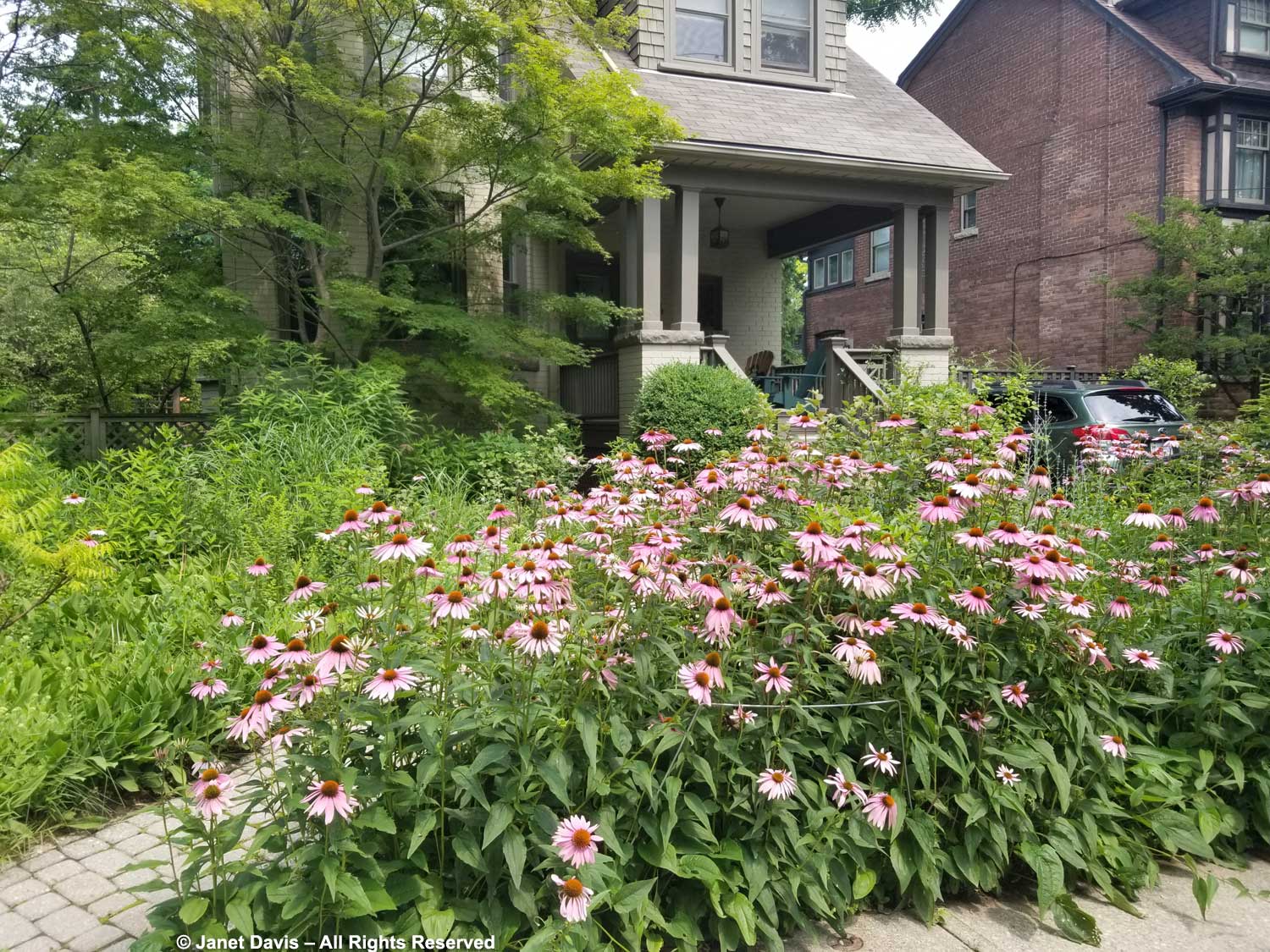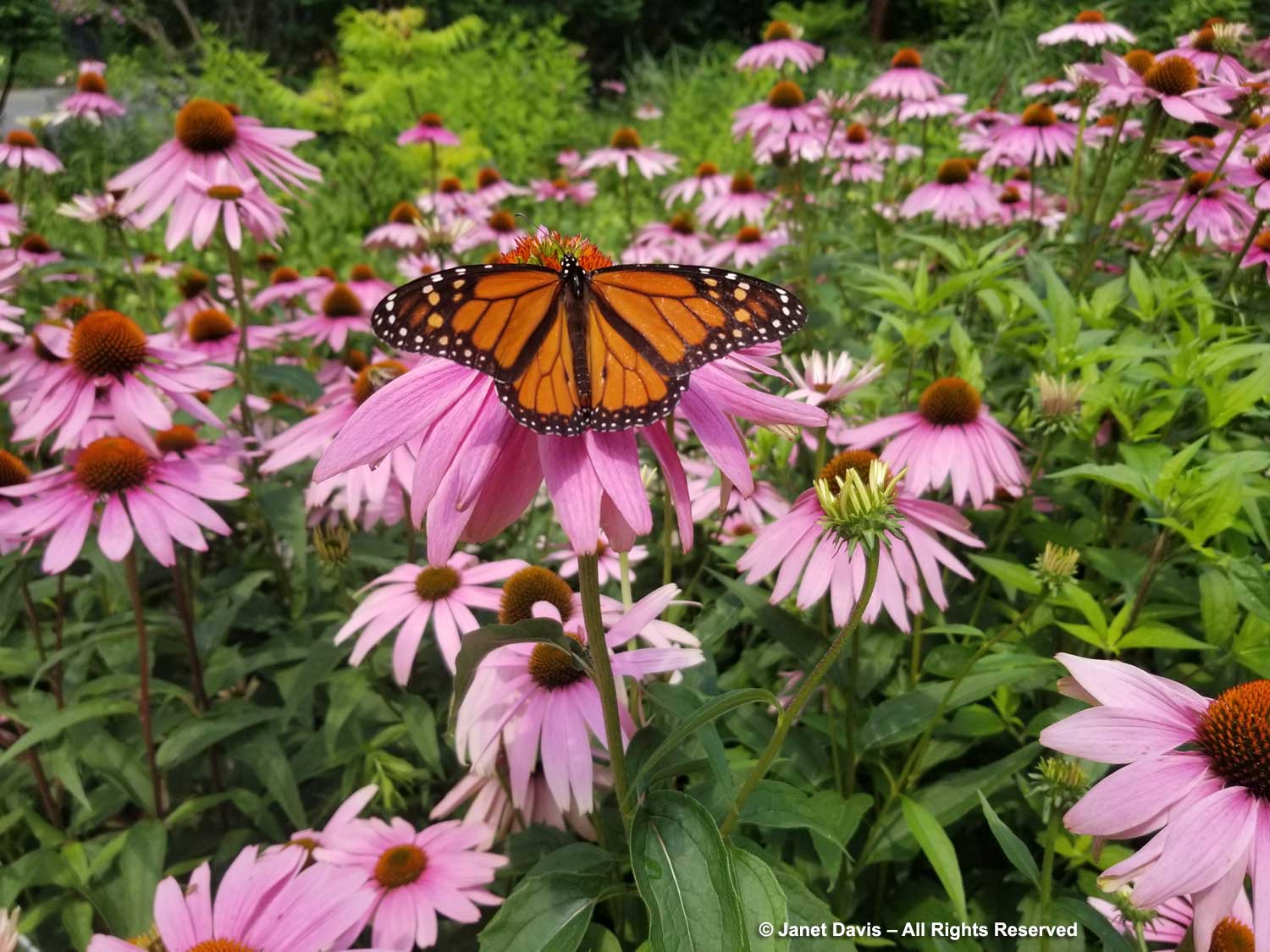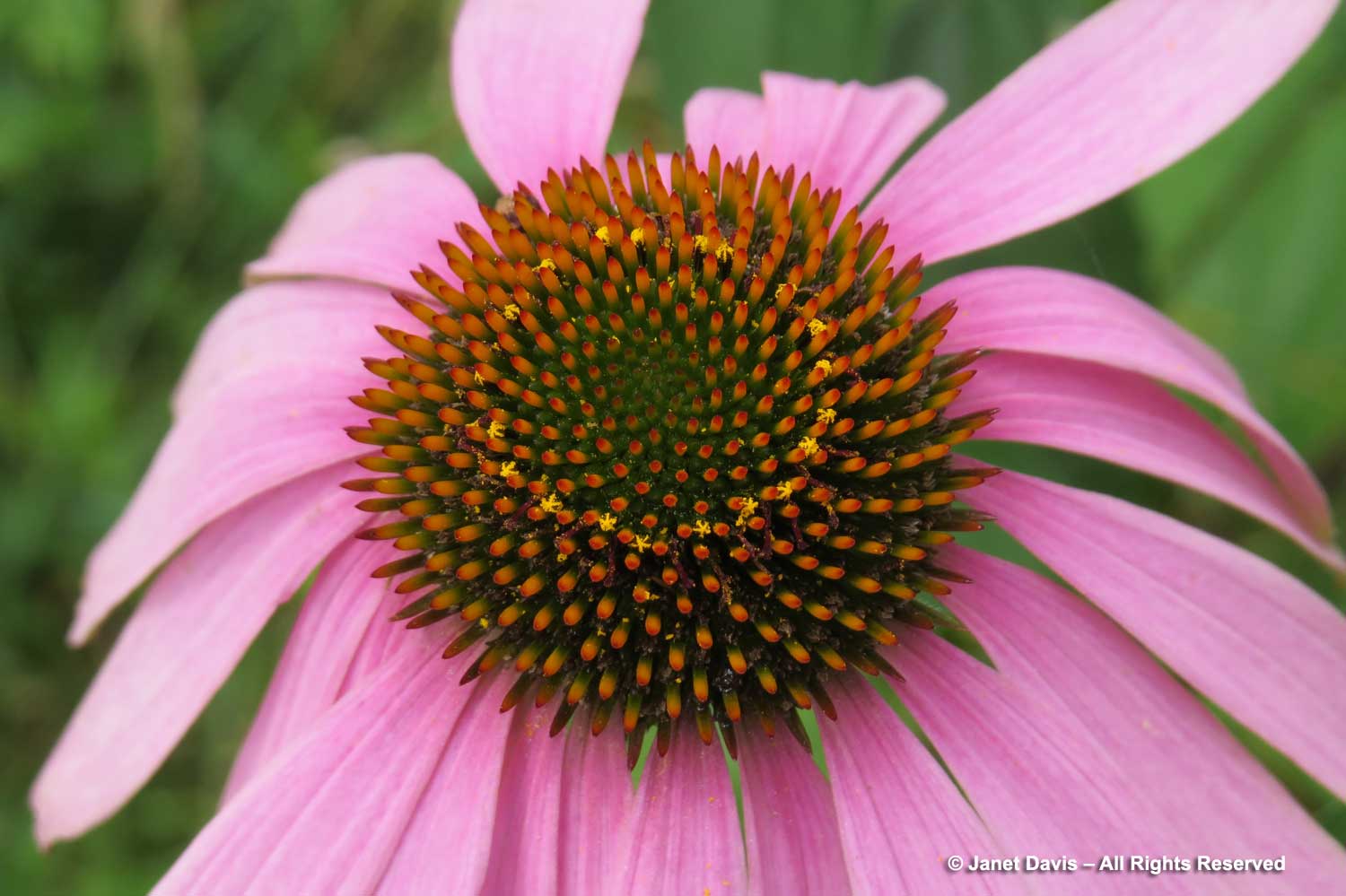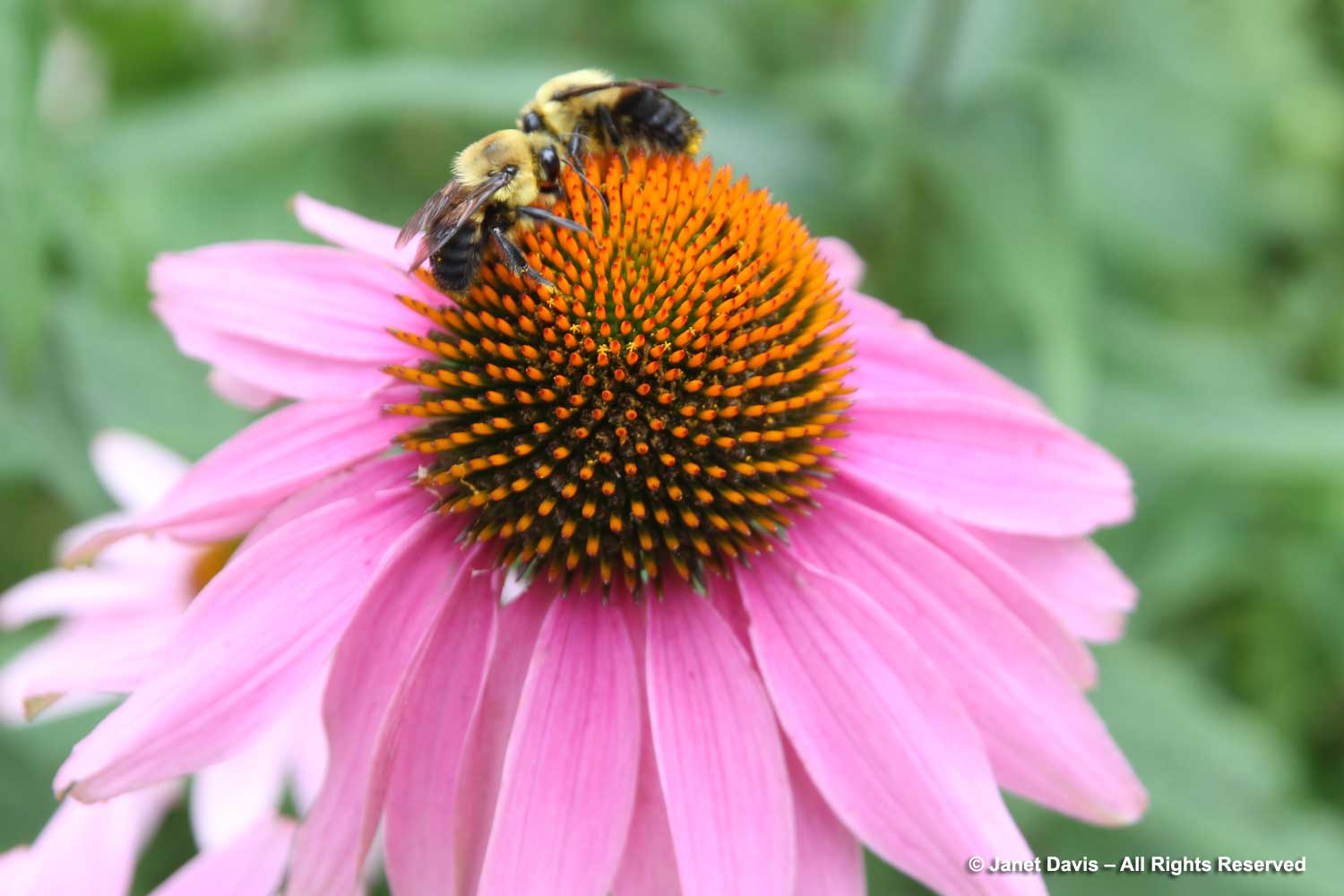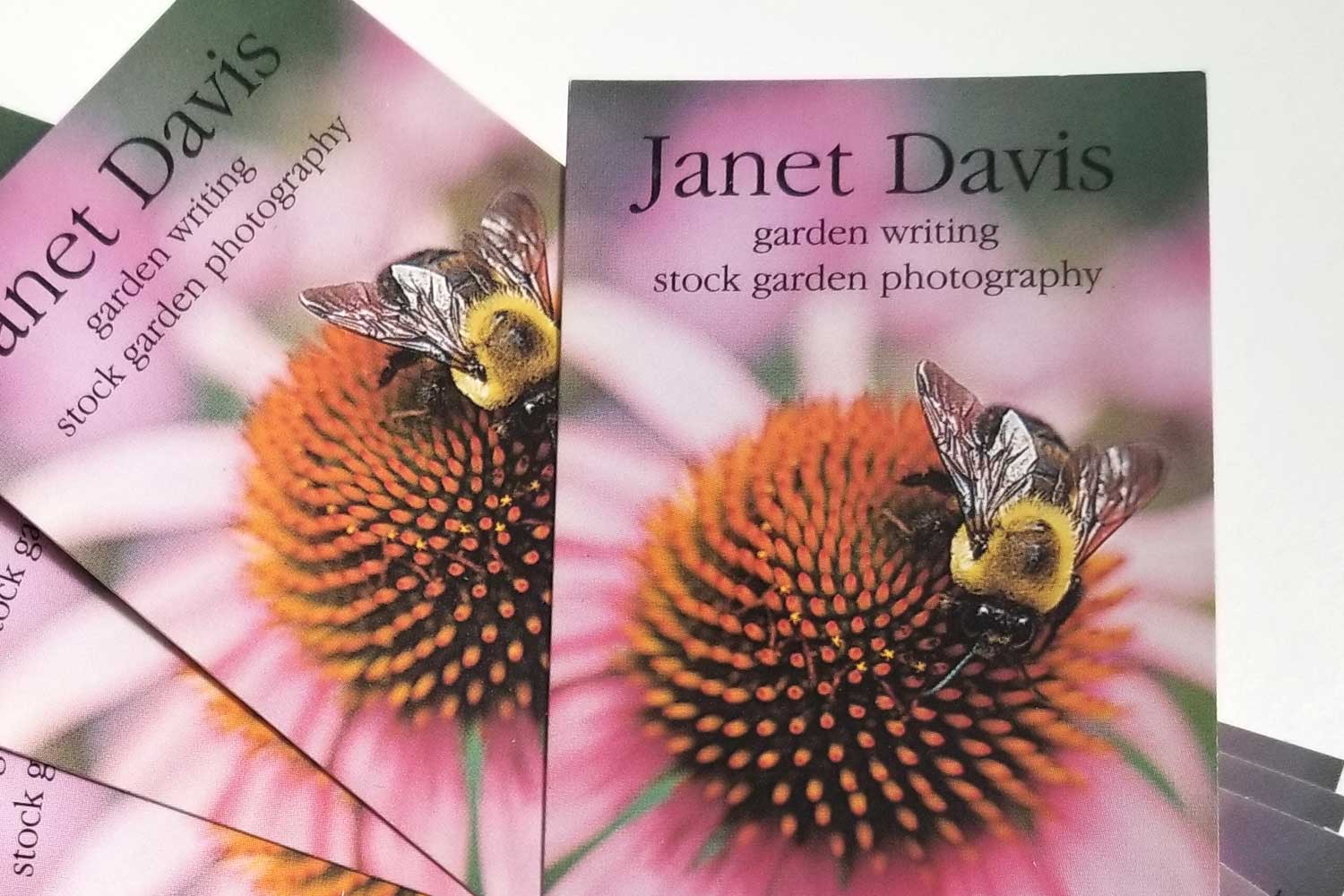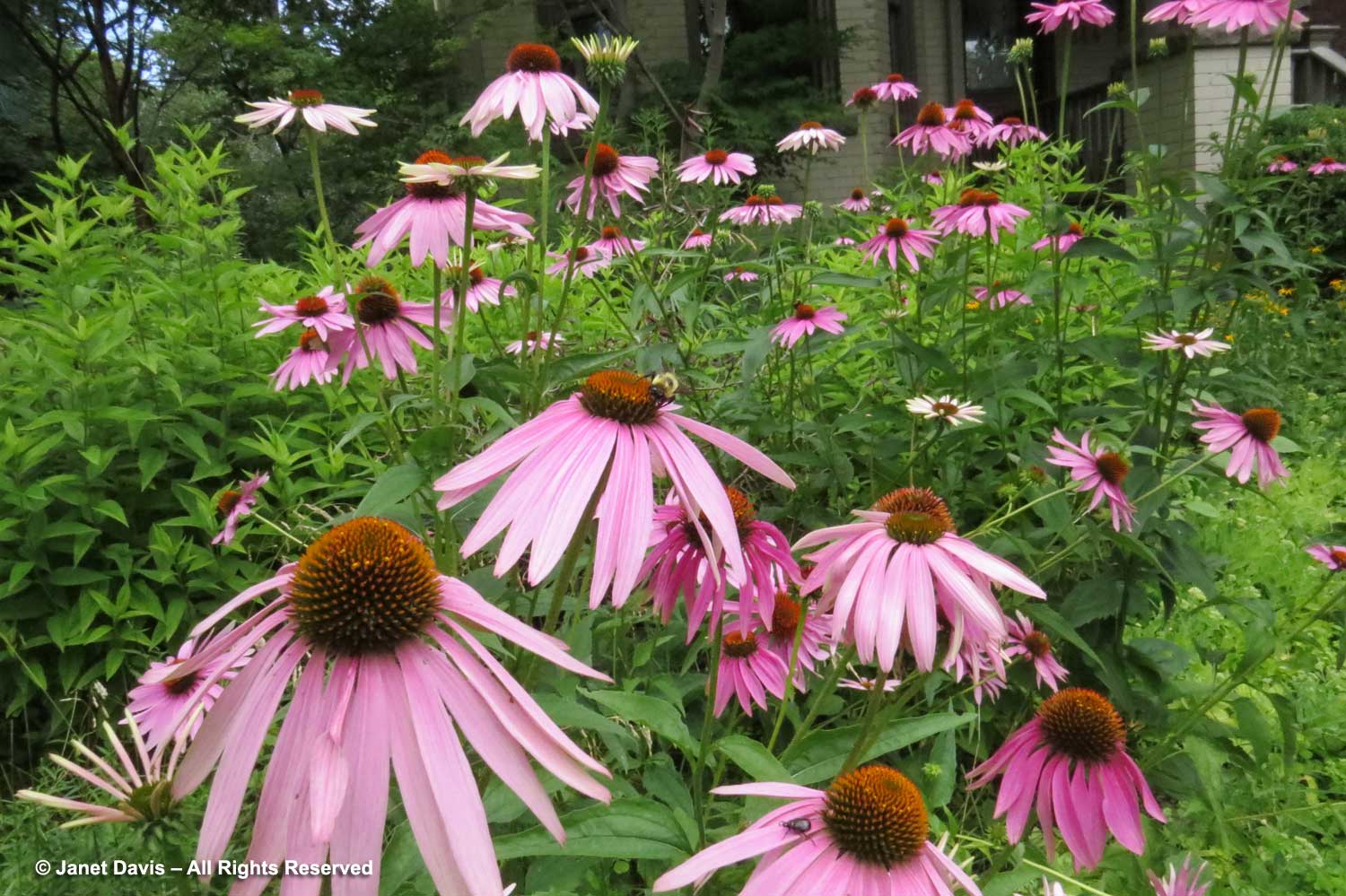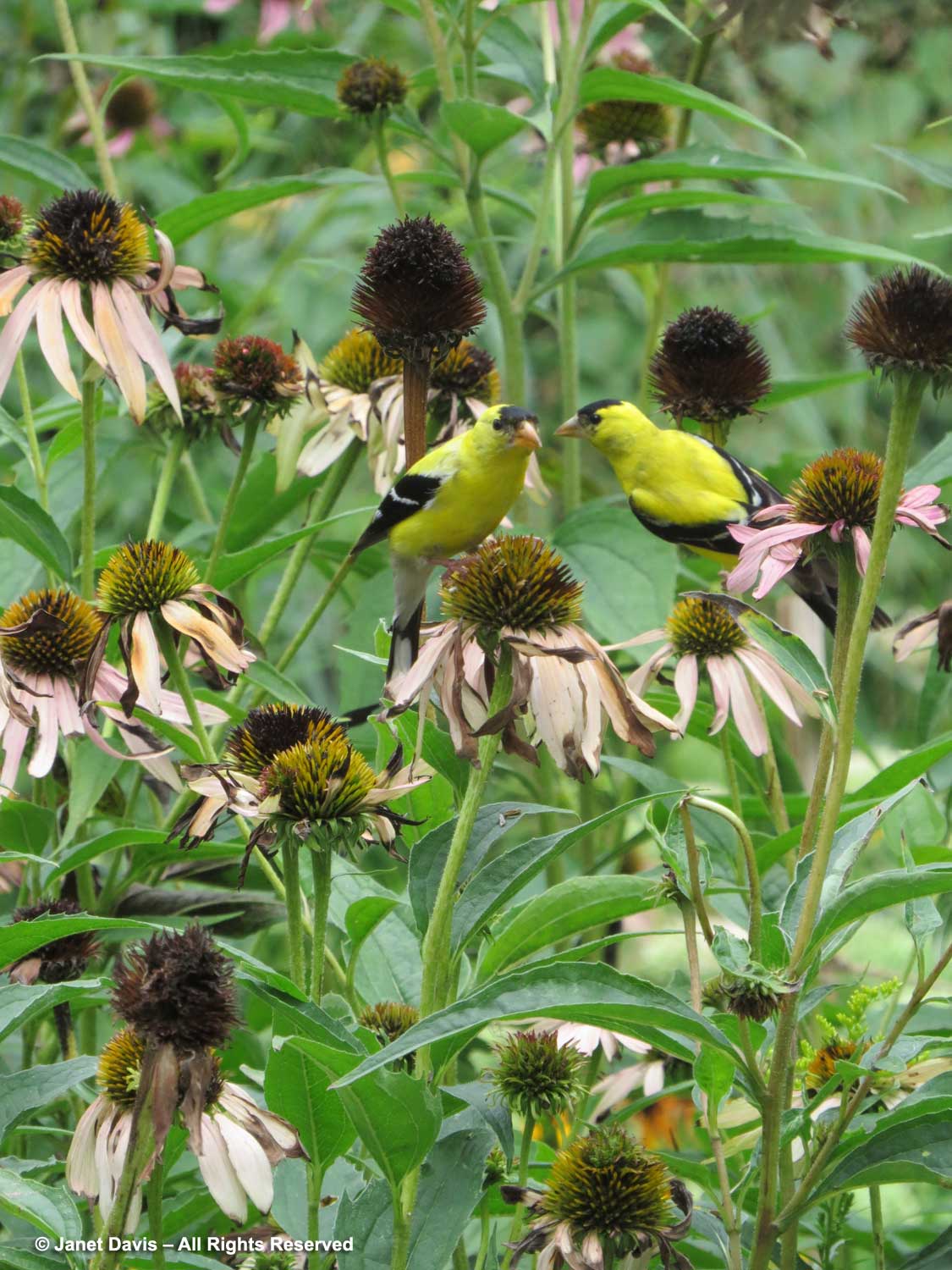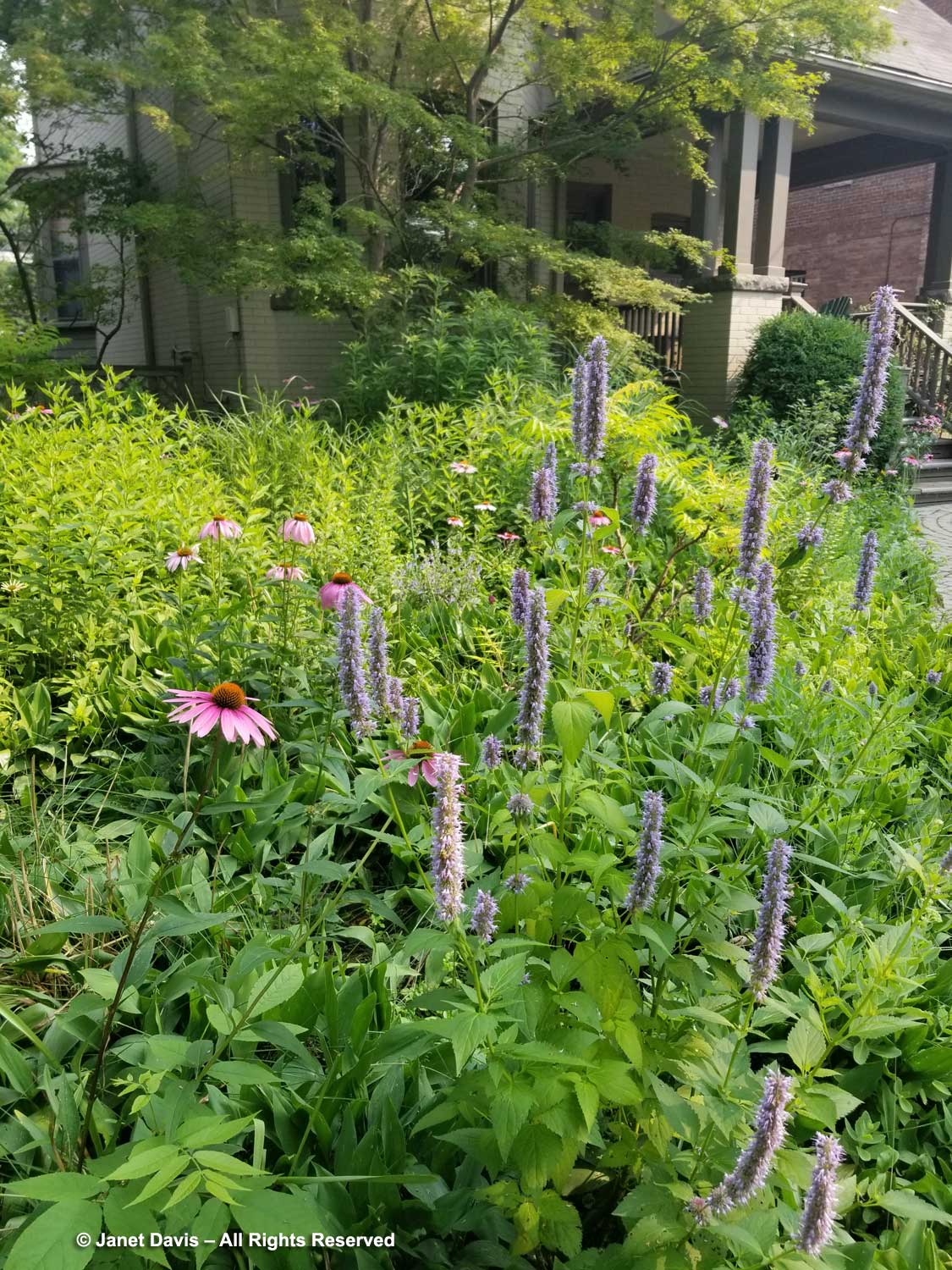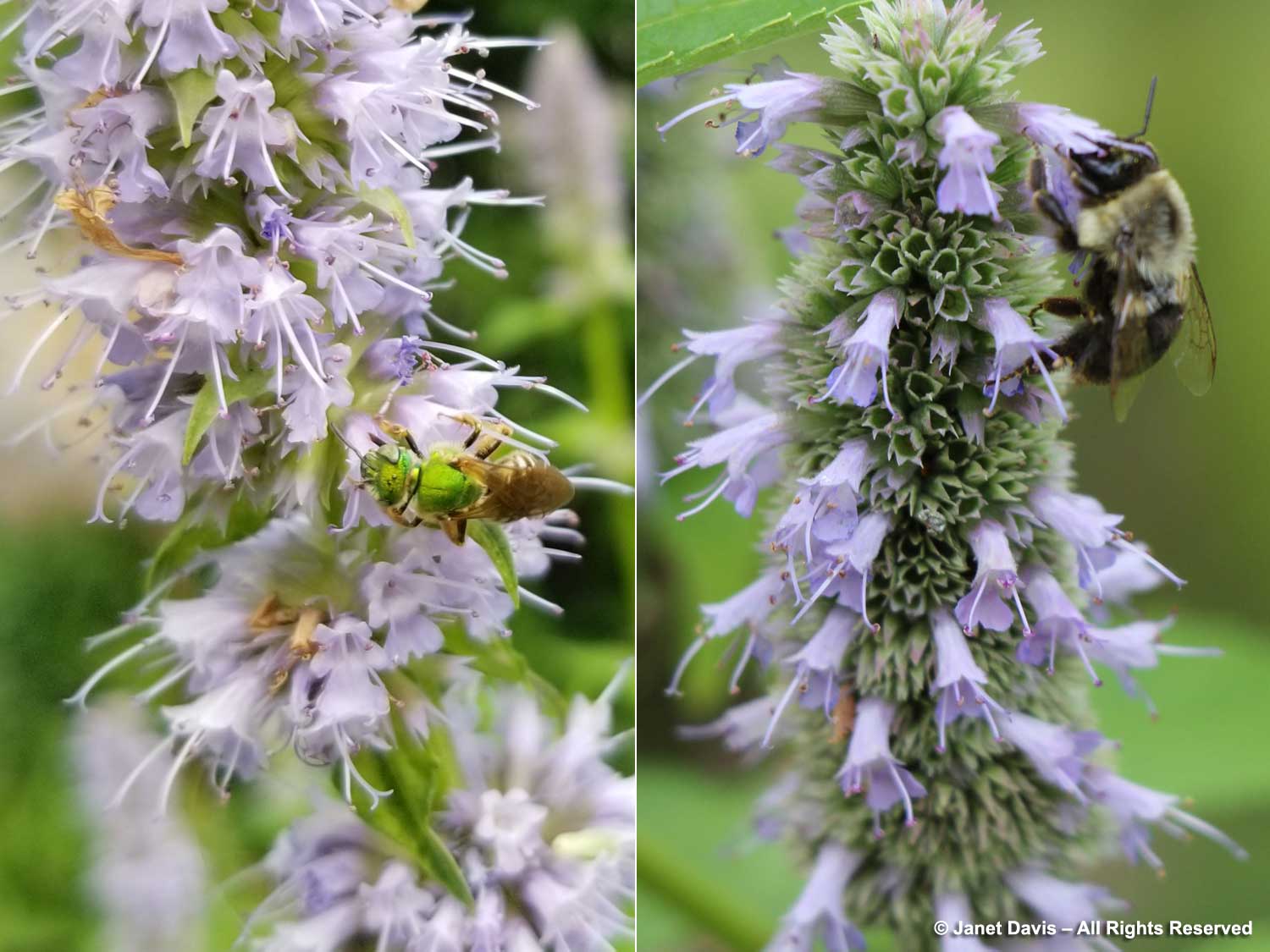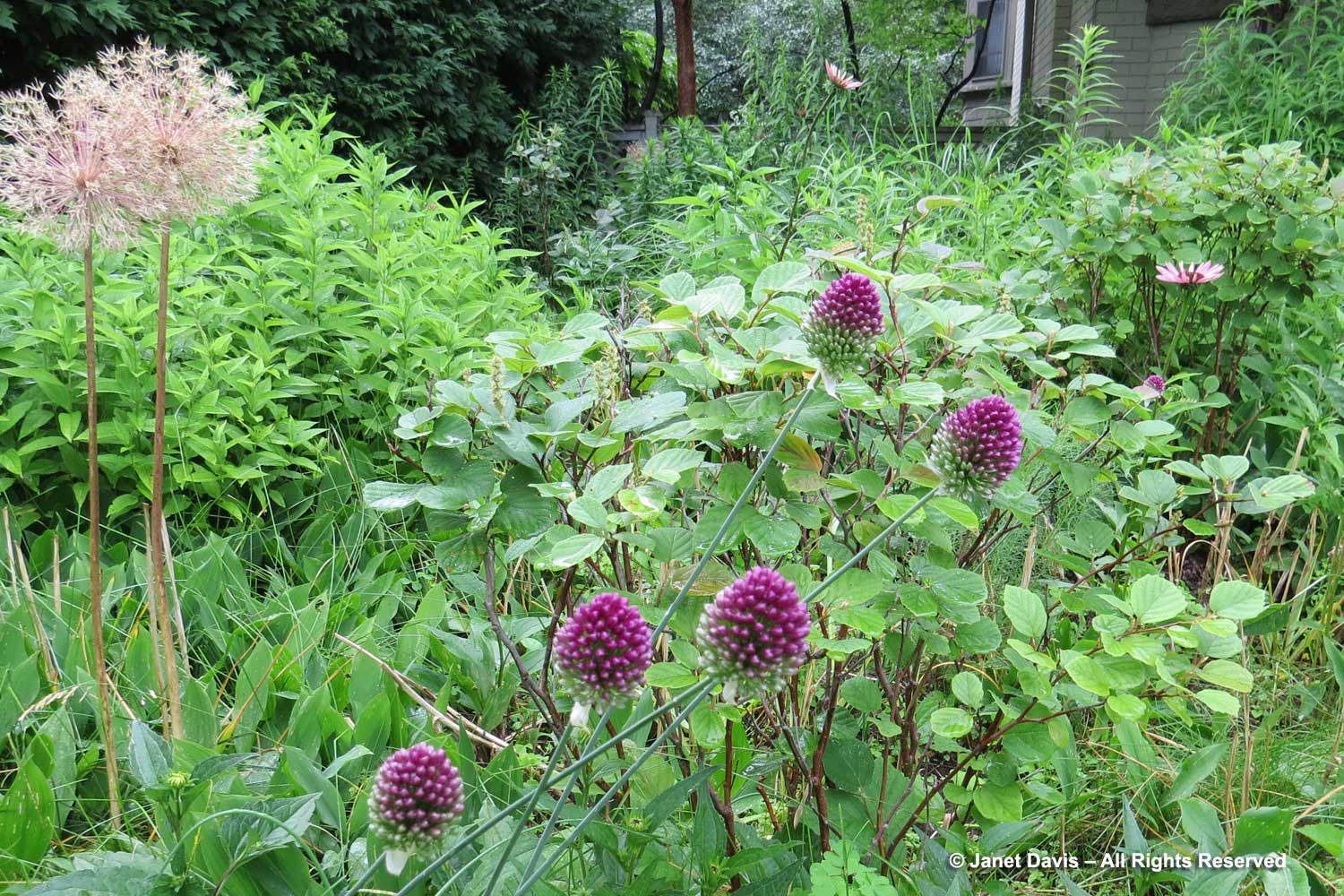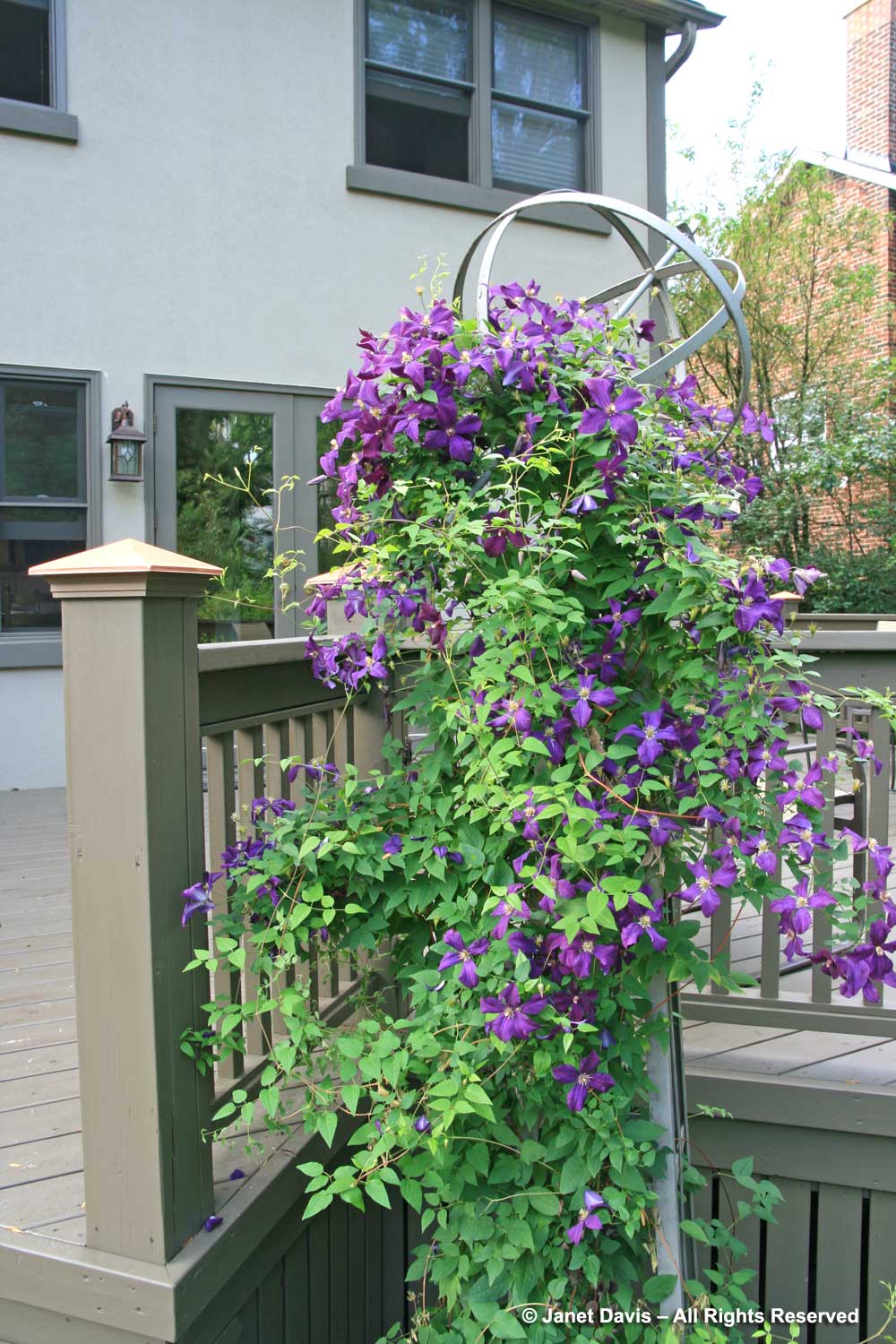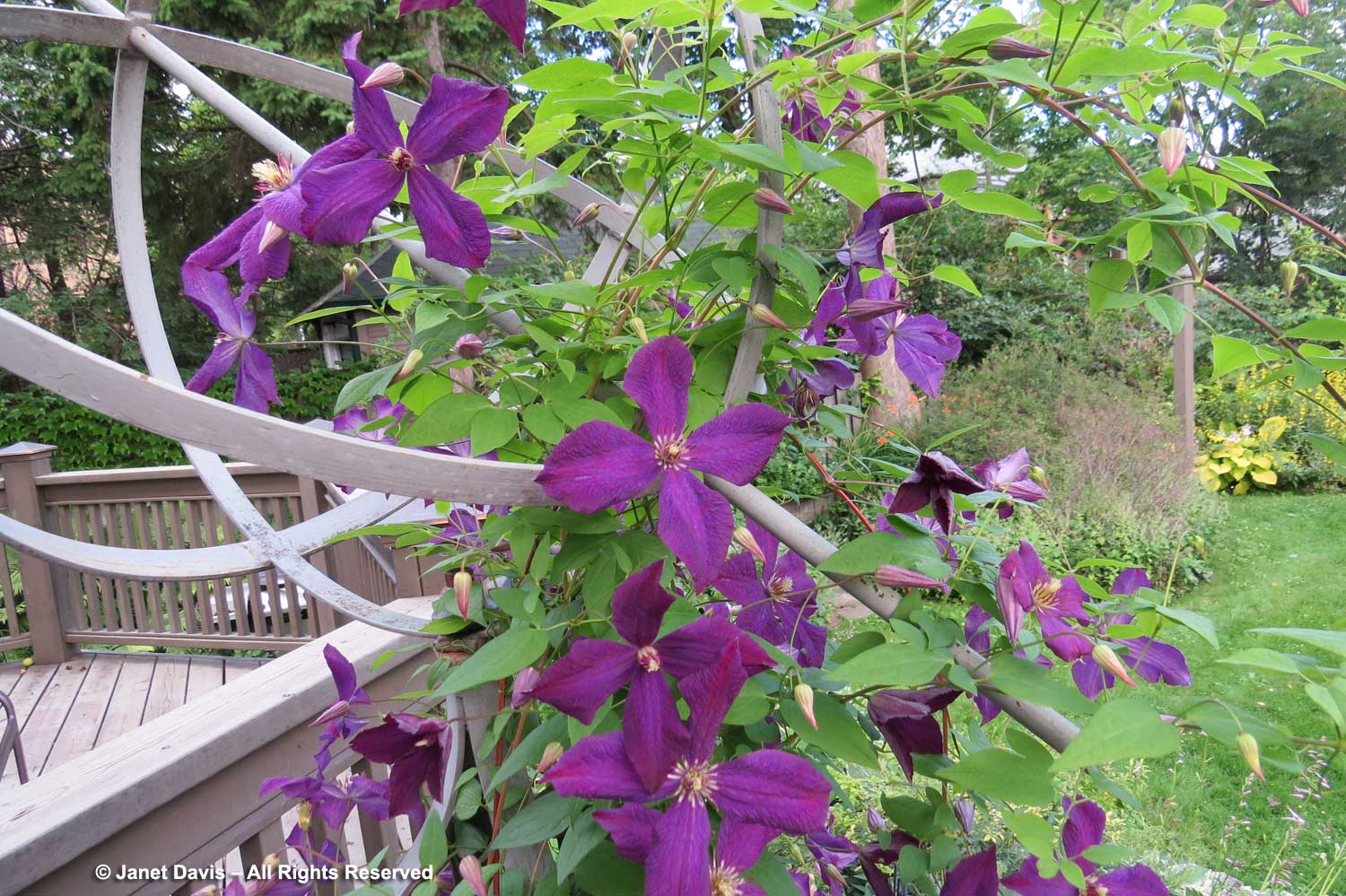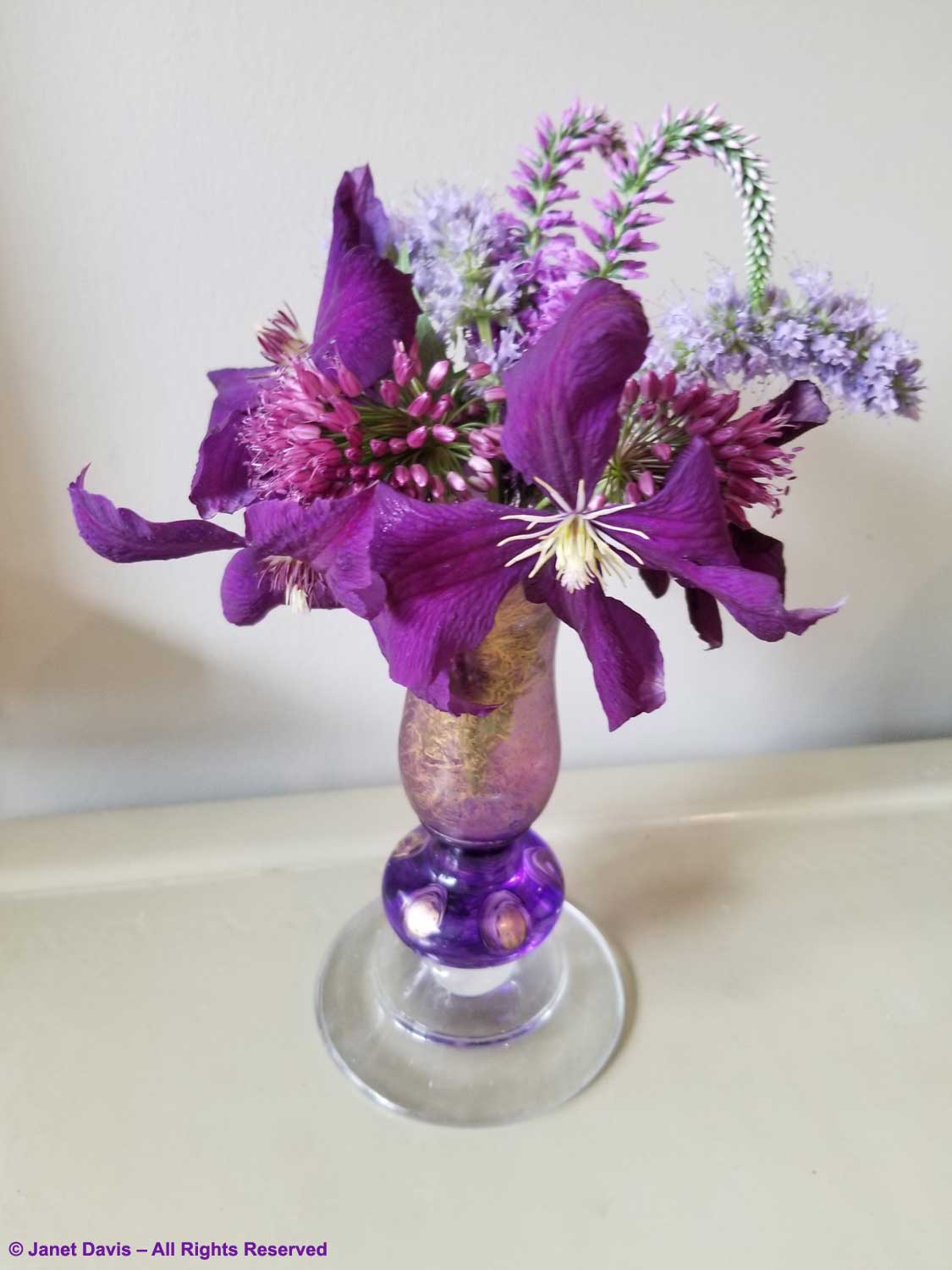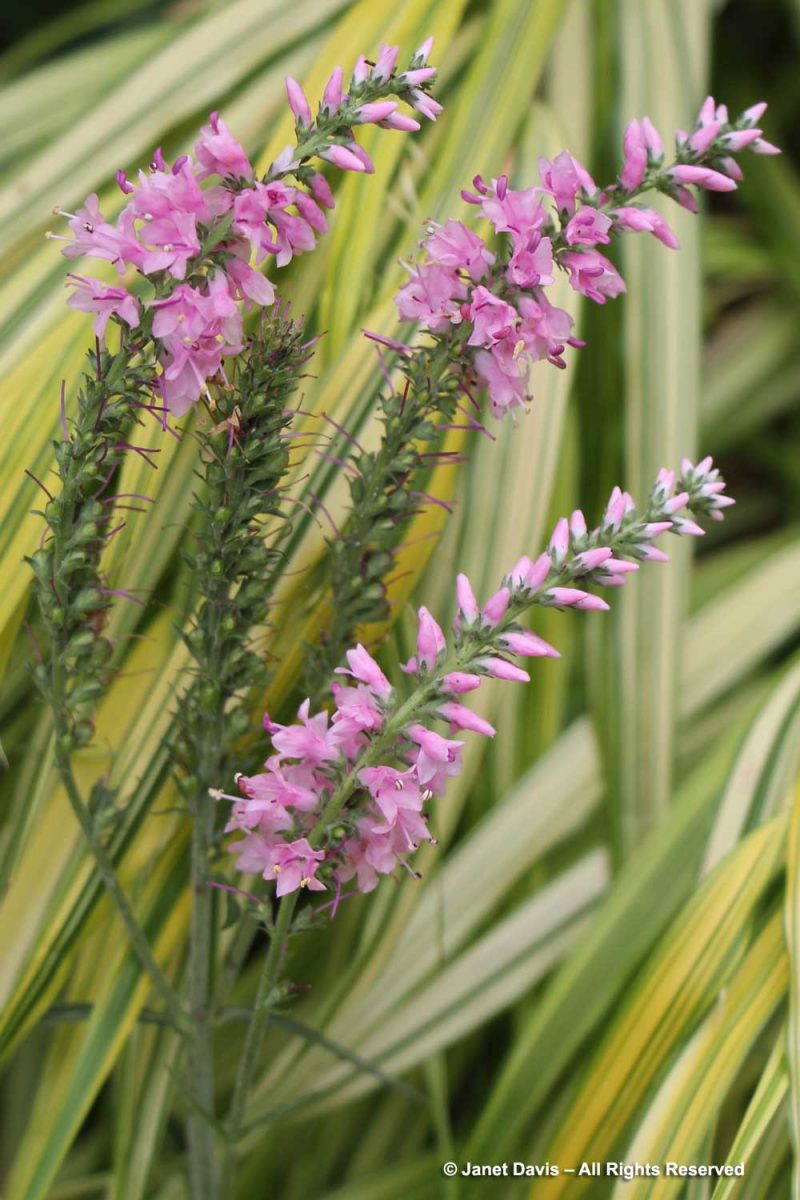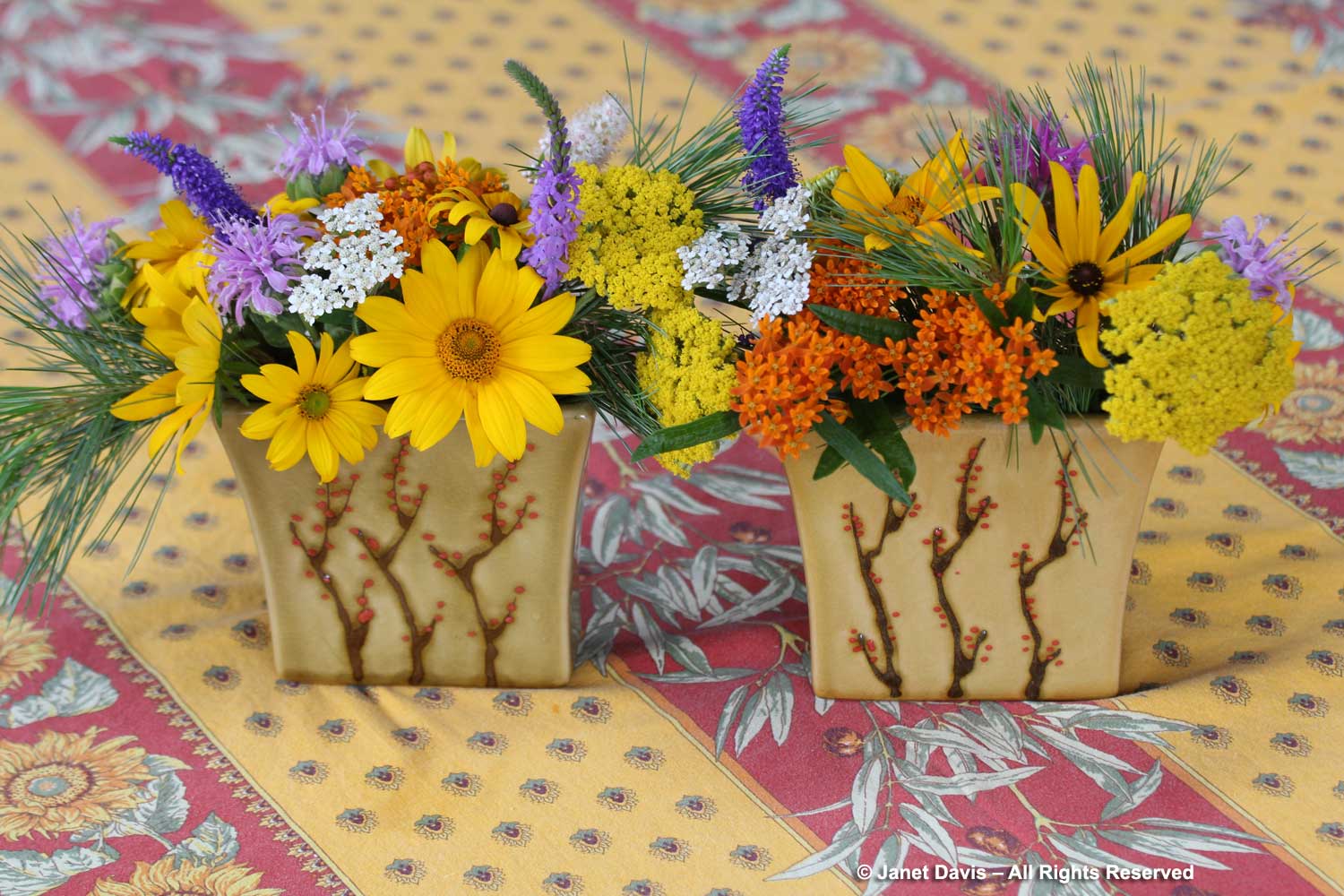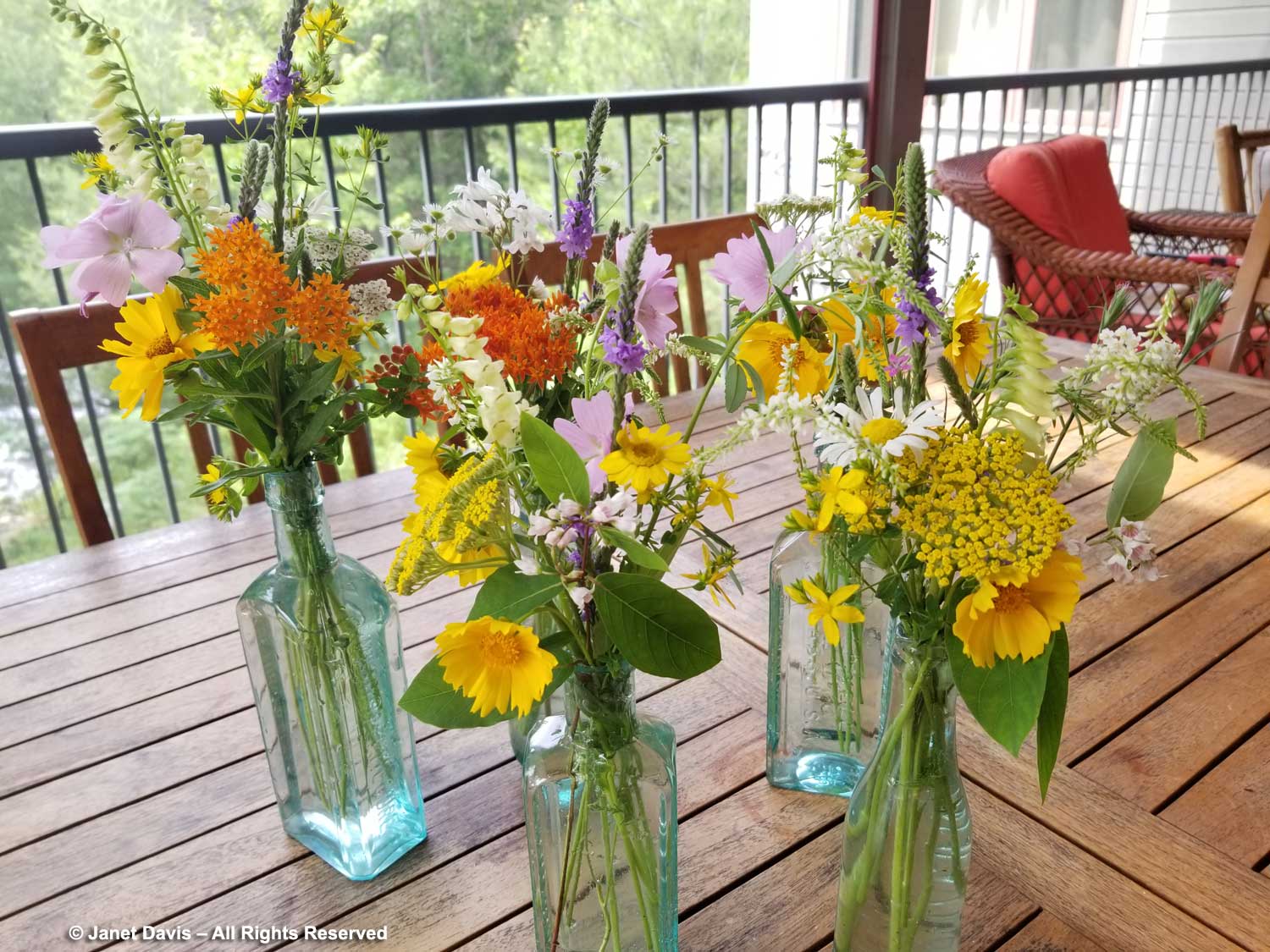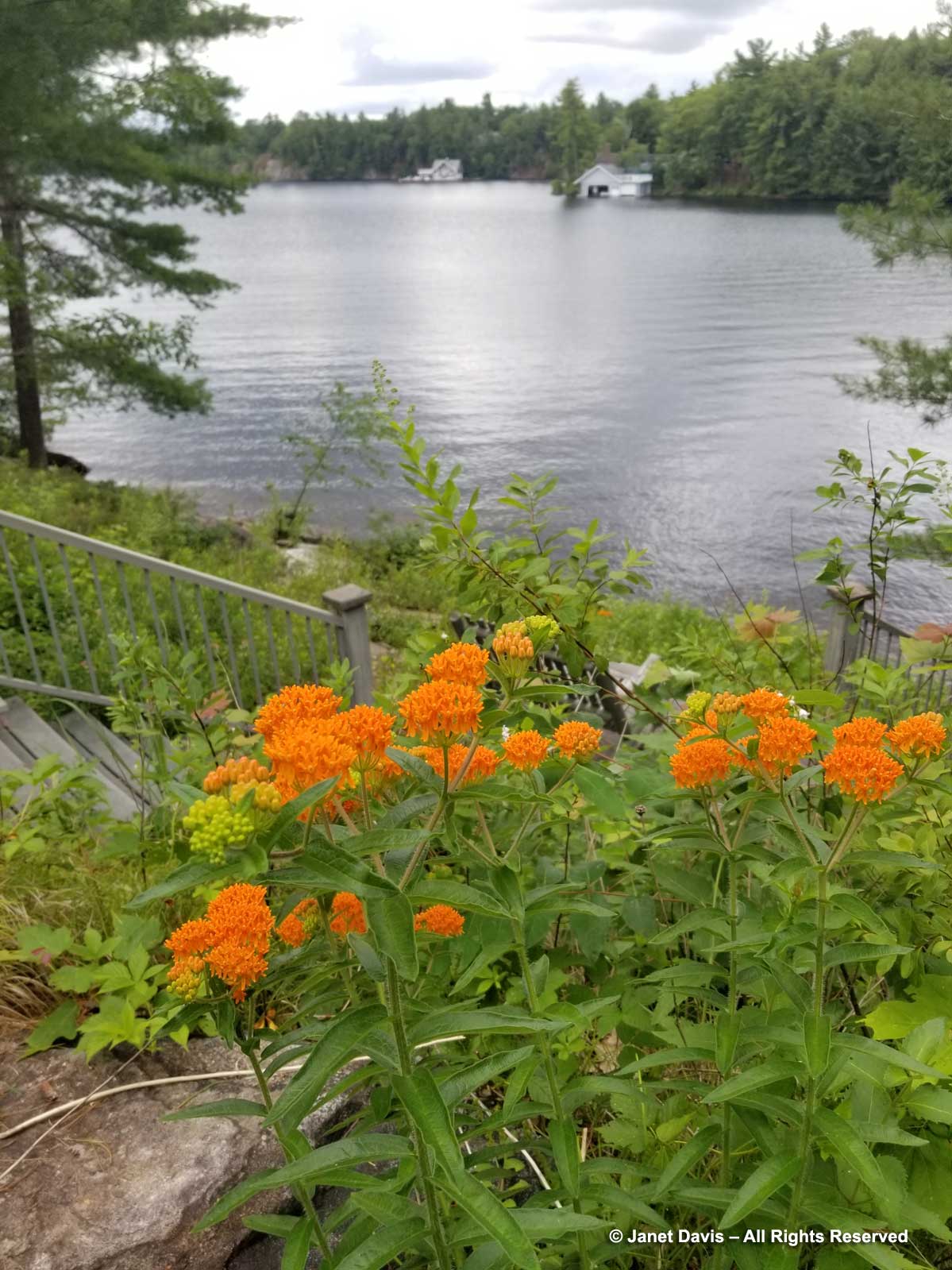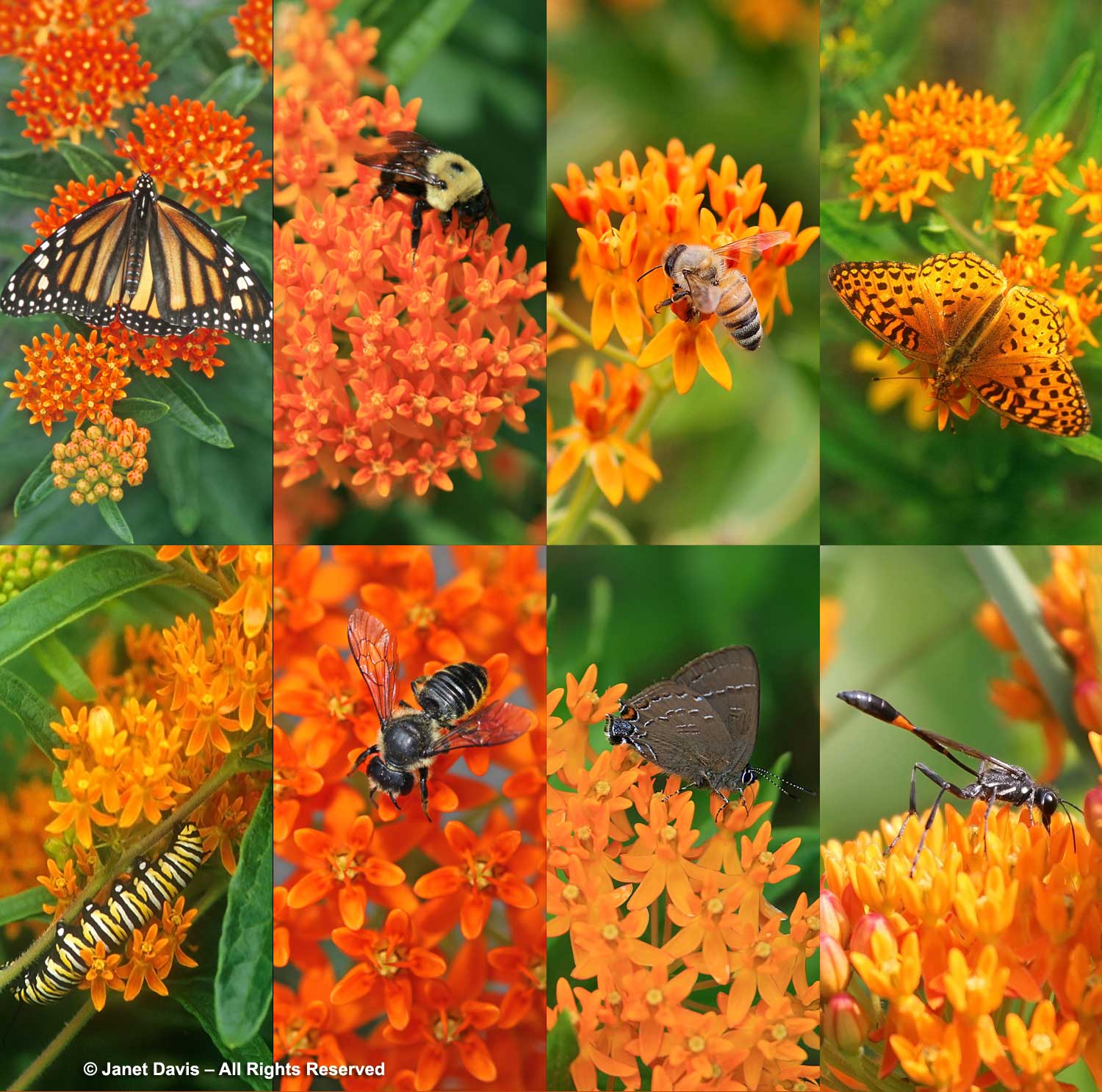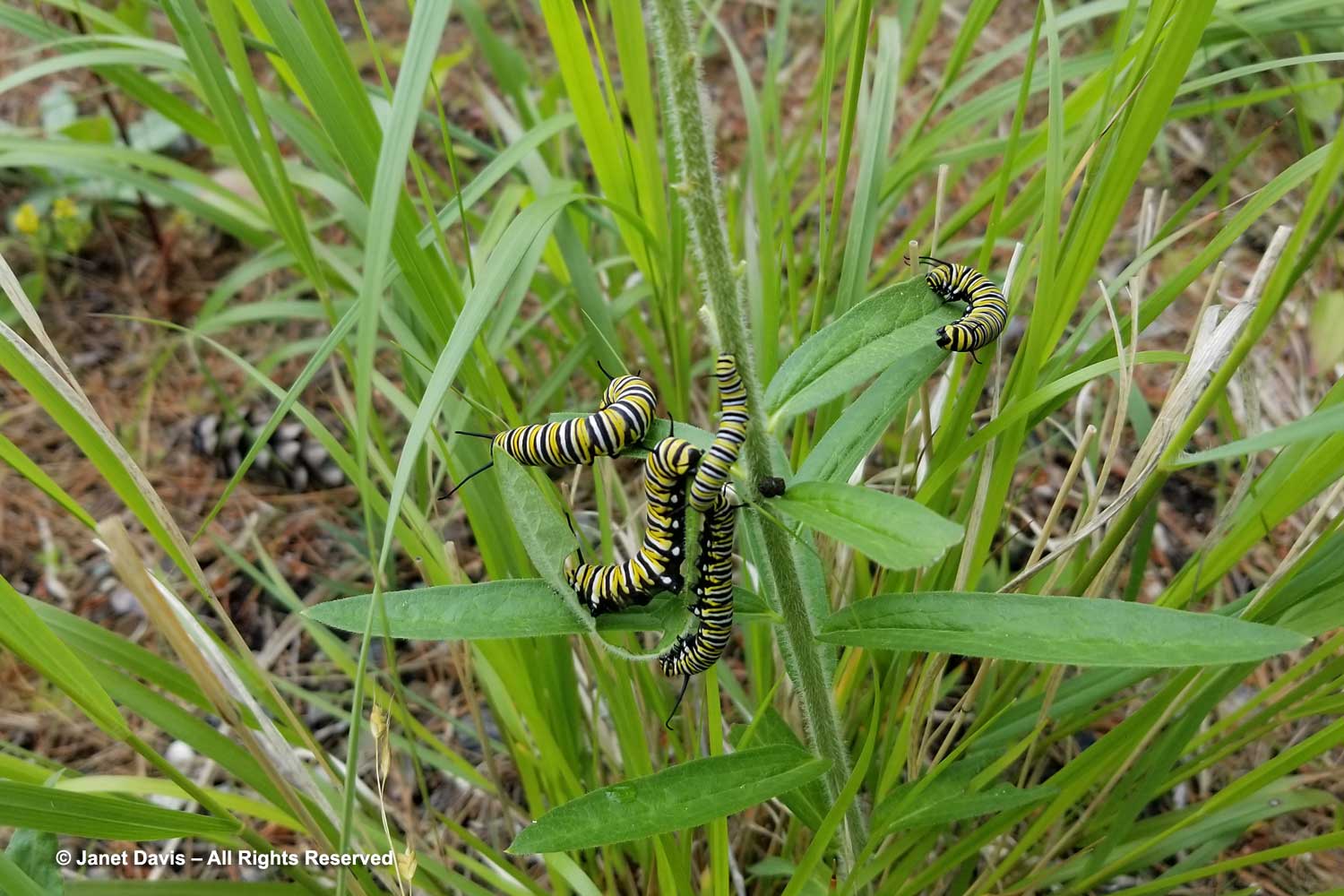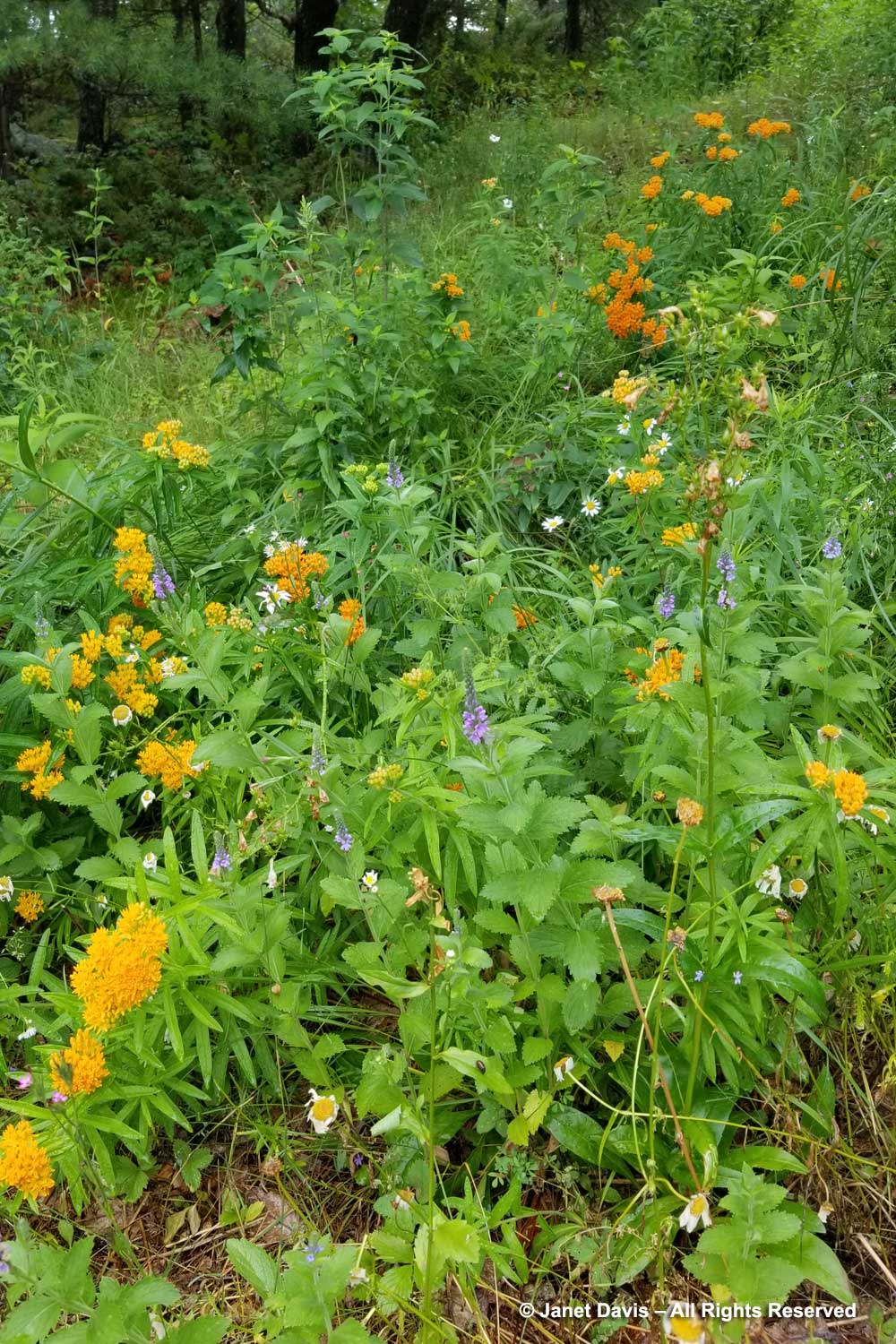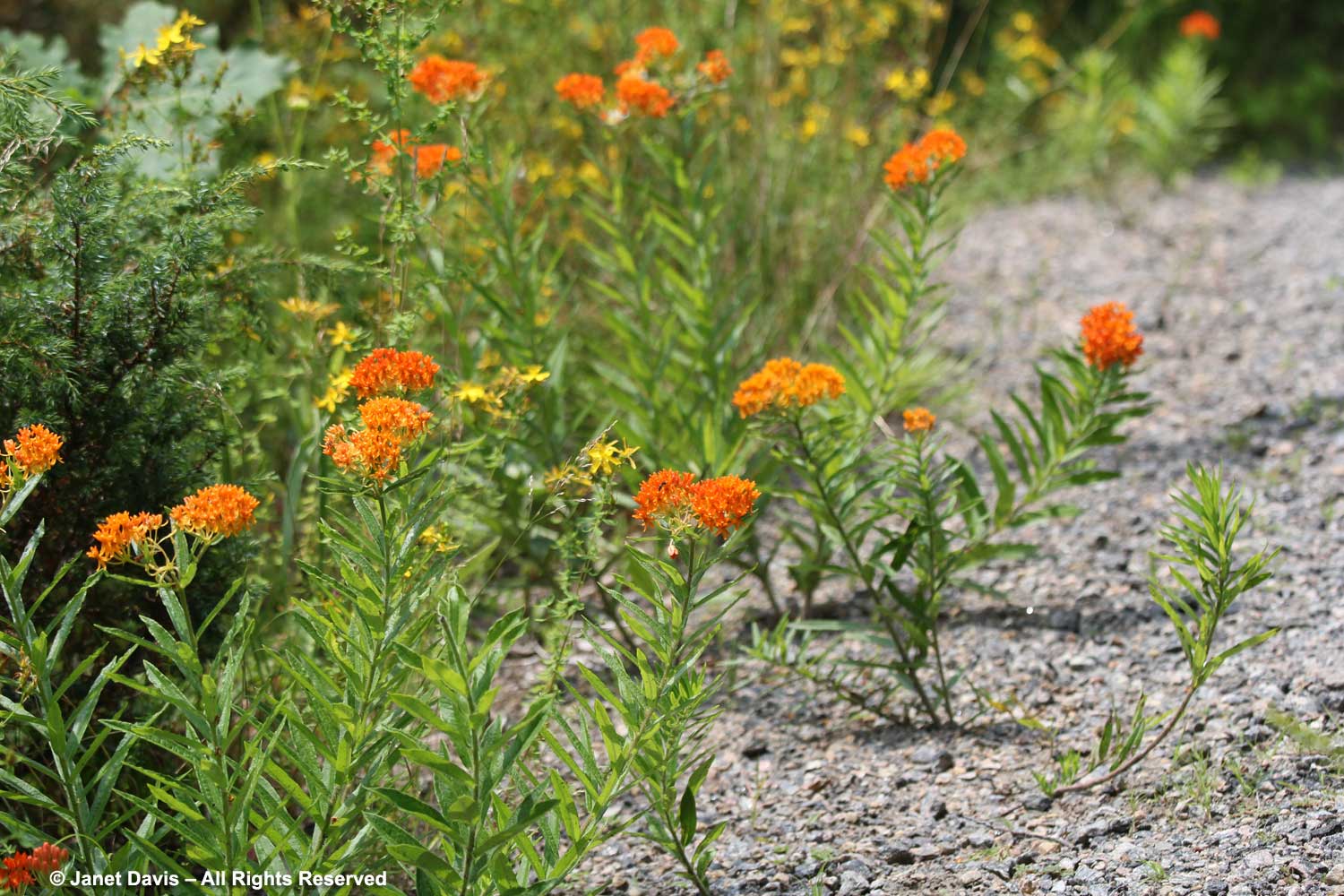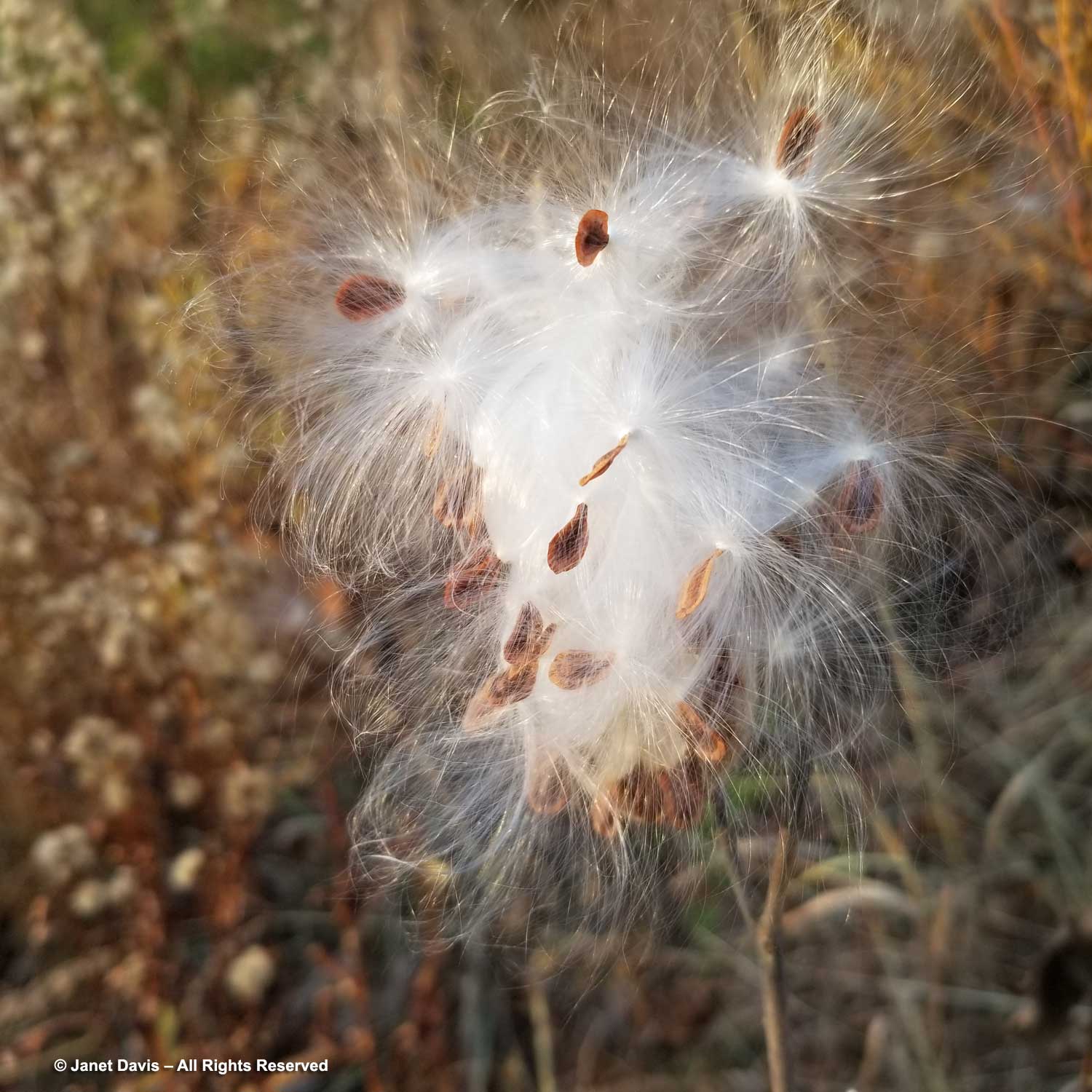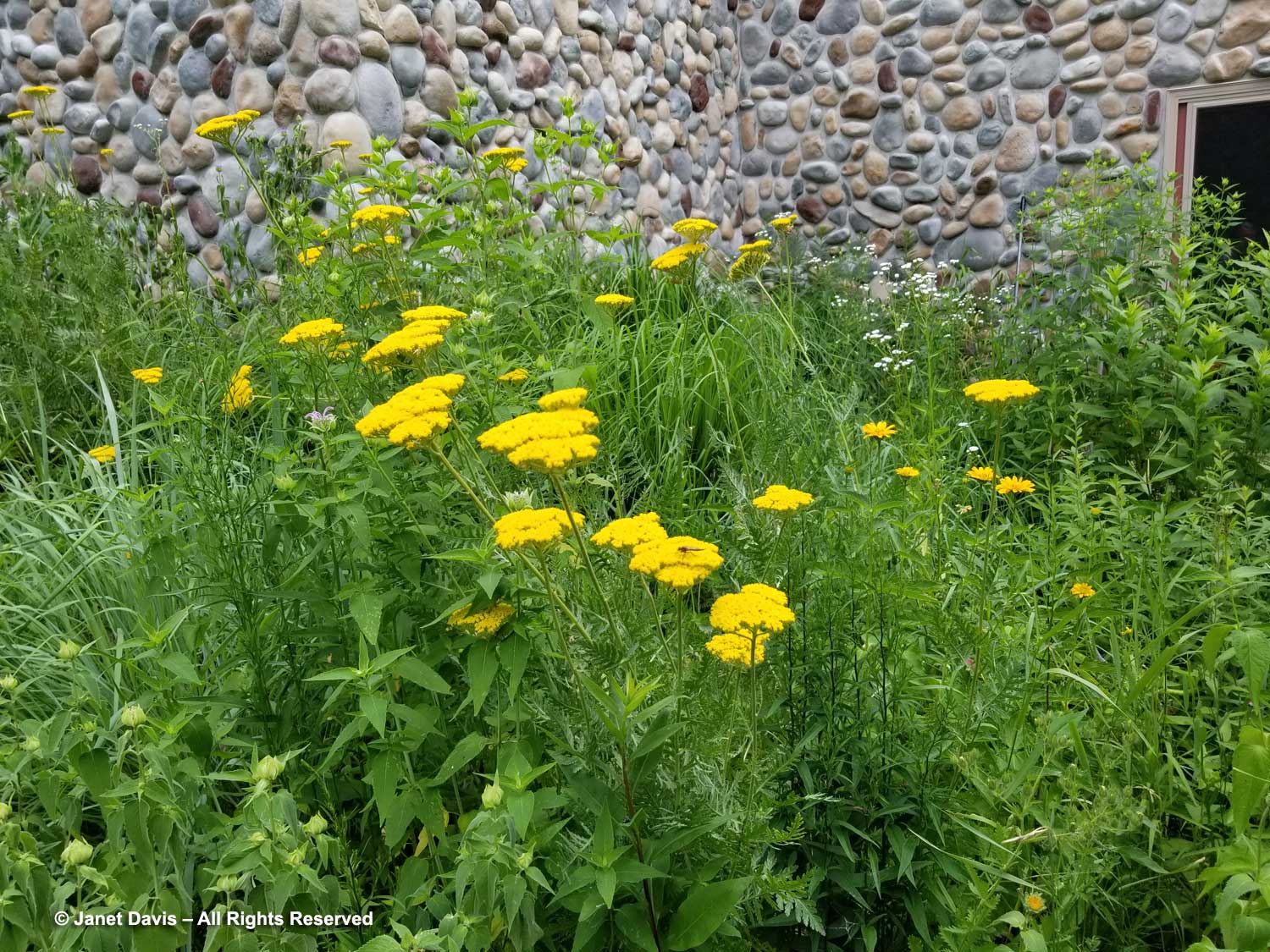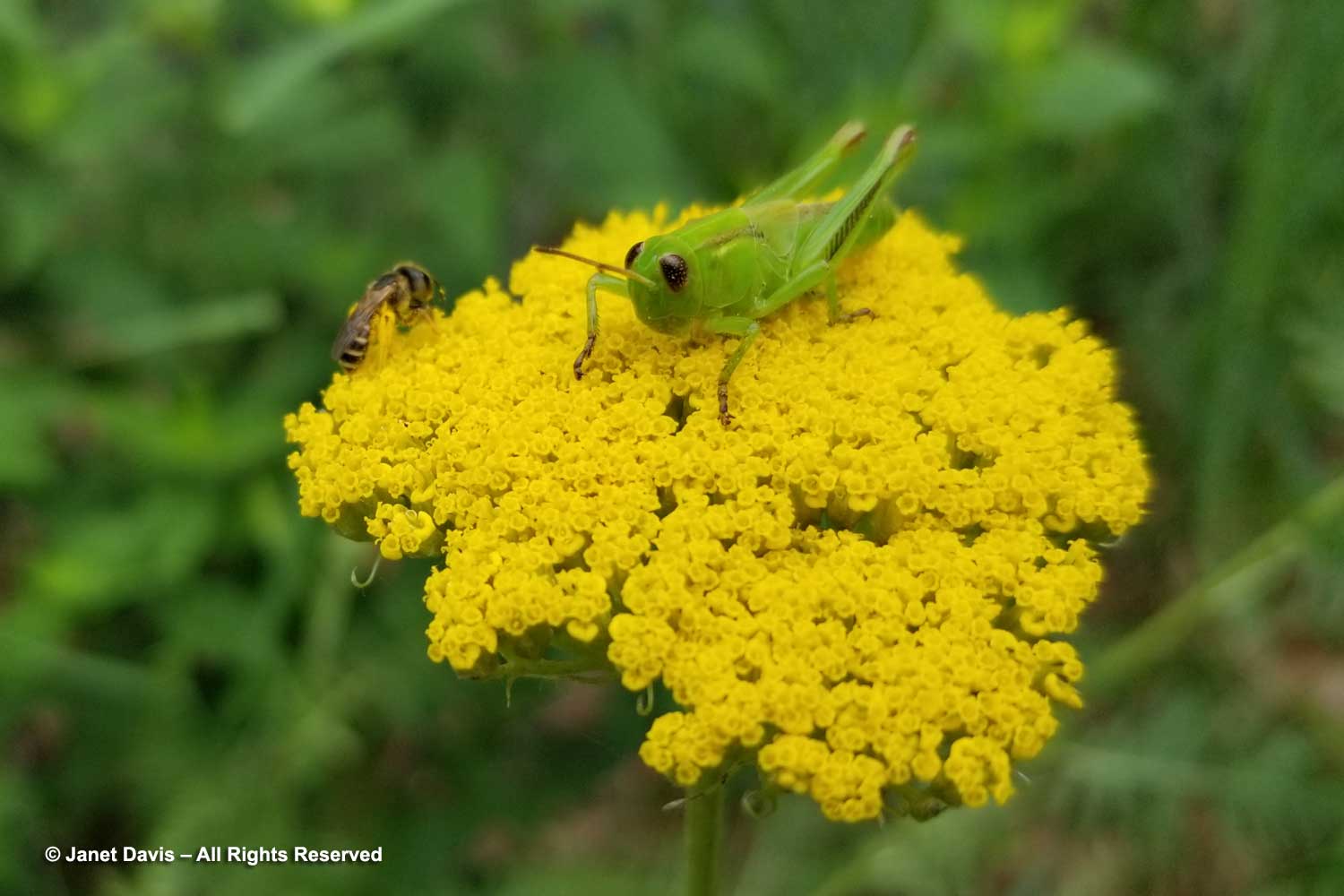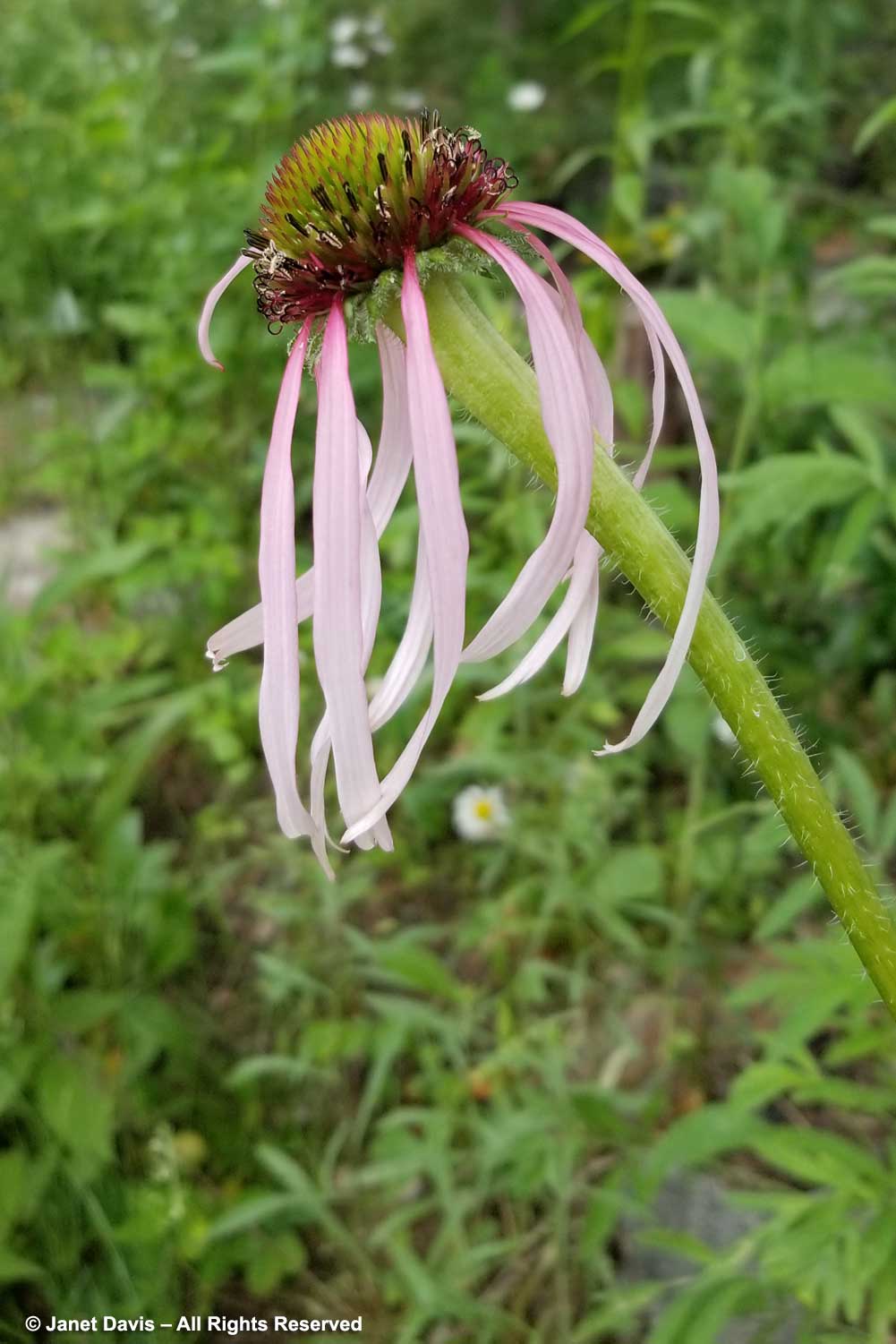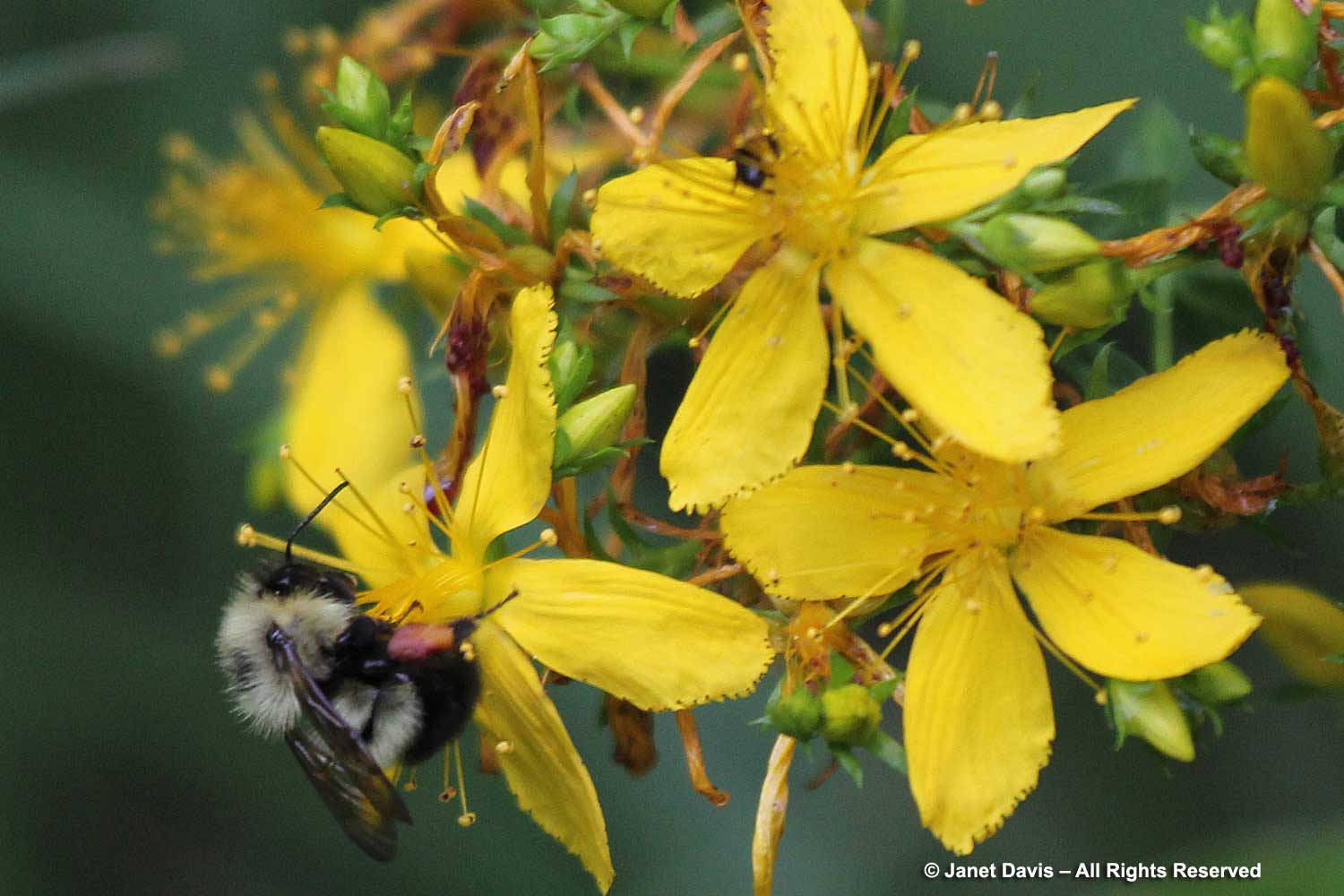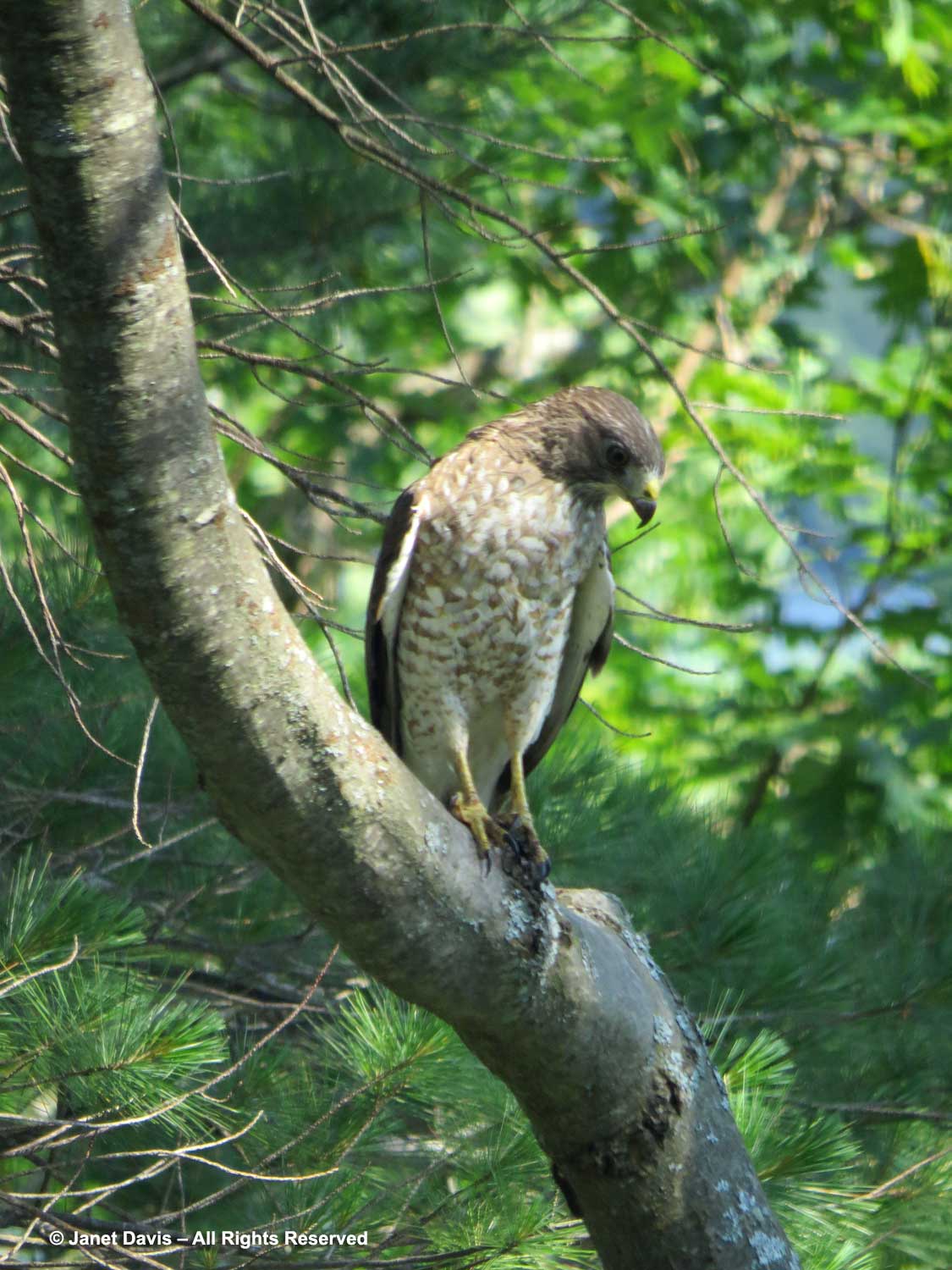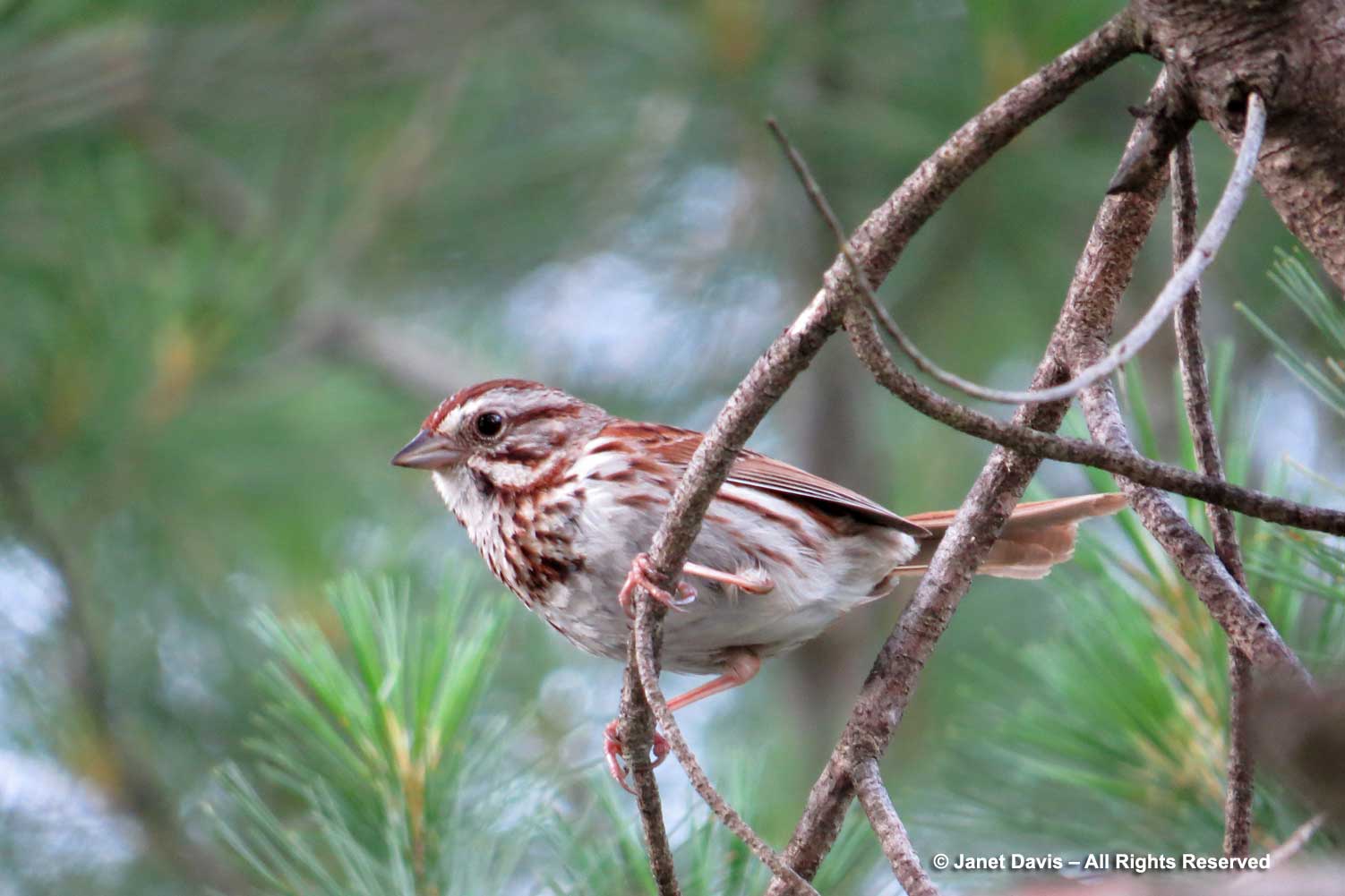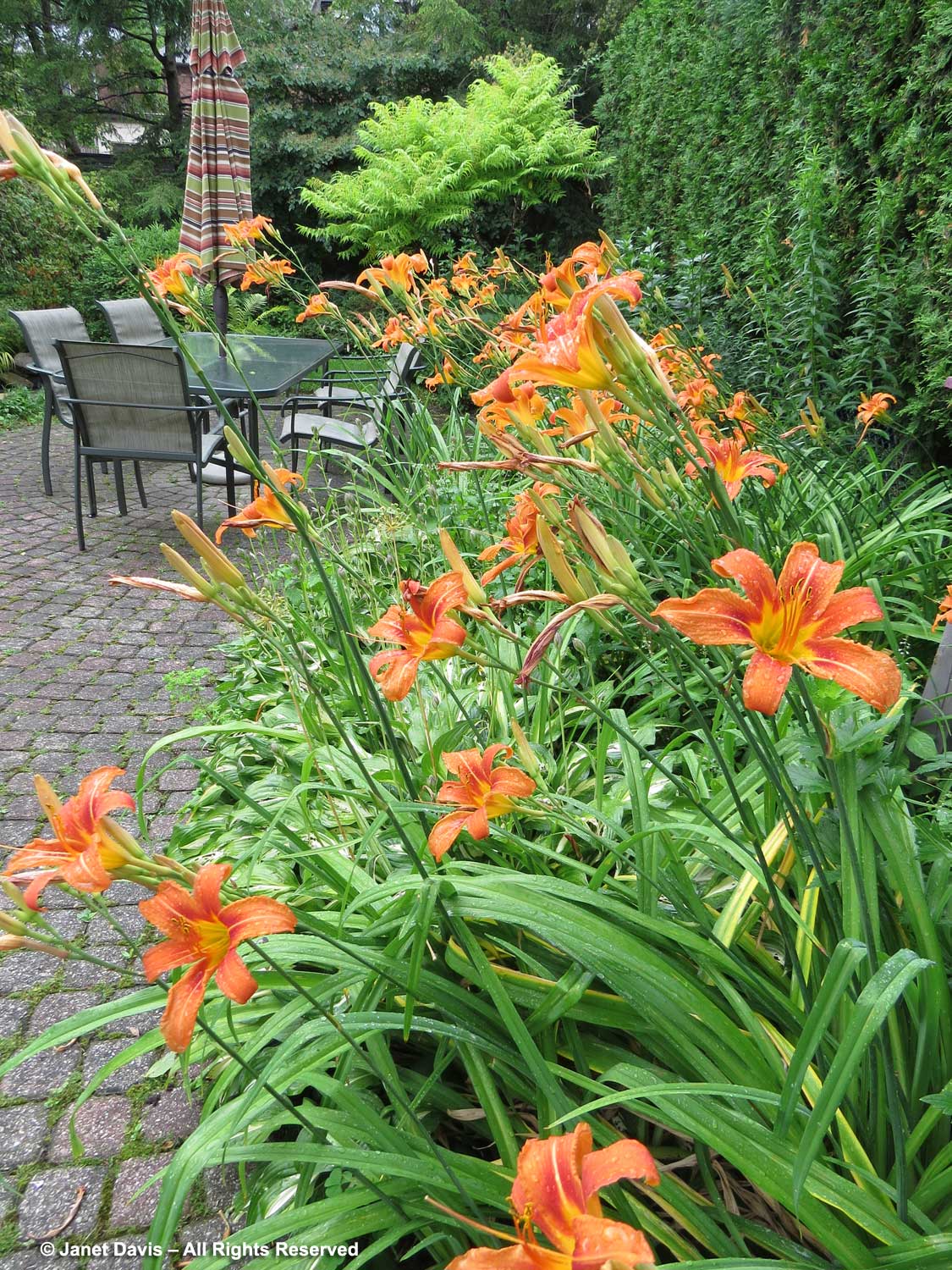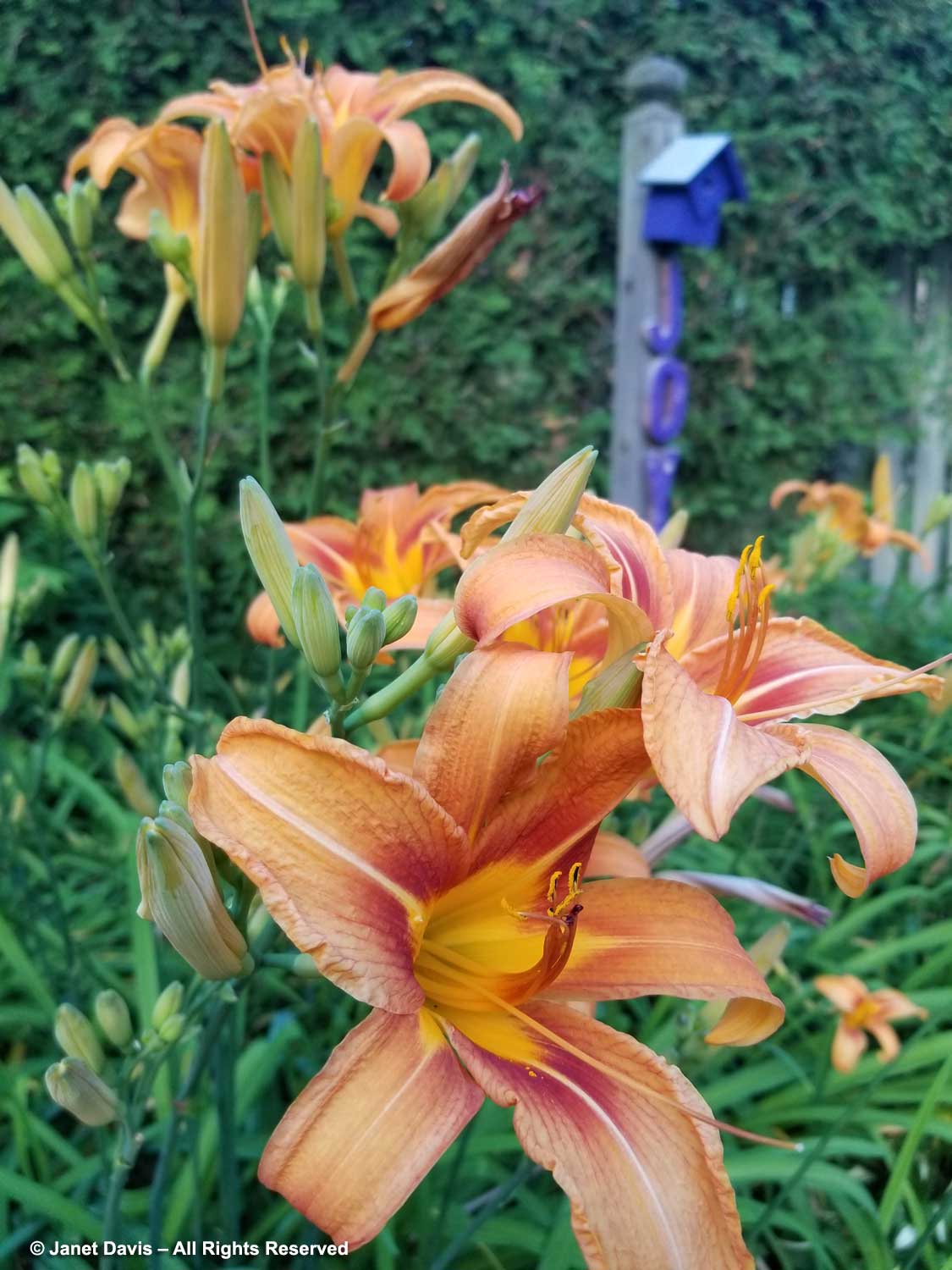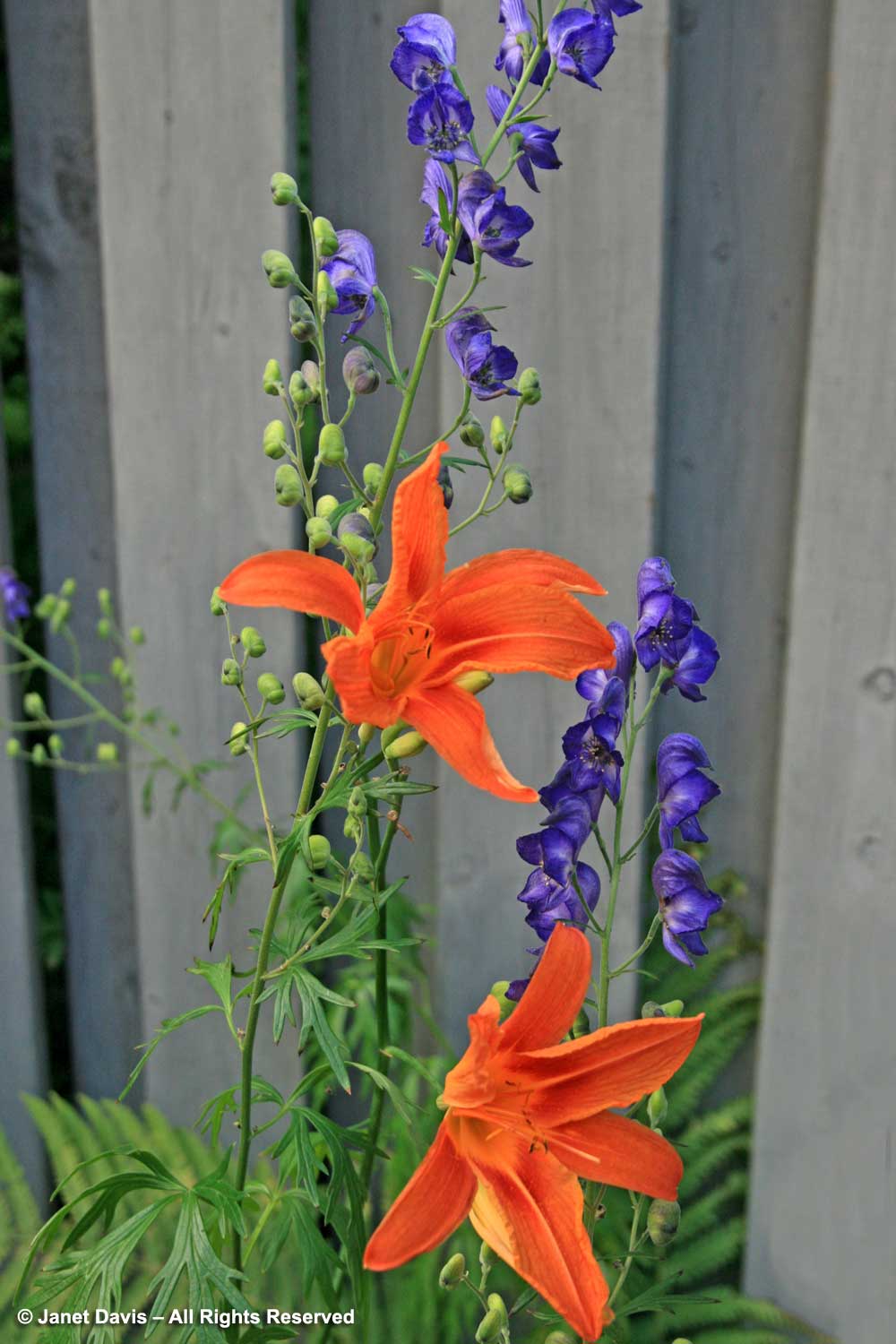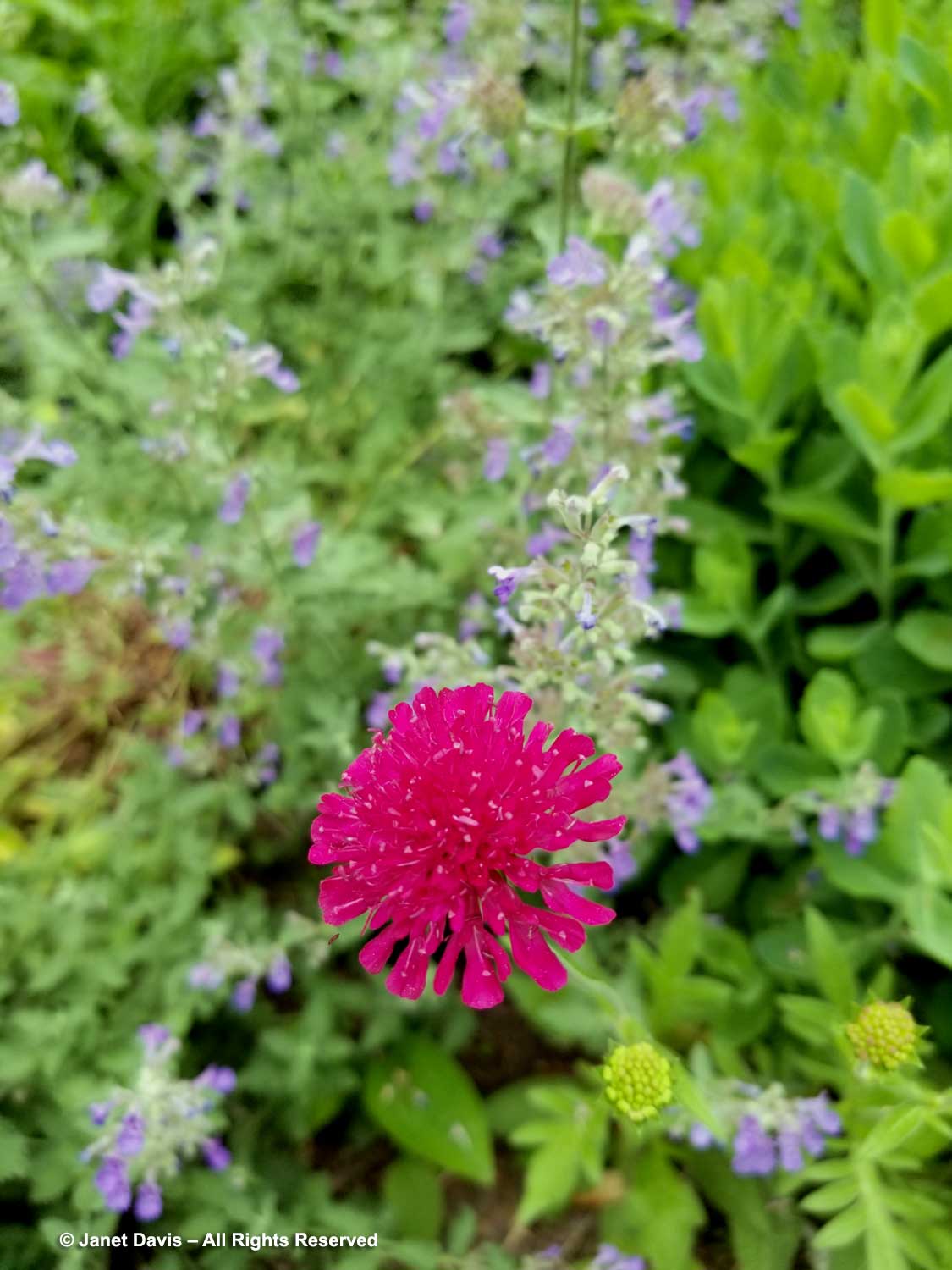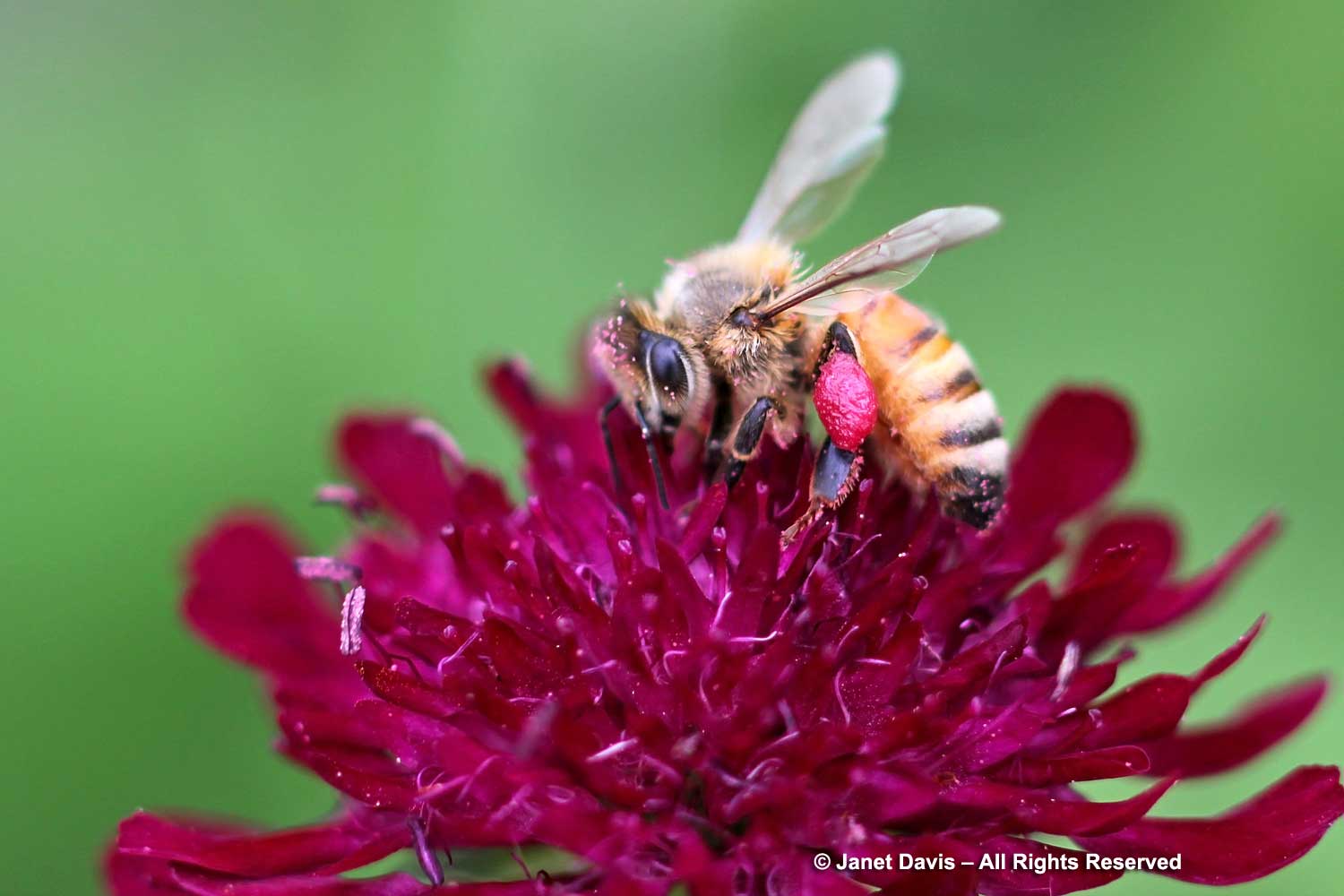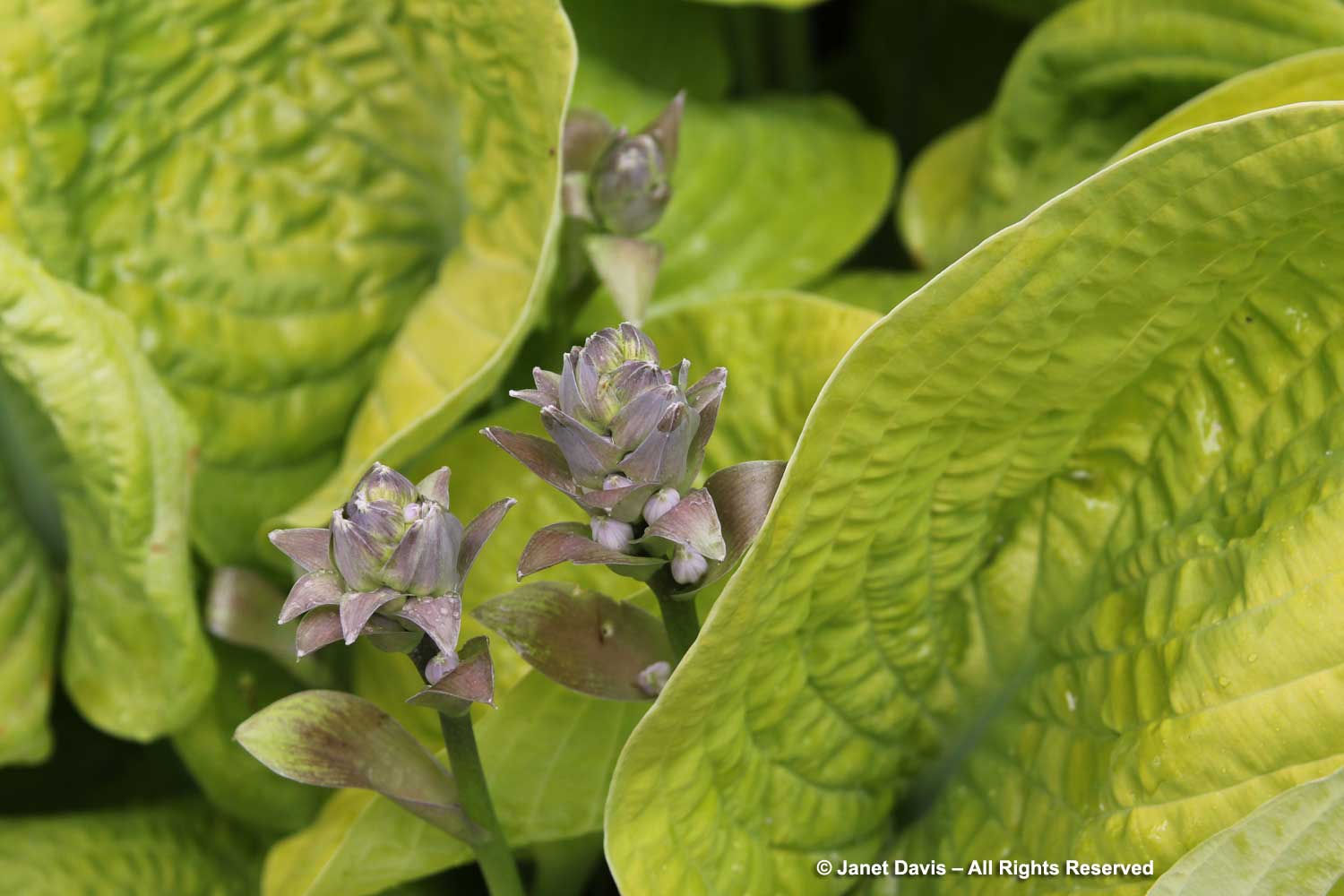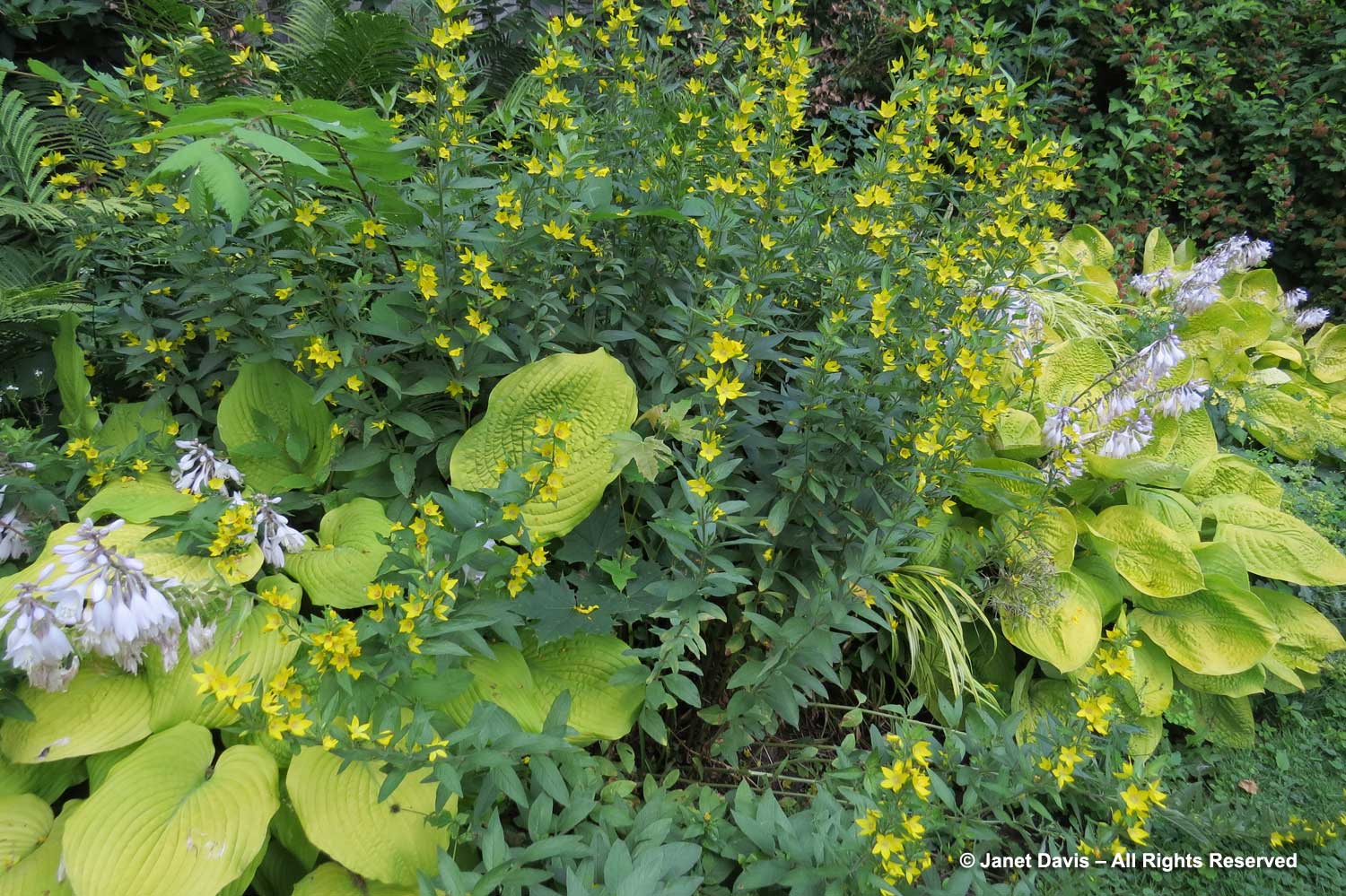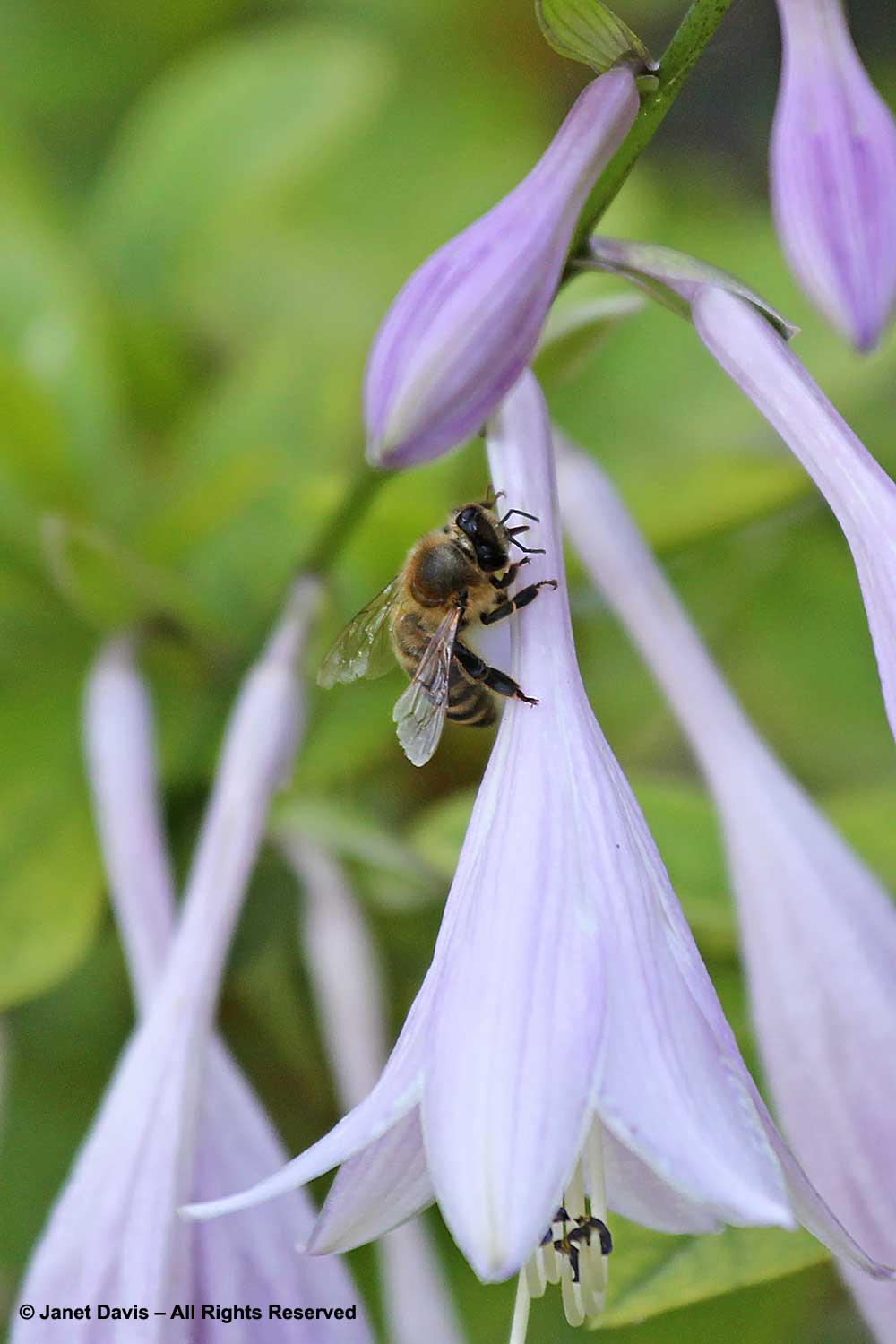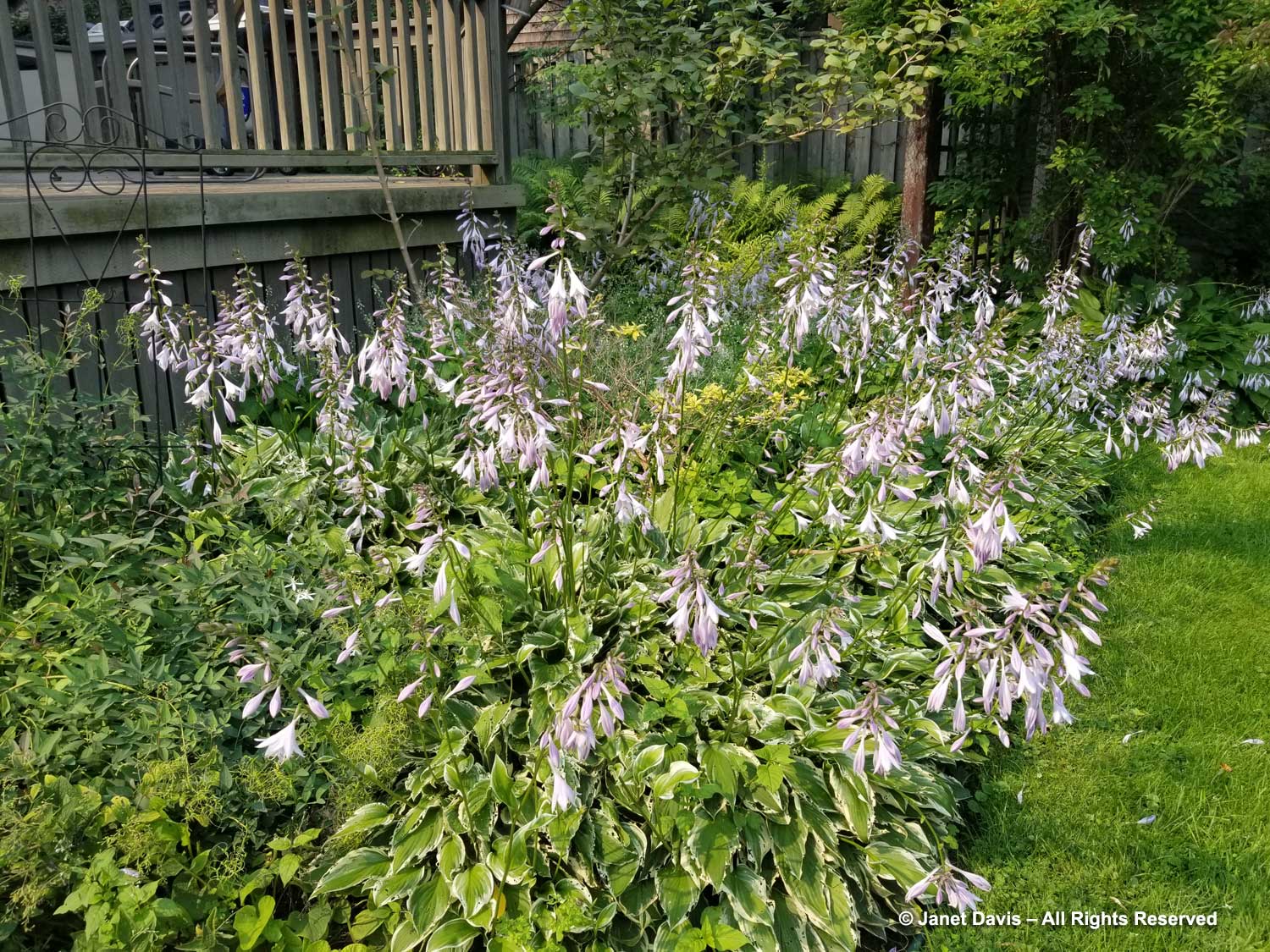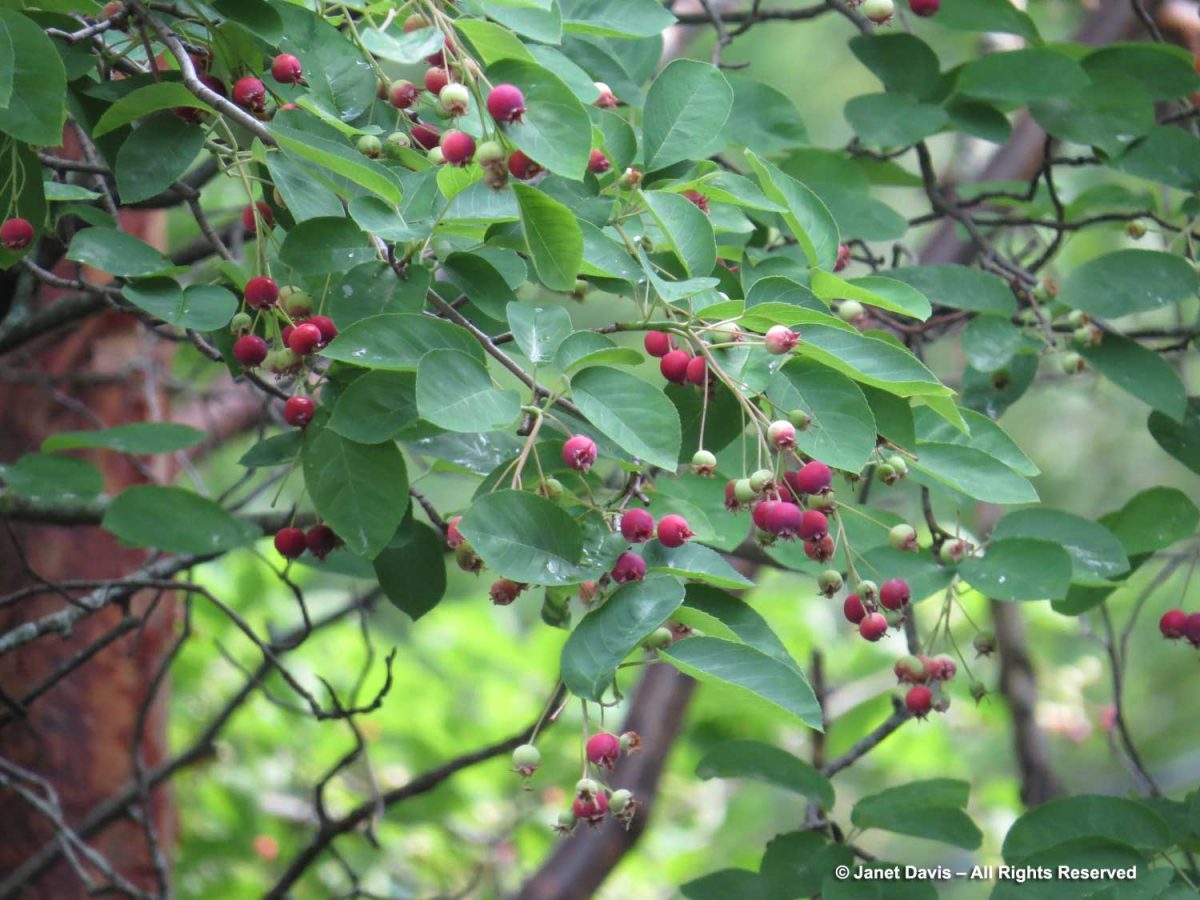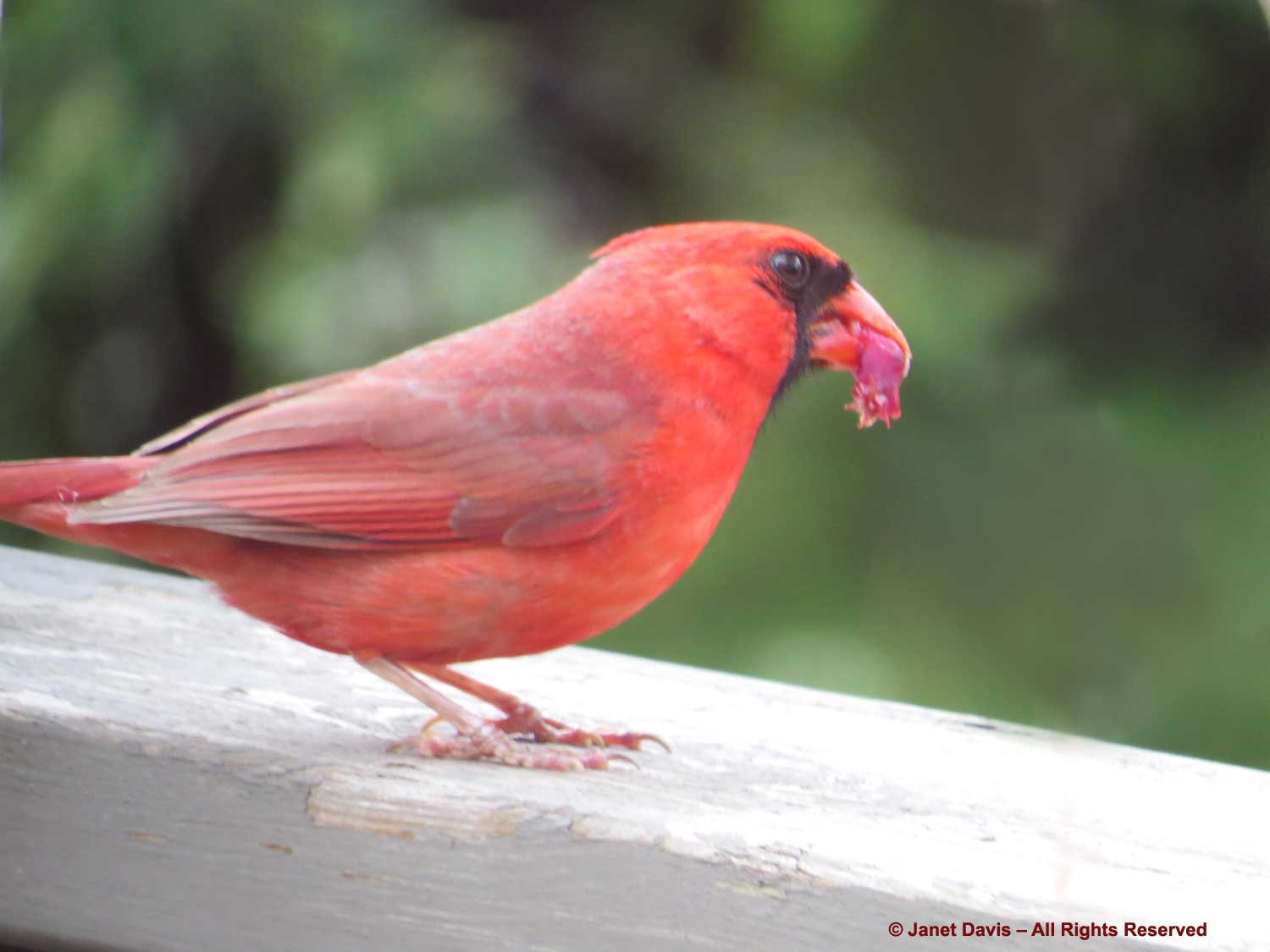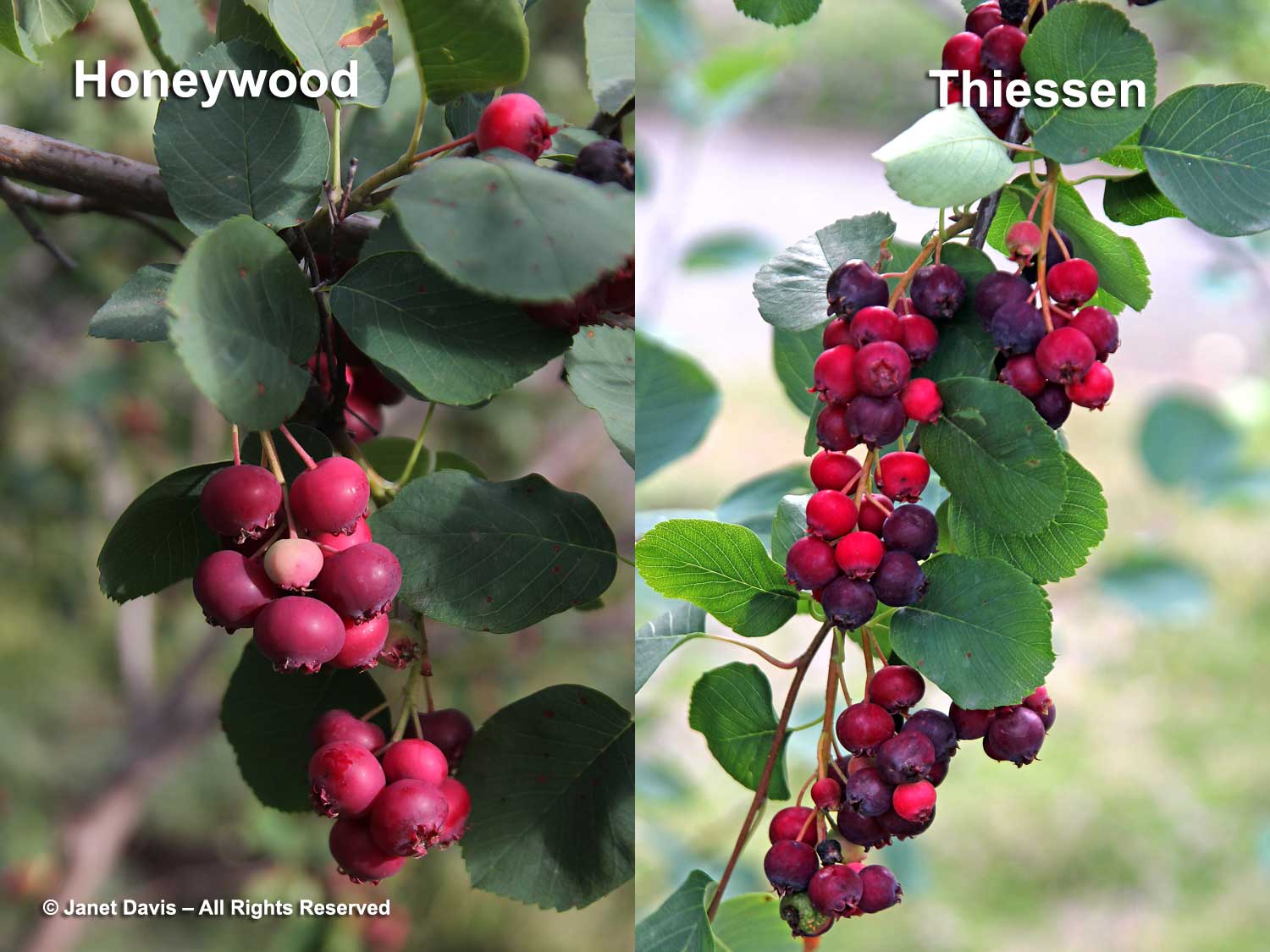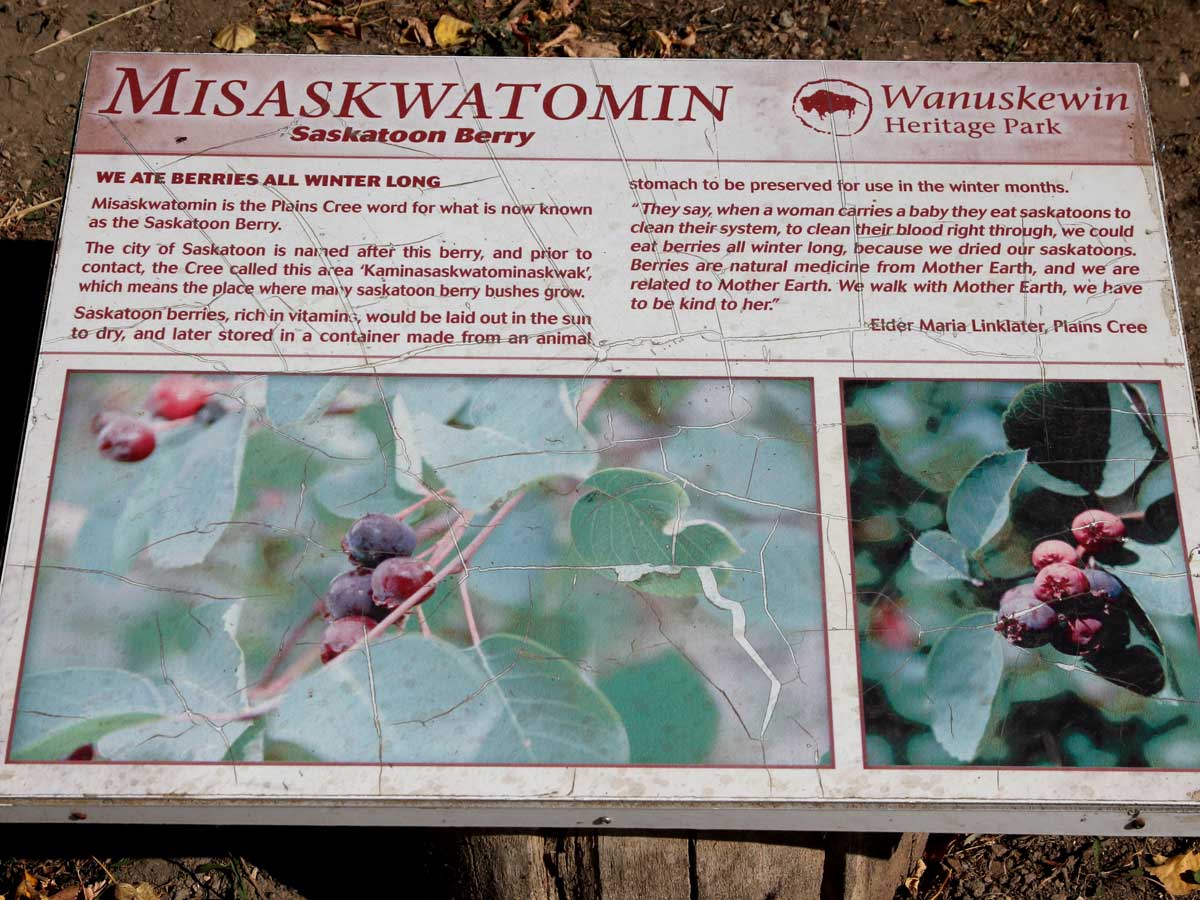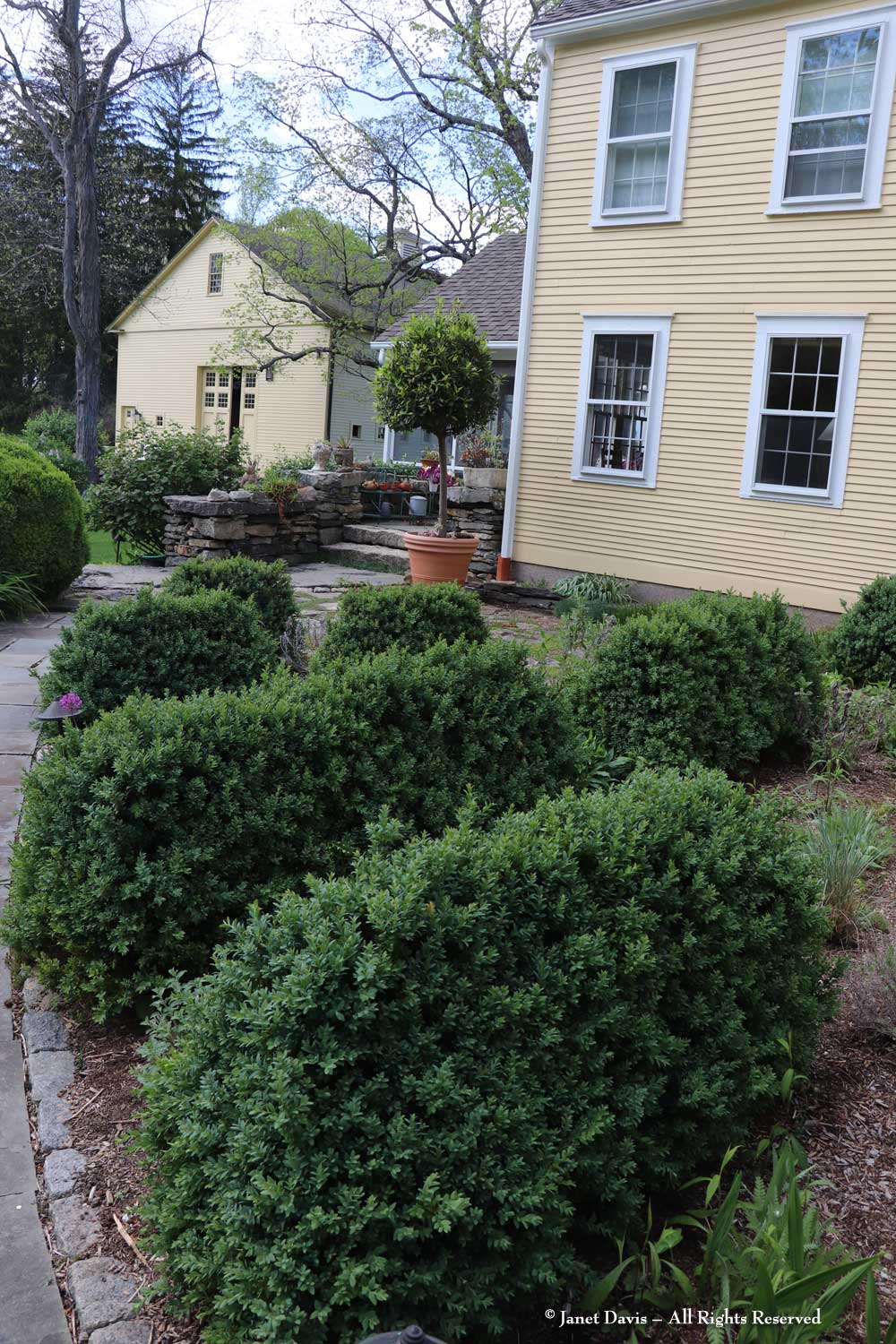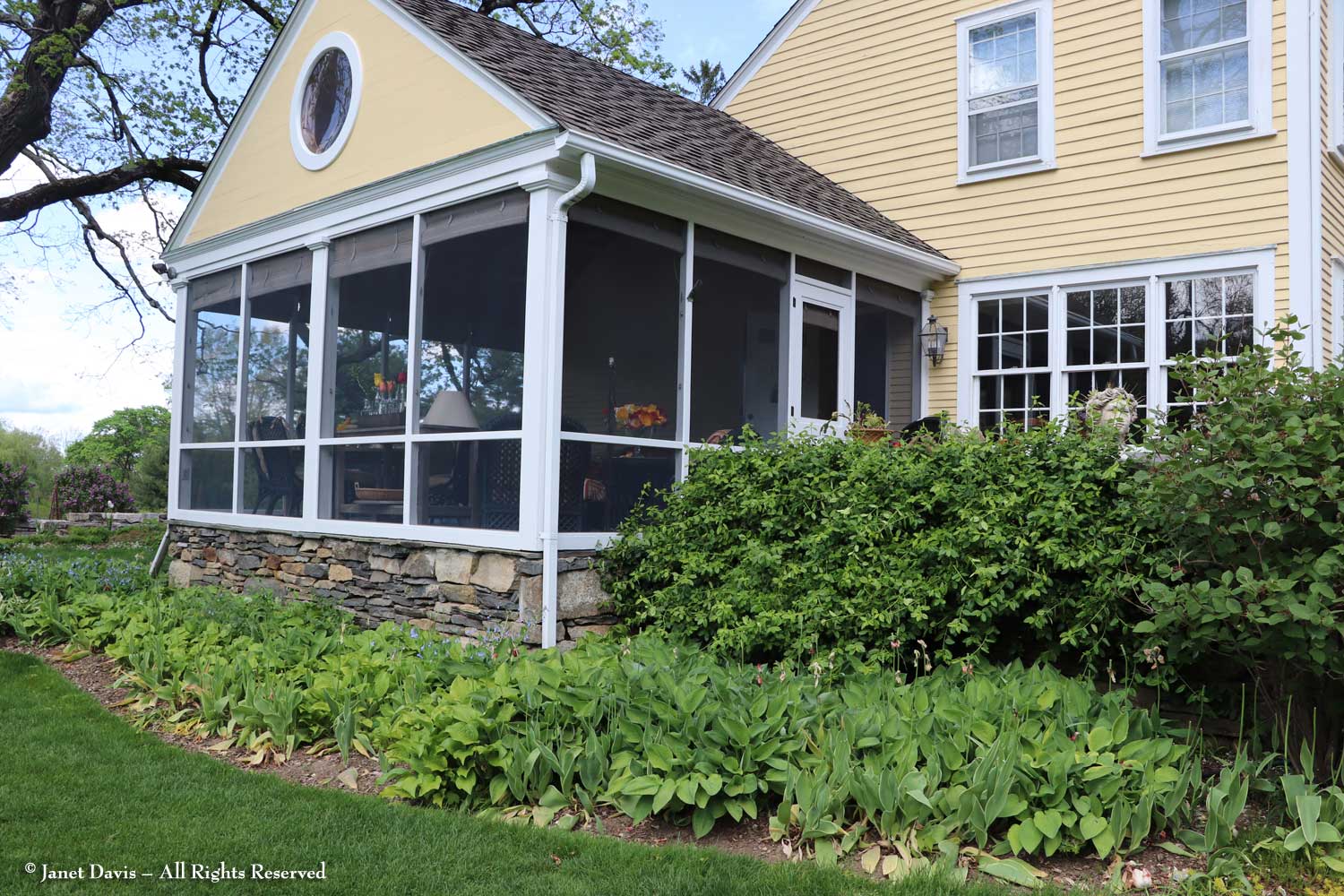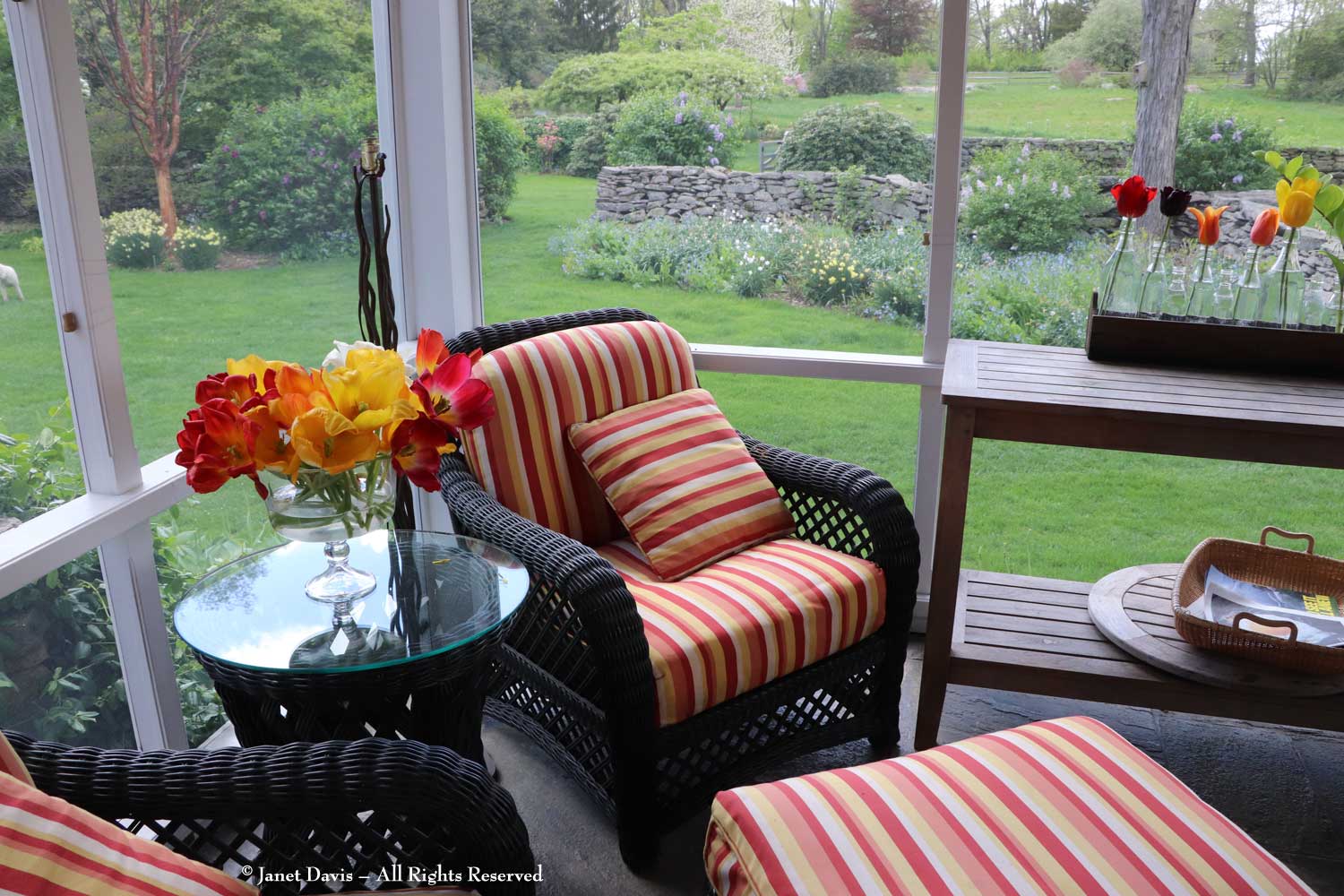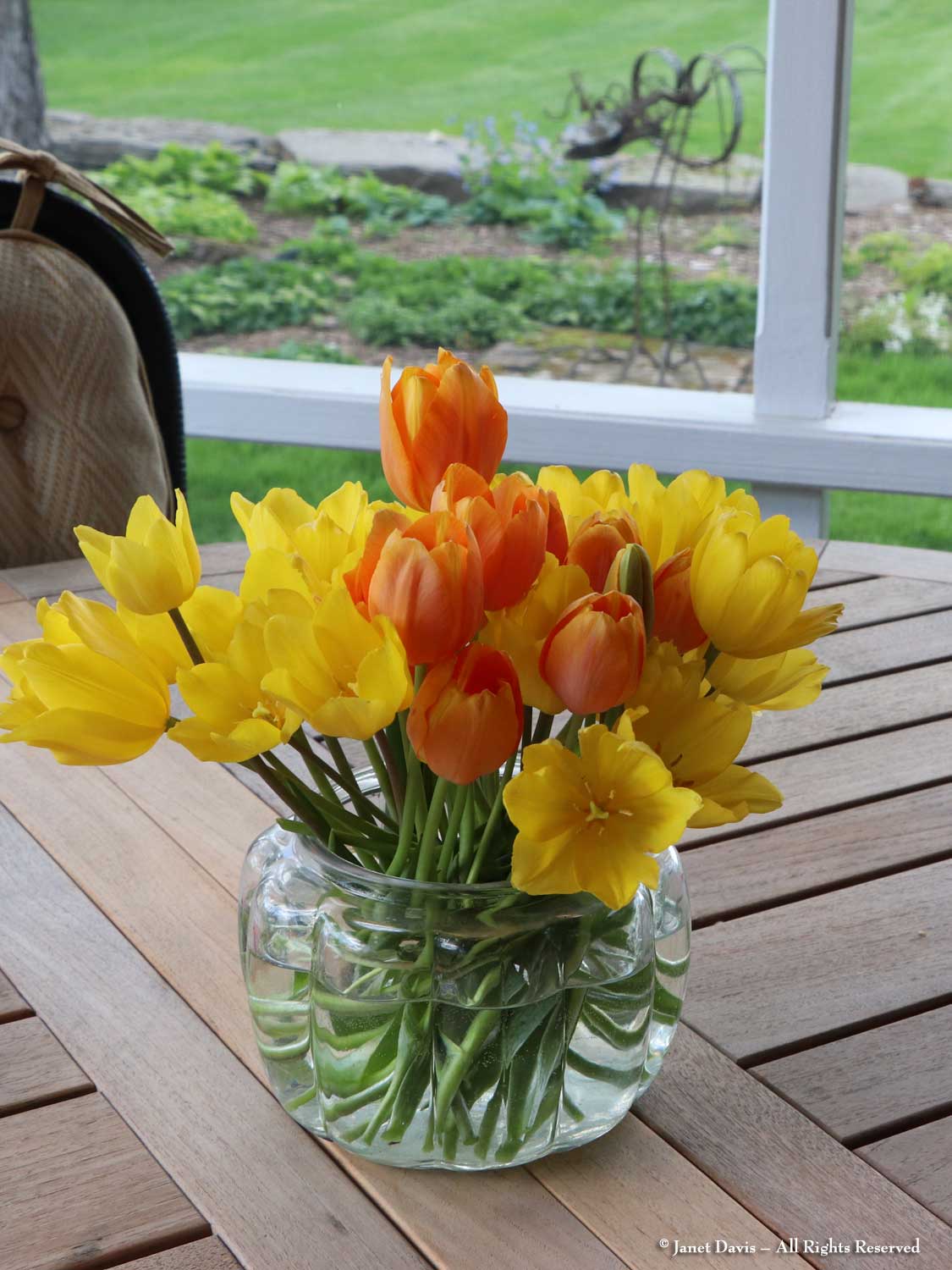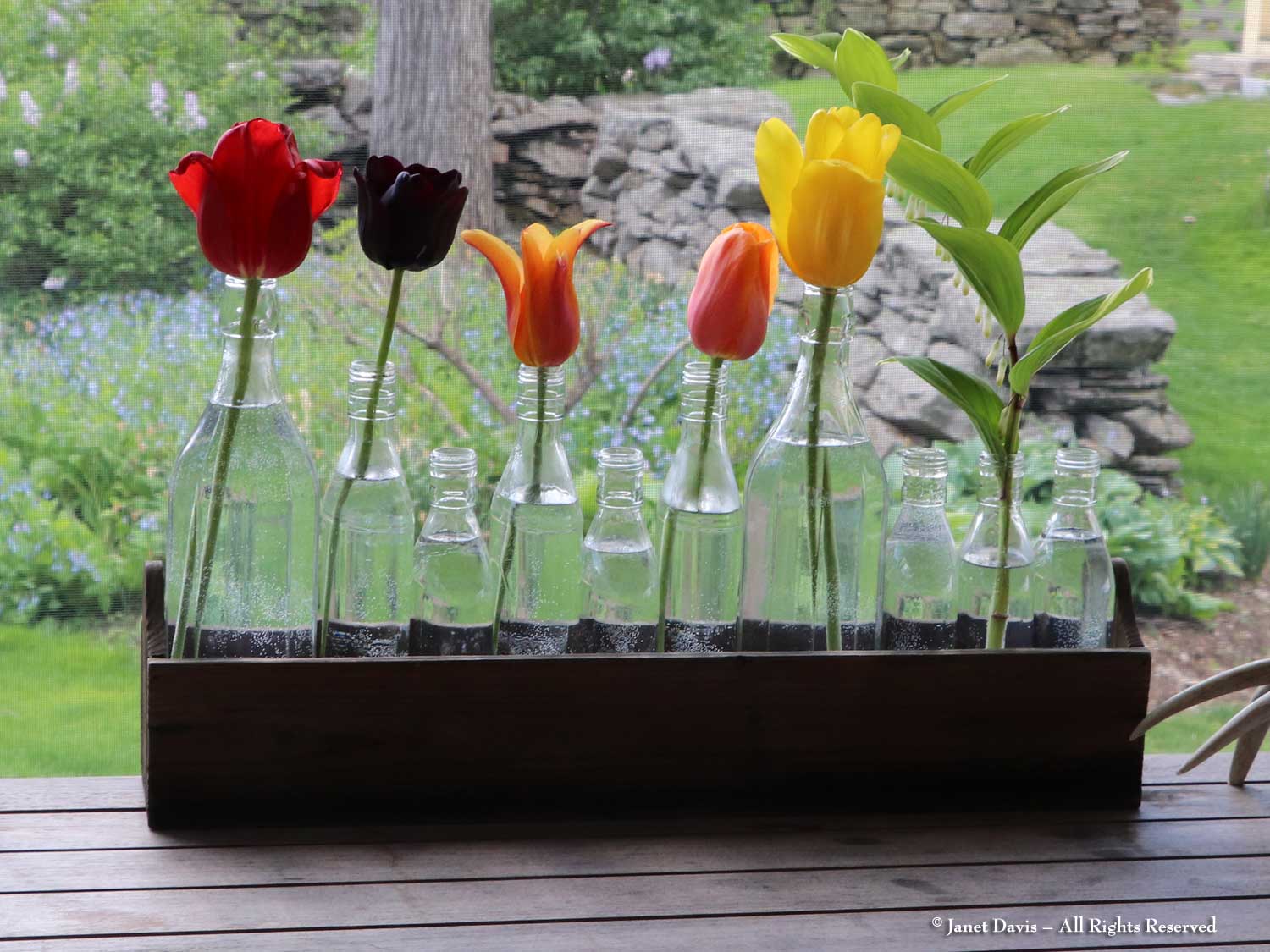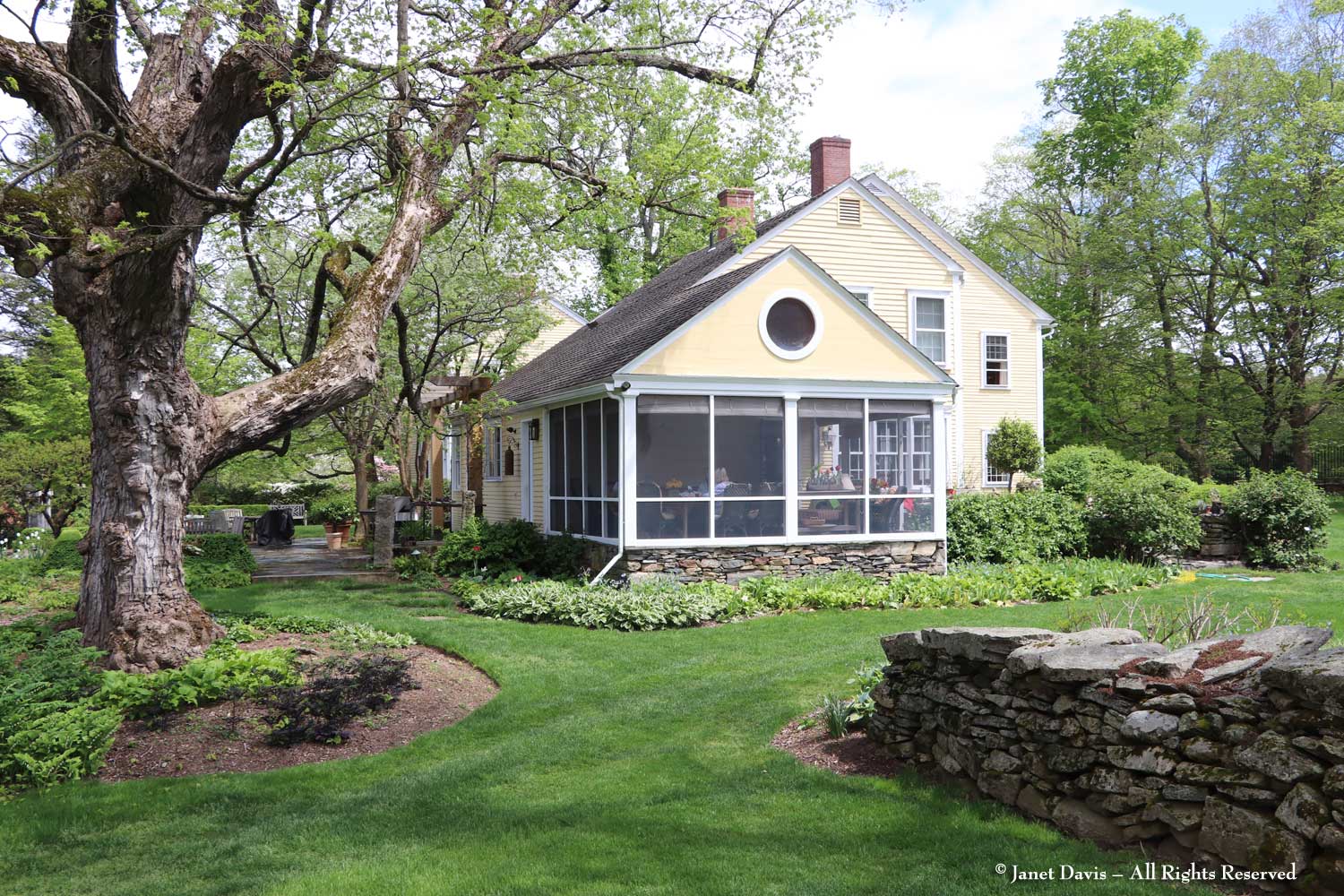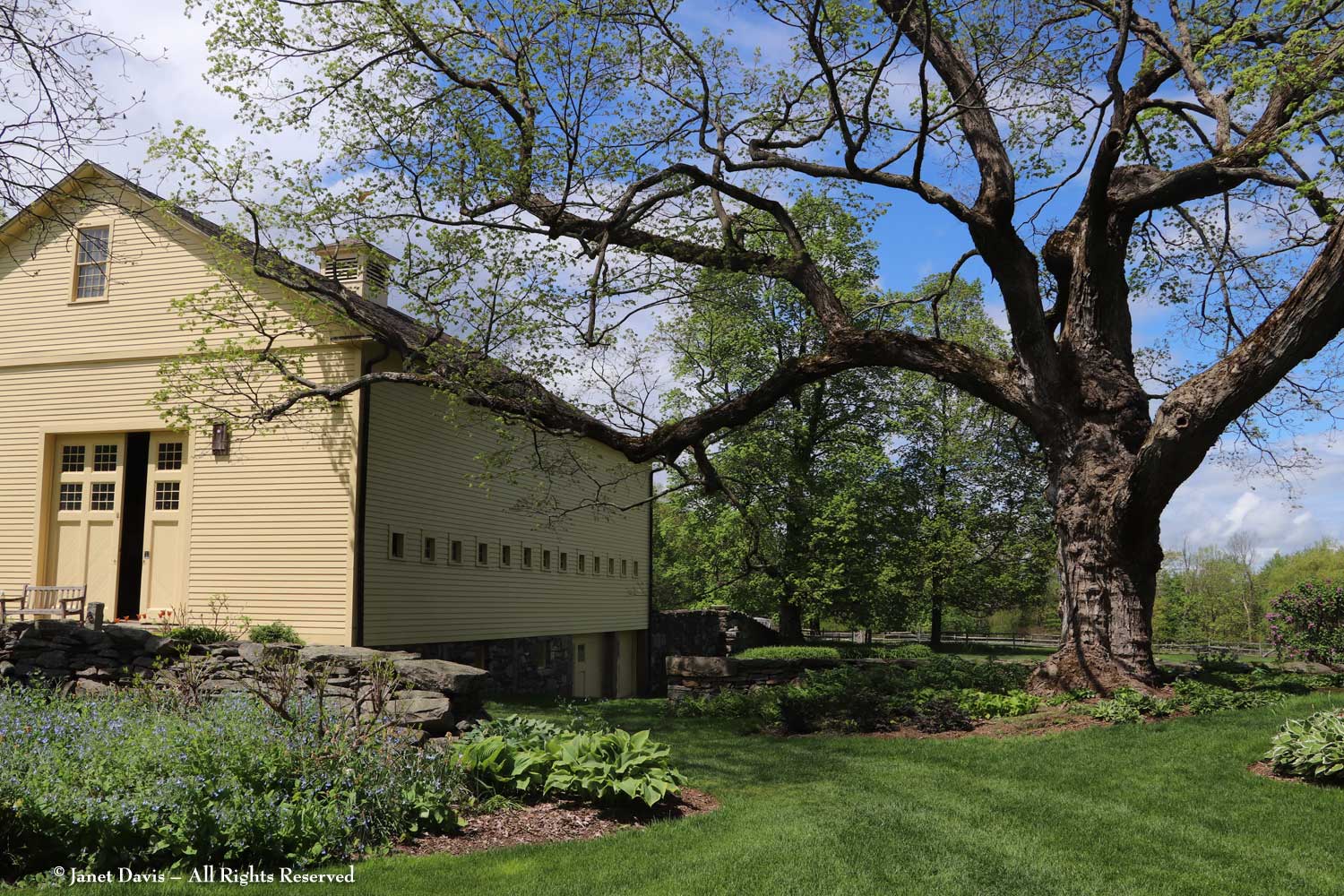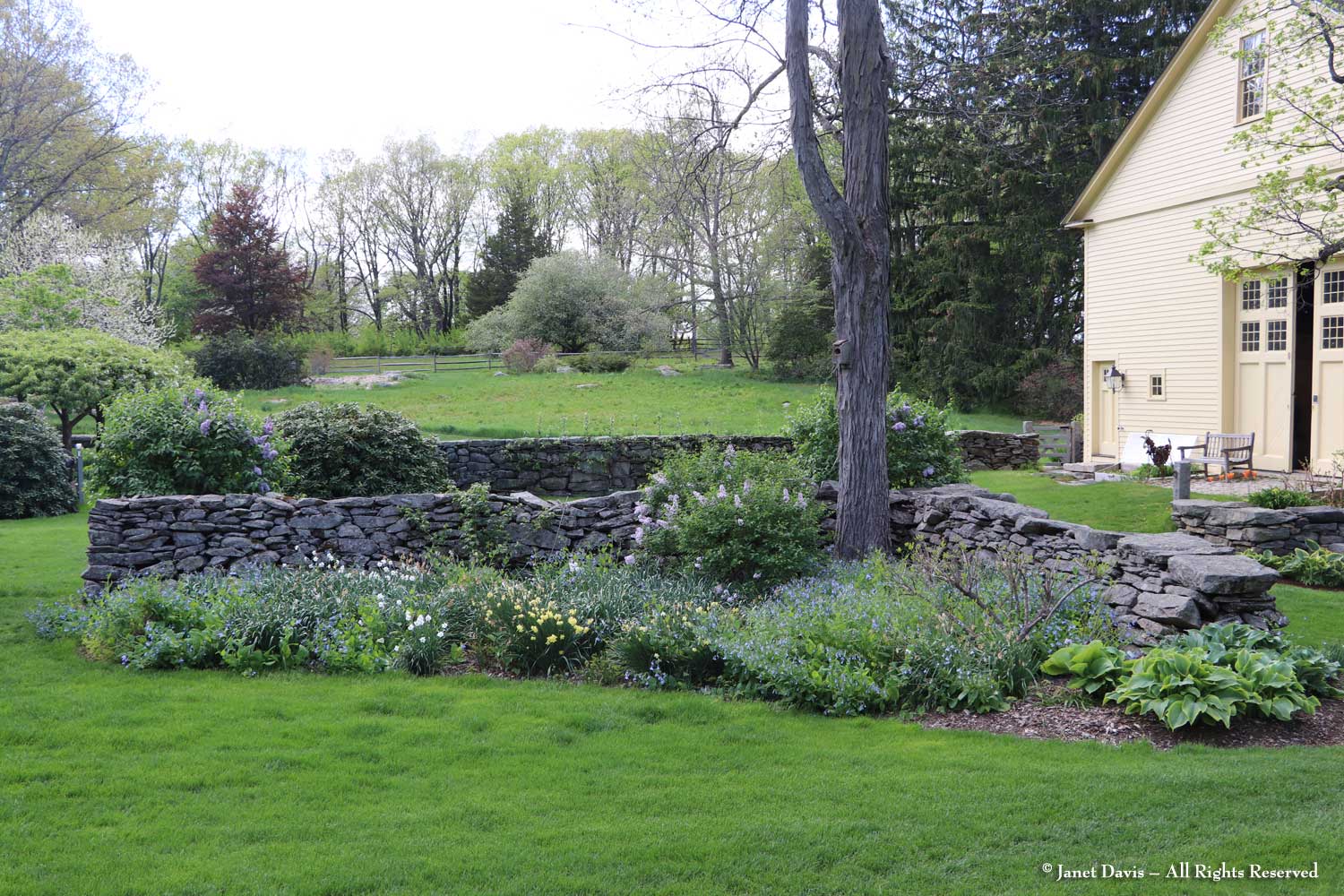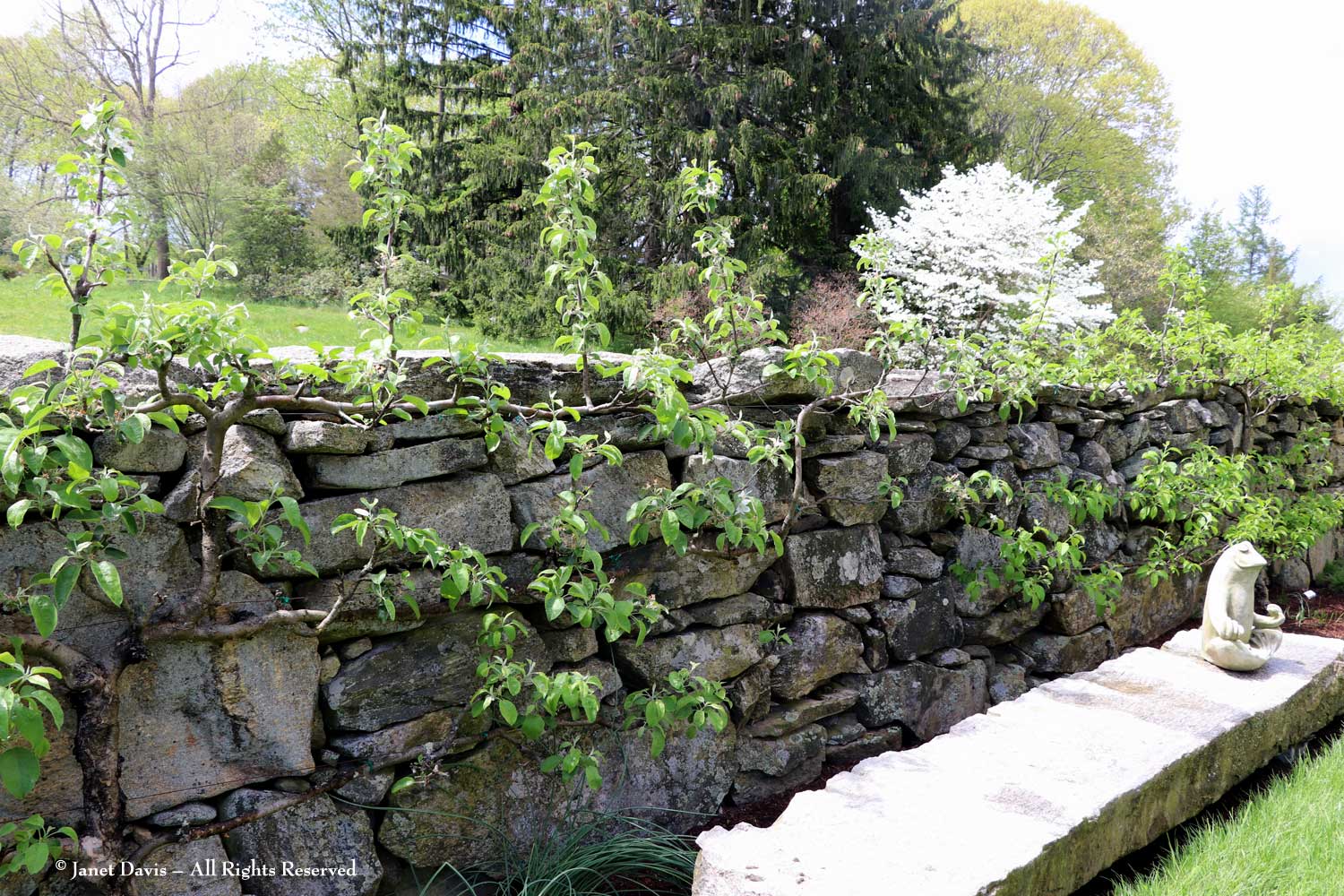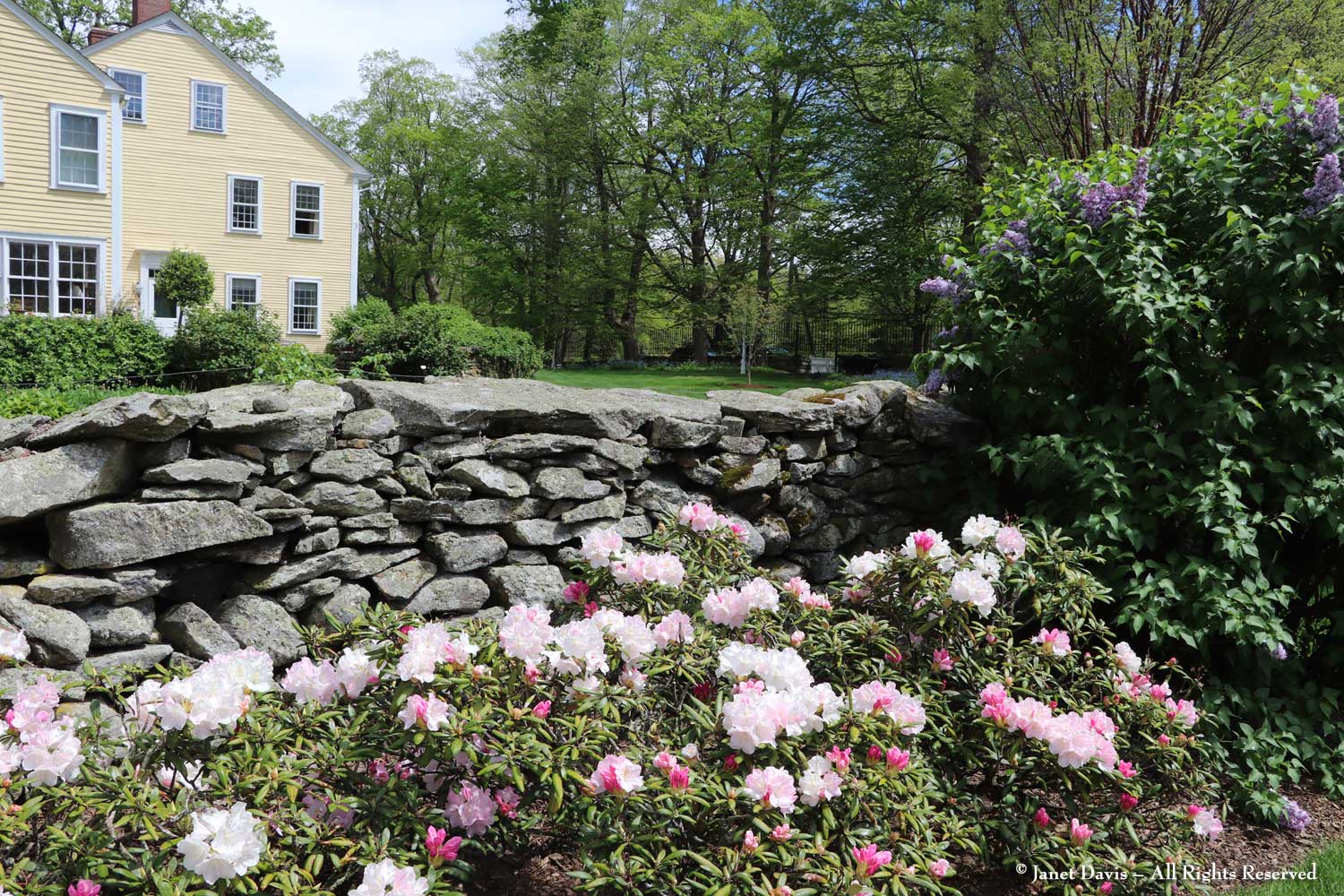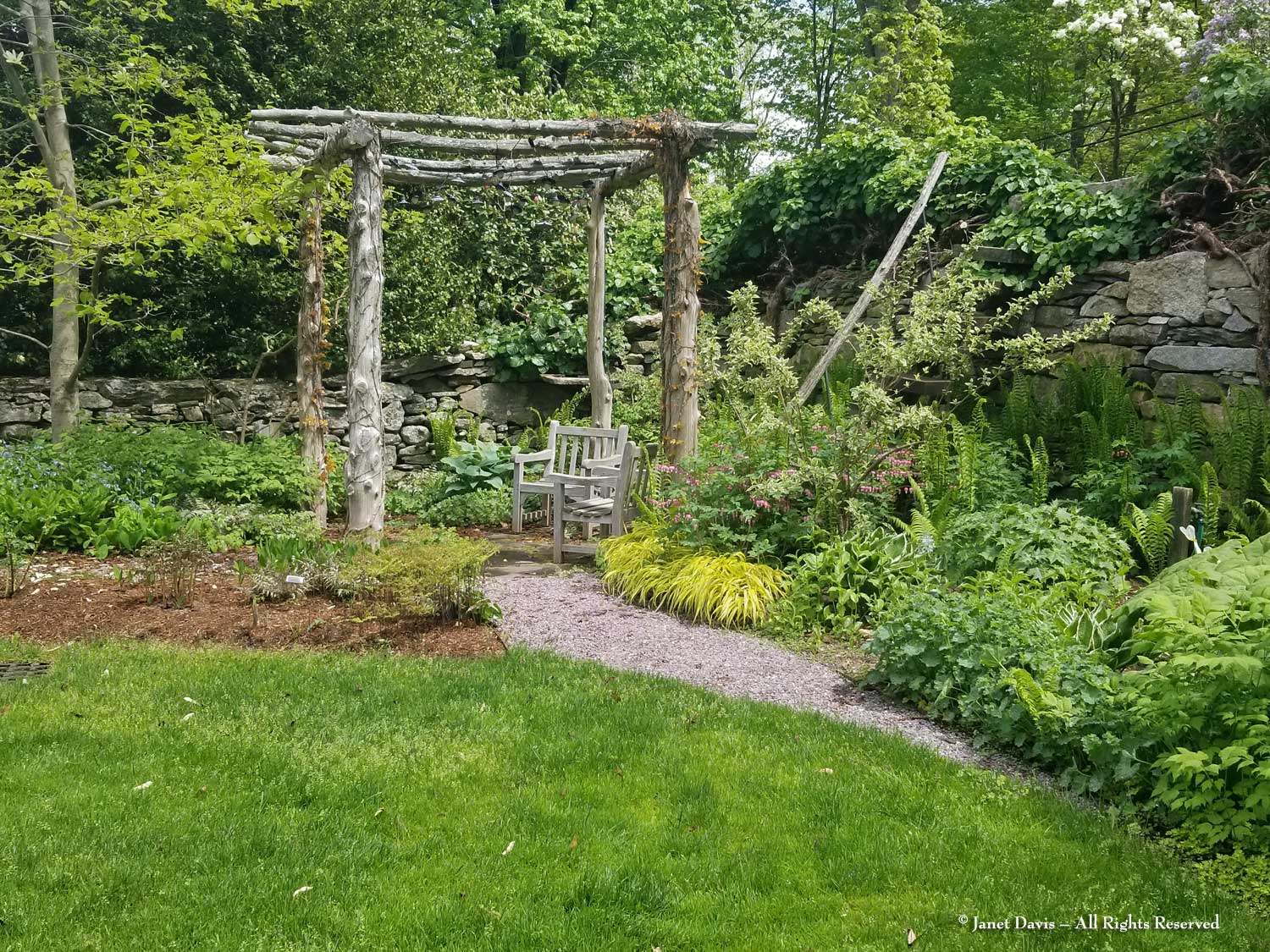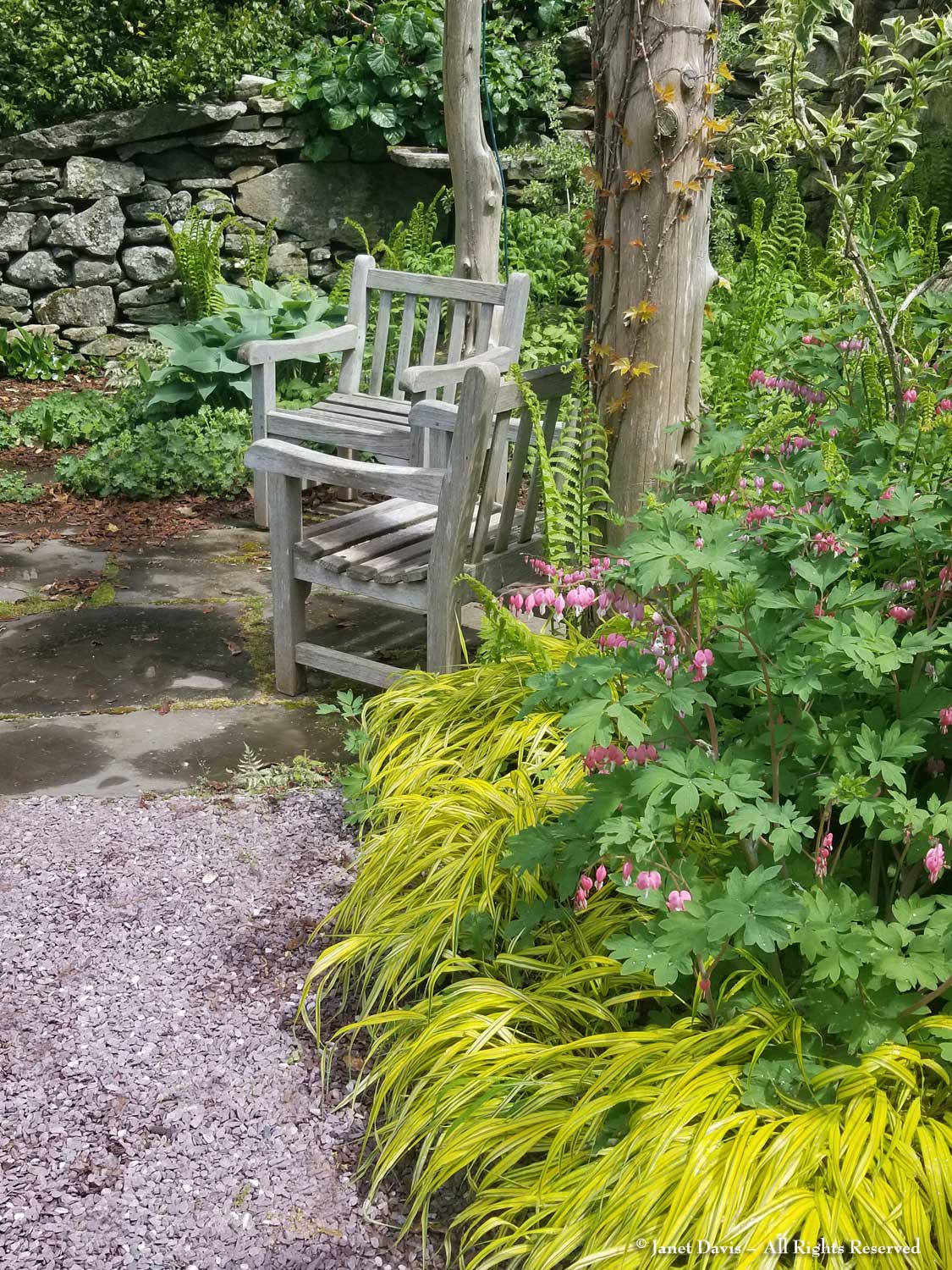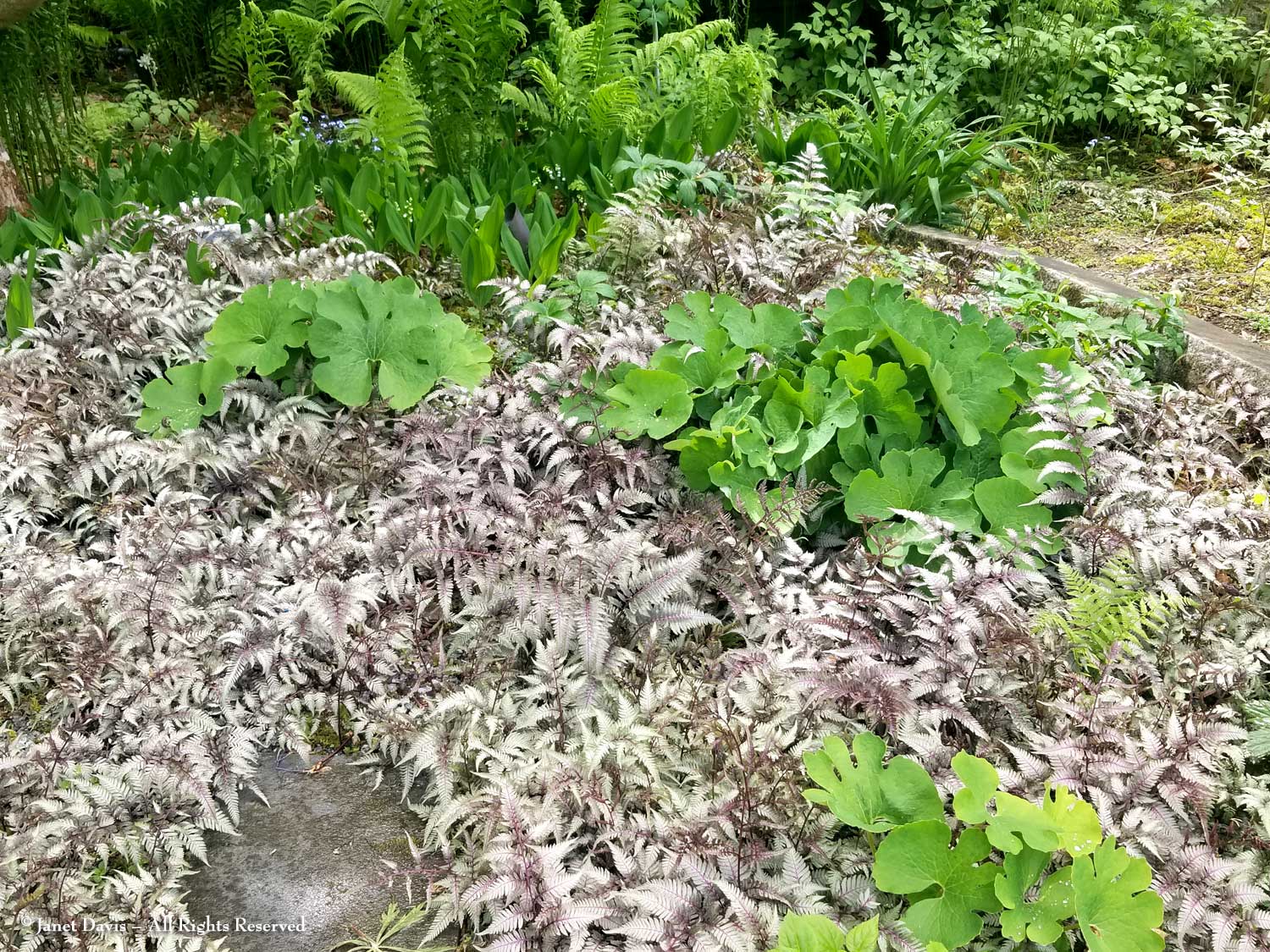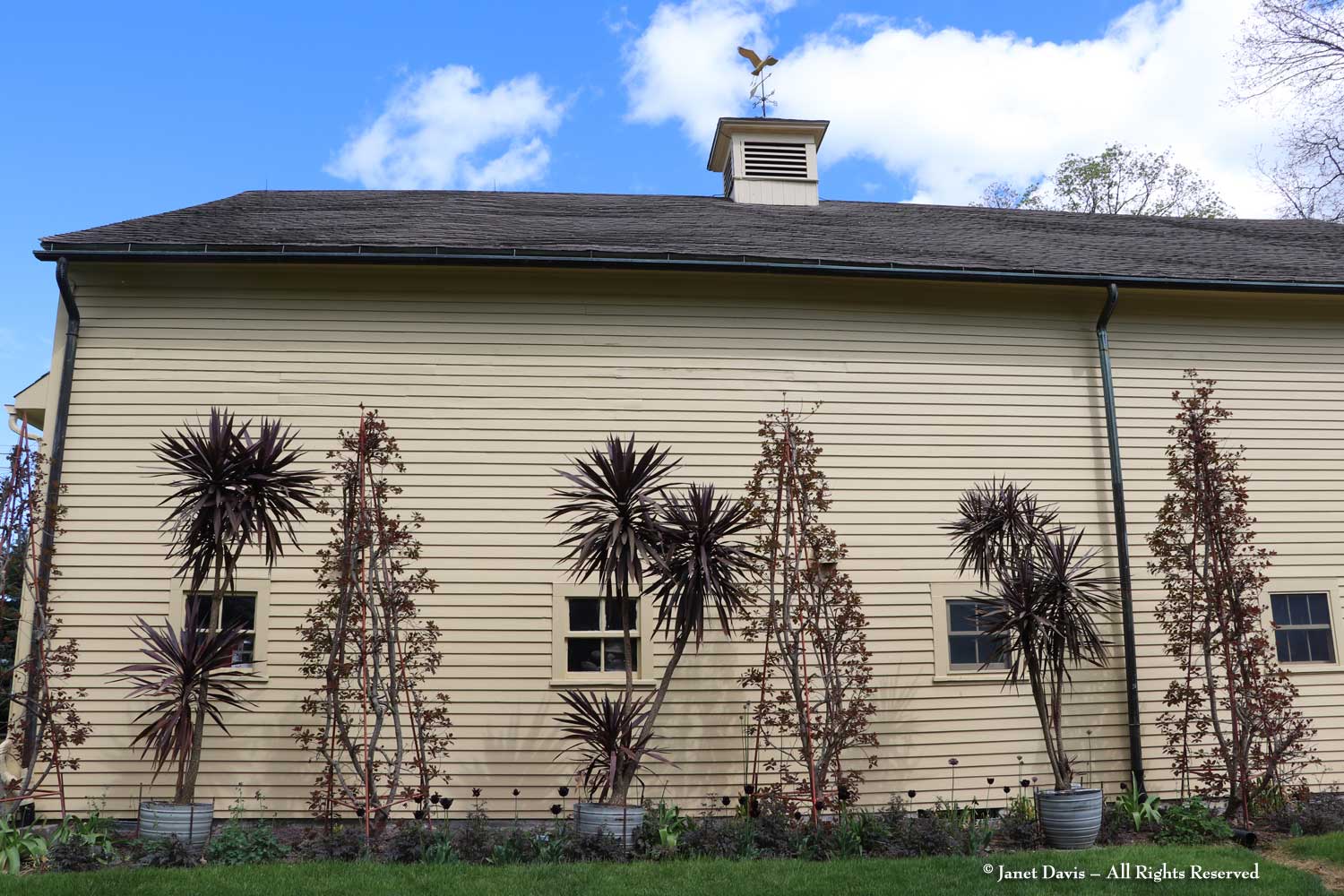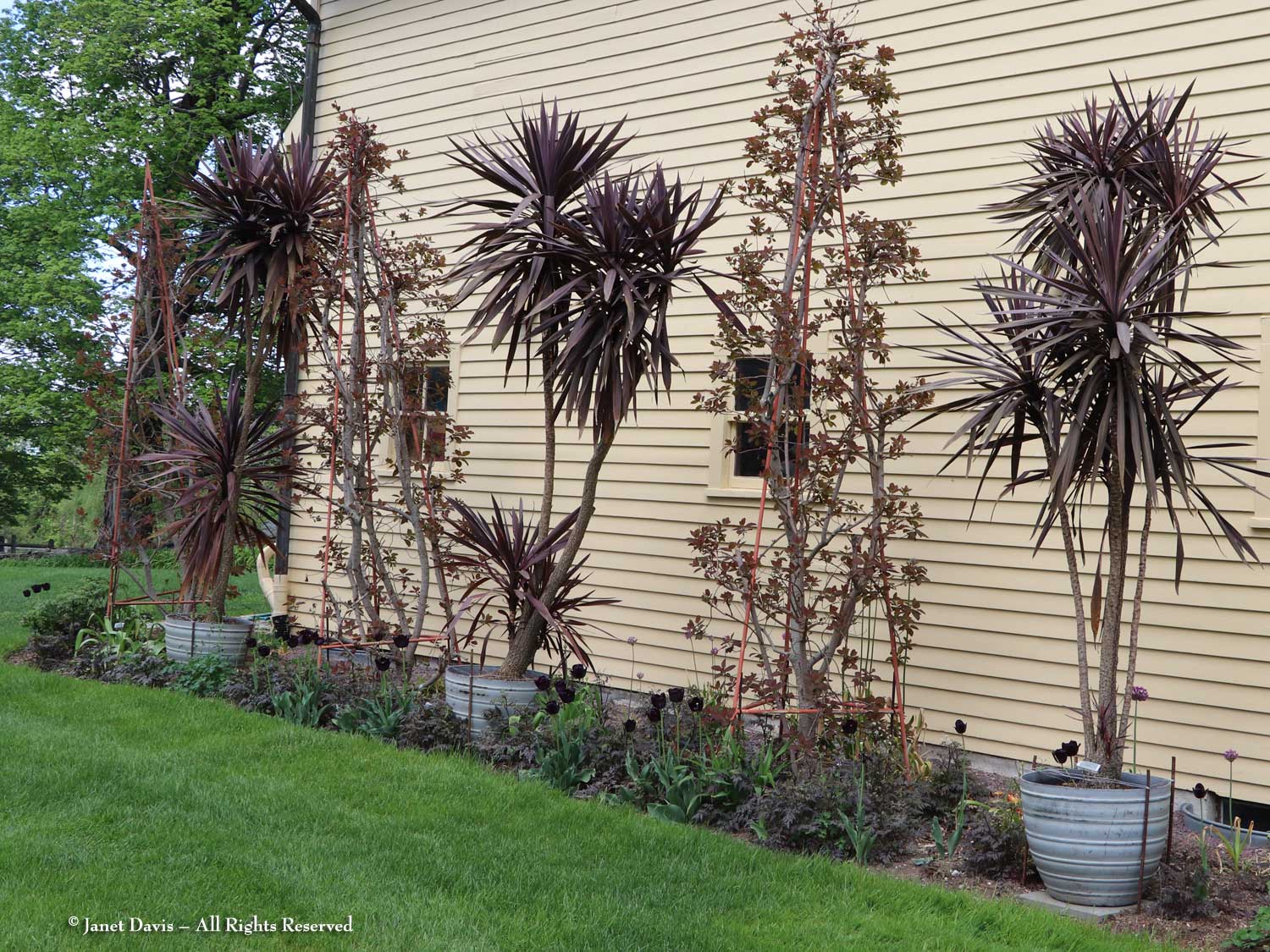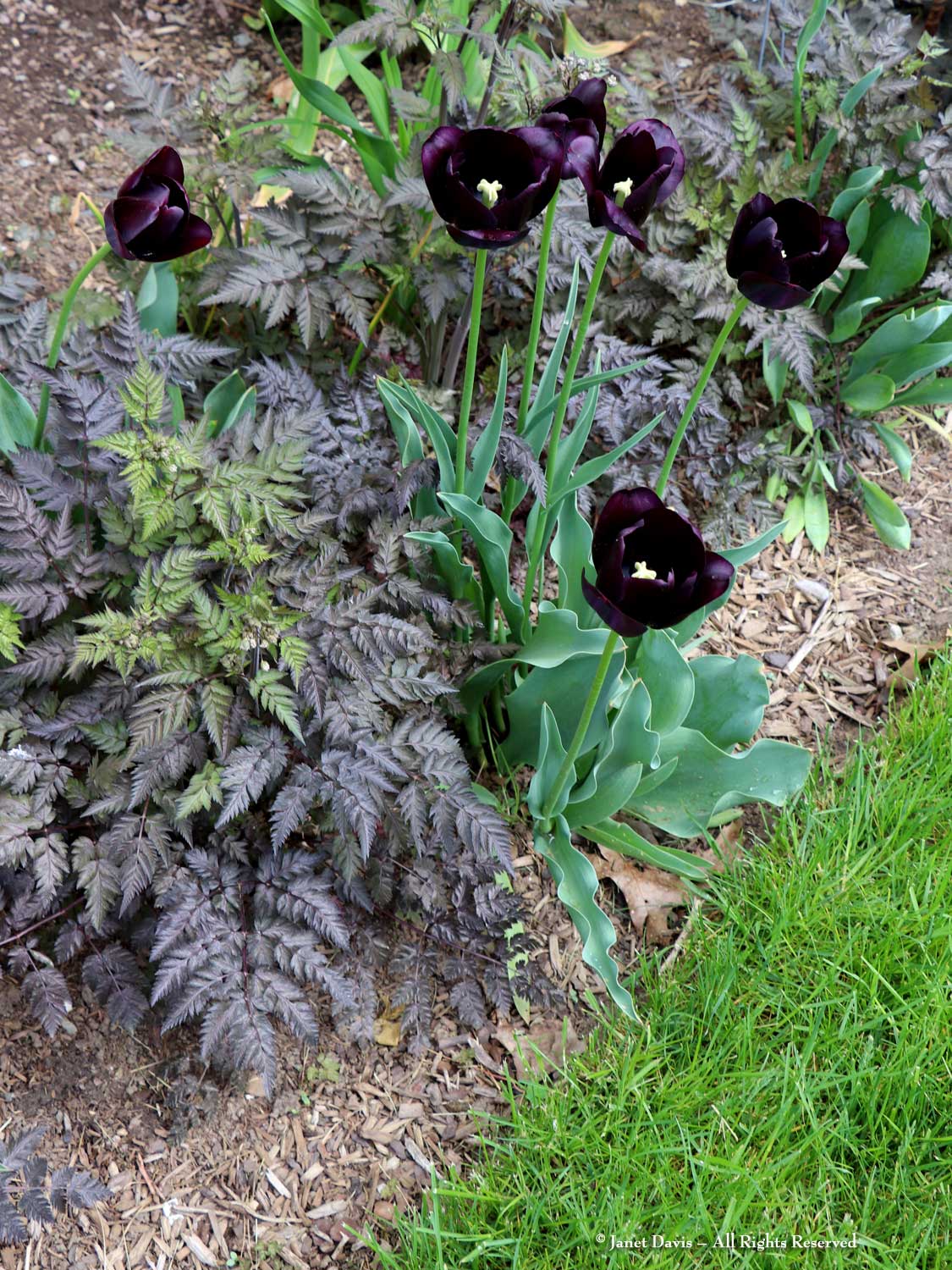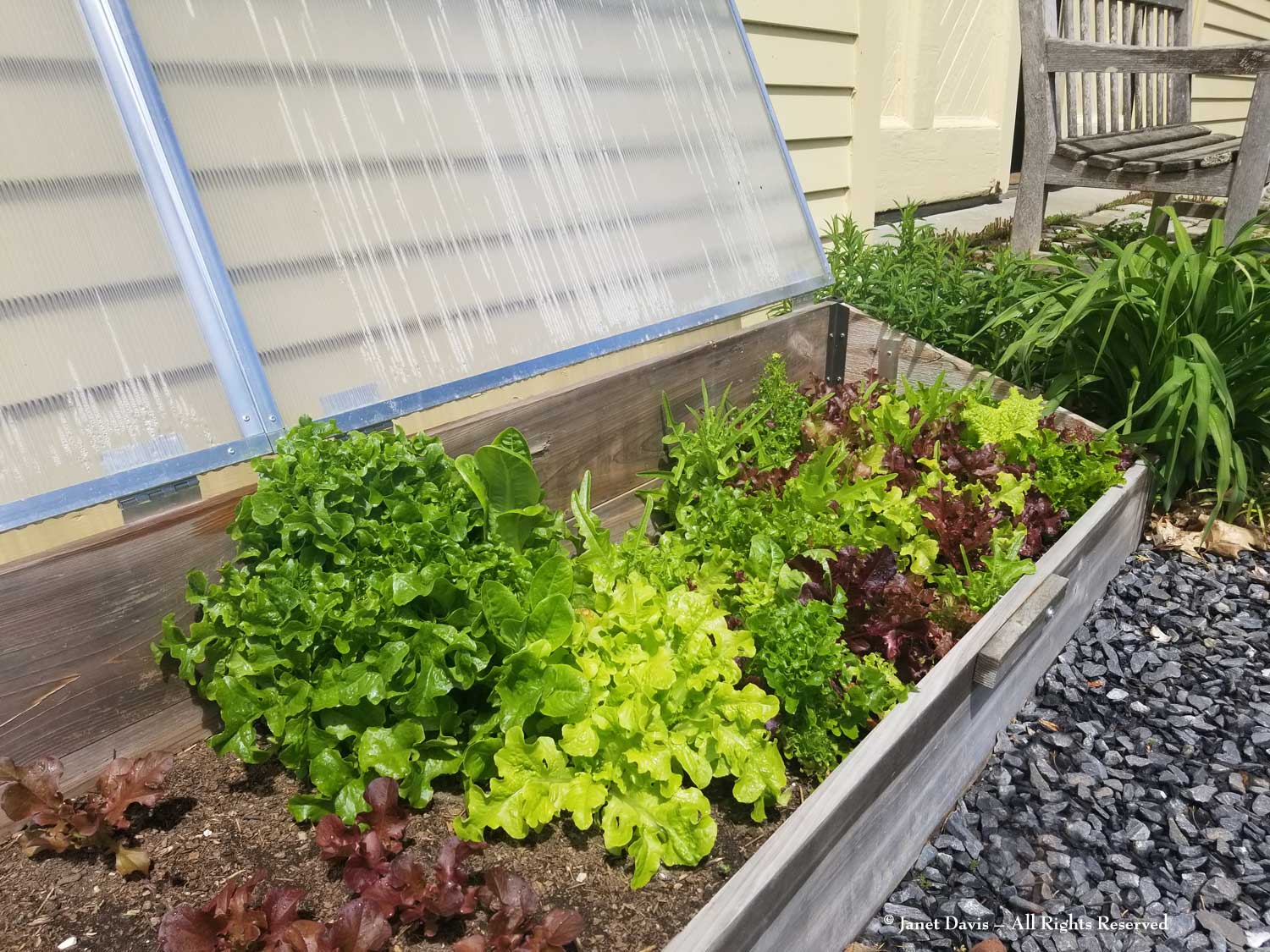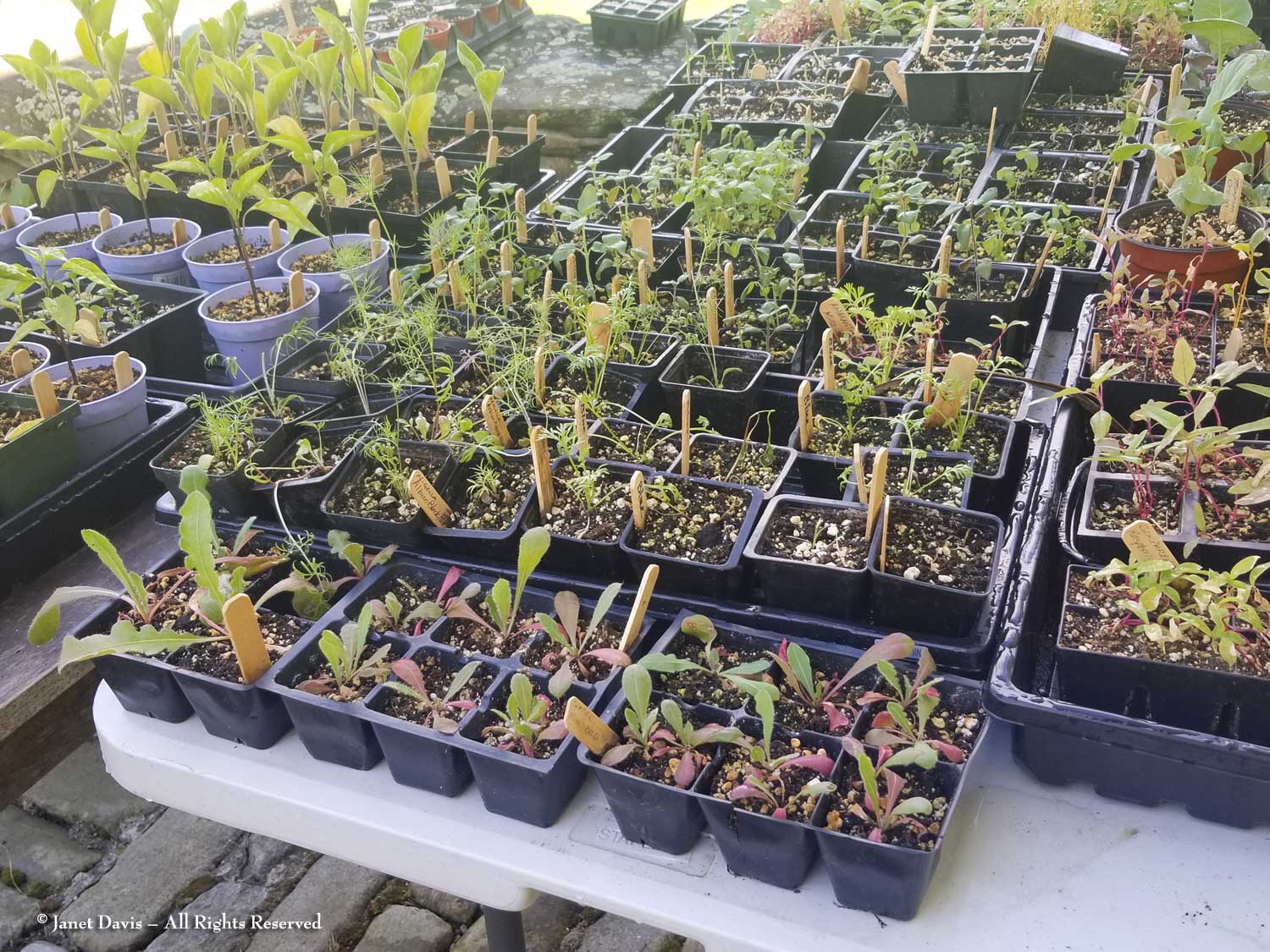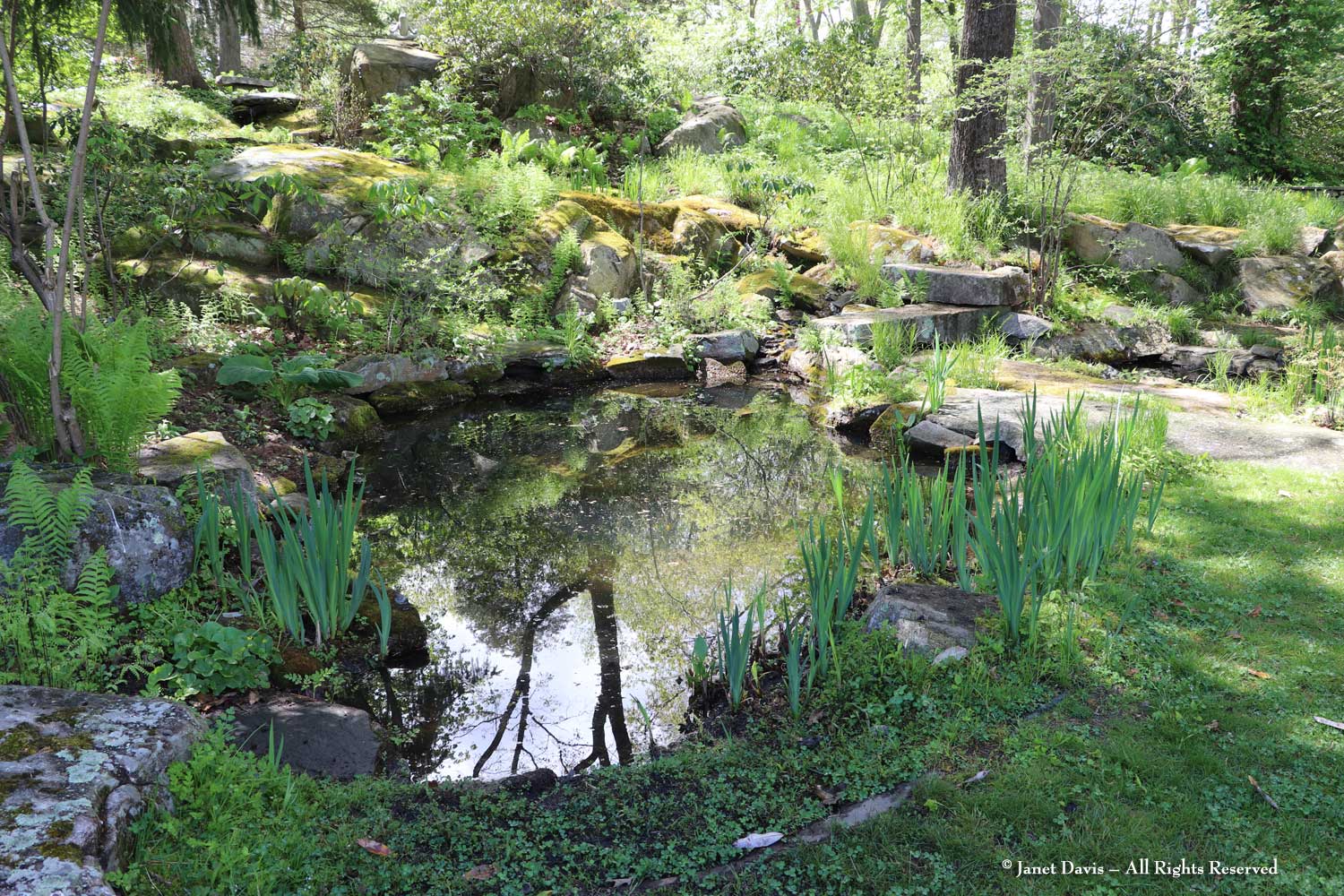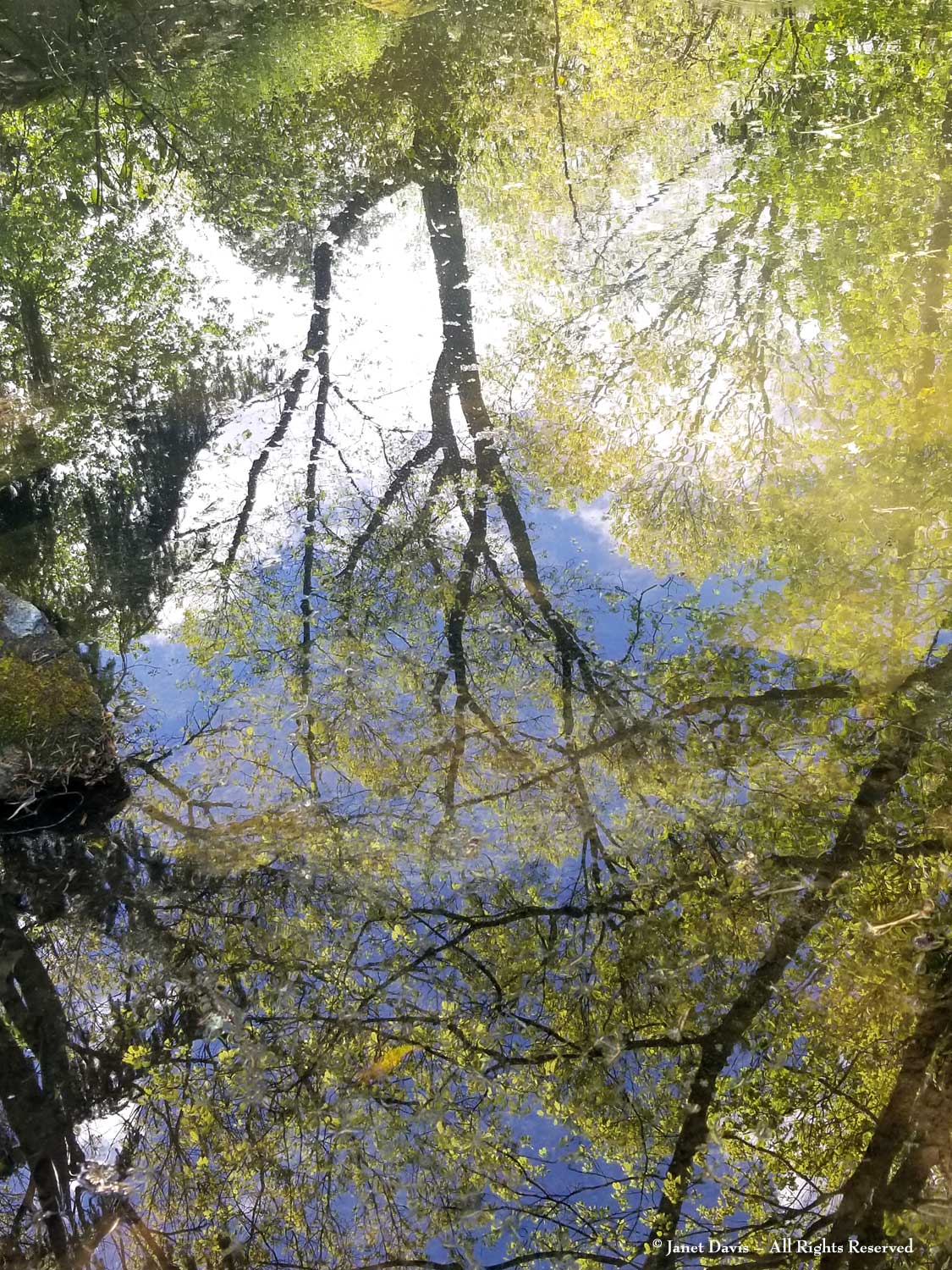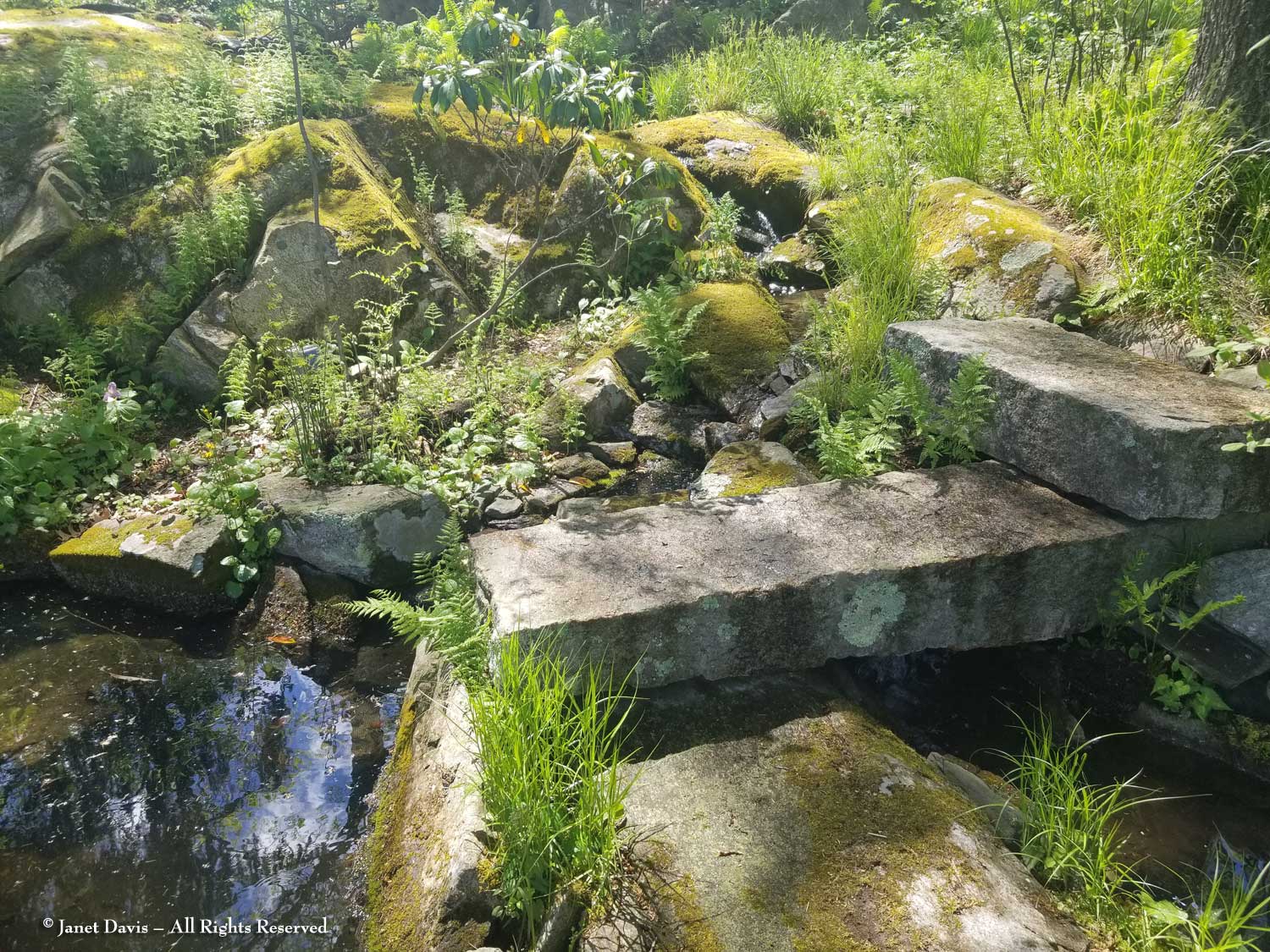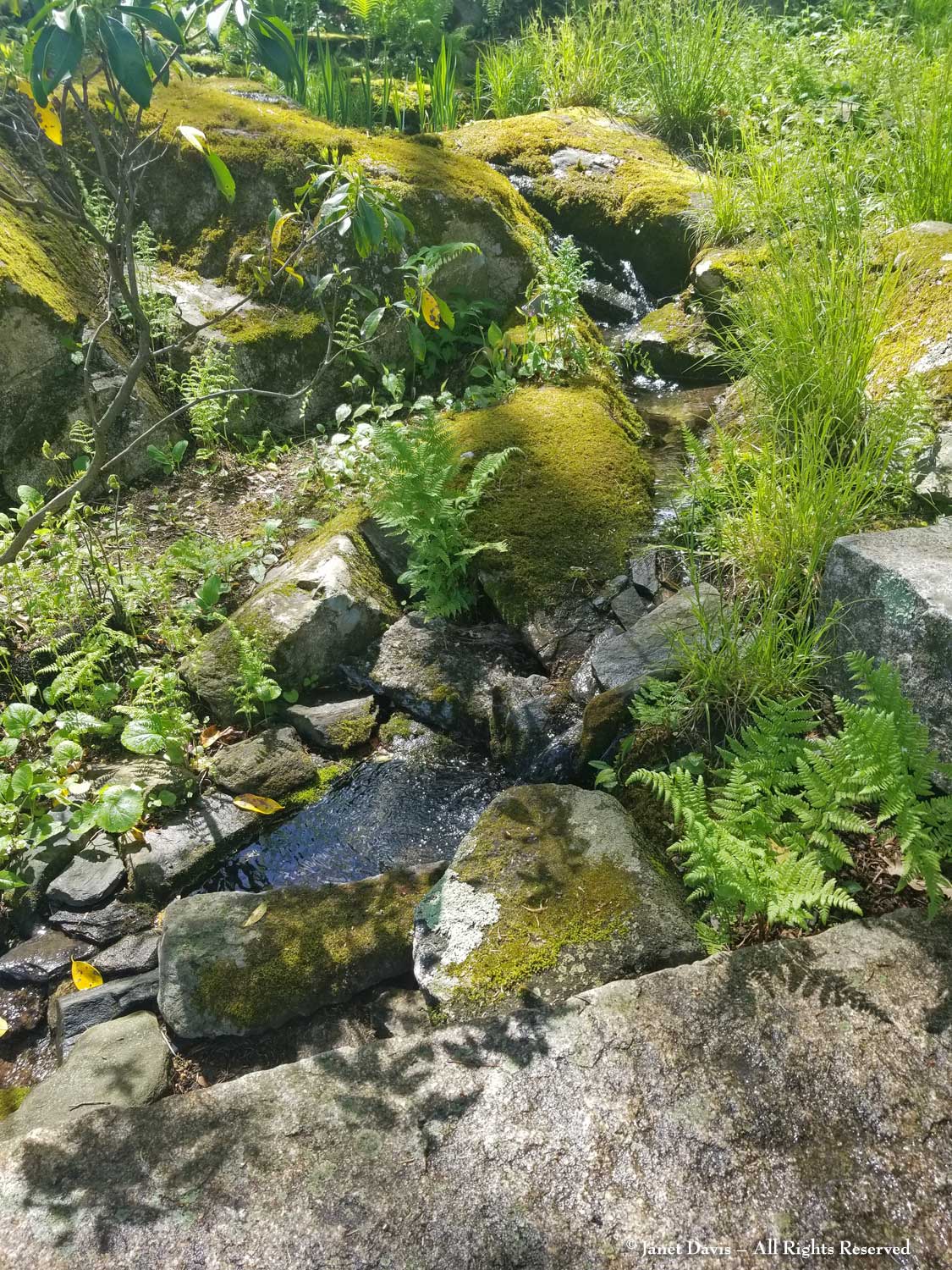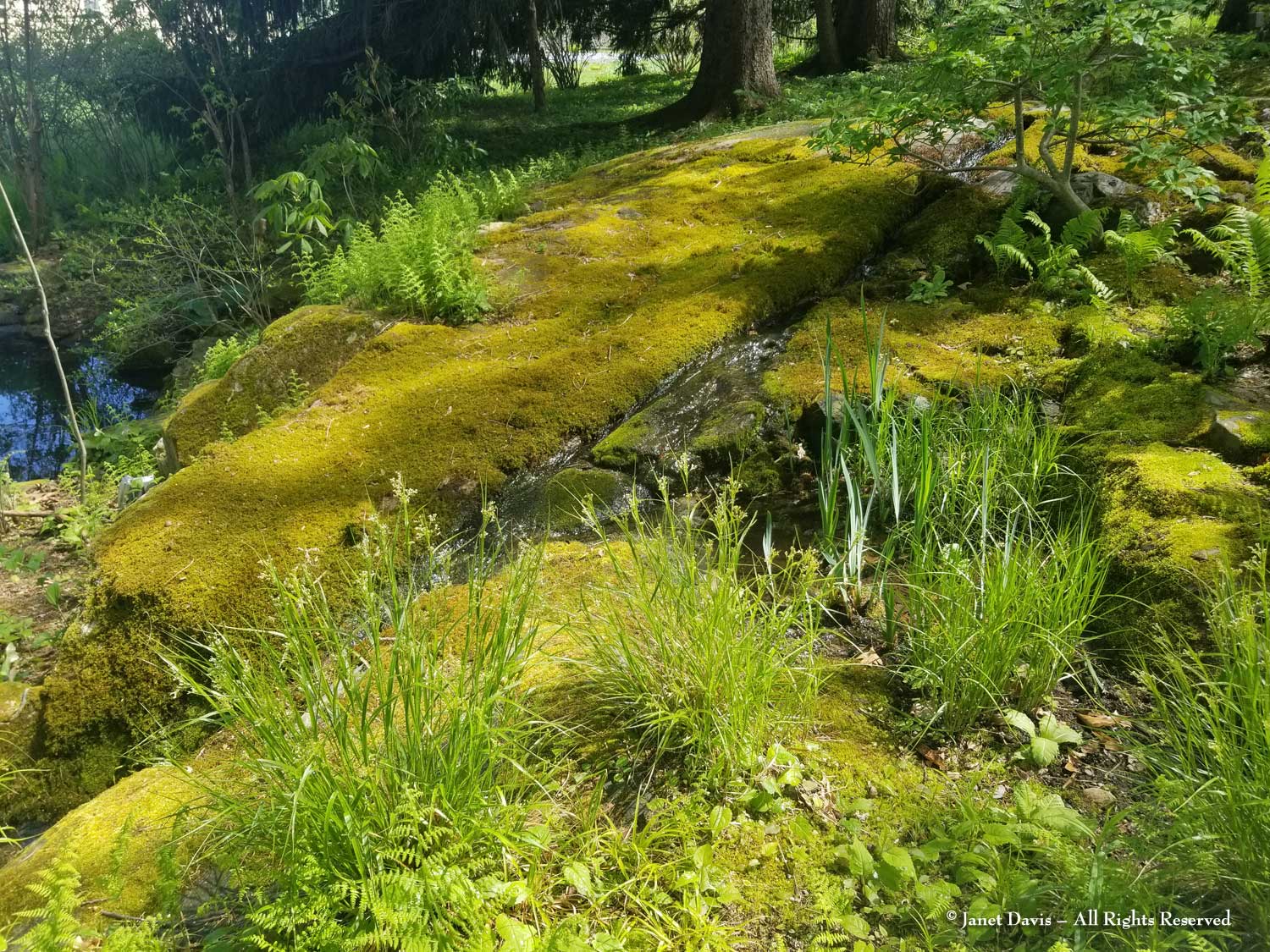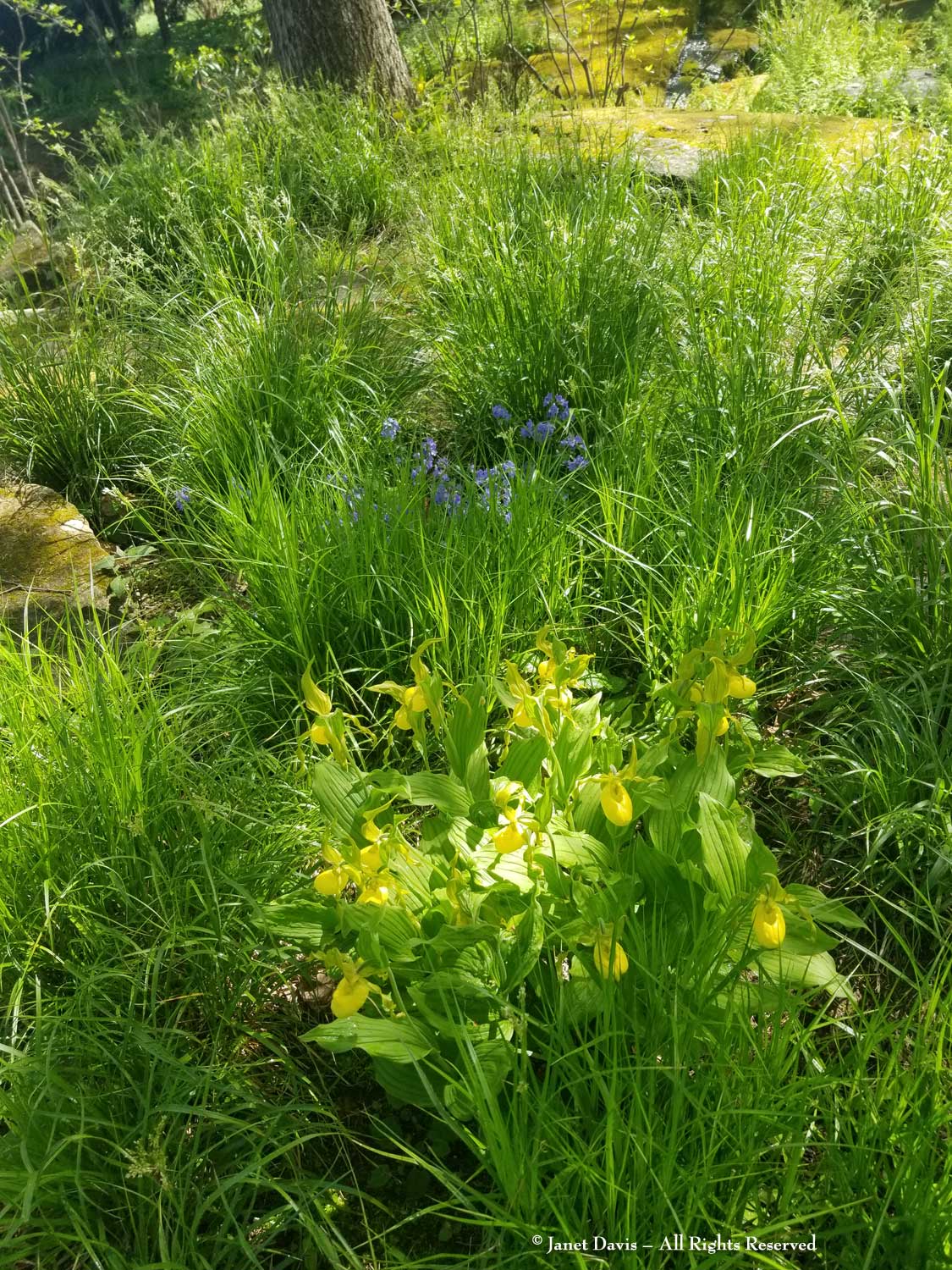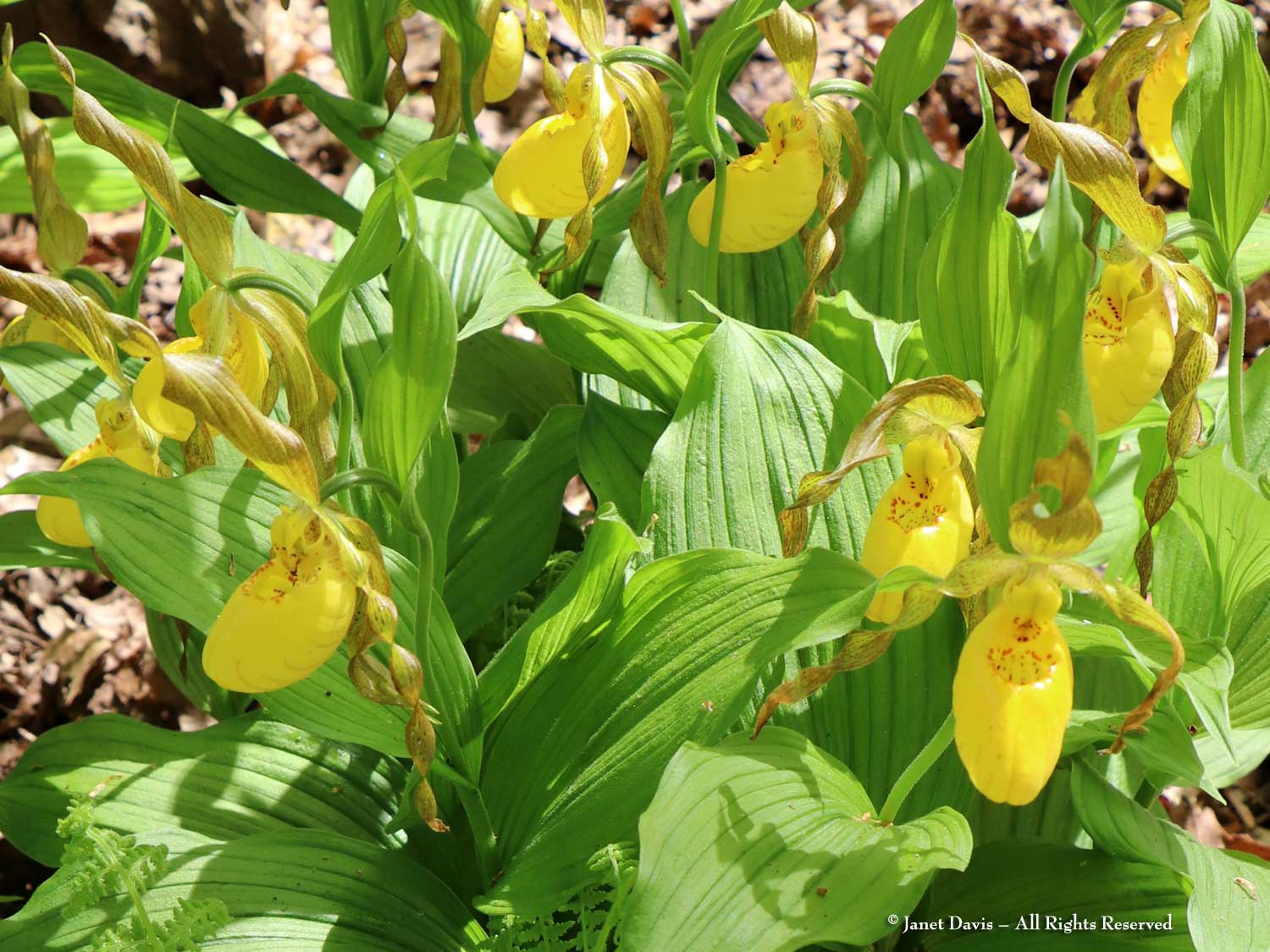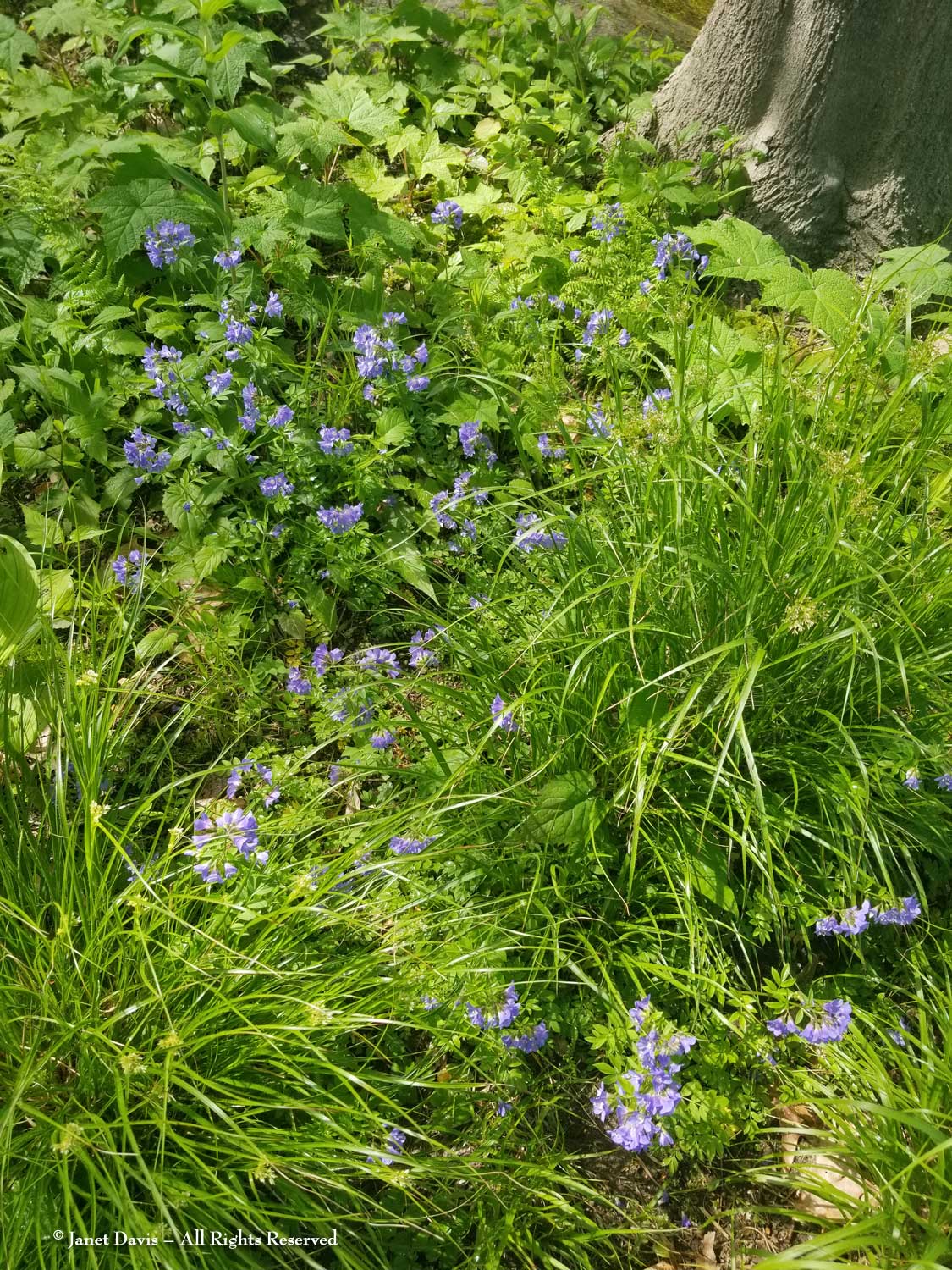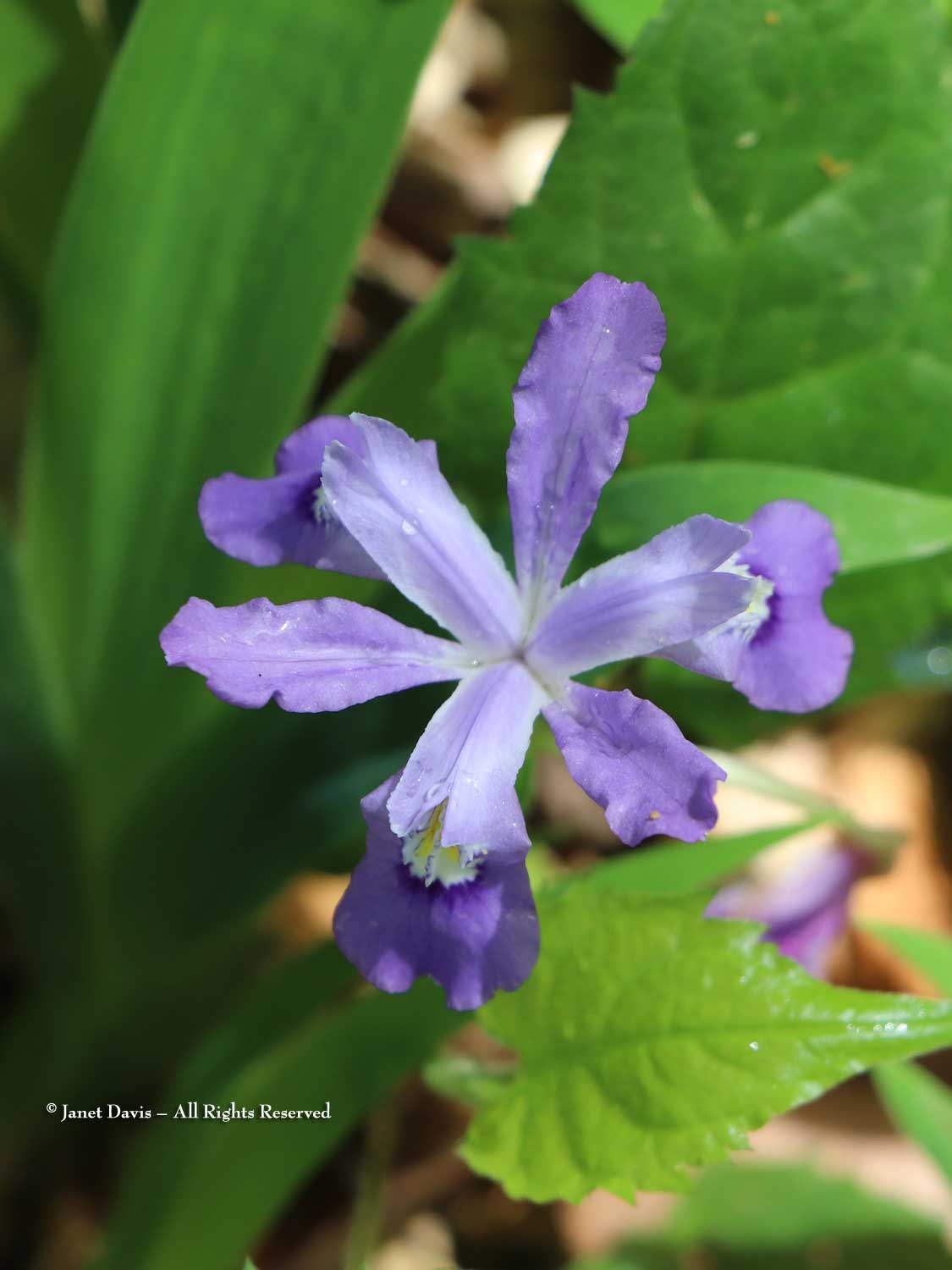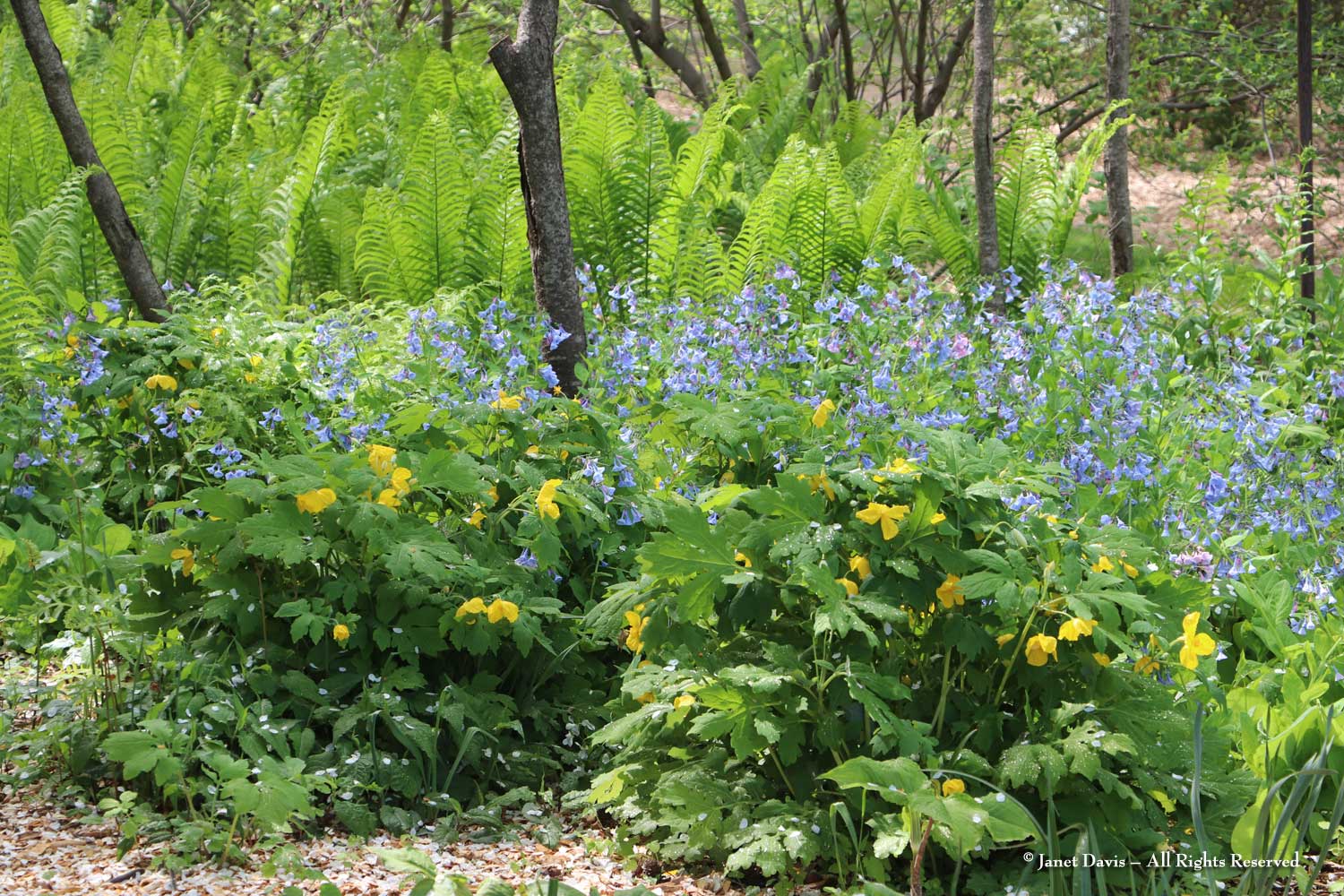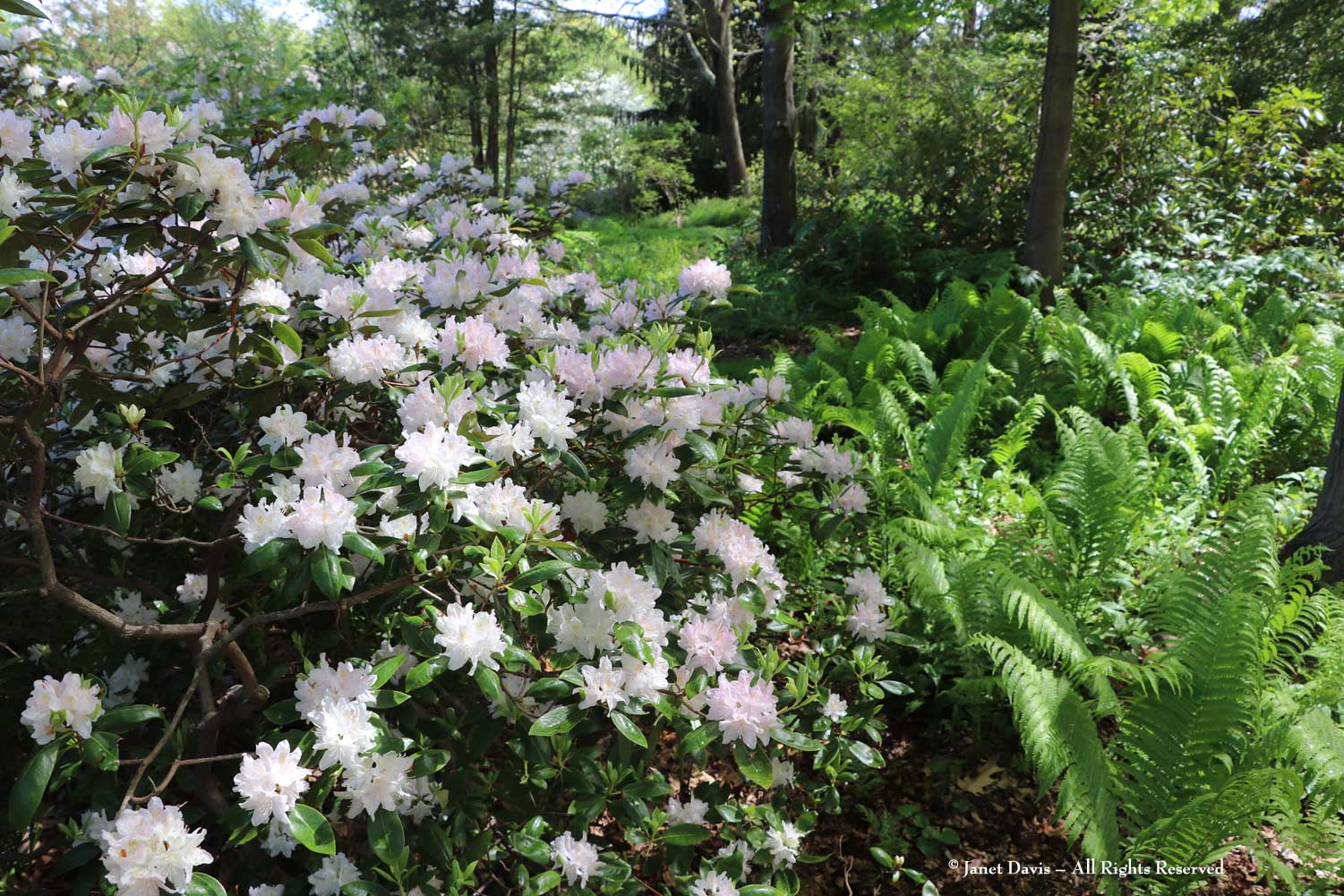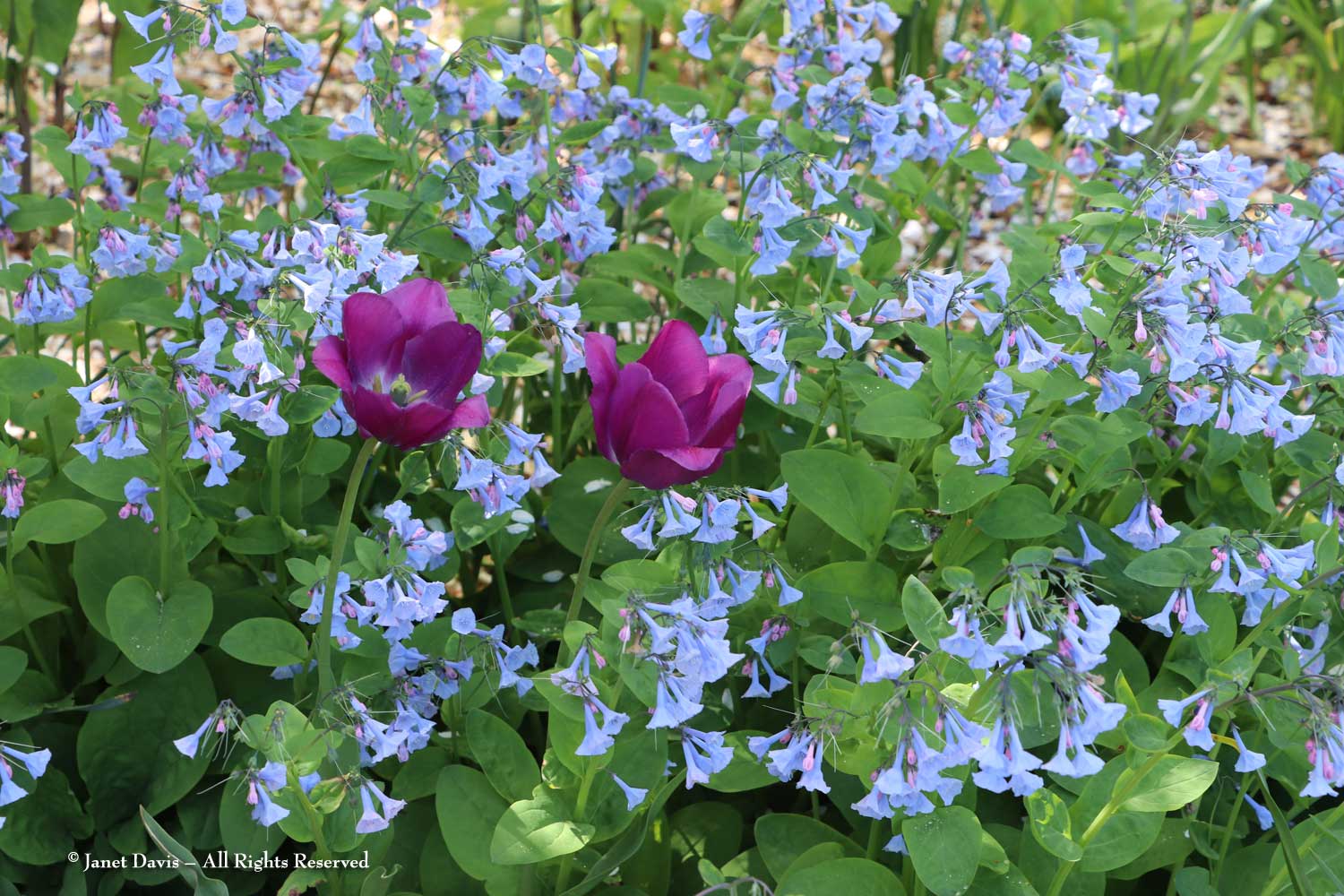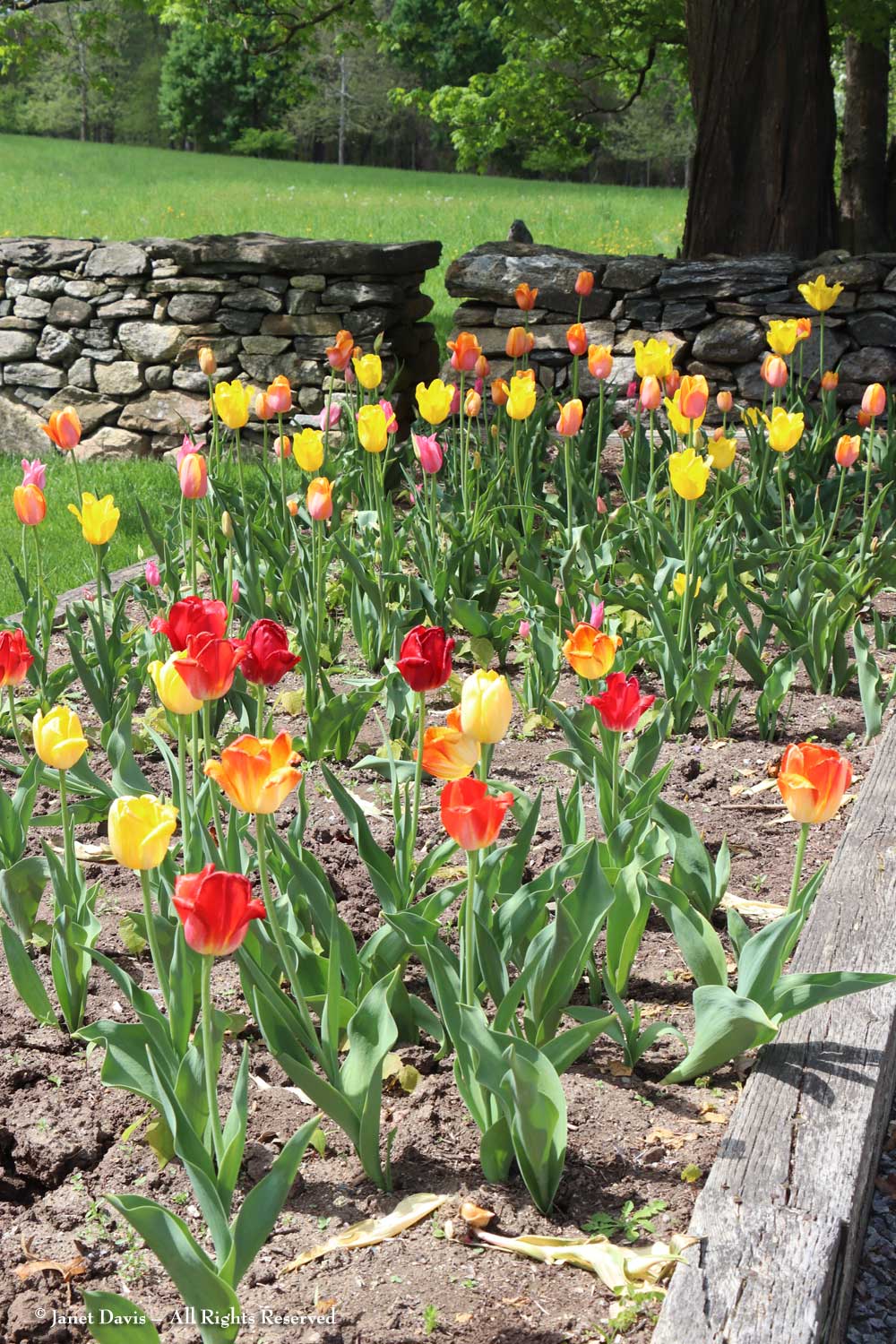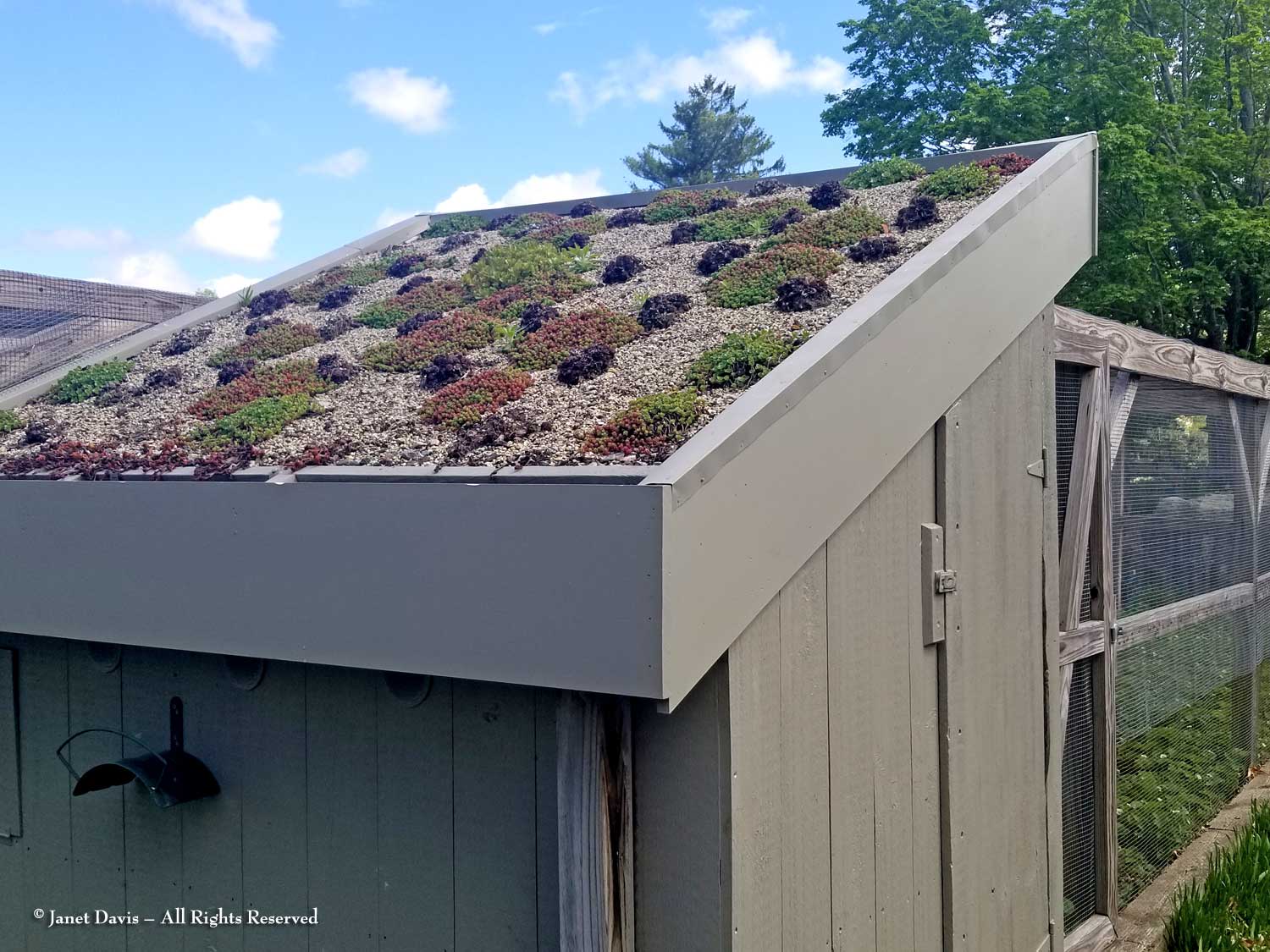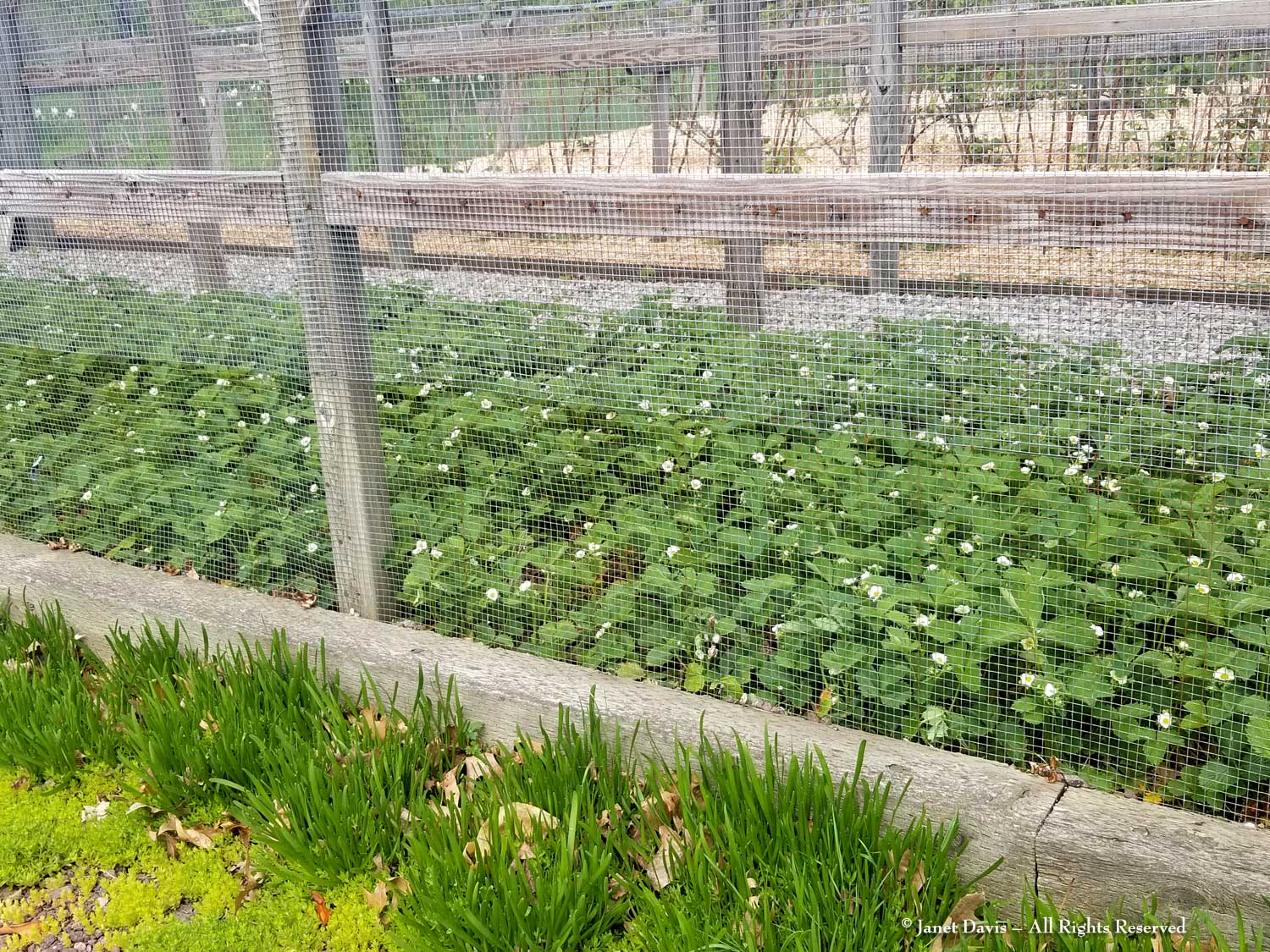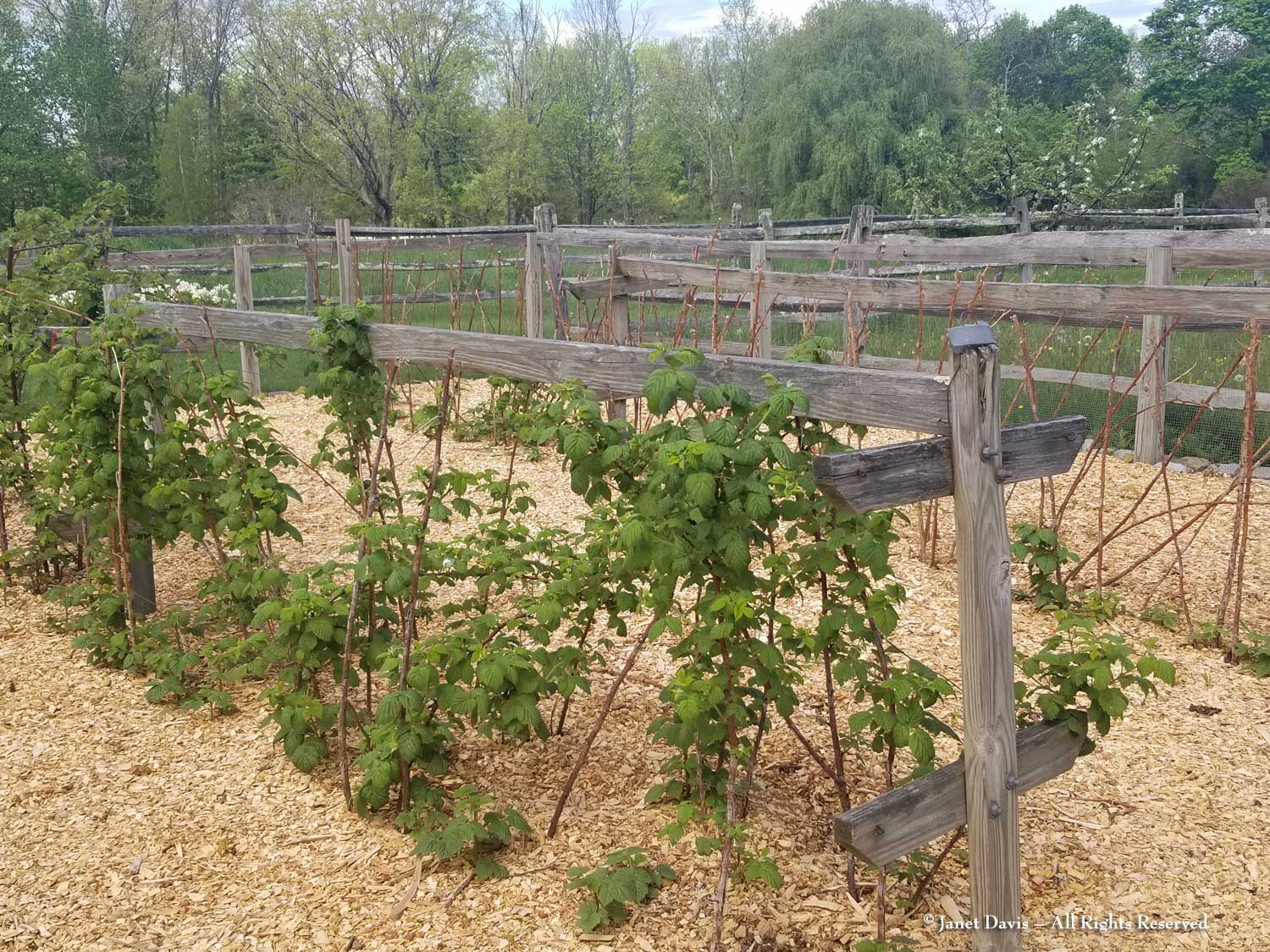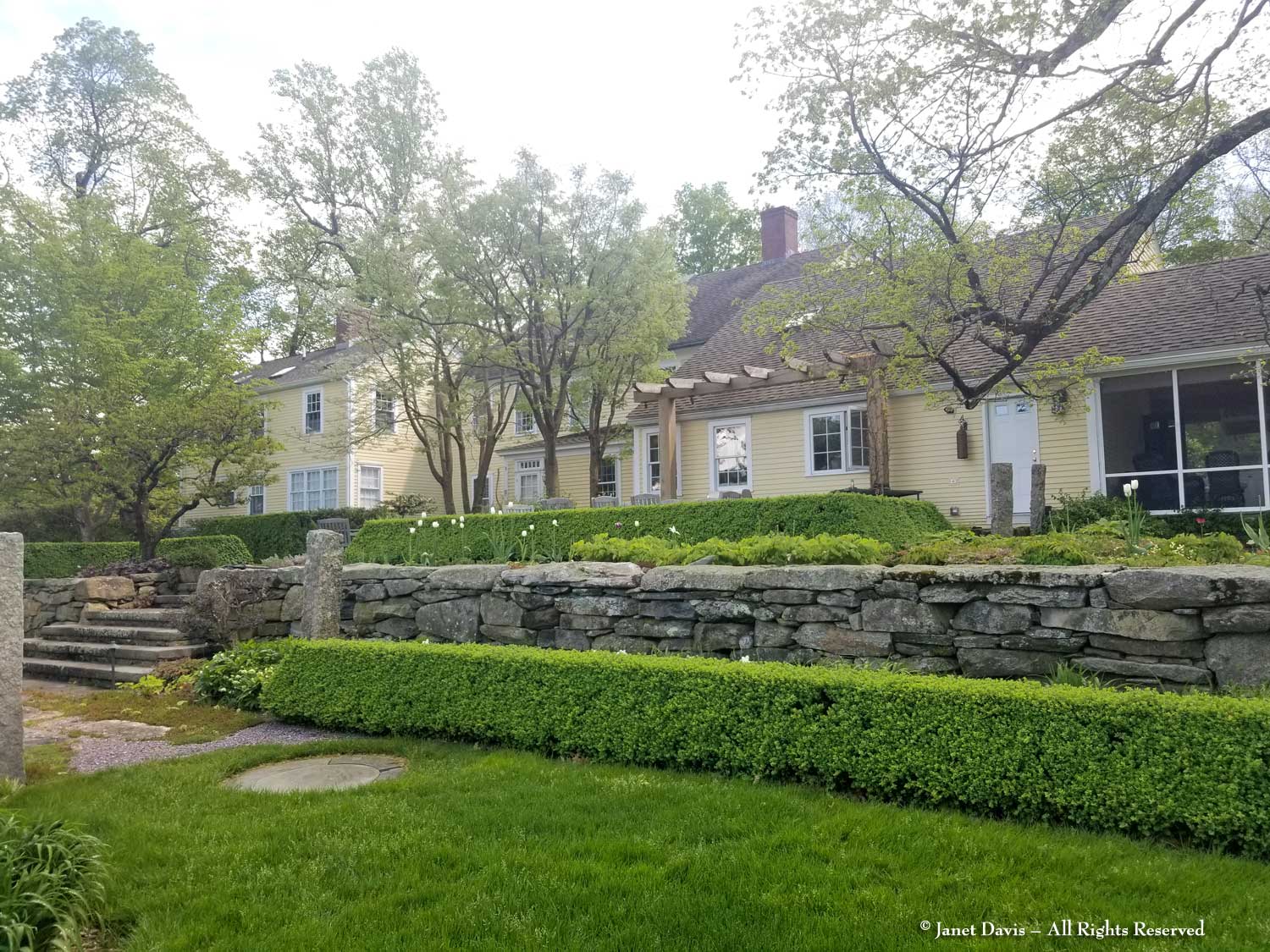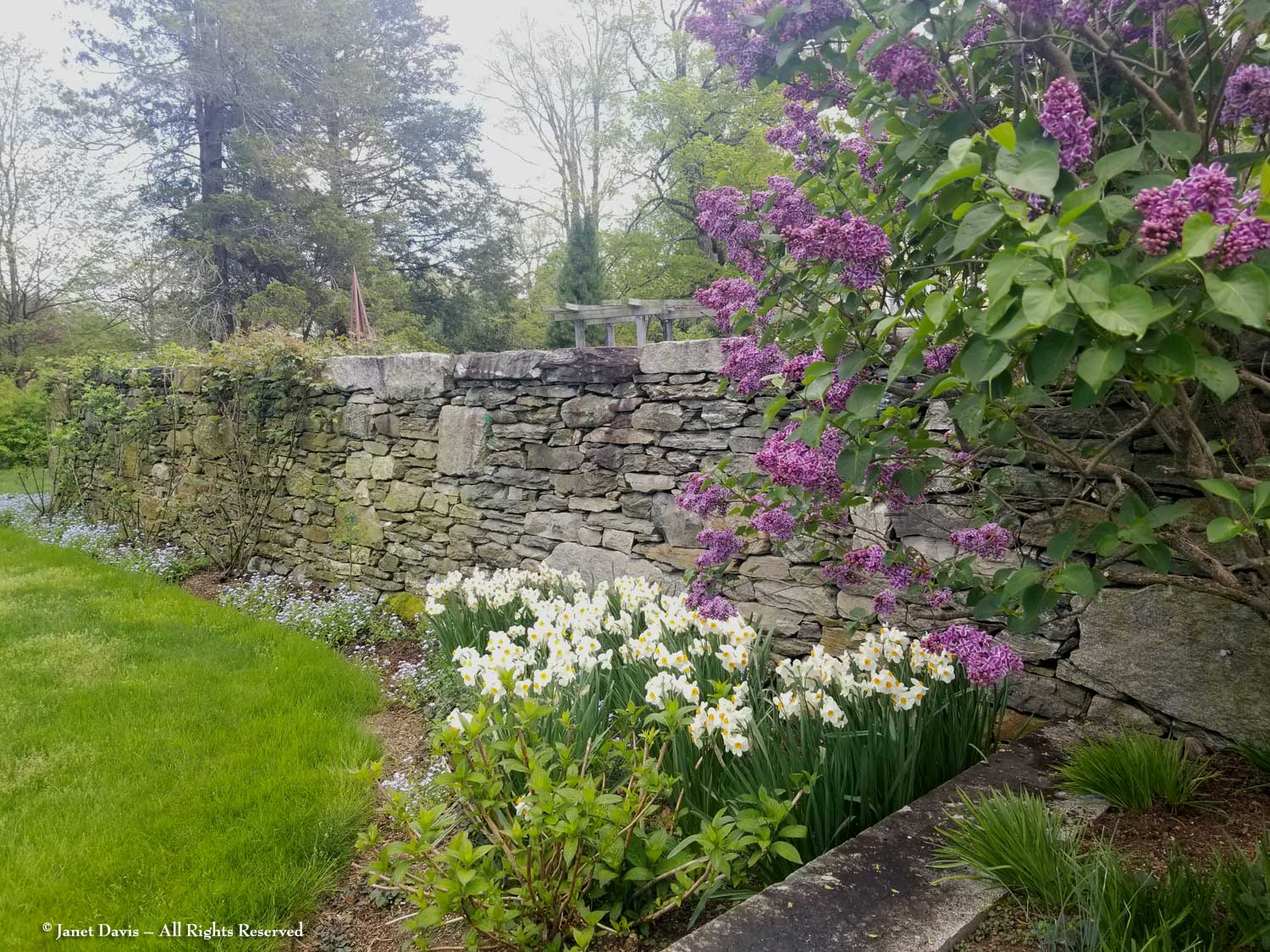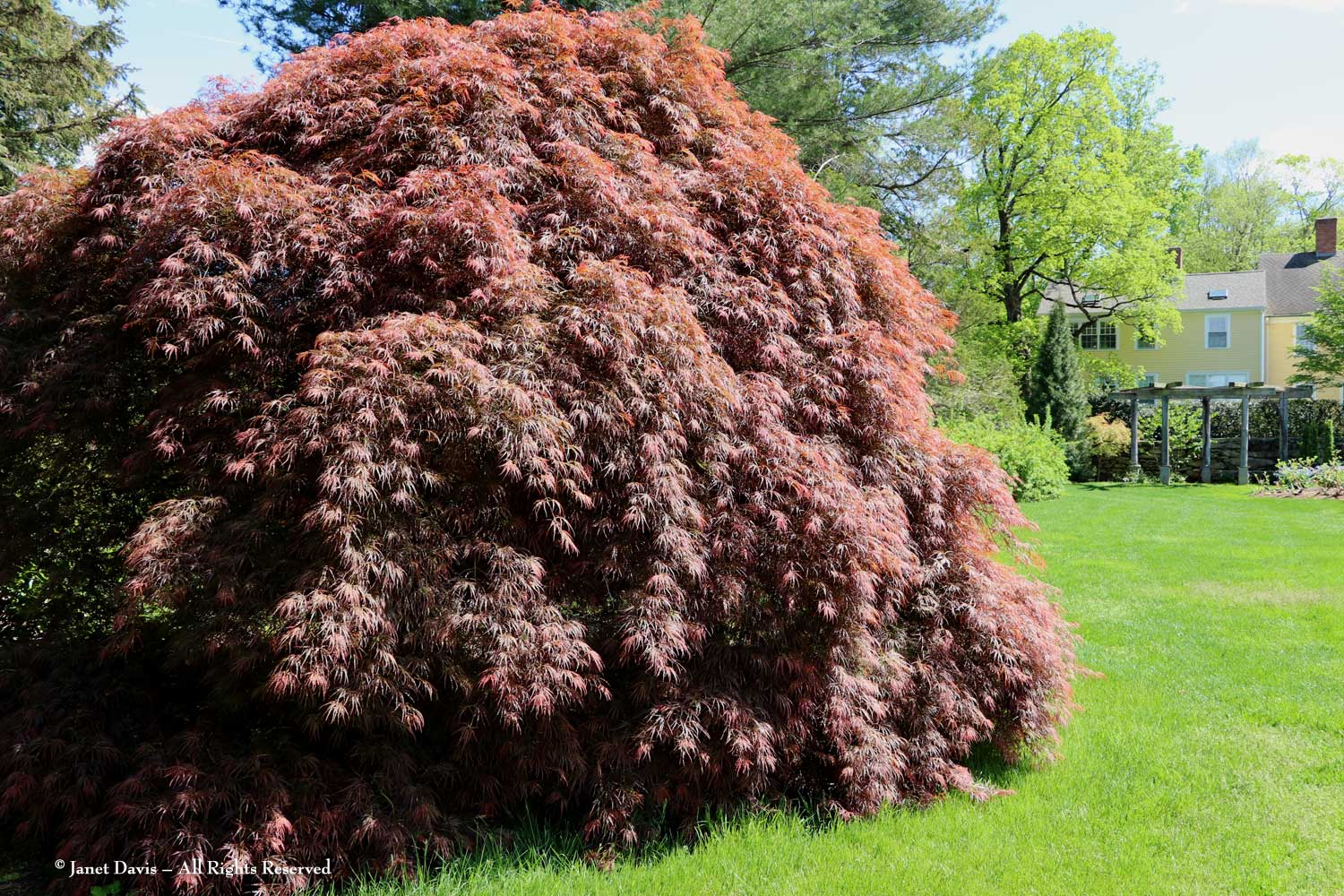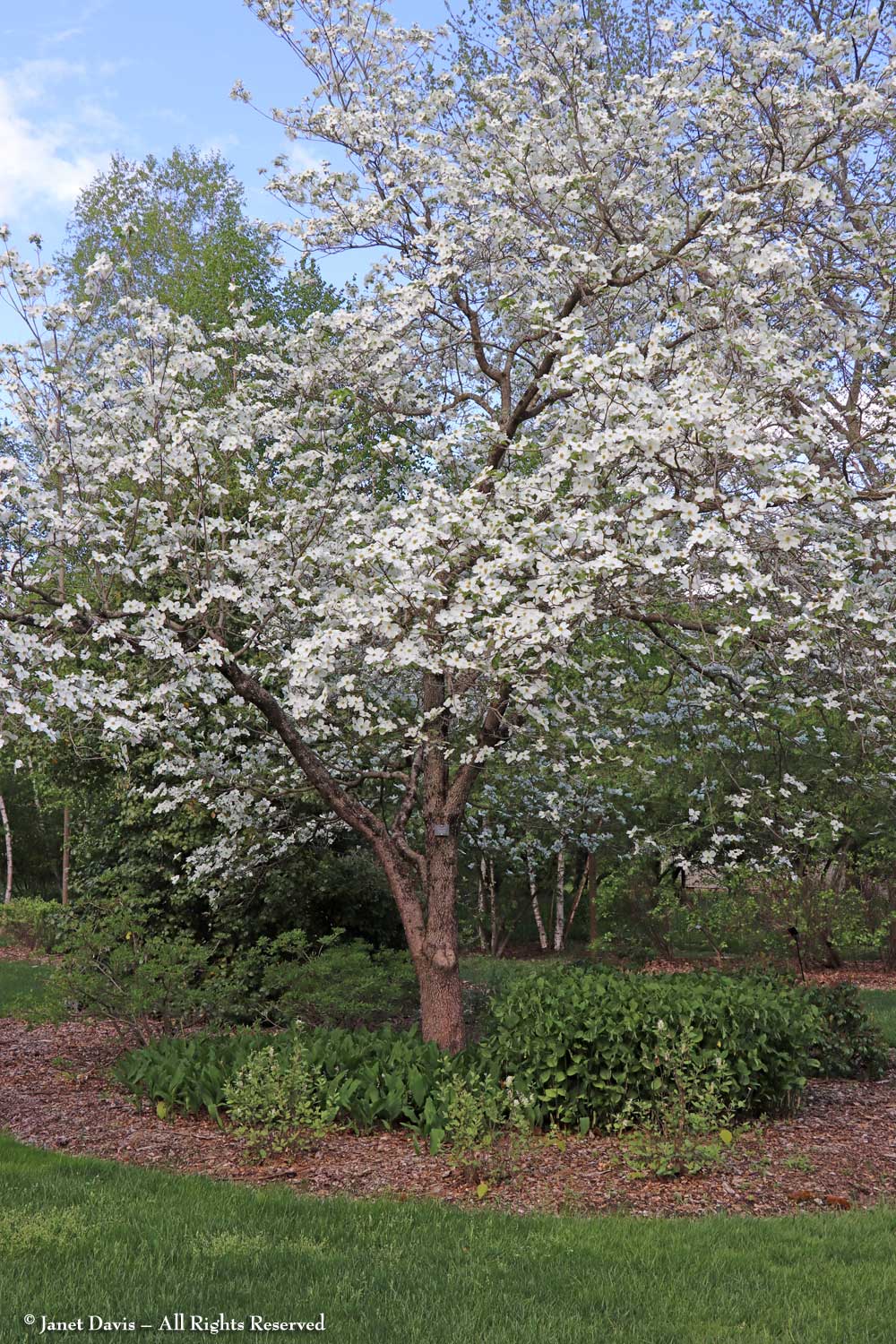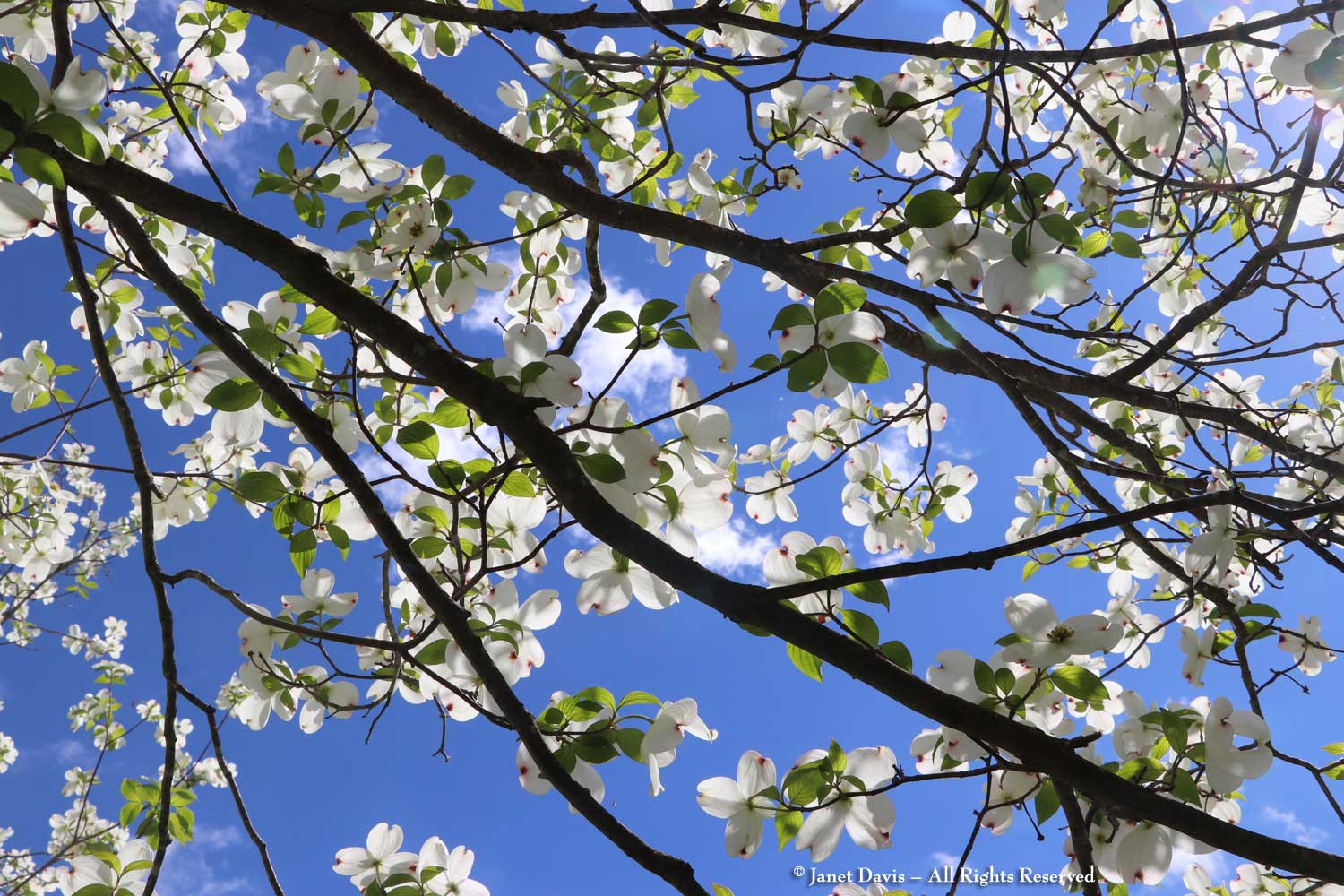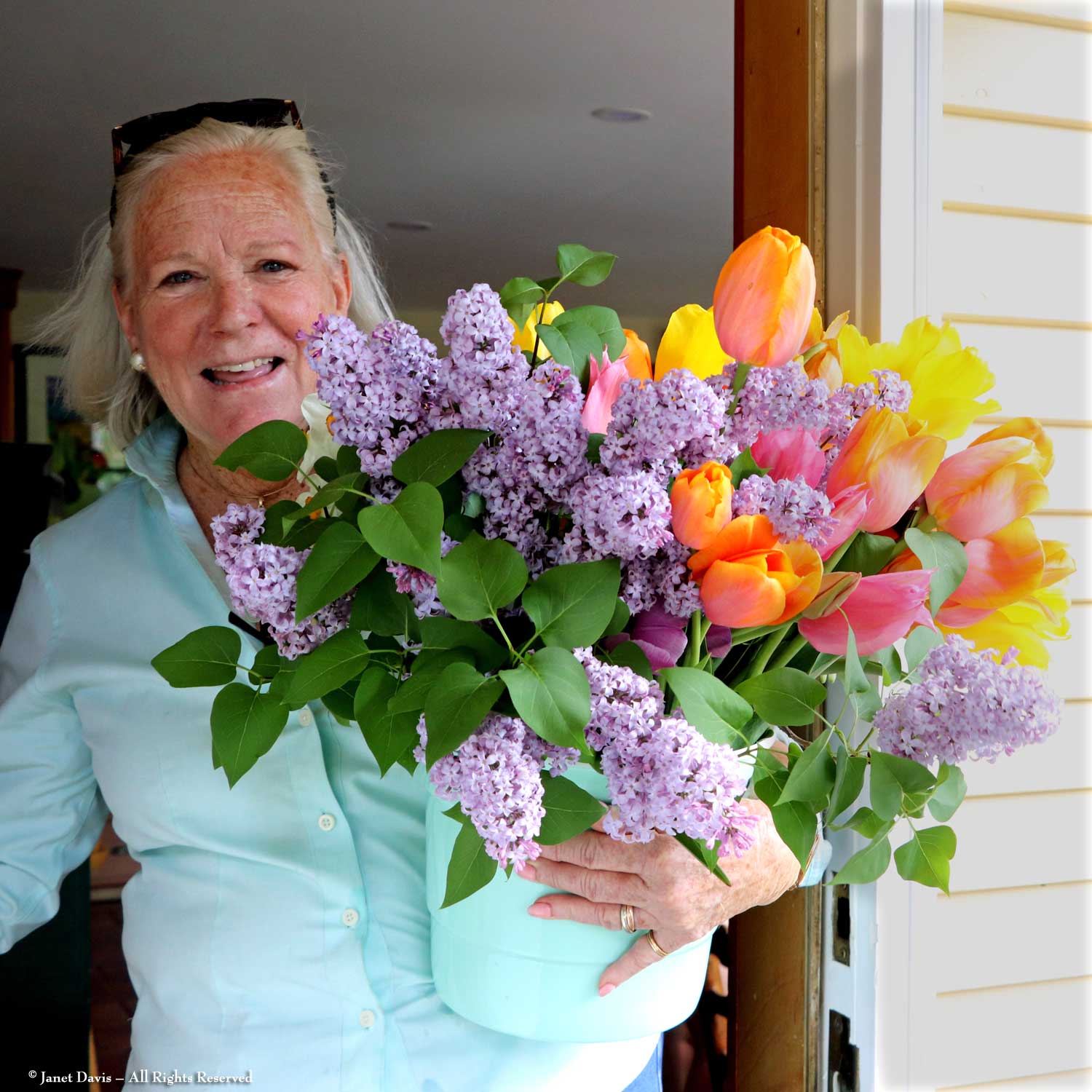One of my great pleasures when travelling is to photograph gardens along the way, and no garden is more deserving of a stop than my favourite small garden in North America, Chanticleer Garden in Wayne, PA. So when we were returning from New Jersey on May 23rd, I spent 3 hours touring and photographing, beginning in the fabulous Teacup Garden near the entrance. Back in June 2014 when I wrote my 2-part blog on Chanticleer (see Part 1 and Part 2), this garden was completely different. Designed anew each year by horticulturist Dan Benarcik, on this May day it was a tropical extravaganza with the teacup fountain at its centre and four sturdy pillars creating a sense of enclosure.
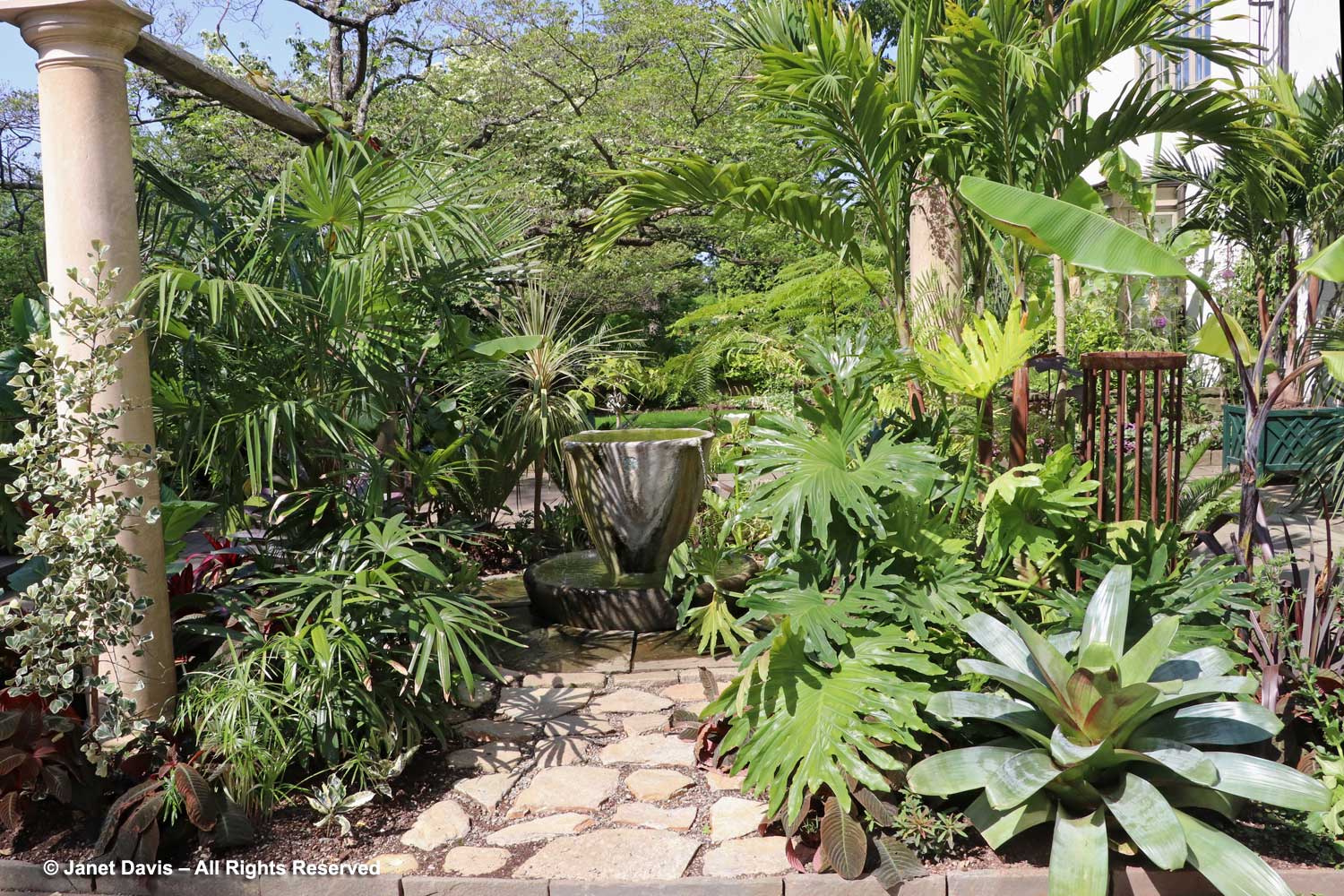
It was lush and lovely with ‘Black Thai’ banana (Musa balbisiana), left; red-leaved Imperial bromeliad, (Alcantarea imperialis), centre; and broad-leaved lady palm (Rhapis excels), right.
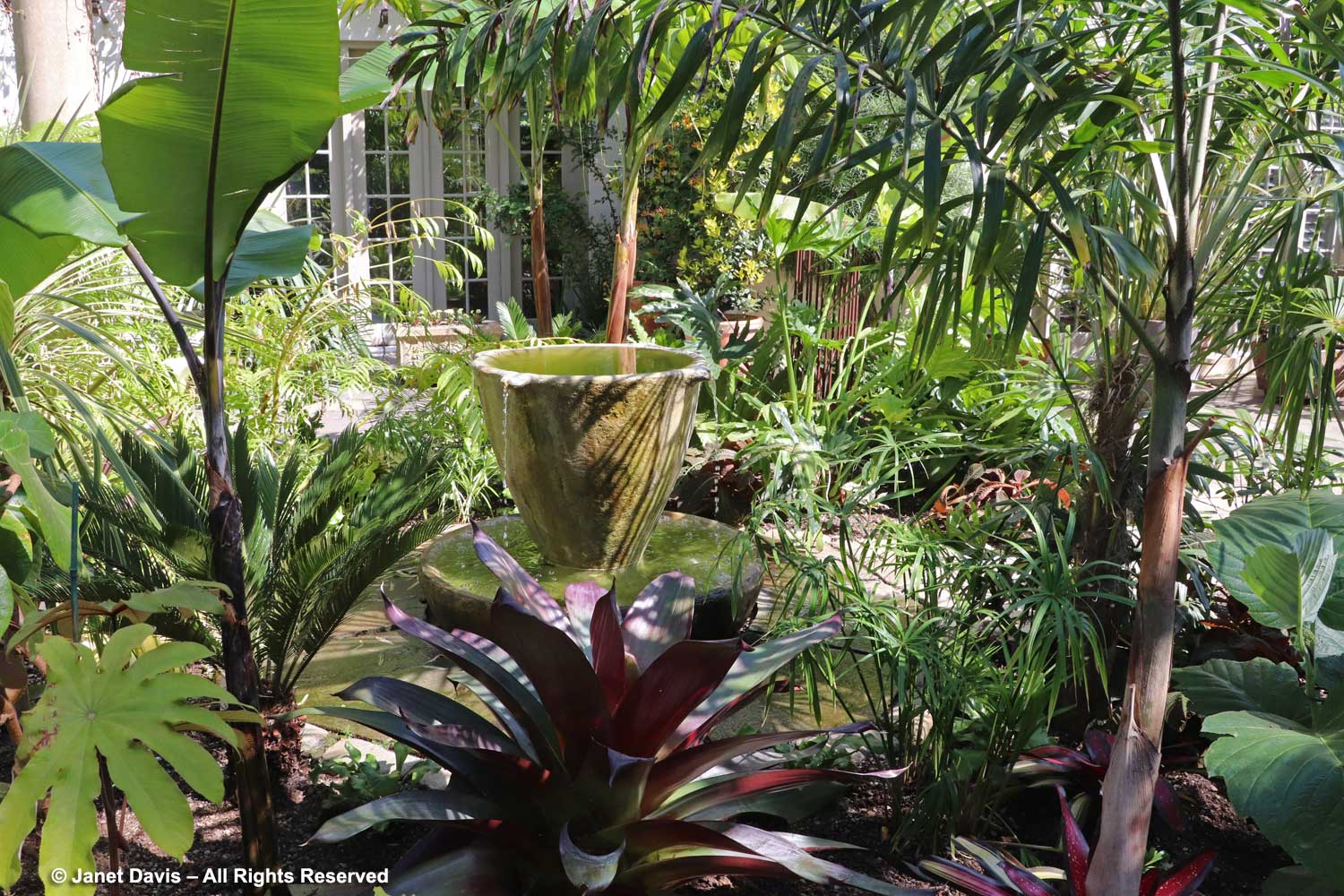
I climbed the staircase with the dogwood-motif railing, fabricated by horticulturist Joe Henderson. Beside it grew tree philodendron (Thaumatophyllum bipinnatifidum).
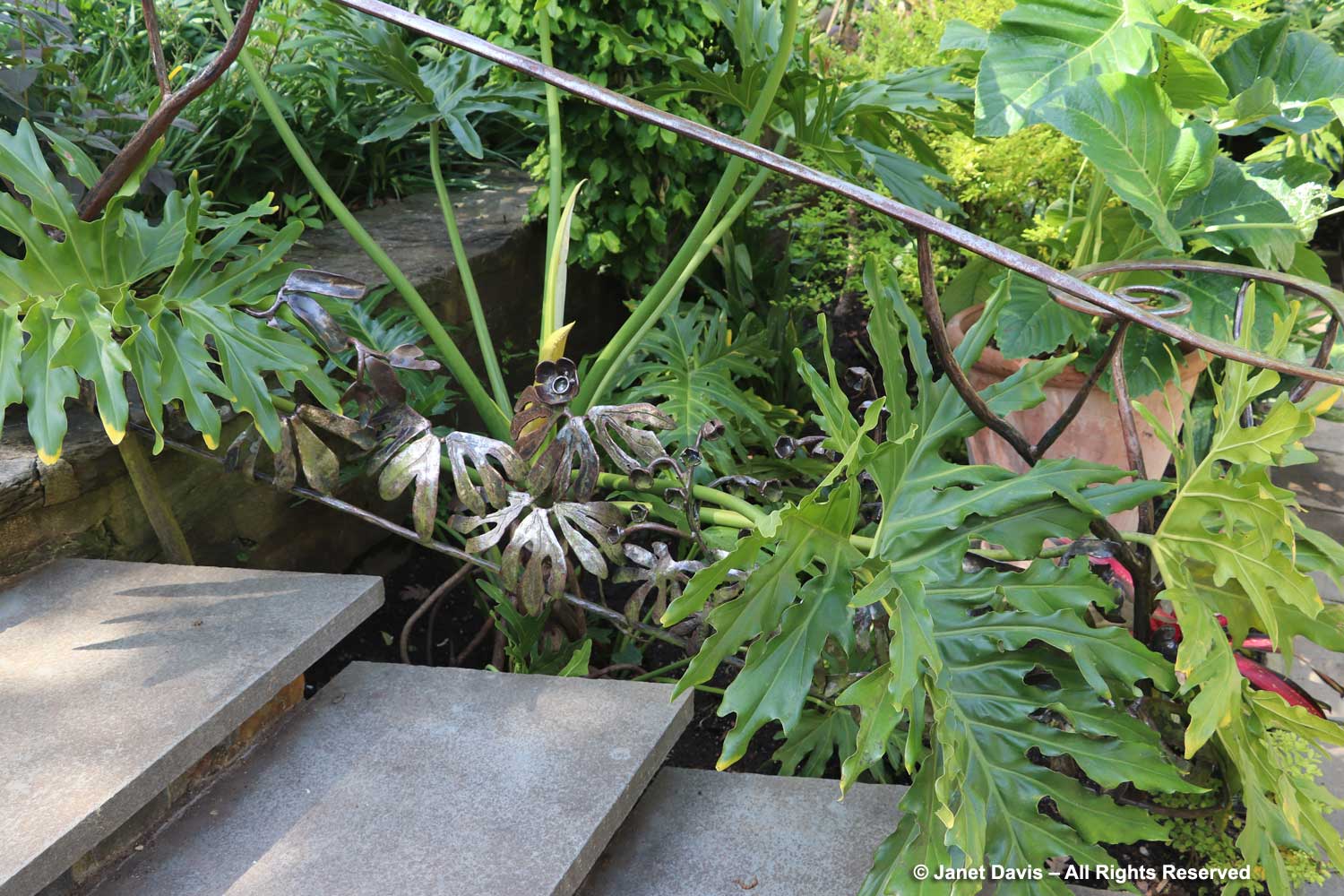
It was a good vantage point to look back on the Teacup Garden from the start of the Upper Border….
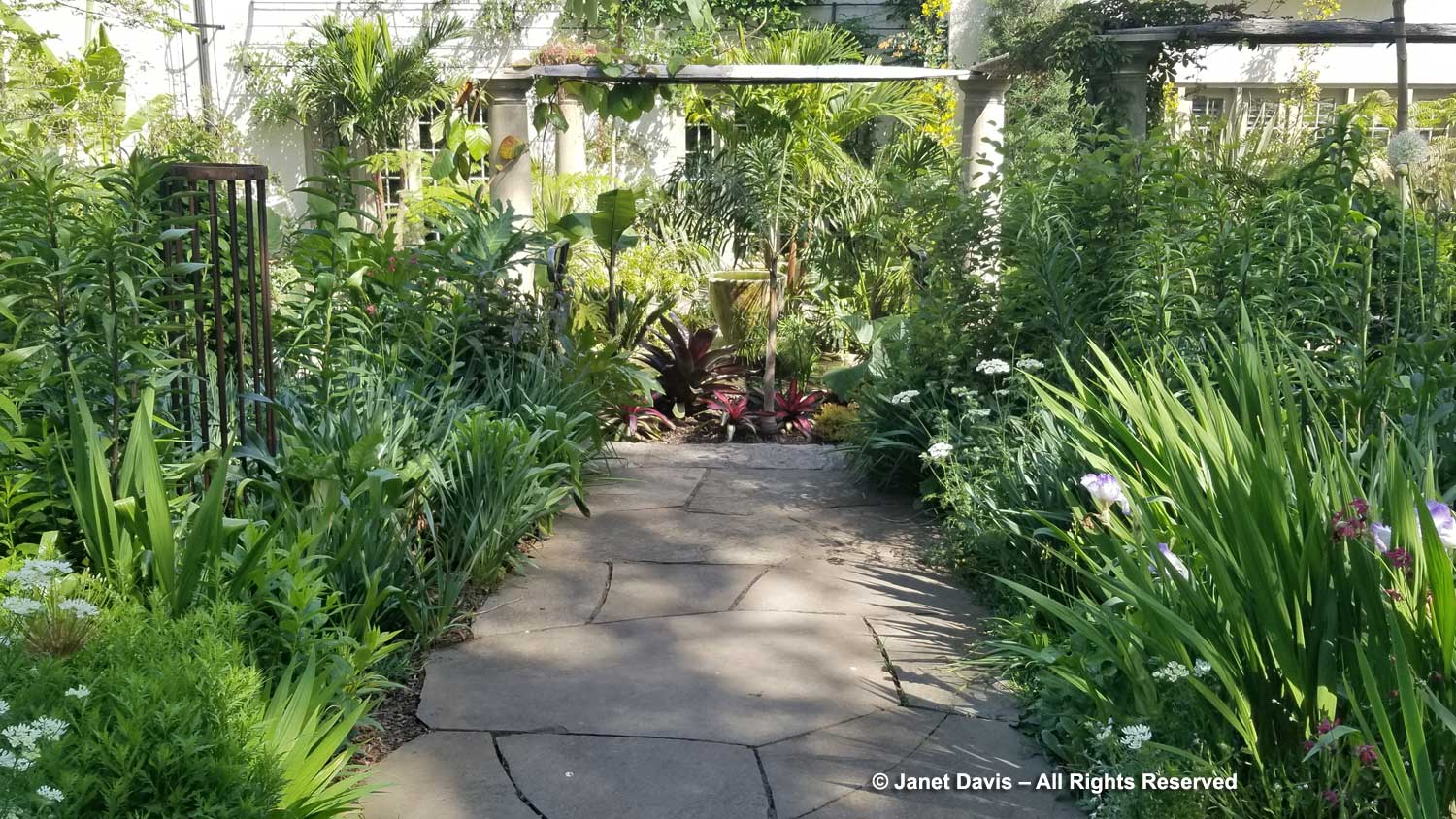
….. with its long, flanked, mostly white flower beds. Shade-dappled in the morning light and bisected by a simple mown path, it was illuminated with the fabulous annual Orlaya grandiflora.
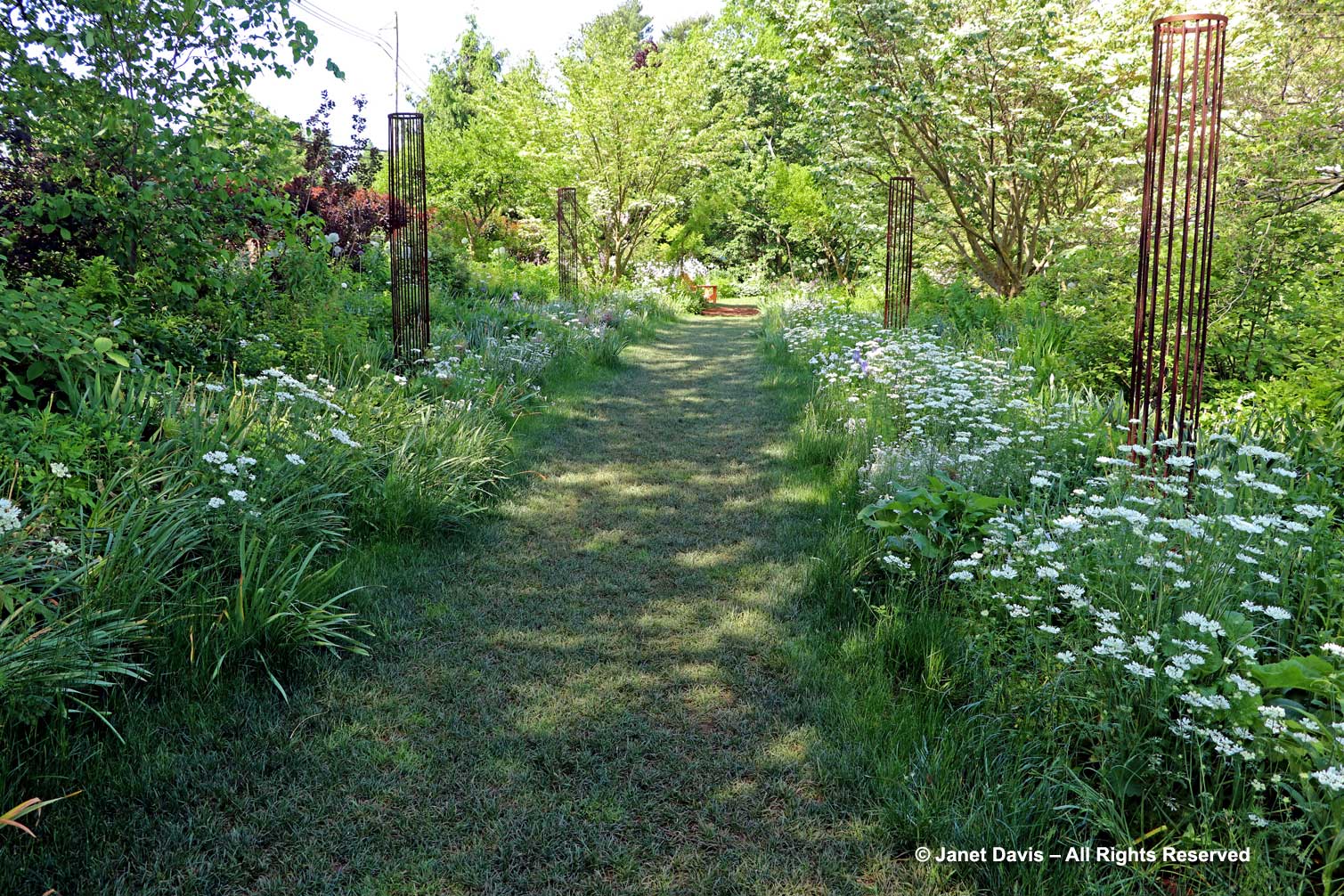
Here and there, the orlaya was paired with bearded irises, including lovely ‘Aunt Mary’, below.
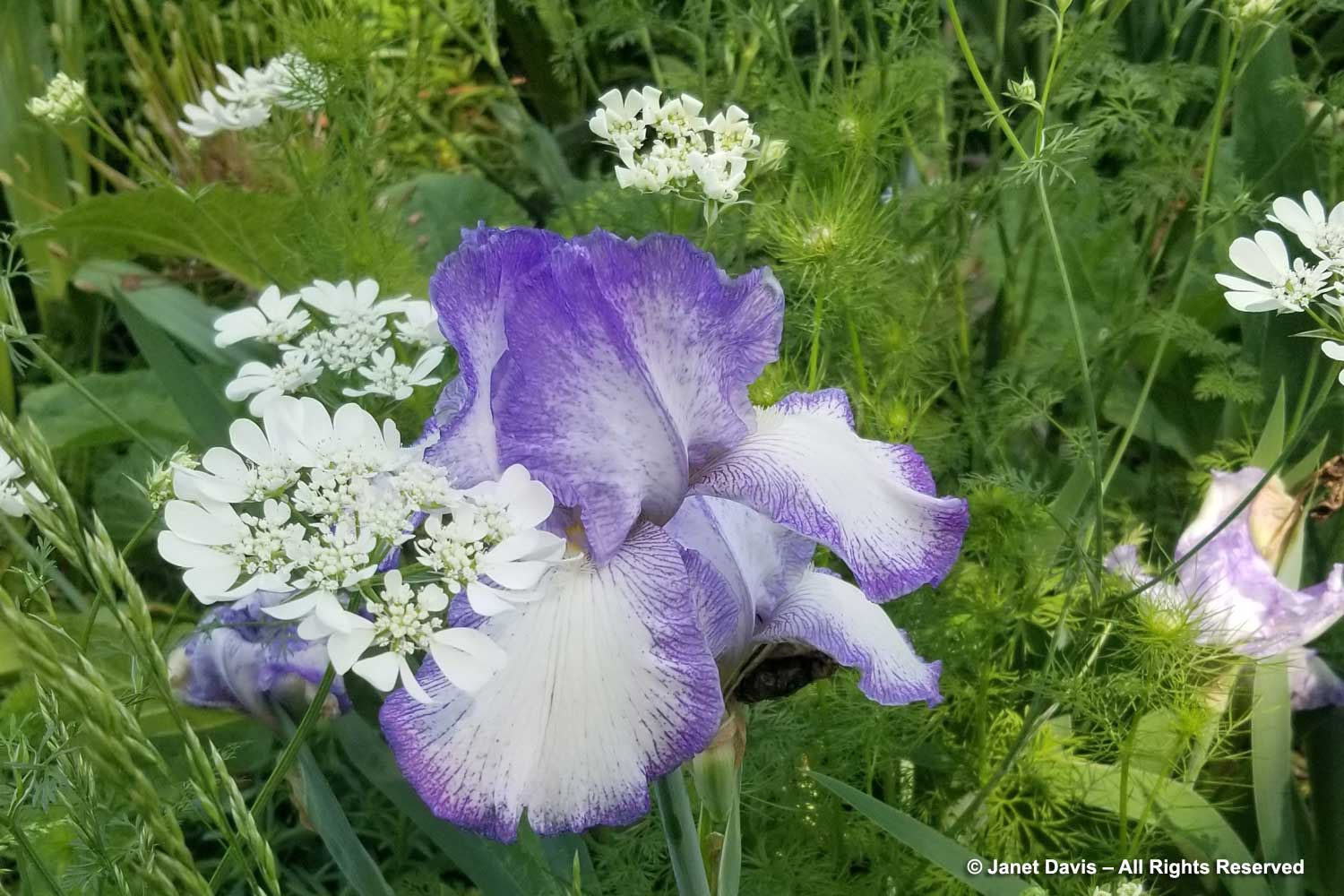
Through the border you can glimpse the pretty building that now contains Chanticleer’s administration offices and classrooms. The estate itself dates from 1913, when it became the summer home of Adolph Rosengarten Sr., his wife Christine and their children Adolph Jr. and Emily. Like many wealthy Philadelphians, the area along the Main Line of the Pennsylvania Railroad became a sylvan retreat from the heat of the city. The building below was erected in 1935 as a wedding gift for Emily.
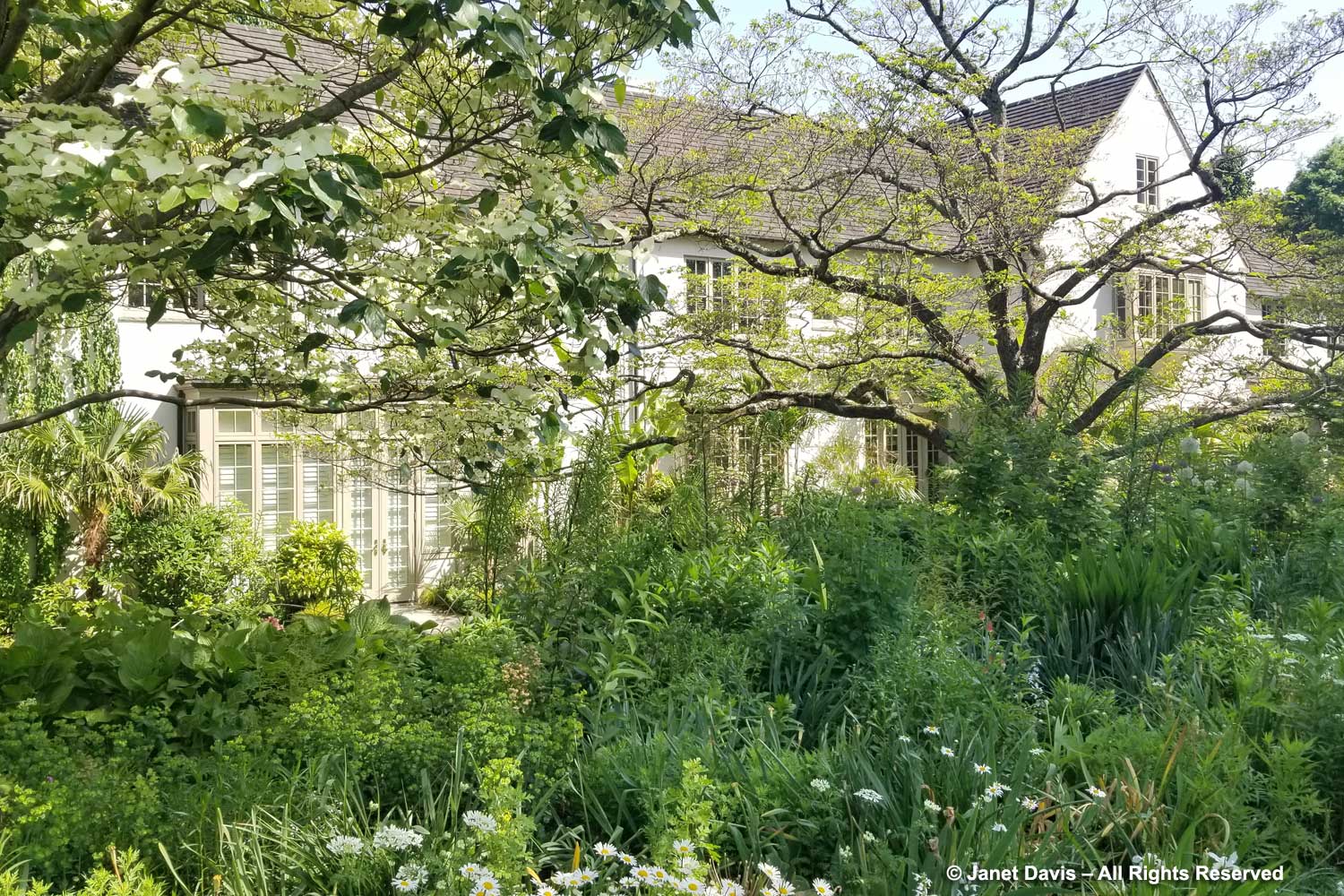
Rosengarten & Sons was one of the oldest chemical manufacturers in the U.S. Established in 1822, it took over the plant and assets of a similar firm in 1904 to form Powers, Weightman, Rosengarten Co. In 1927 the company merged with financially-troubled Merck & Co. of Rahway, NJ, with George Merck as president and Frederic Rosengarten, Adolph’s brother, as chairman of the board. By then, Adolph Rosengarten Sr. – who became the largest Merck shareholder—and his family had converted Chanticleer to their principal home. In 1942, the fortunes of Merck & Co. – already a chemical powerhouse – would increase substantially with the first successful treatment of an American patient suffering from septicemia with the new drug penicillin. Discovered by Sir Alexander Fleming in 1928, it was “the marvellous mold that saves lives”, but it would take a huge effort by the major pharmaceuticals, including Merck, to develop it commercially.
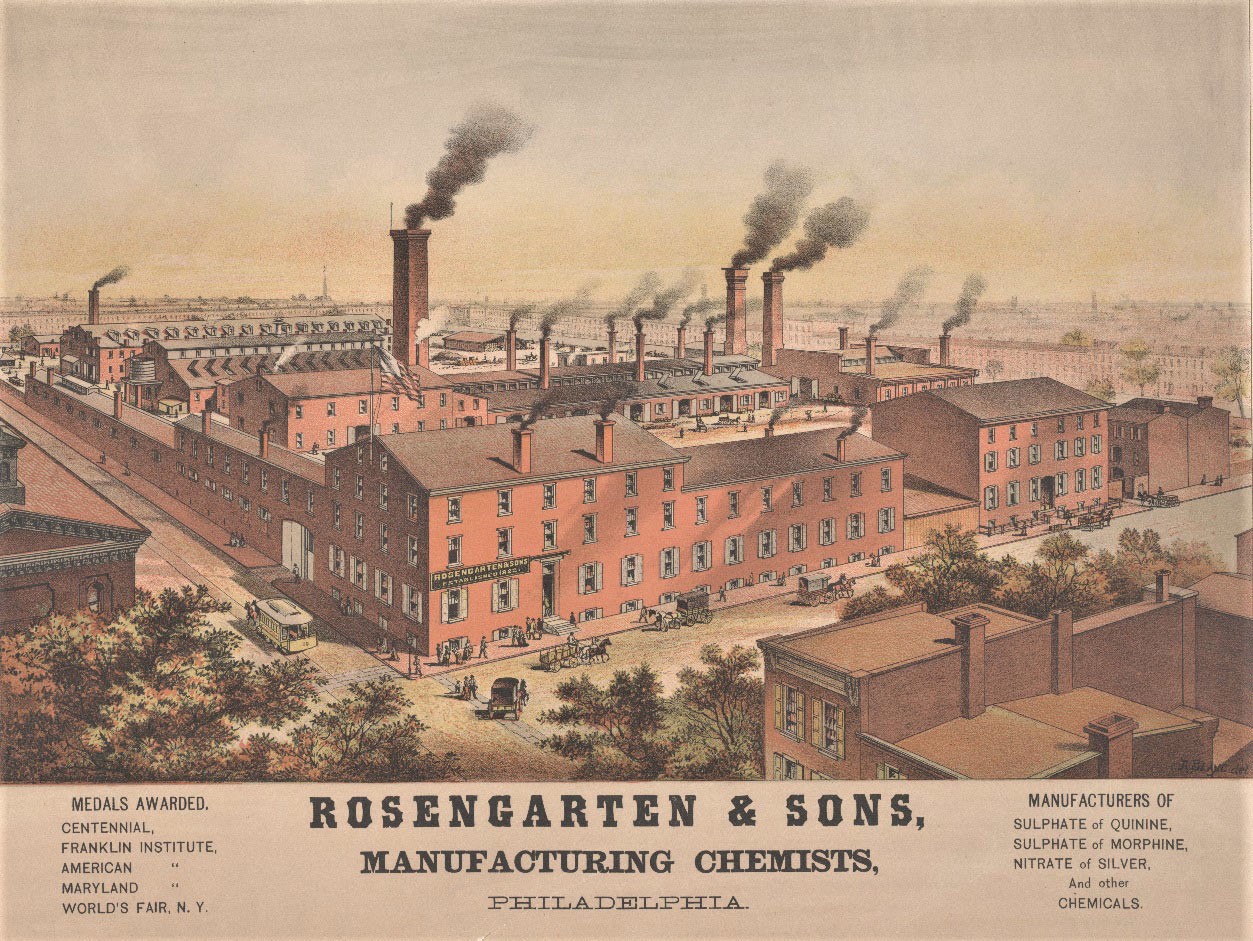
Back to the Upper Border, I also enjoyed seeing the spectacular Allium schubertii, here with Salvia ‘Summer Jewel White’.
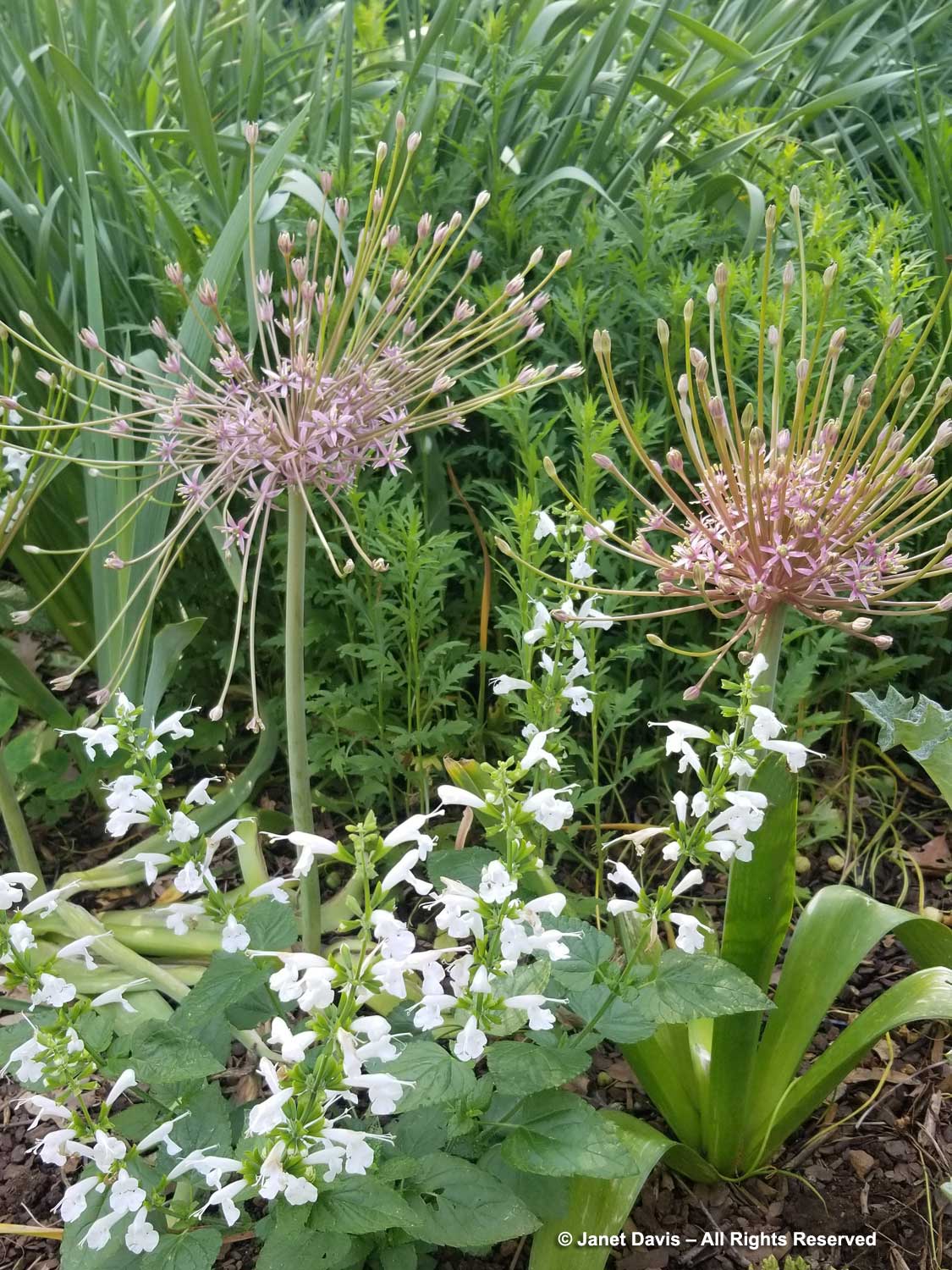
In every garden throughout the 50-acre estate (of which 35 acres are open to the public), plant combinations are inspired, such as the white Allium stipitatum ‘Mount Everest’ with eastern columbine (Aquilegia canadensis), below.
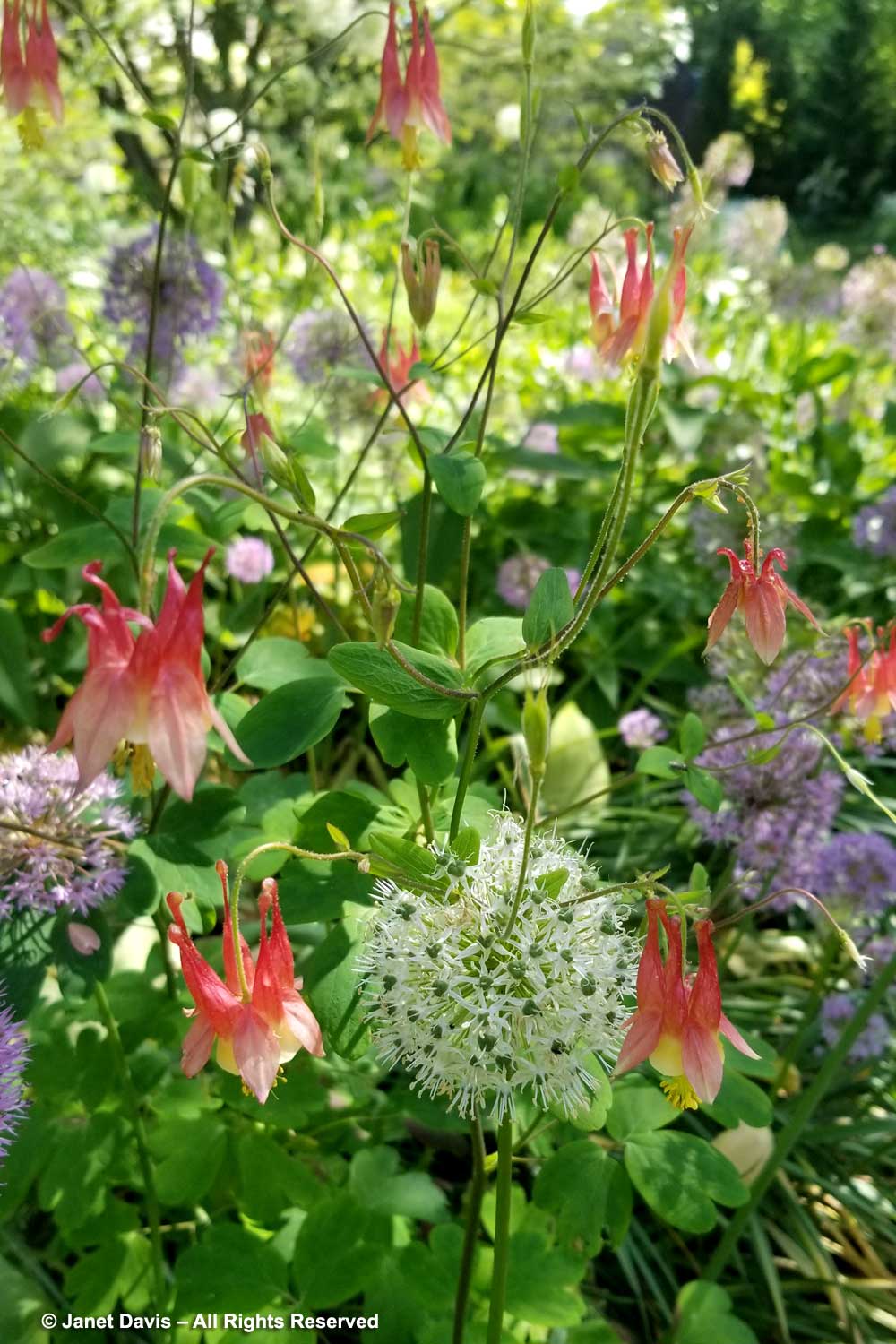
Leaving the Upper Border and circling the corner of the administration building, I came upon a lush, textural shade garden composed of hostas and plants with exceptional foliage, like Japanese forest grass (Hakonechloa macra ‘Aureola’) and solomon’s seals (Polygonatum spp.)
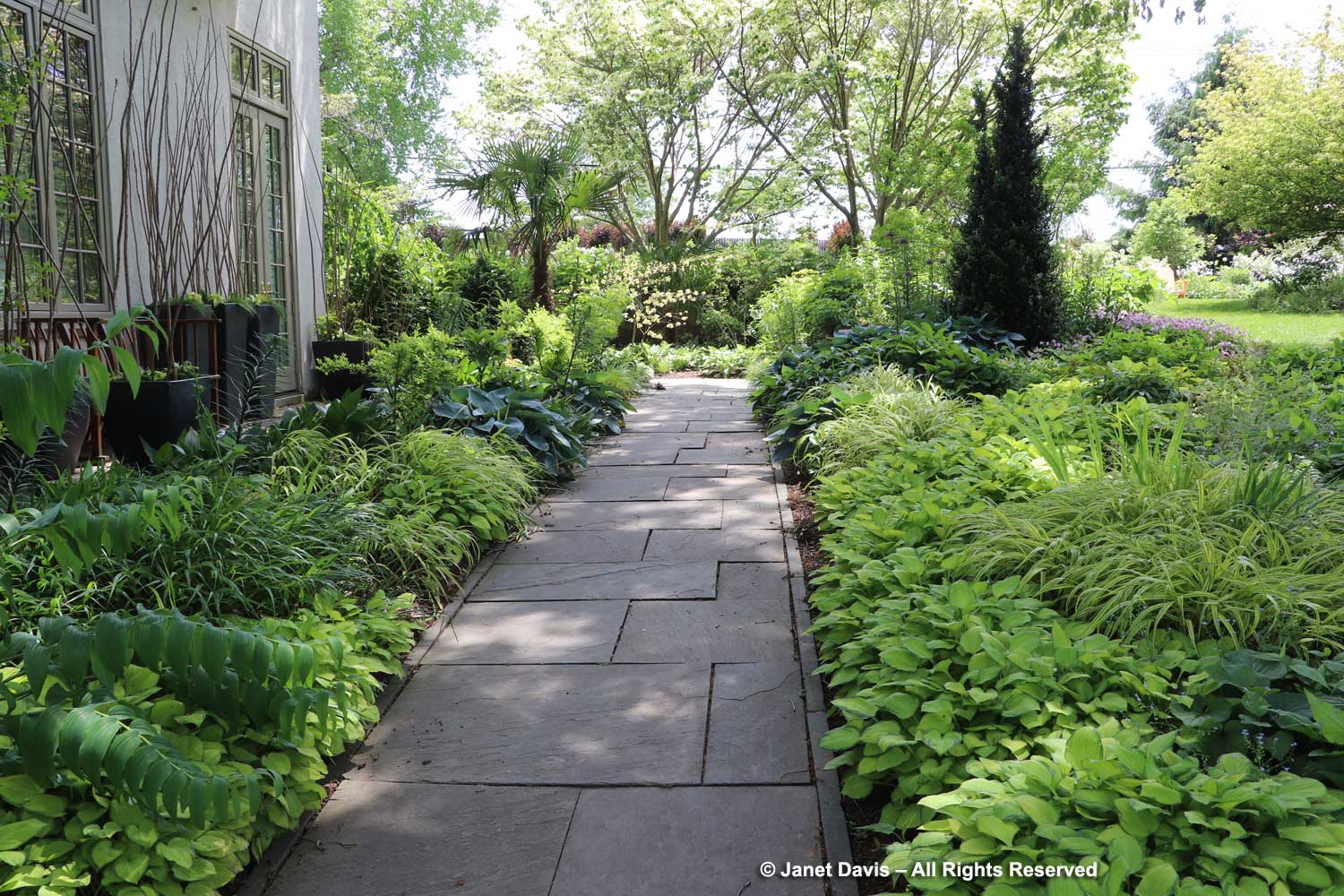
Heading towards the lower level, I passed through plantings with sumptuous May peonies, amsonia and old-fashioned weigela.
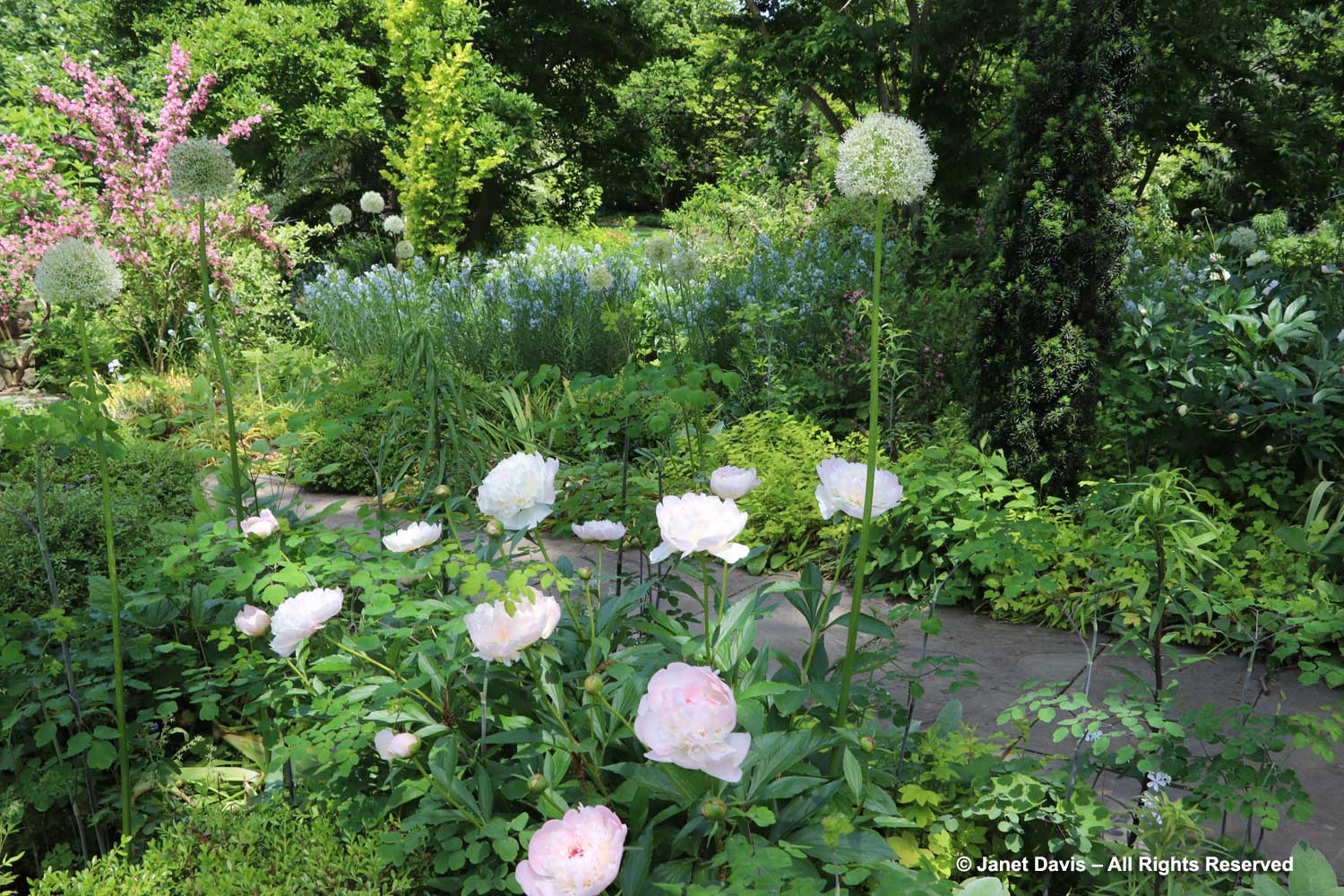
And I passed a gazebo topped with a weathervane featuring one of the estate’s many “chanticleers”, i.e. rooster in French. It was Adolph Rosengarten Sr. who named his home after Chanticlere, the estate in William Thackeray’s 1855 novel “The Newcomes”, a place that was “mortgaged up to the very castle windows” but “still the show of the county.” Today, the 9-member board of Chanticleer Garden includes six Rosengarten relatives.
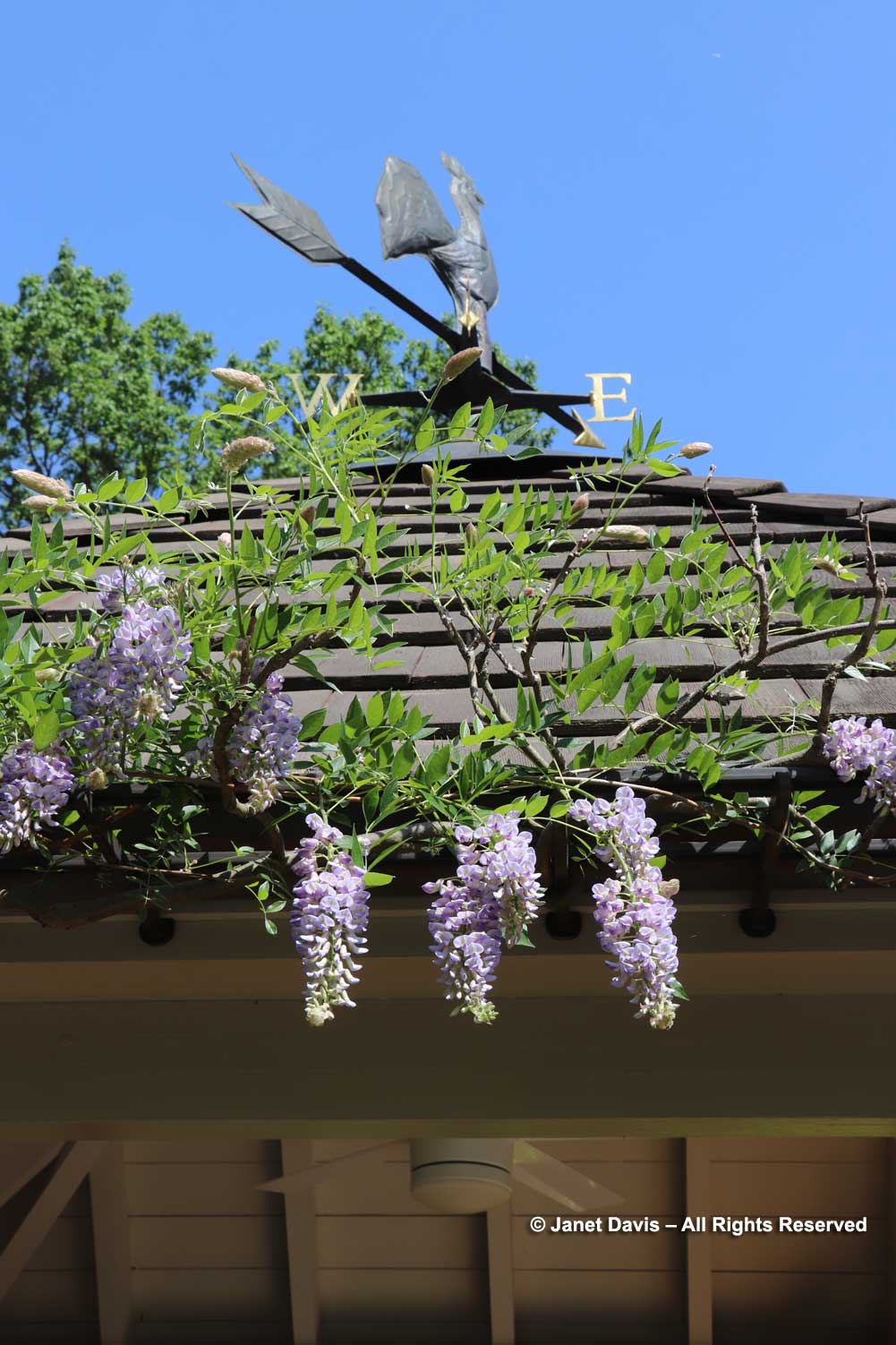
The stone “railings” of the staircase to the Tennis Garden feature drought-tolerant plantings of lantana and Sedum rupestre ‘Angelina’. In the background is Calycanthus x raulstonii ‘Hartlage Wine’.
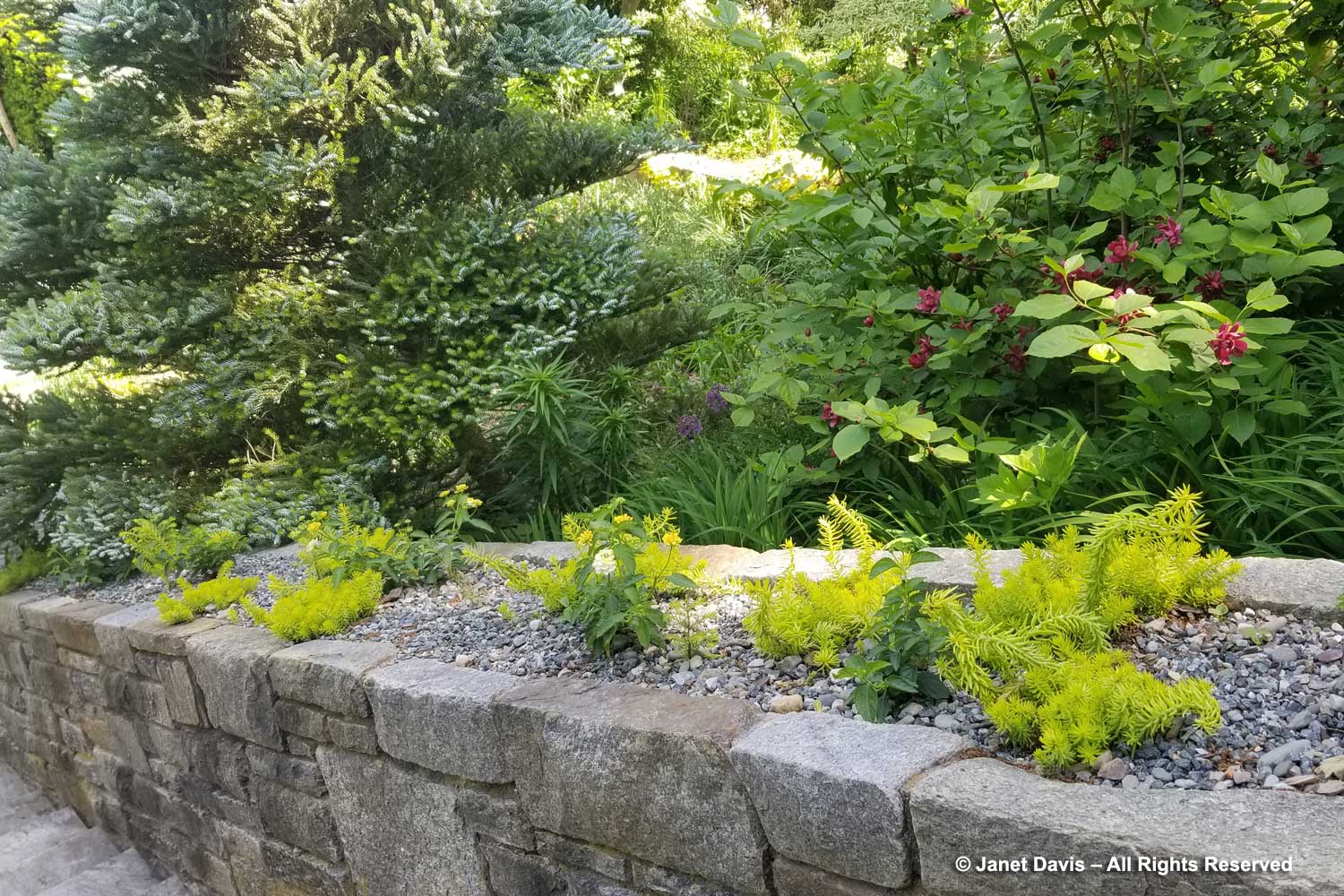
The Tennis Garden has had a revamp since I saw it in 2014. Now the beds are designed to look like the sweeps of a tennis racket, recalling the days when the Rosengartens played here.
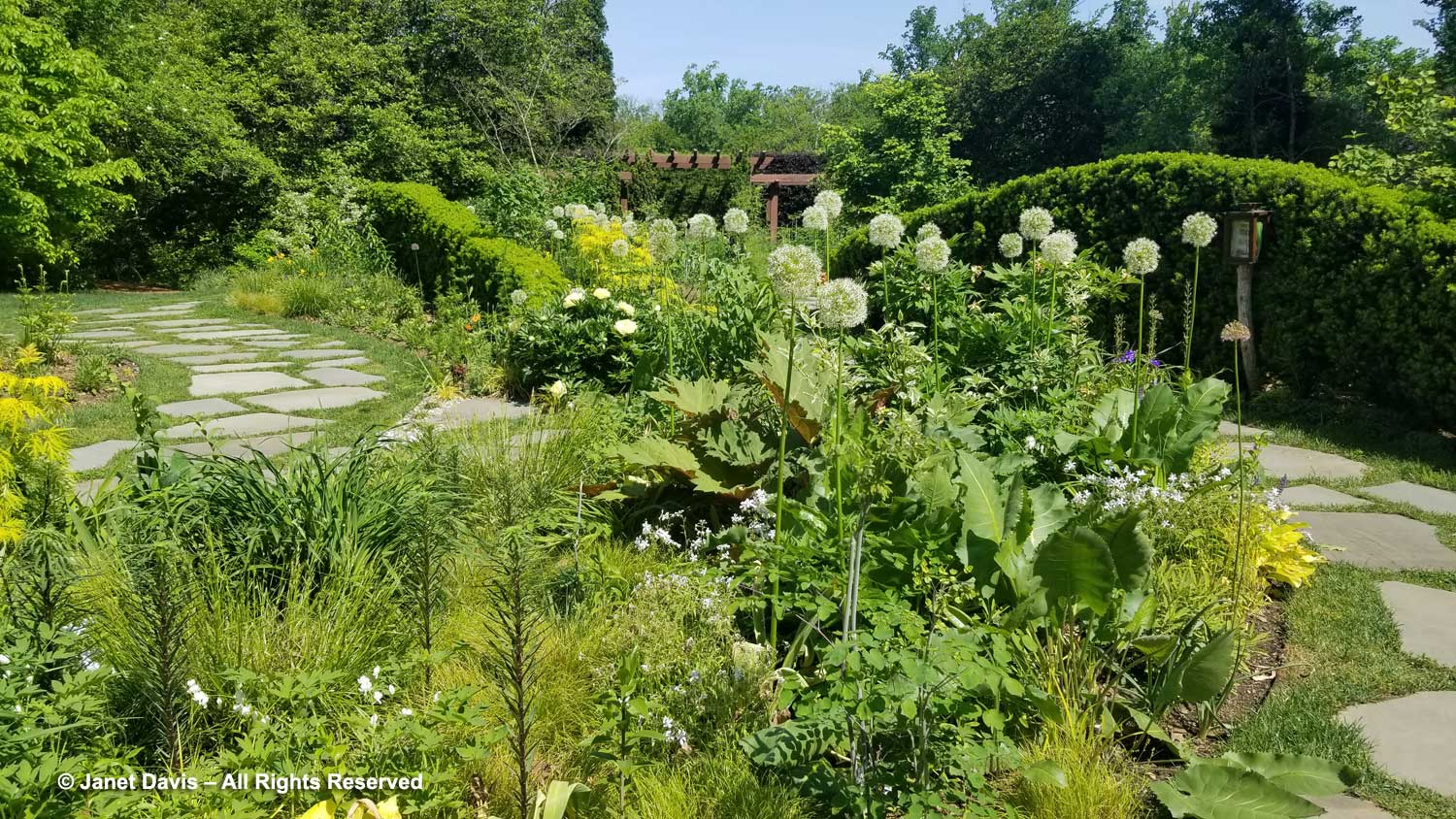
Heuchera ‘Caramel’ is used as edging along the path to draw the eye through this garden.
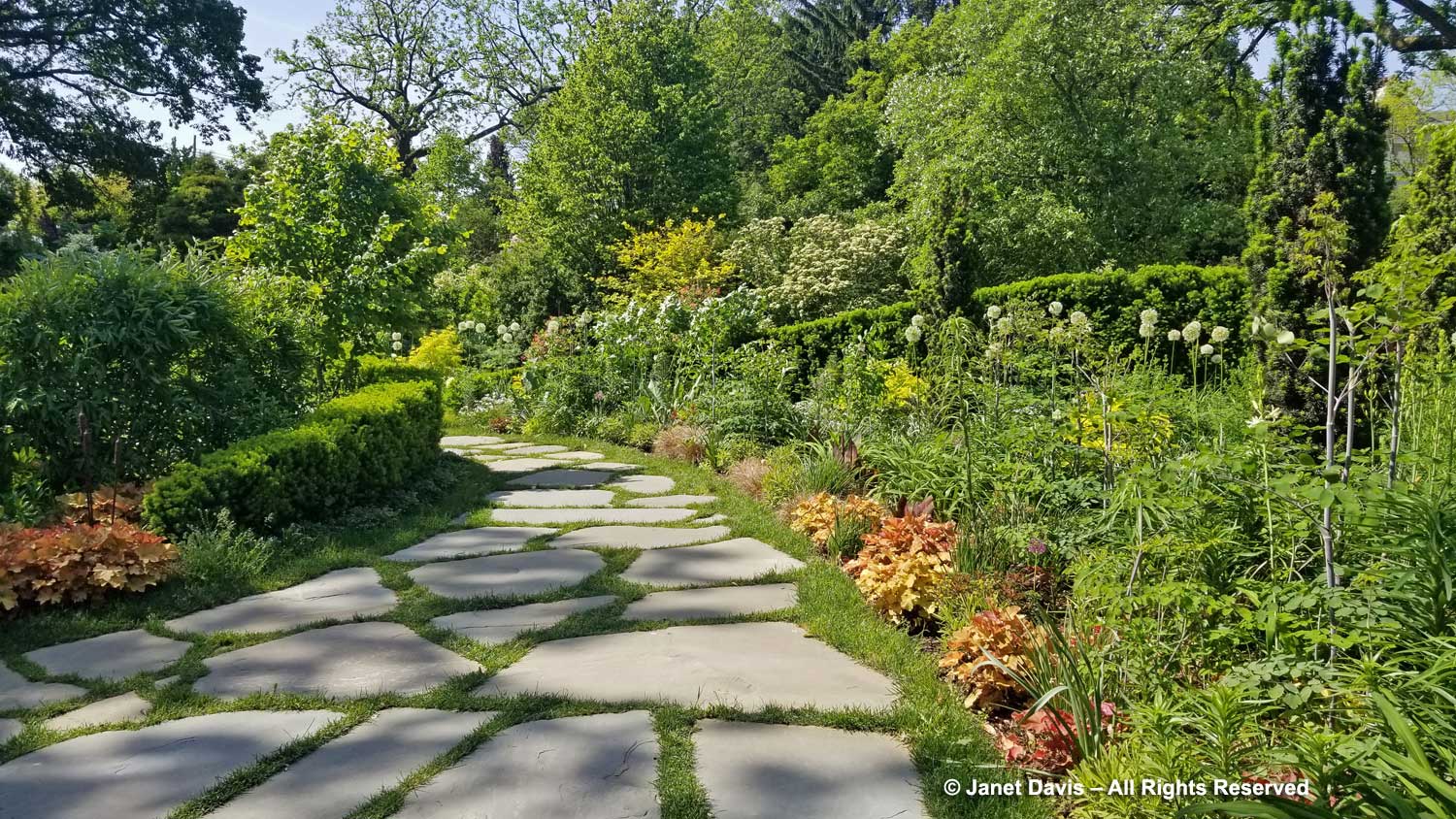
It was peony time on May 23rd so the Itoh Interspecific hybrid ‘Bartzella’ was looking luscious.
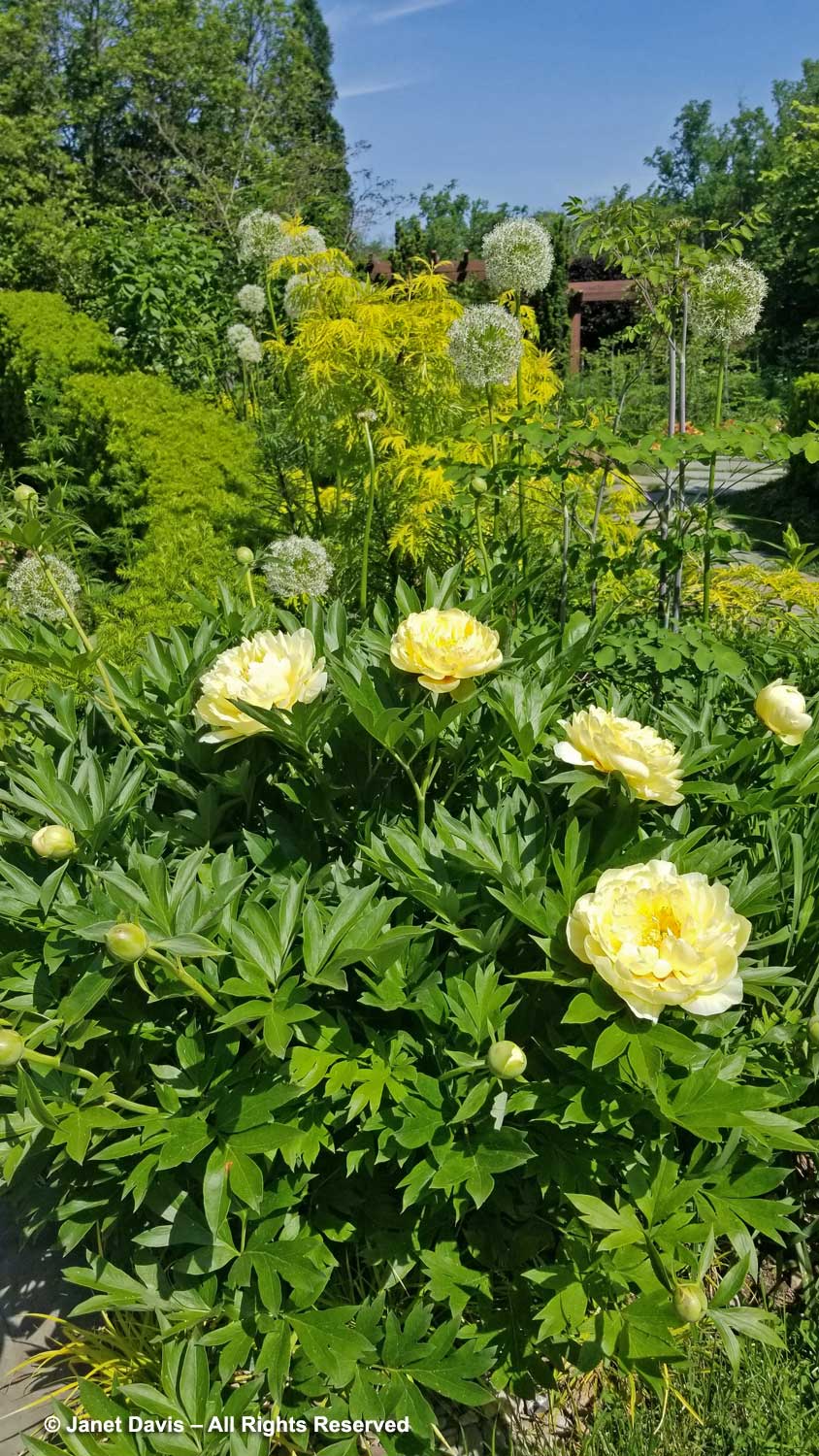
To one side of the Tennis Garden was the Long Border, which was using the cerise-pink perennial plume thistle (Cirsium rivulare ‘Atropurpureum’). Beside it was the catmint Nepeta ‘Hill Grounds’, with dame’s rocket (Hesperis matronalis) in the background.
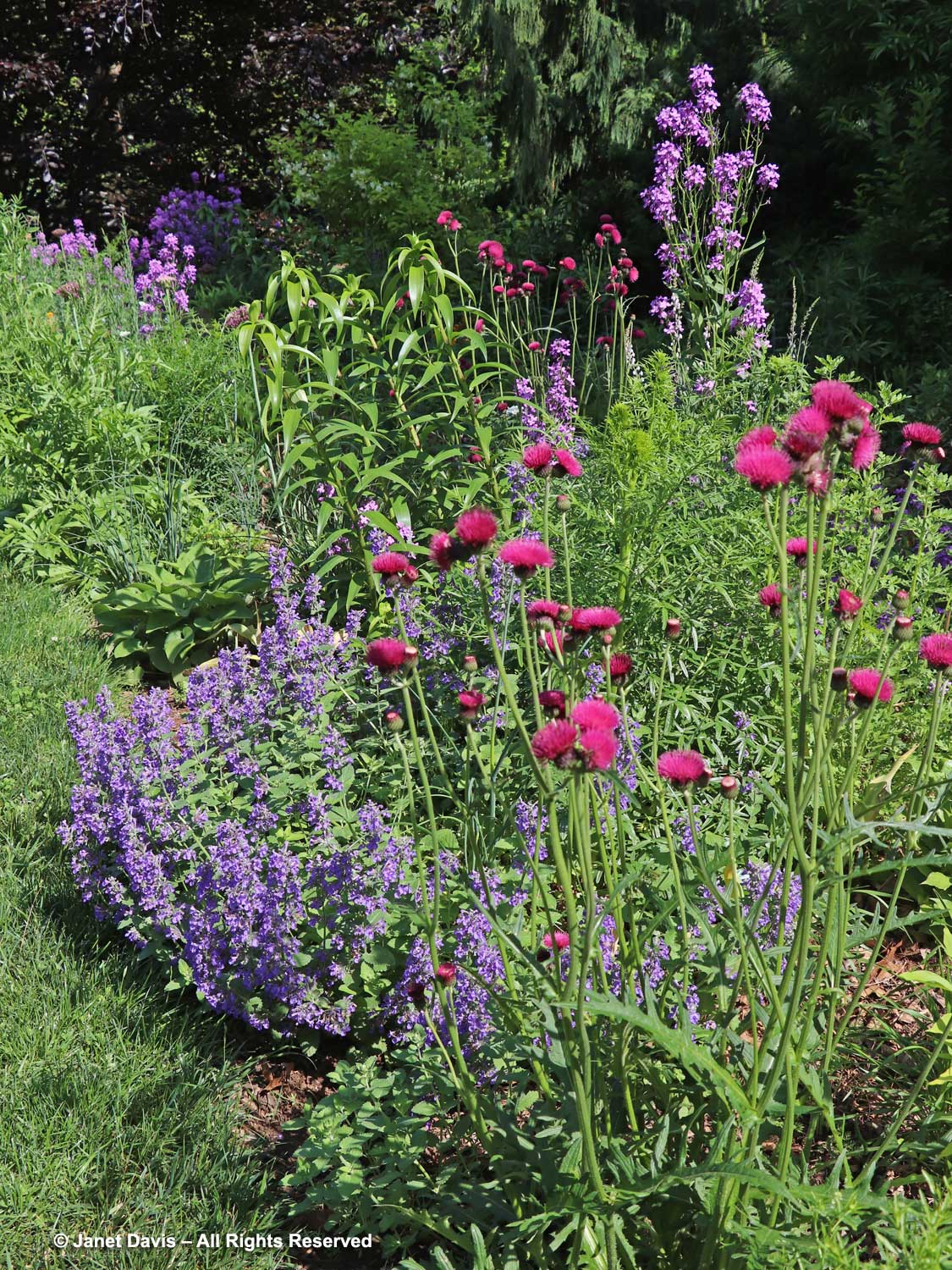
What a great combination, the plume thistle with bachelor’s buttons (Centaurea cyanus).
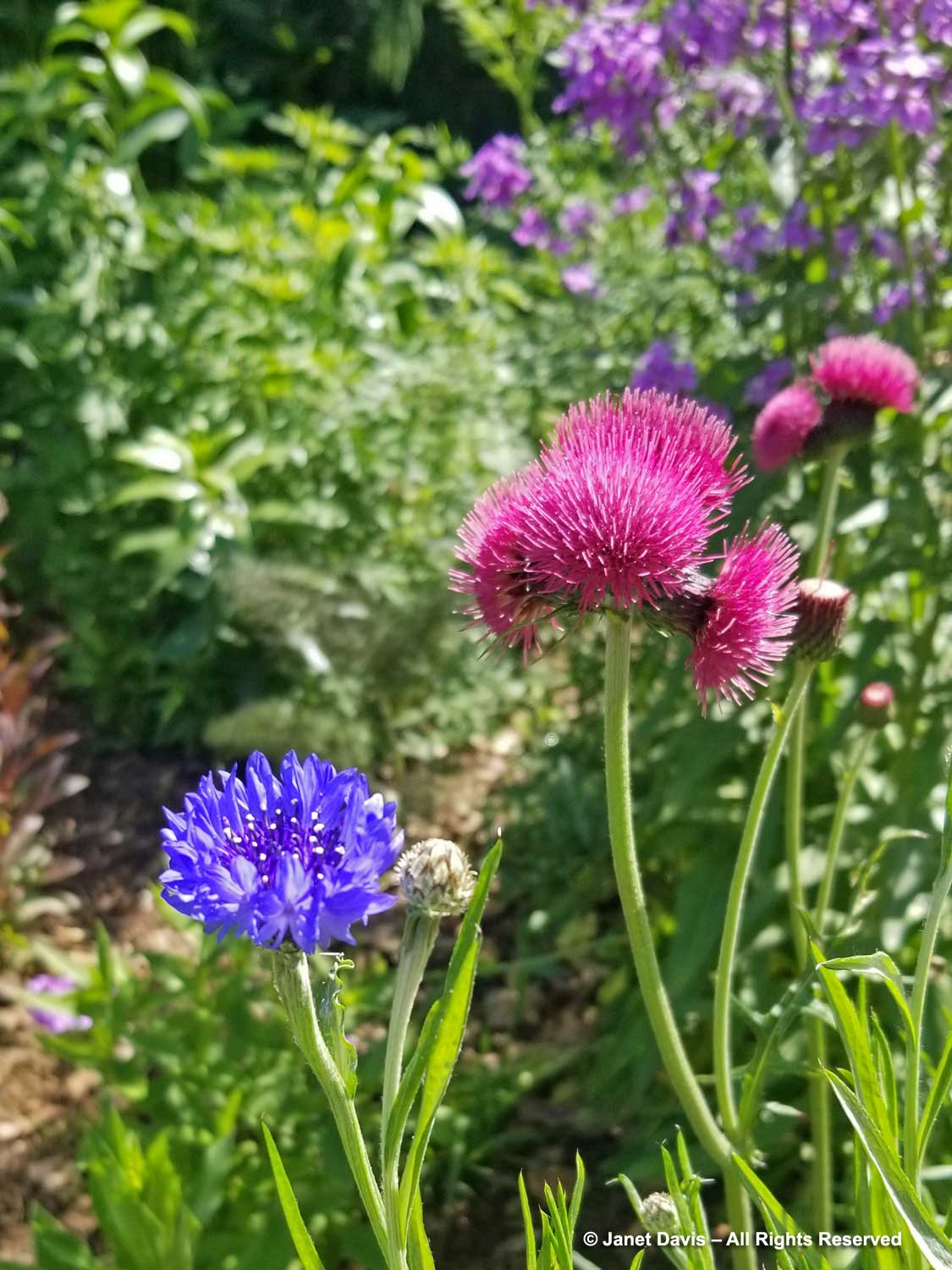
Moving beyond, the Cutting Garden was filled with Allium ‘Purple Rain‘, just fading, and little clouds of dame’s rocket (Hesperis matronalis)…..
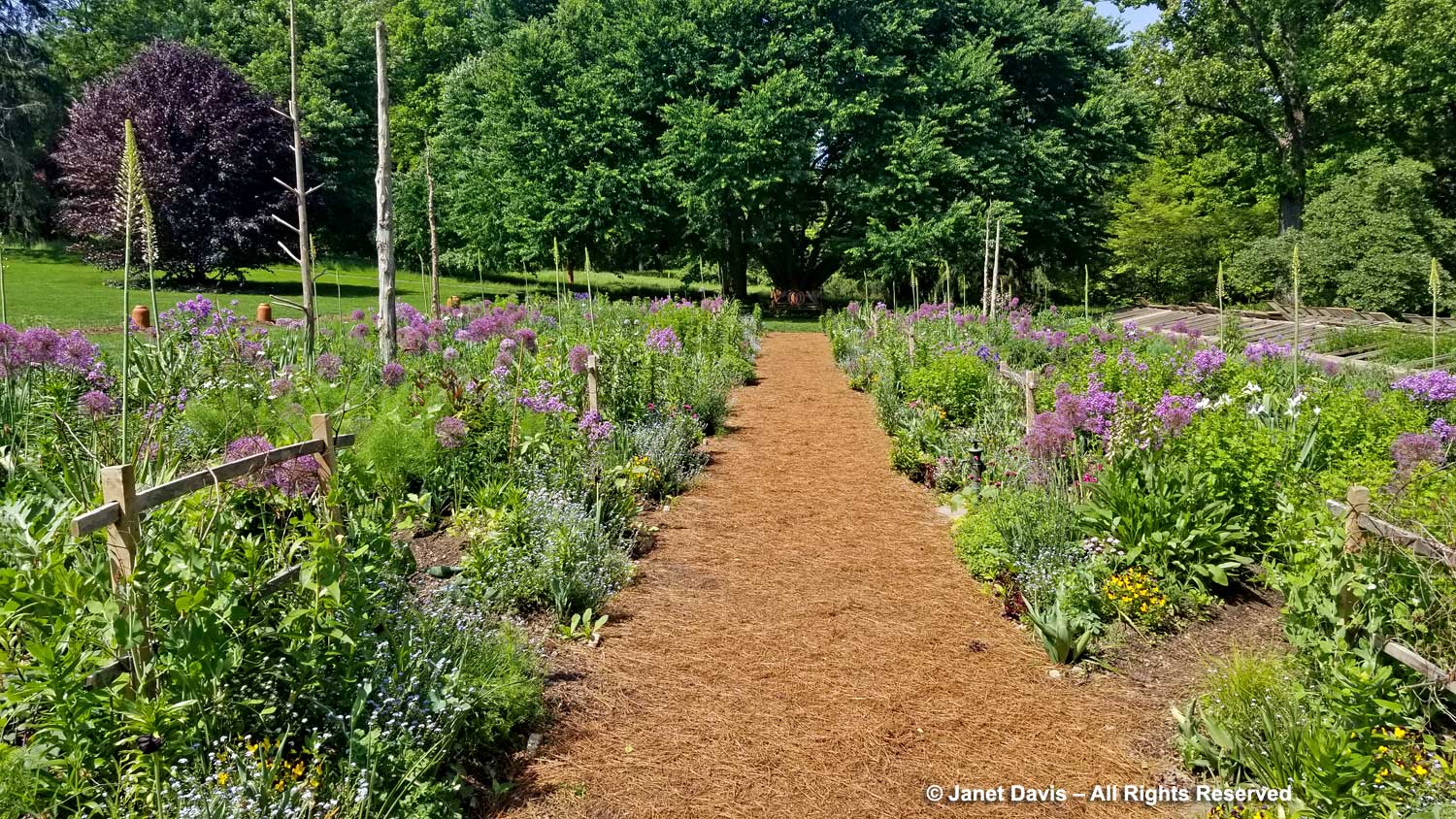
…. which looked lovely with peonies, like ‘Prairie Moon’, below.
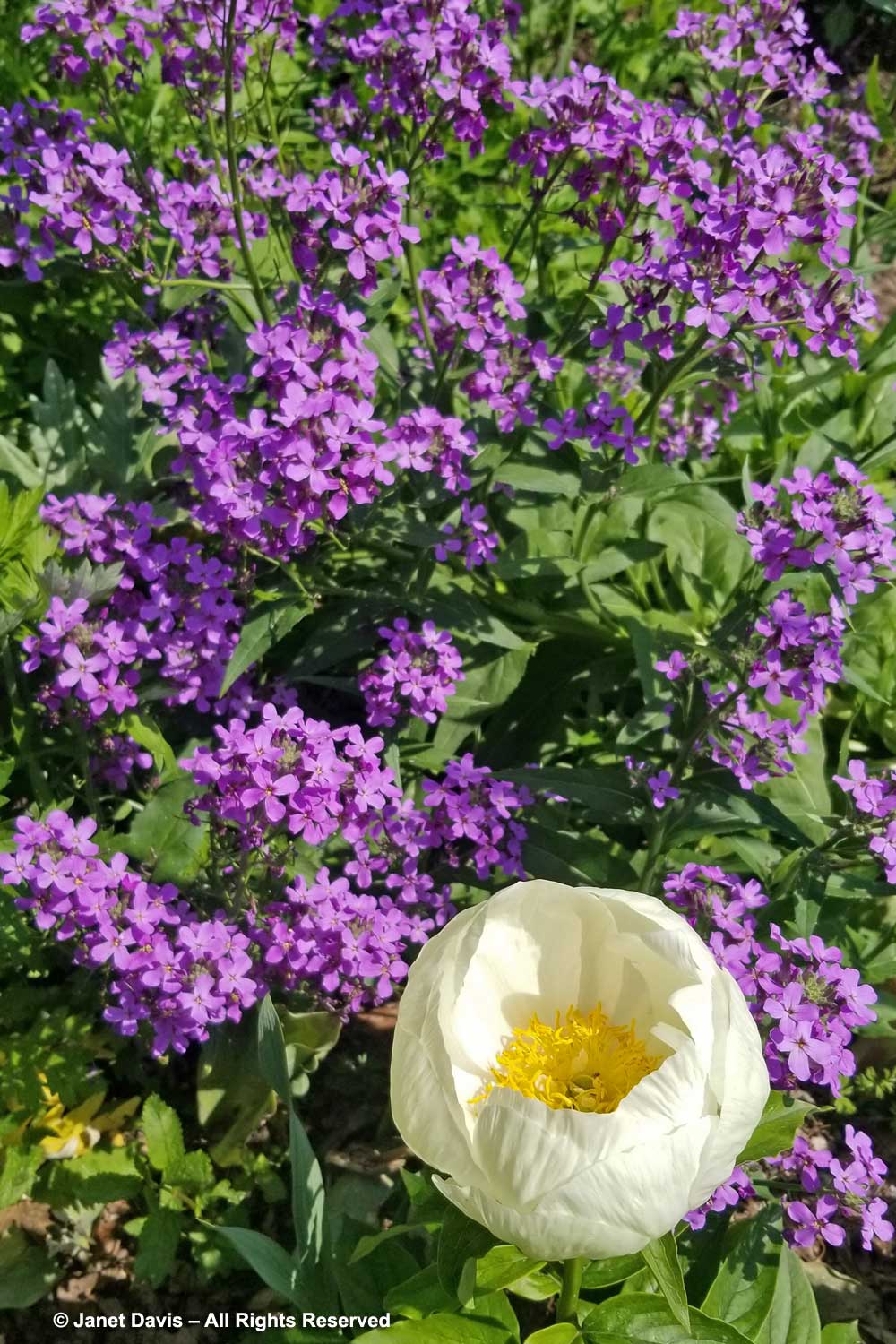
There is an abundance of striking furniture at Chanticleer, including this bench under a giant katsura tree near the Cutting Garden. Note that the bench has a vegetable motif, with its beet and pumpkin back and carrot legs!
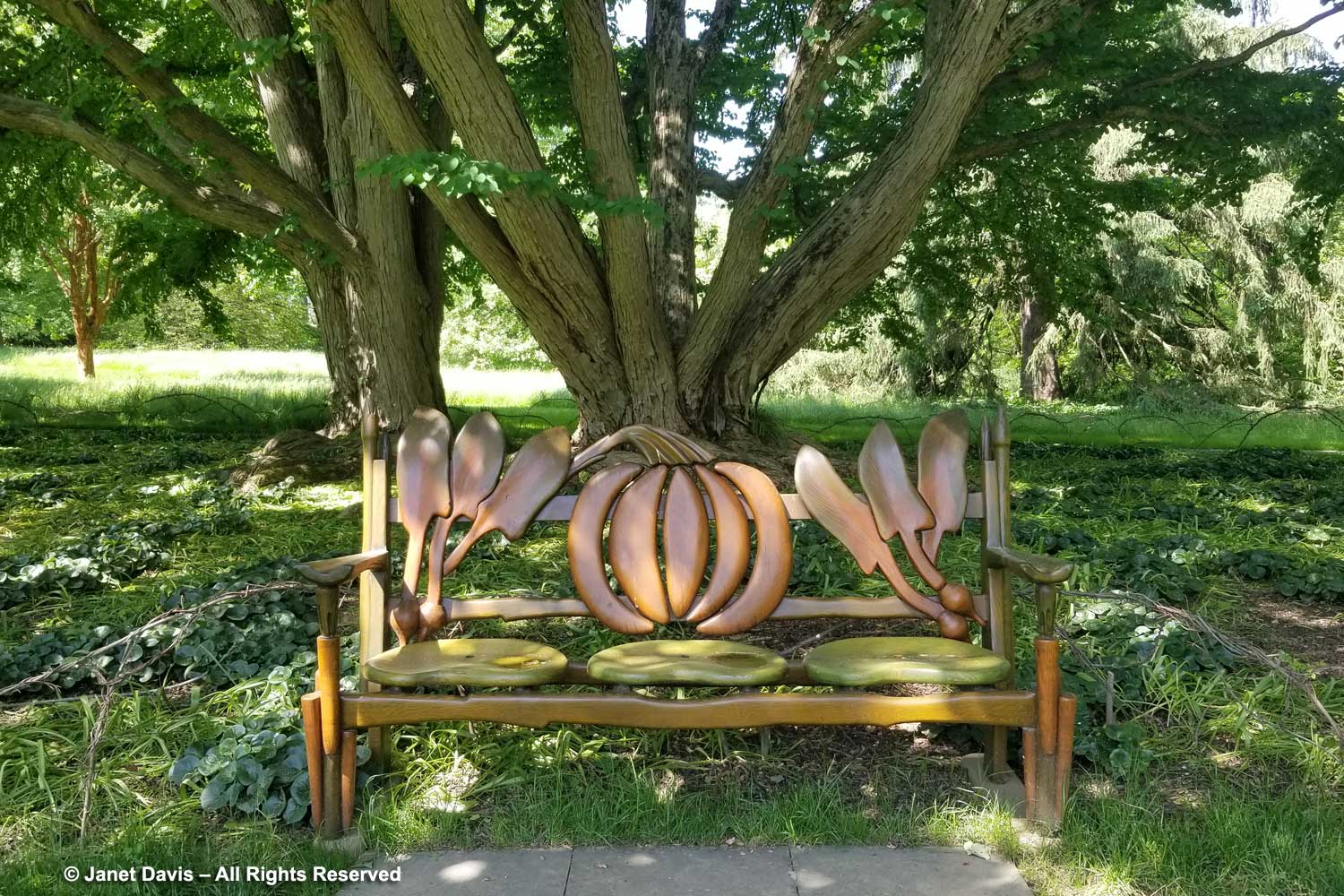
Speaking of edibles, the Vegetable Garden was at its sumptuous peak….
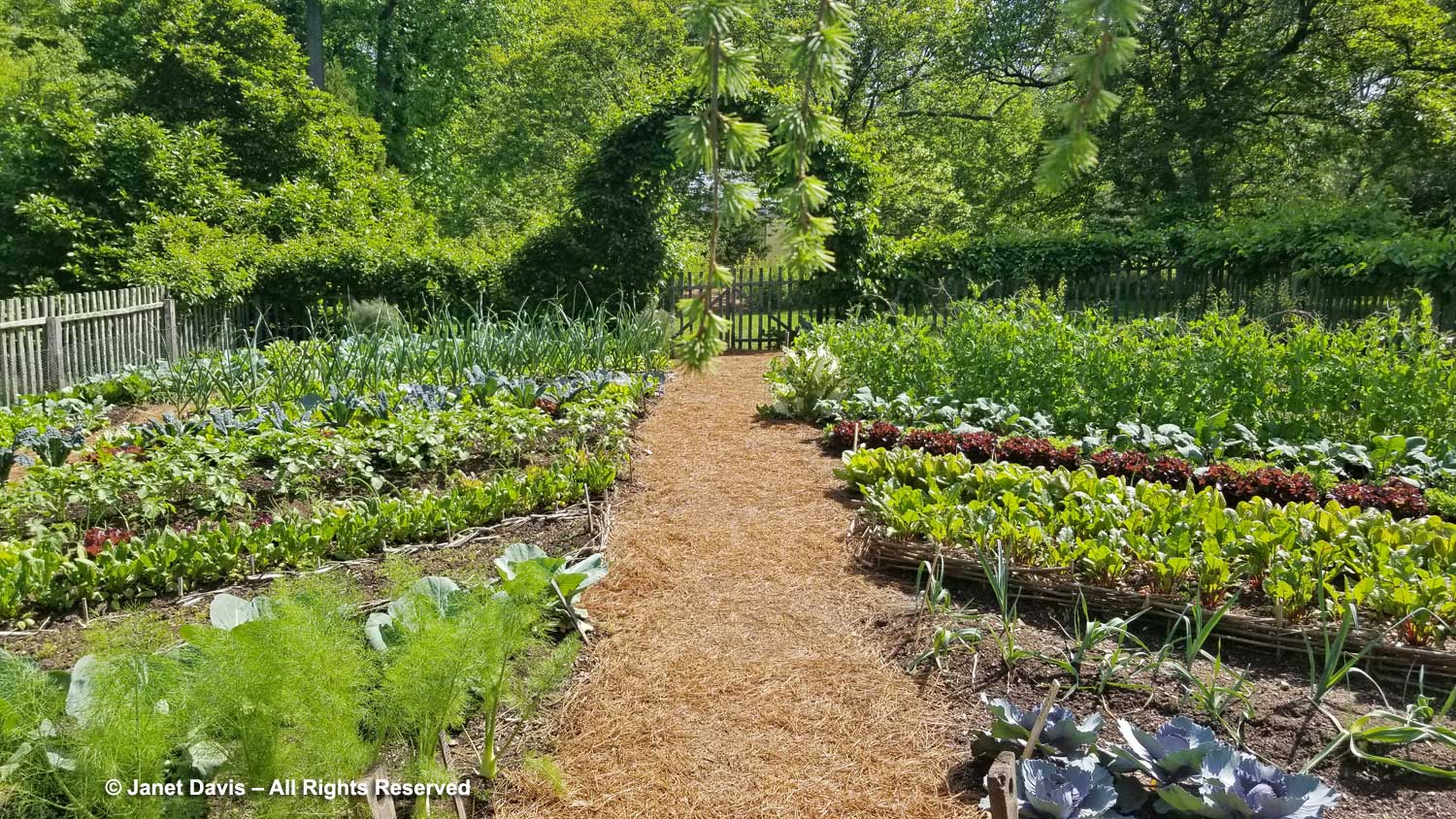
…. including oakleaf lettuce and lots of brassicas.
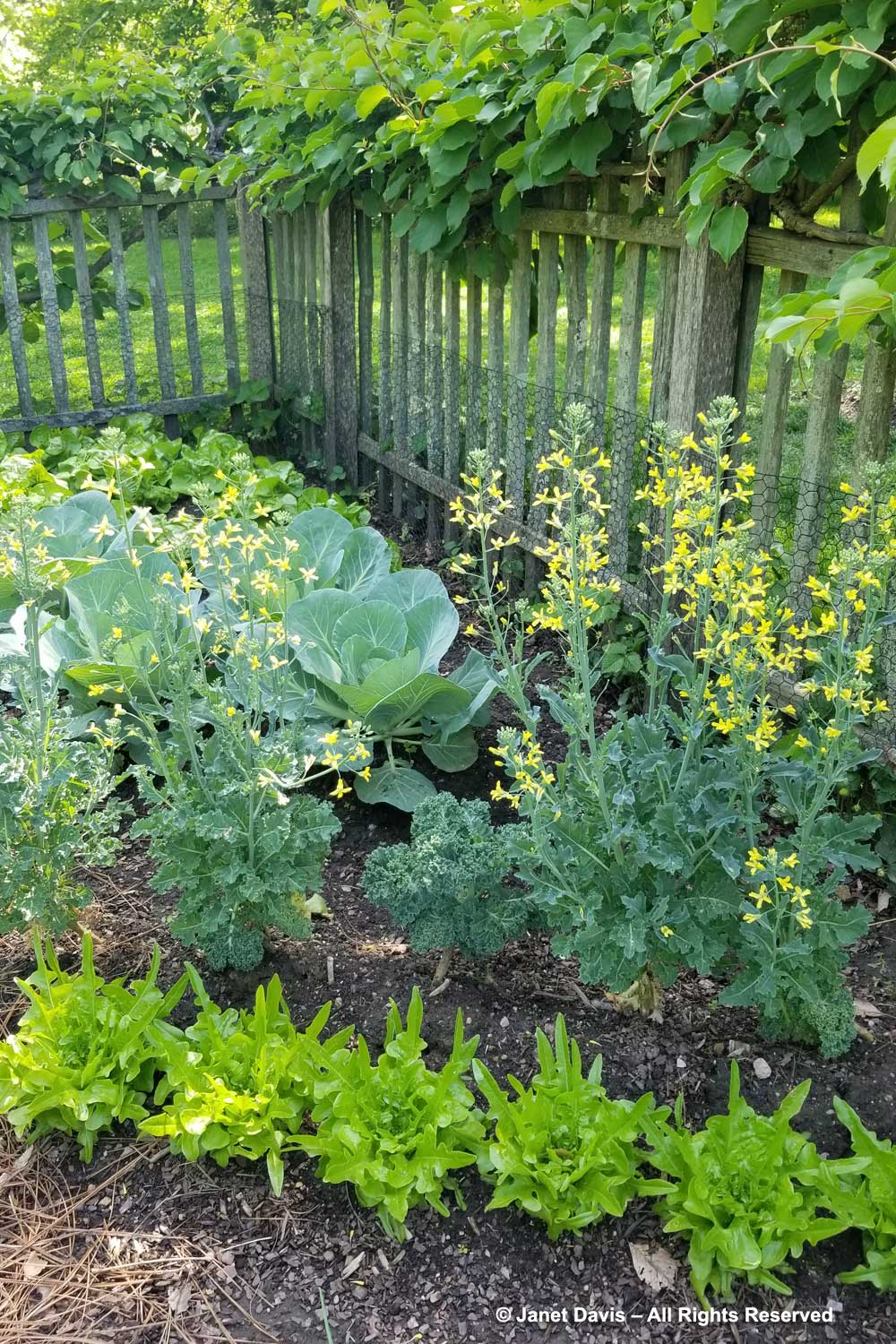
And though most of the strawberries were still green, I managed to spy a few that were almost ready for eating!
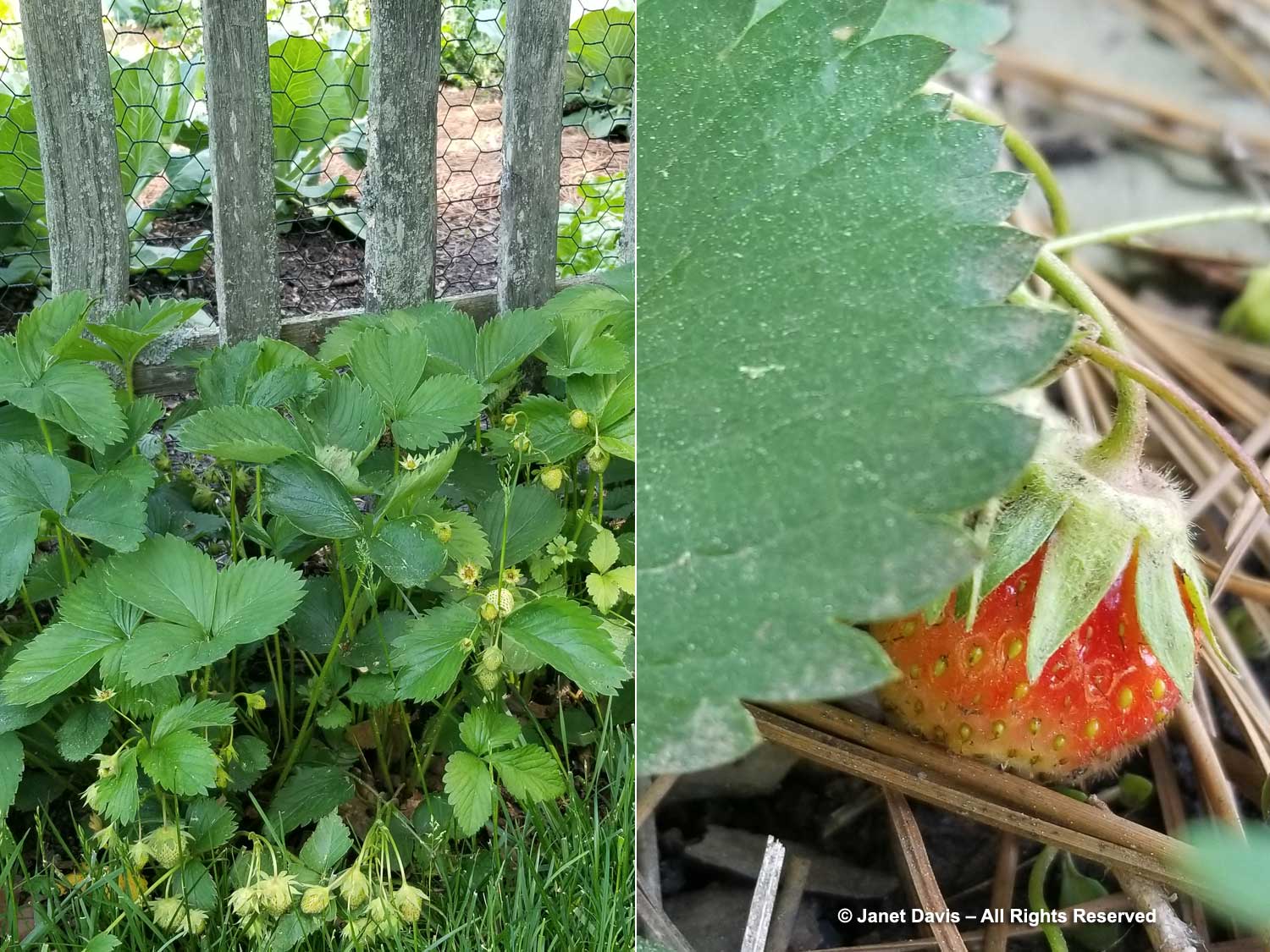
My favourite transition at Chanticleer is the Fallen Tree Bridge, fabricated by Przemek Walczak, who is also the horticulturist for Bell’s Woodland and the upper Creek Garden beyond. The bridge has been enveloped in greenery since the last time I saw it in 2014.
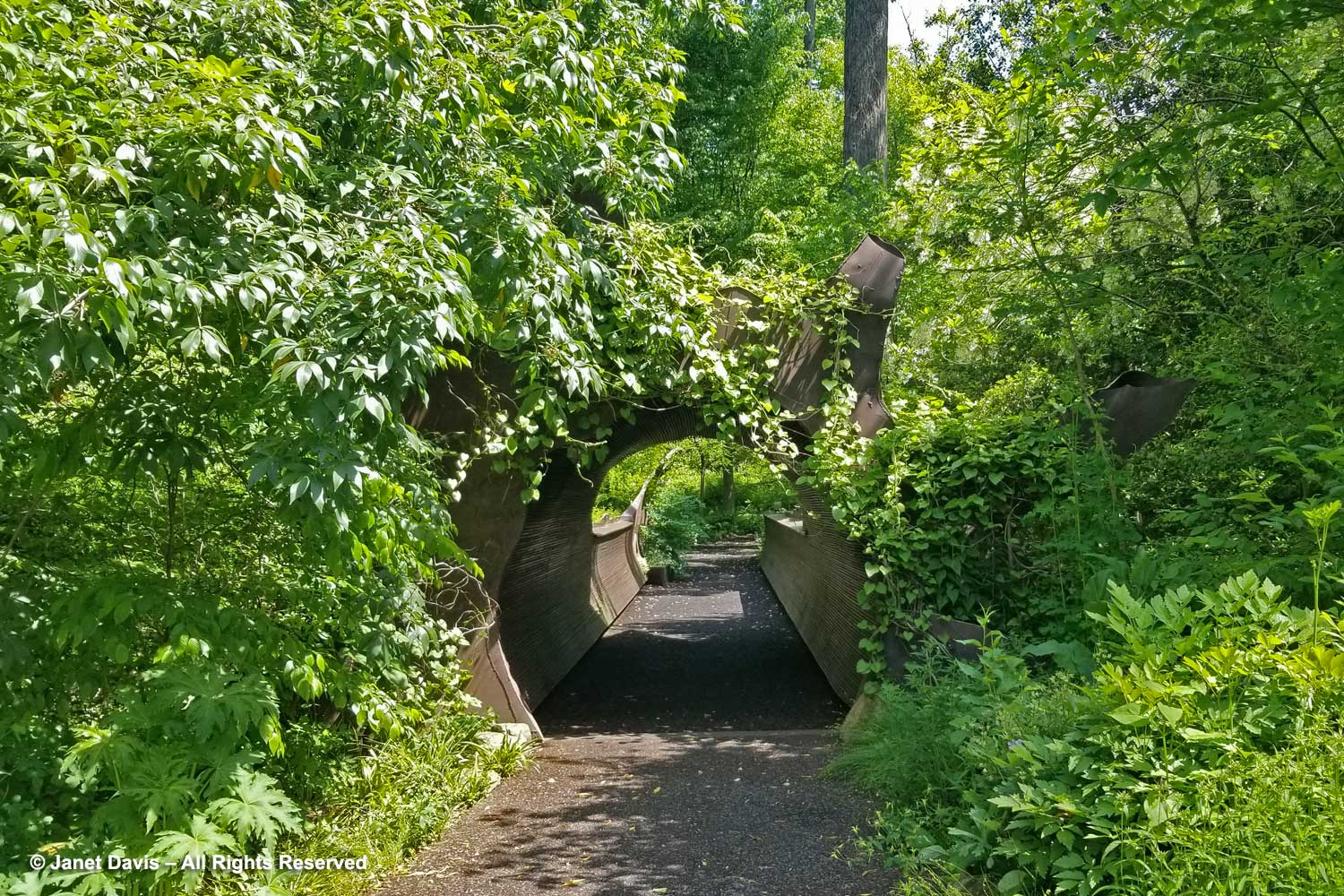
Isn’t this the coolest interior? It leads from the sunny, tended garden areas near the Cutting Garden into the cool, shady woodland where’s Bell’s Run Creek flows.
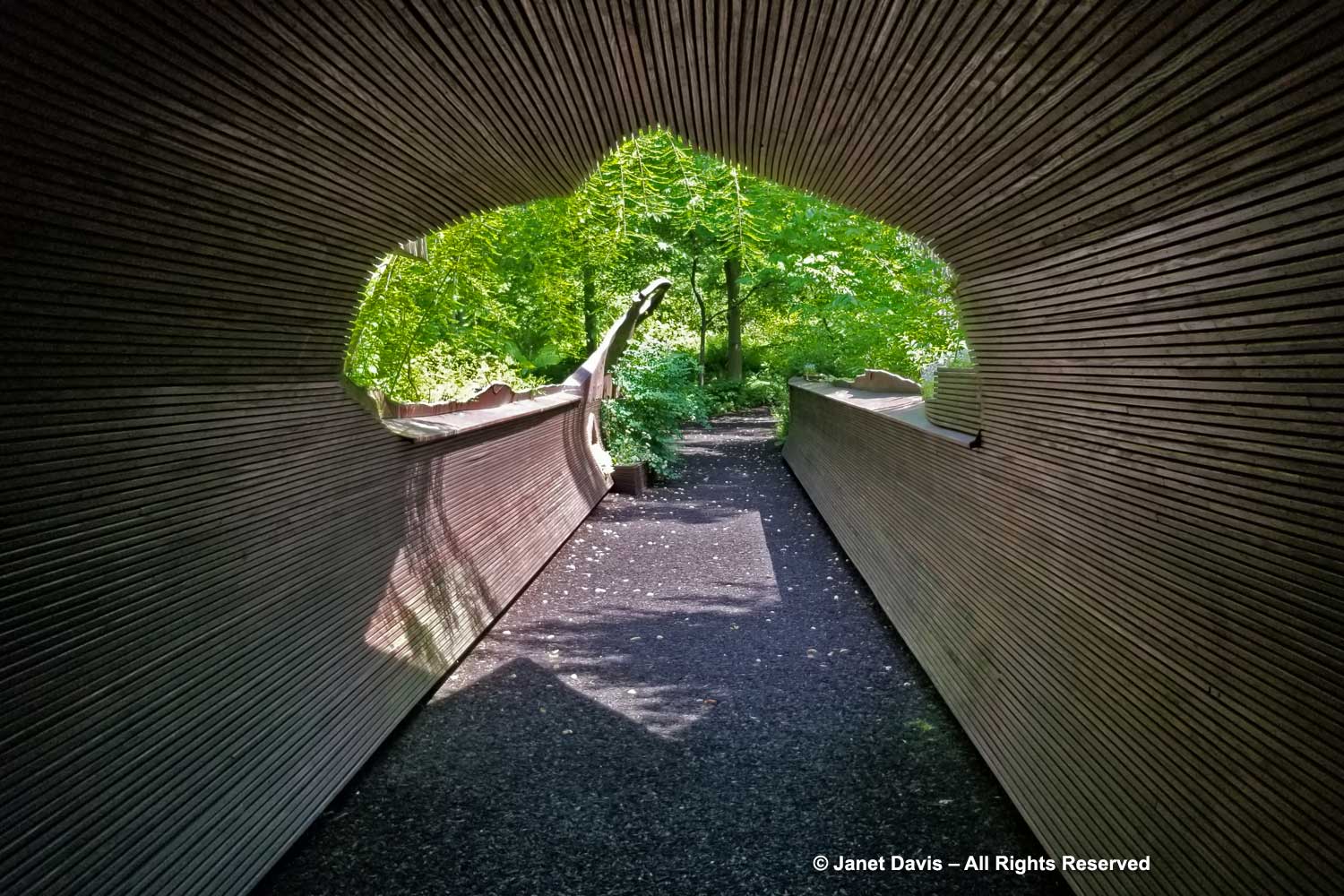
A planter is inset into the strut at the shady end of the bridge, complete with a lots of ferns and sedges and a nesting house for leafcutter bees. These are the thoughtful details that make Chanticleer so special.
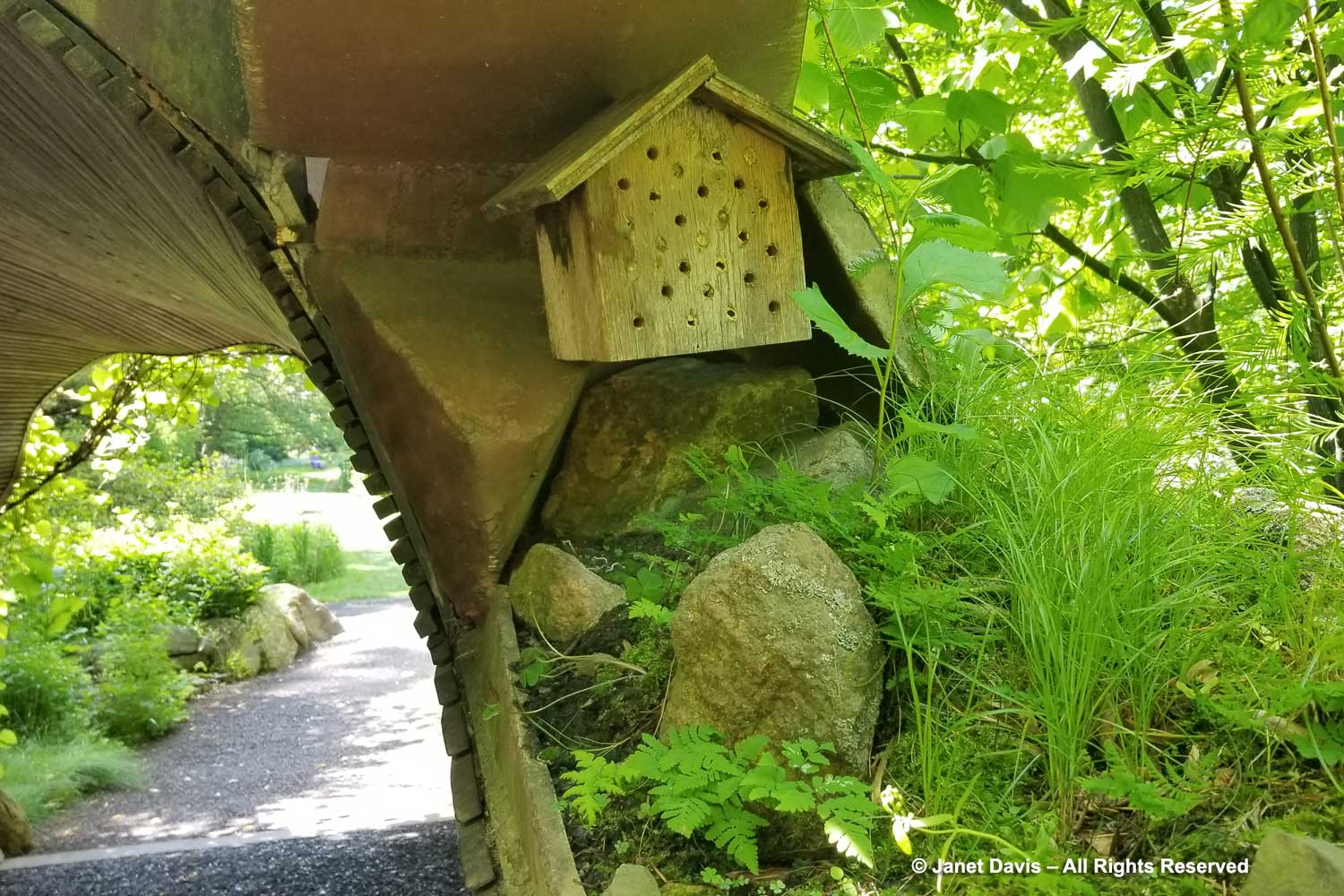
I knew which trees were overhead because of the beautiful blossoms of tuliptree (Liriodendron tulipifera) scattered on the ground.
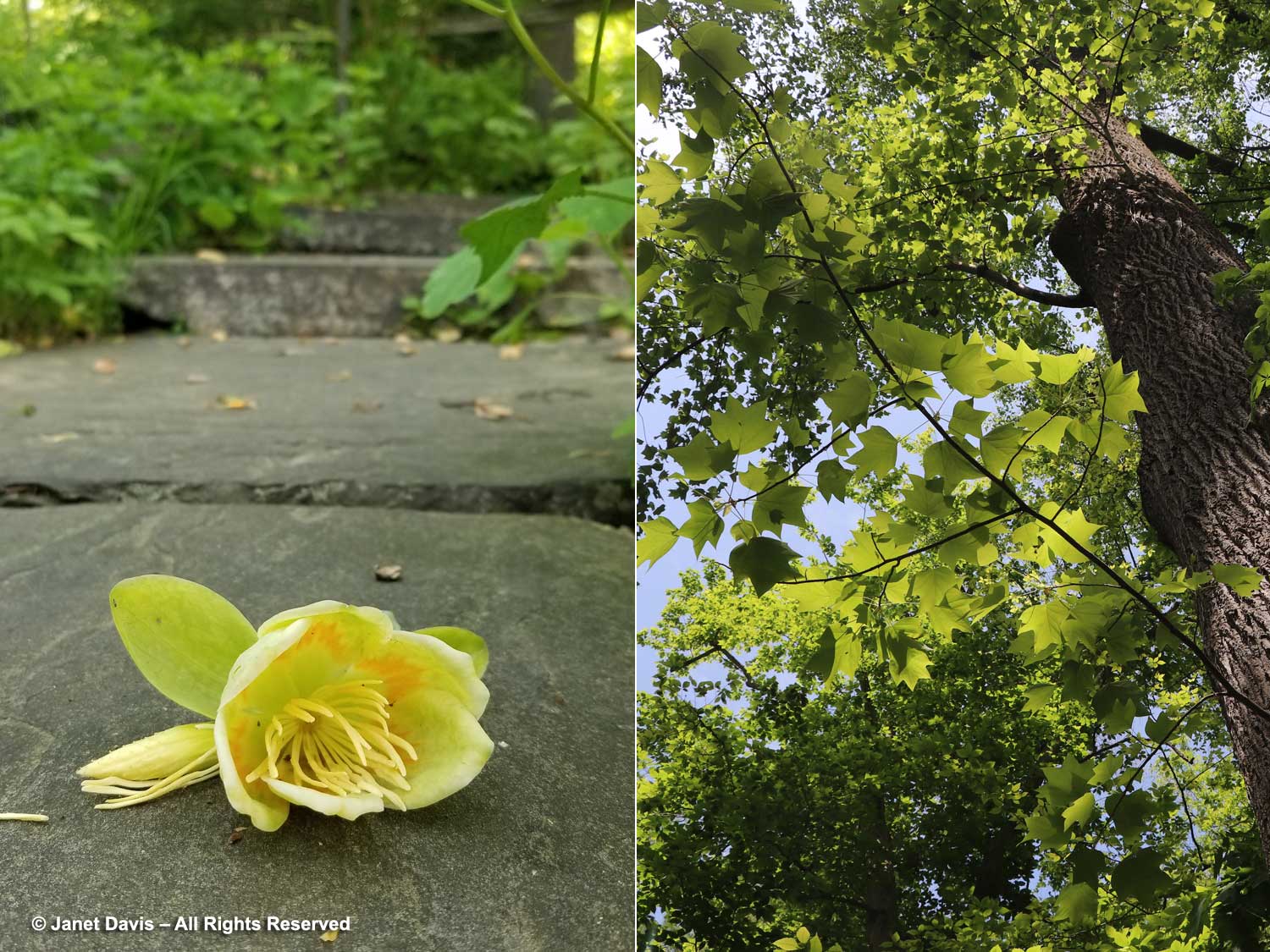
I wish I’d had several more hours at Chanticleer to explore the plants of Bell’s Woodland carefully – what a treasure of natives, including….
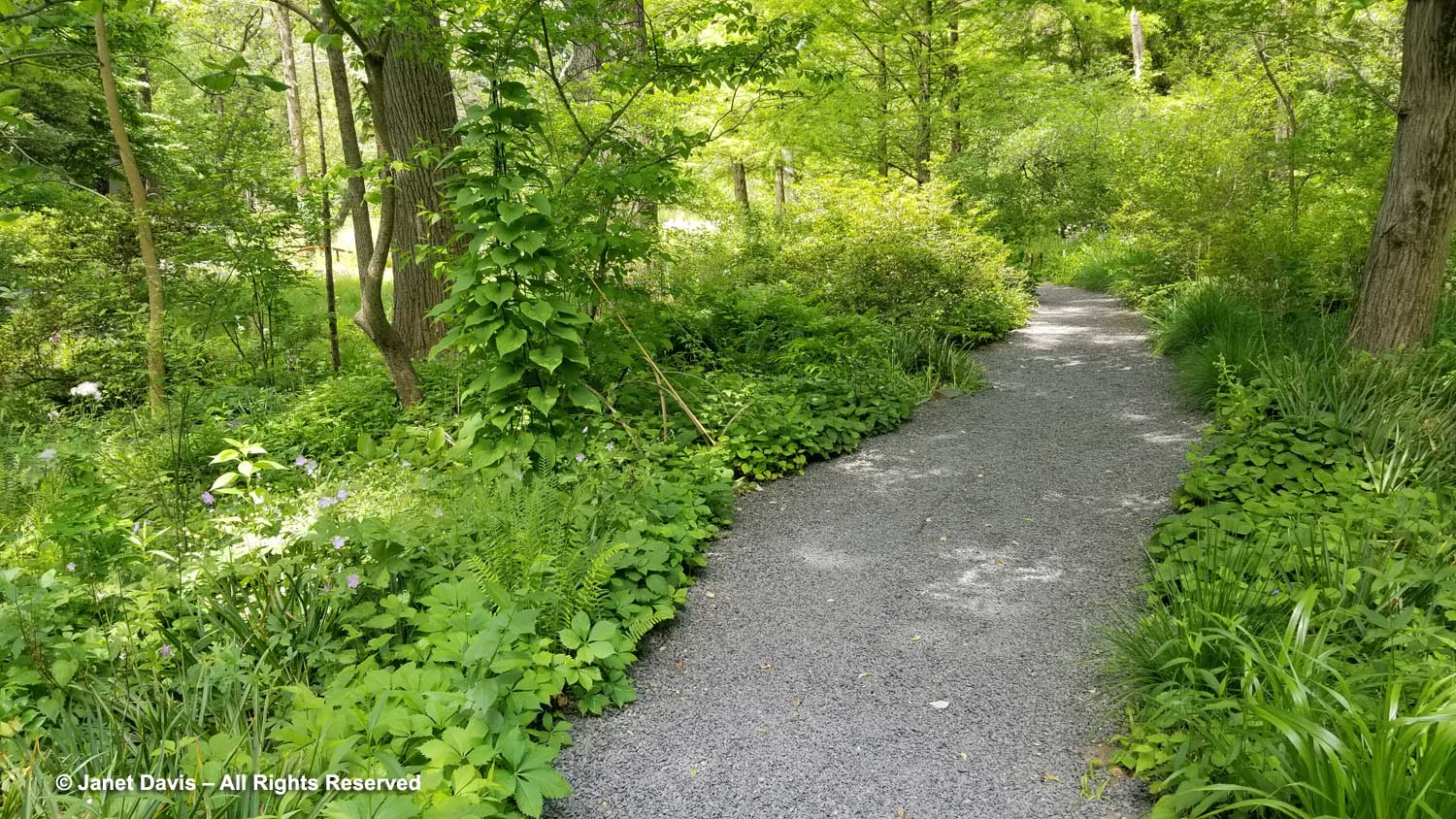
….. large-flowered valerian (Valeriana pauciflora), below, with northern maidenhair fern (Adiantum pedatum).
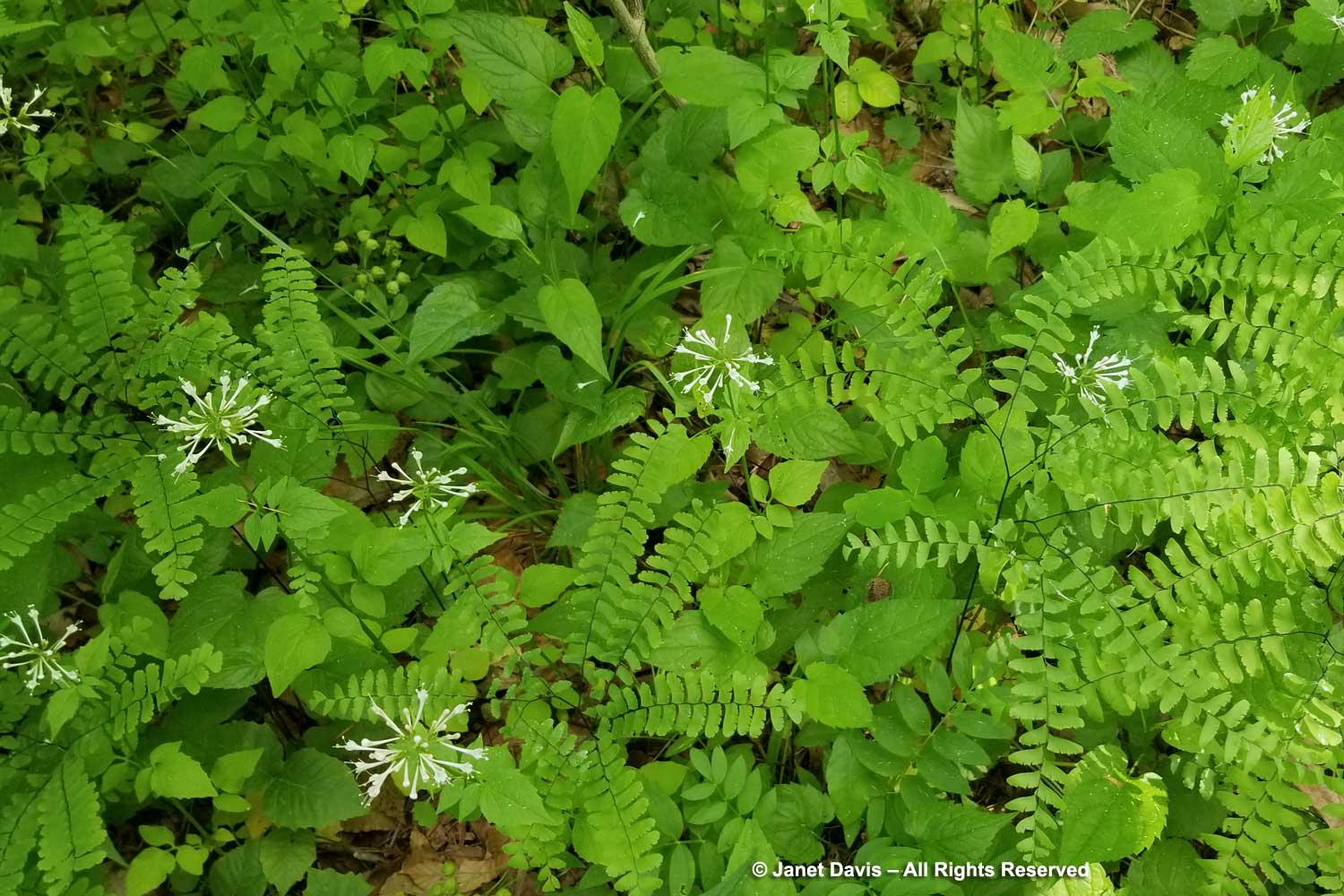
Bell’s Woodland has a large collection of clematis vines, all arranged on rustic supports.
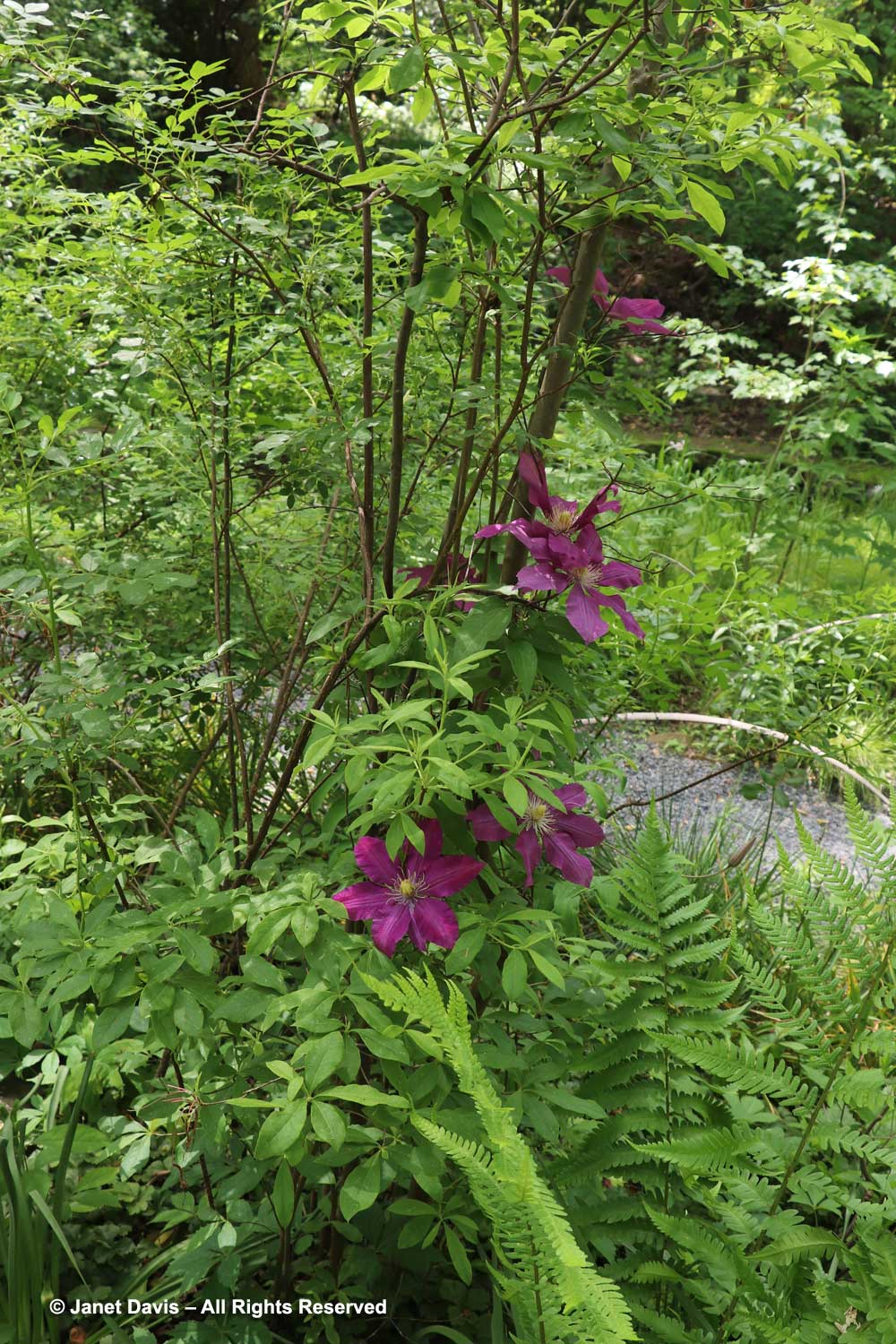
Bell’s Run Creek runs through the woods and features myriad marginal aquatic plants, including yellow flag (Iris pseudacorus) with native yellow pimpernel (Taenidia integerrima).
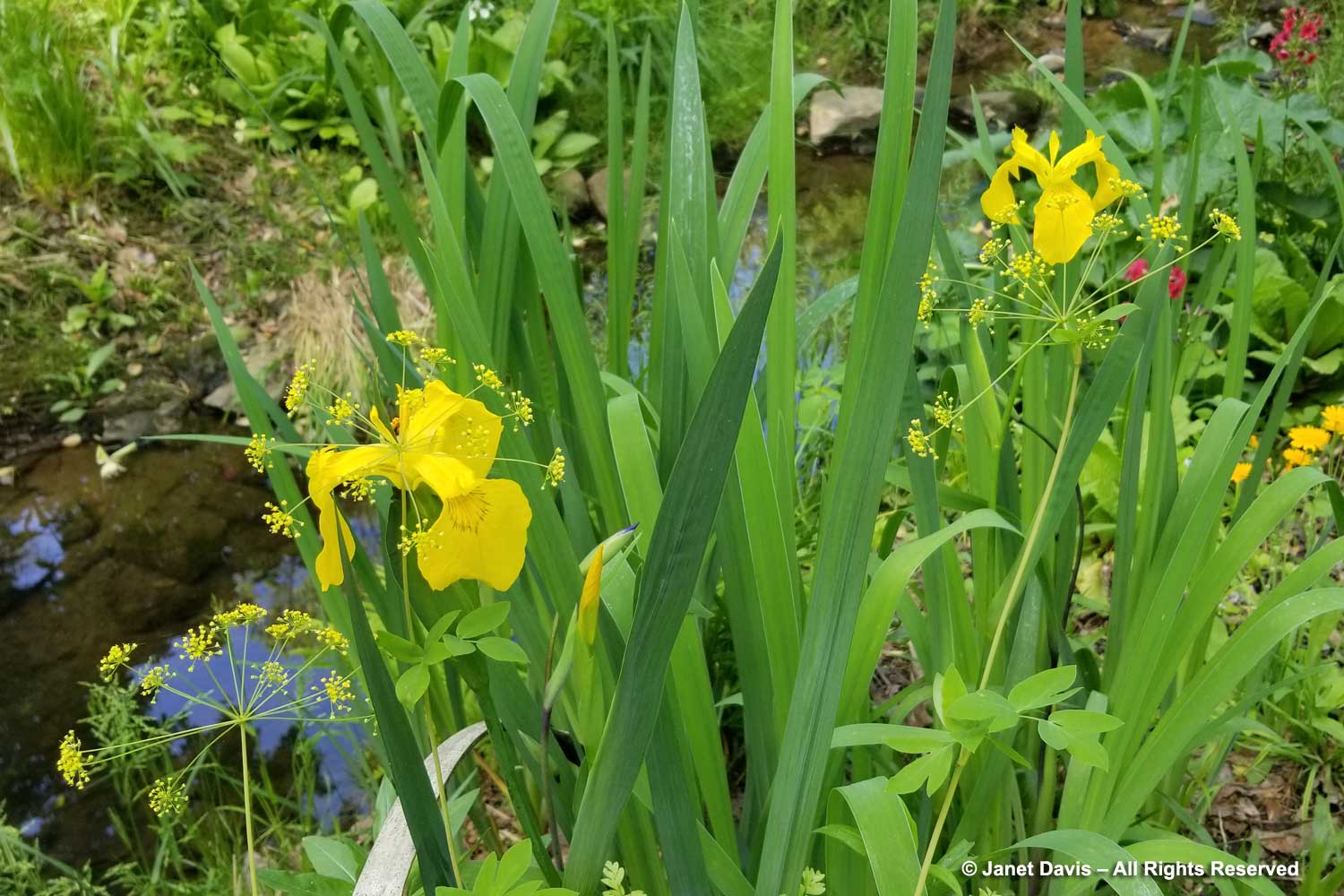
Just when I thought it might be nice to sit and rest my feet, a bench appeared beside a sparkling fountain. Surrounding me were ferns and carpets of candelabra primroses (Primula japonica).
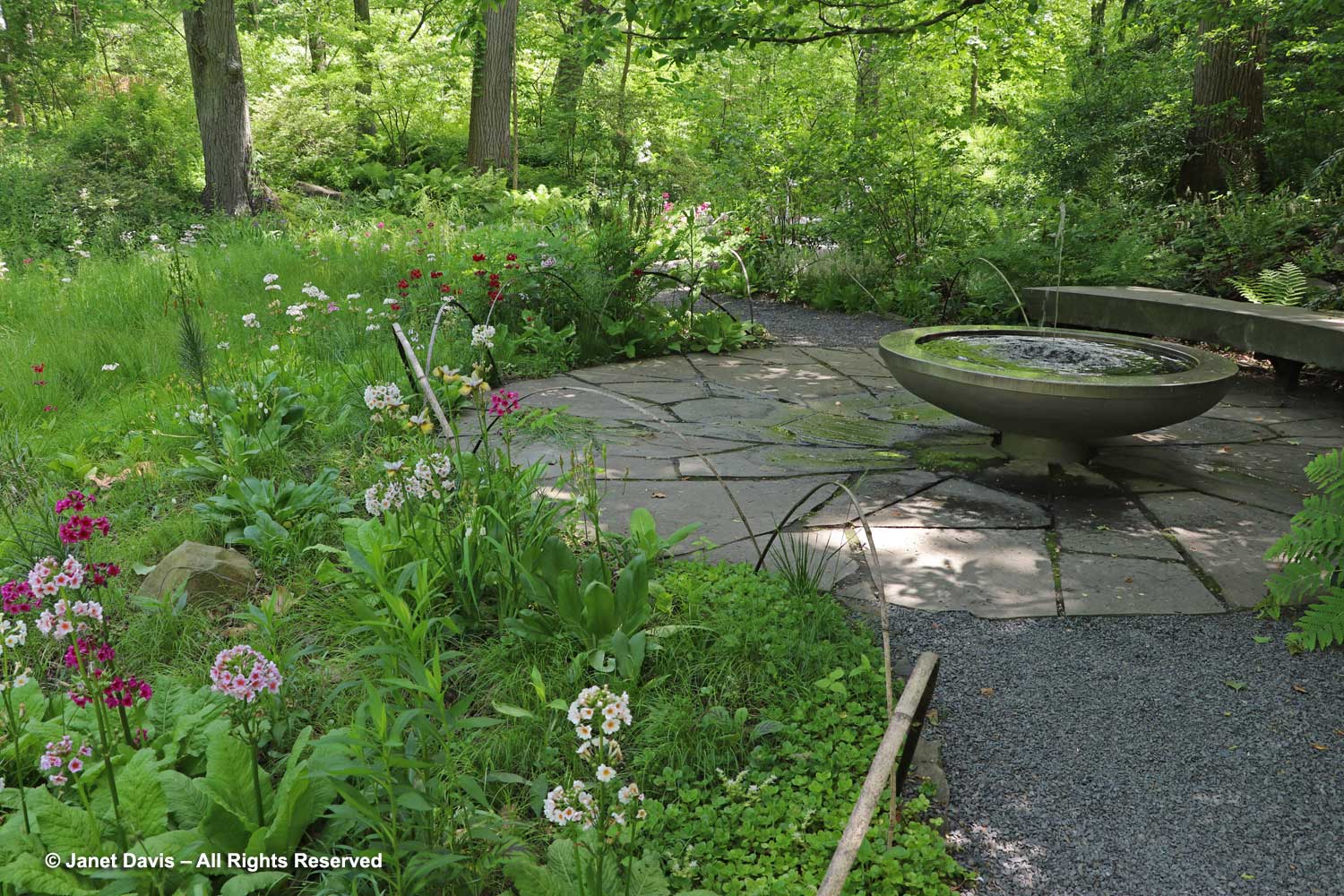
A handsome bridge crossed Bell’s Creek.
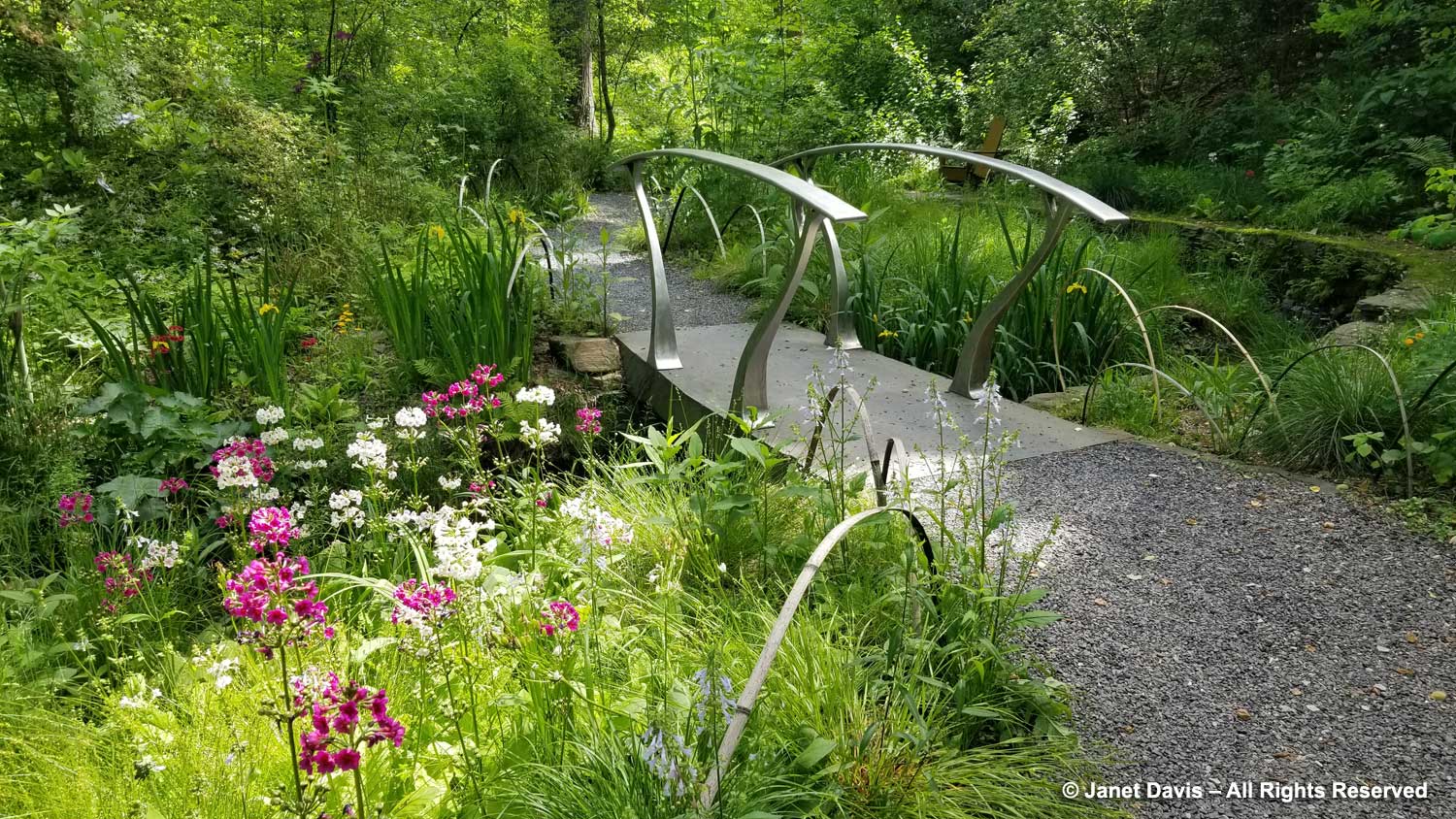
Scattered amongst the primroses were moisture-loving perennials, including Siberian iris (I. sibirica ‘Here be Dragons’), below.
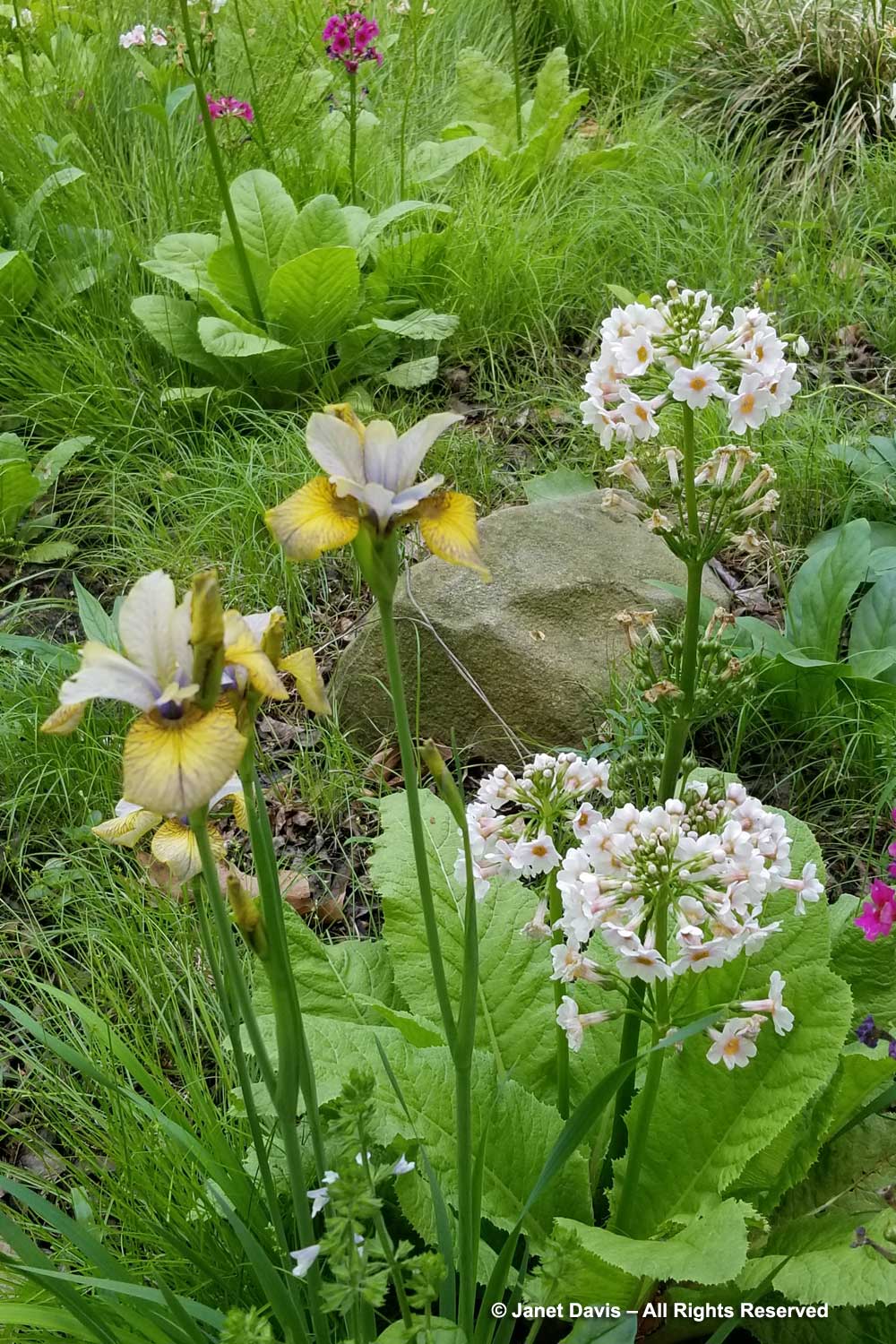
Chanticleer uses the fertile fronds of ostrich ferns (Matteucia struthiopteris) to mark the perimeters of certain plantings so gardeners mowing the turf paths don’t damage emerging plants like primroses (or, earlier in spring, camassias).
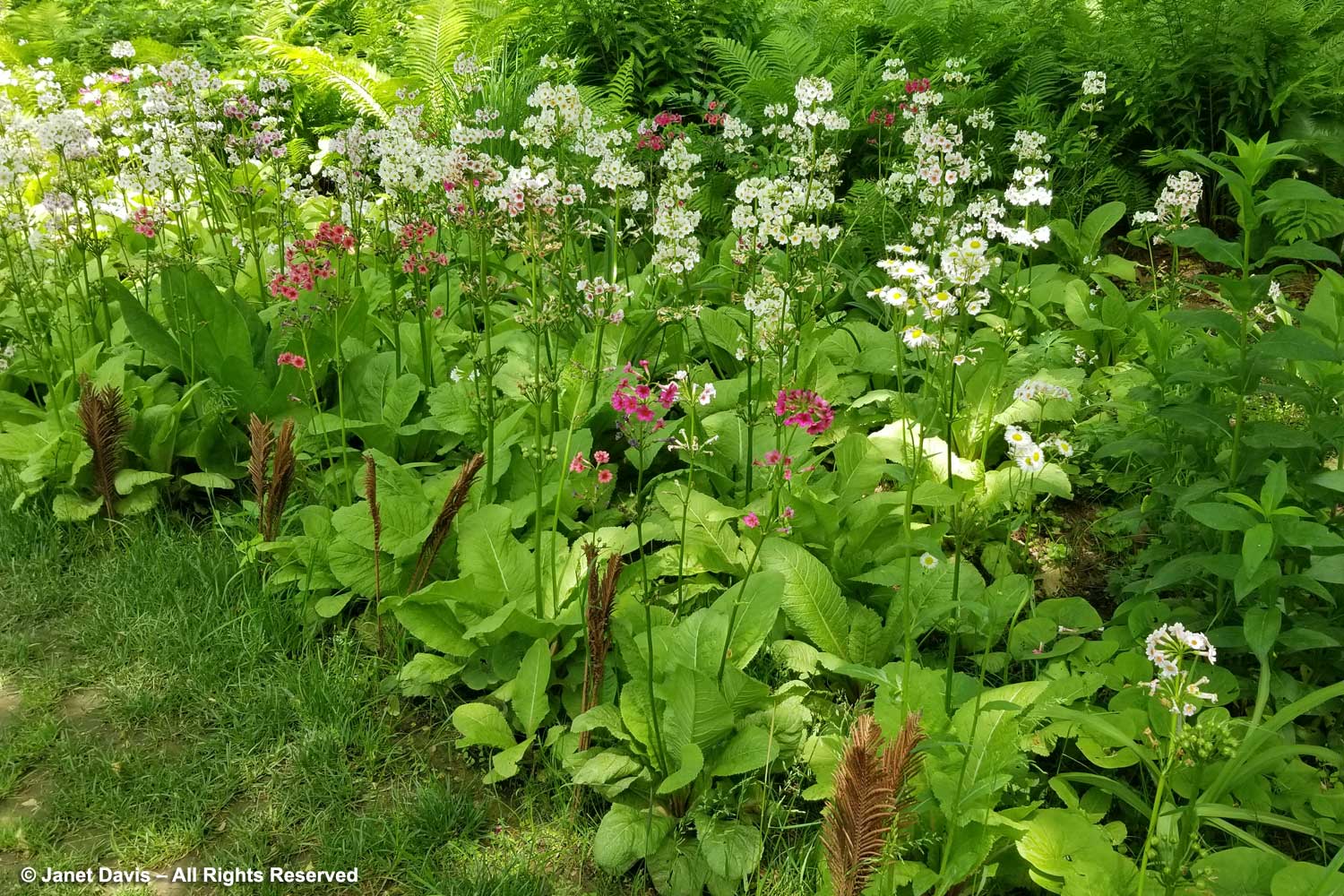
I don’t know of any other garden that pays so much attention to subtle ways to educate the public, like the plant lists that are available to peruse in each garden area. They can be purchased as paper copies, but are also published online each year. The detailed plant lists obviate the need for plant labels.
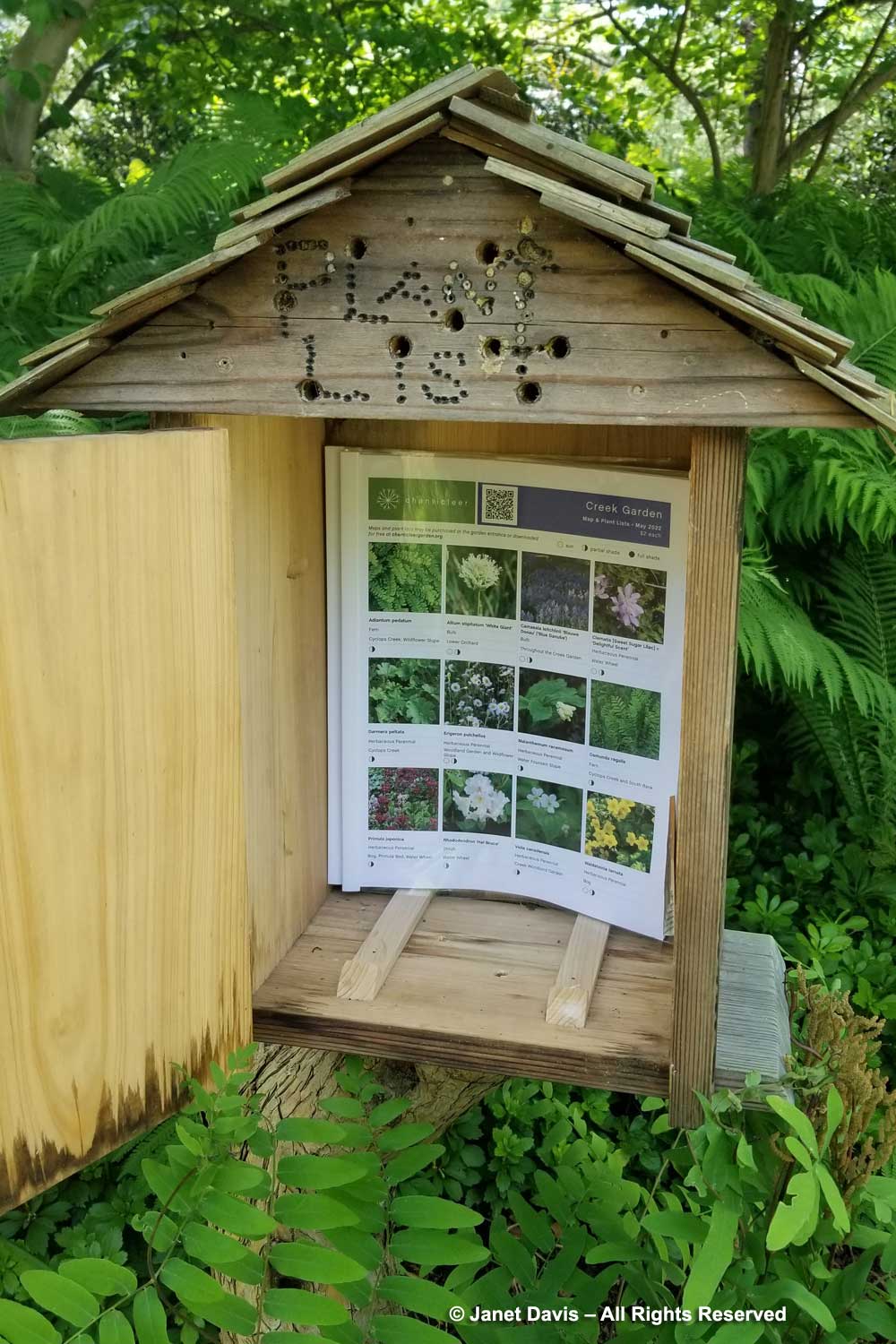
The waterwheel is a relic from the Rosengartens’ time at Chanticleer. It was installed in the 1940s to lift water from the creek to the ornamental fountains on the house terraces. Today, it merely pumps water to the little fountain in my photo above. Note the delightful iron fence with the ‘fern frond’ motif that echoes the waterwheel’s shape. This is the work of horticulturists Przemck Walczak and Joe Henderson, who crafted it in the garden’s metal shop.
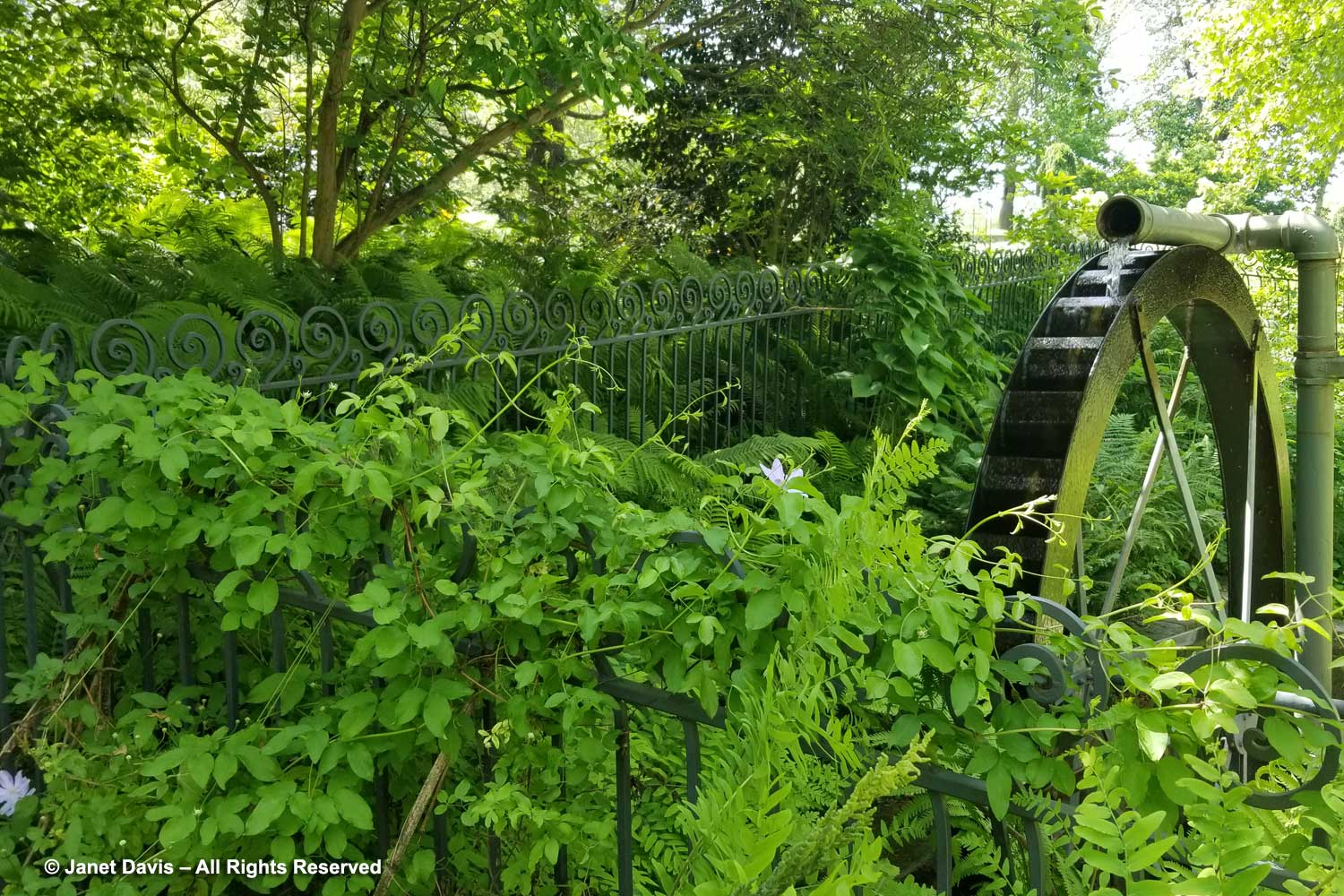
Chanticleer is a master class in paving styles, including this path through the primroses. And I loved the split bamboo hoops inserted as edging.
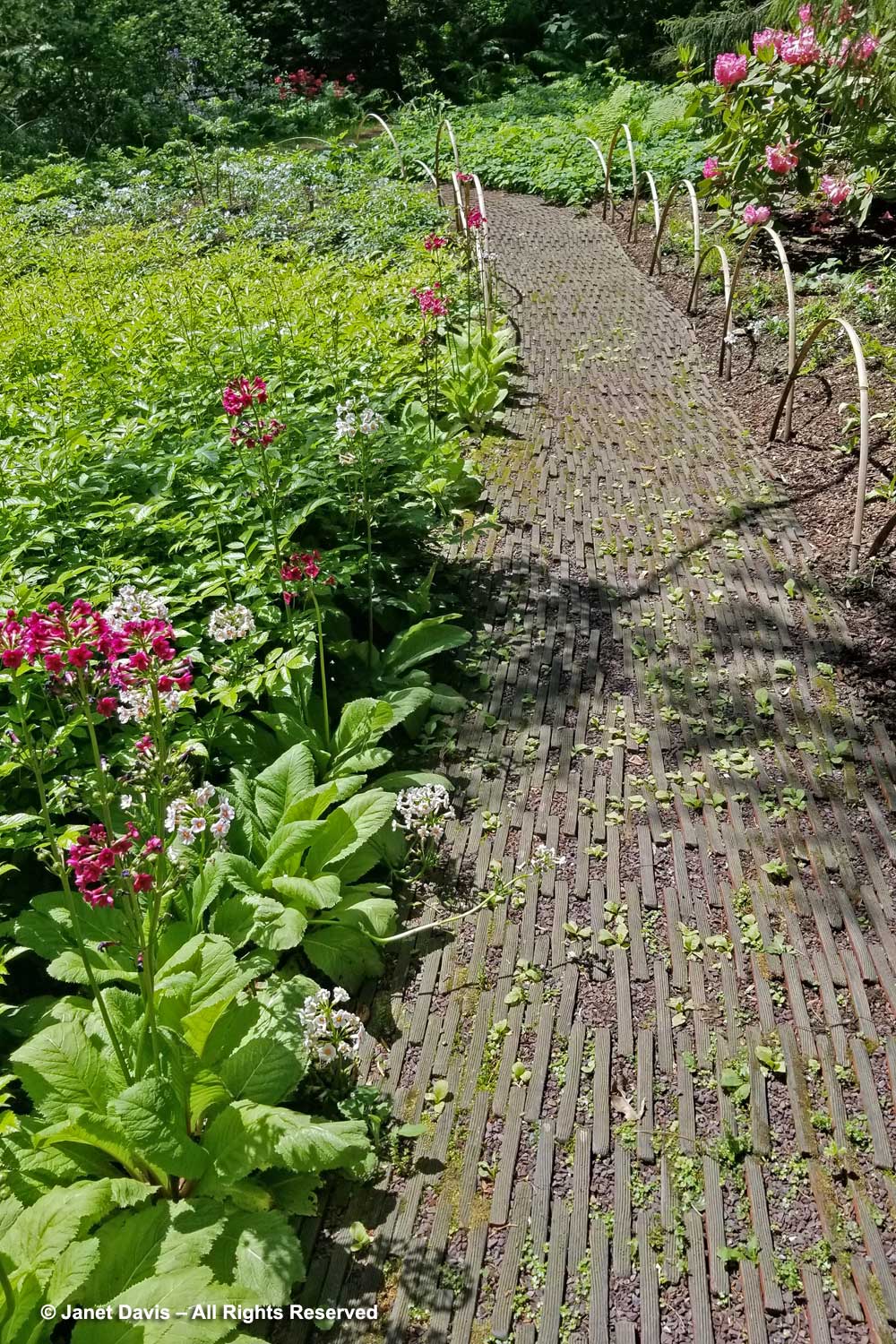
What a tranquil feeling I had, walking through the Creek Garden woodland……
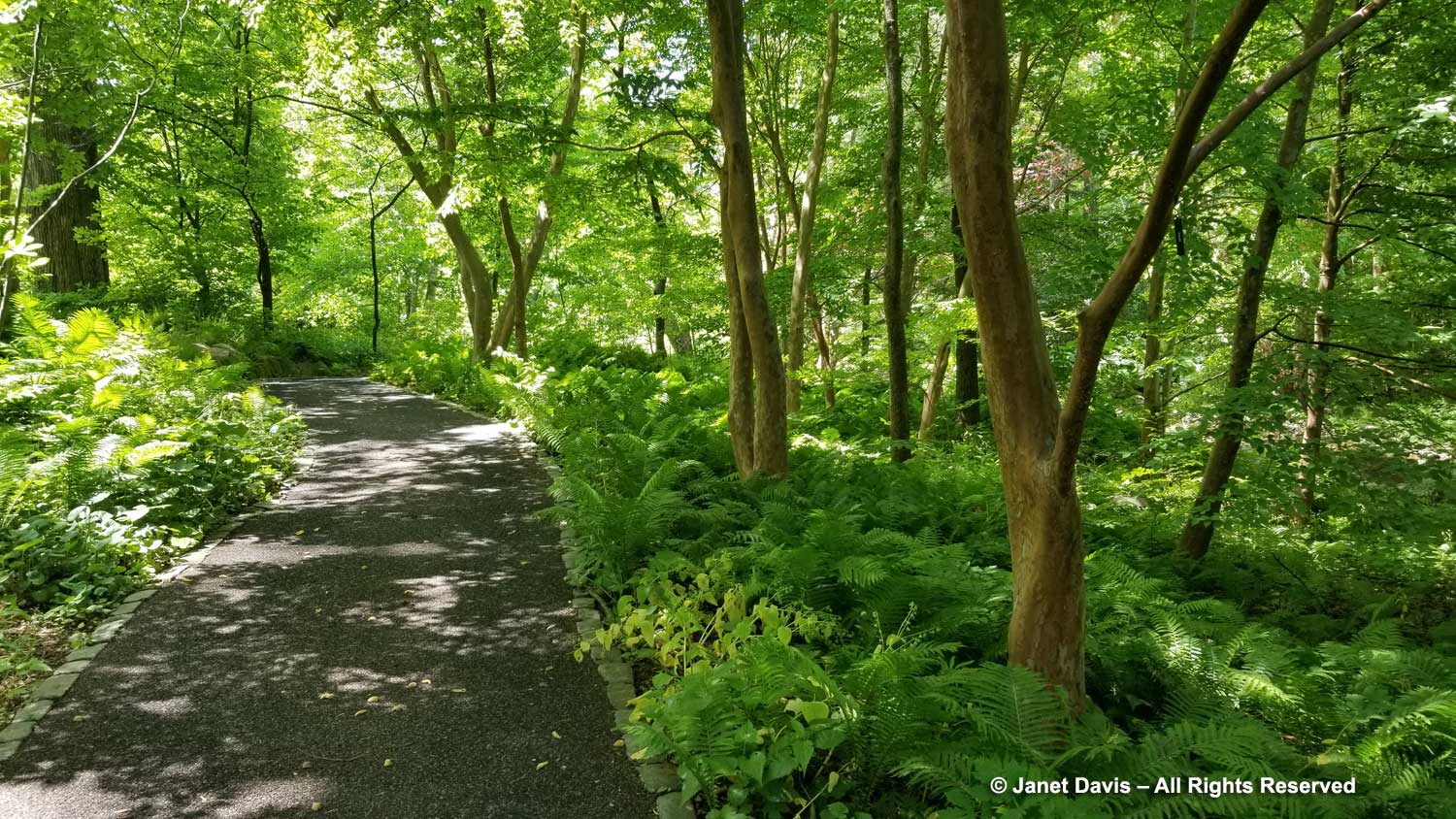
…. right to the little waterfall, below, leading into the Pond Garden.
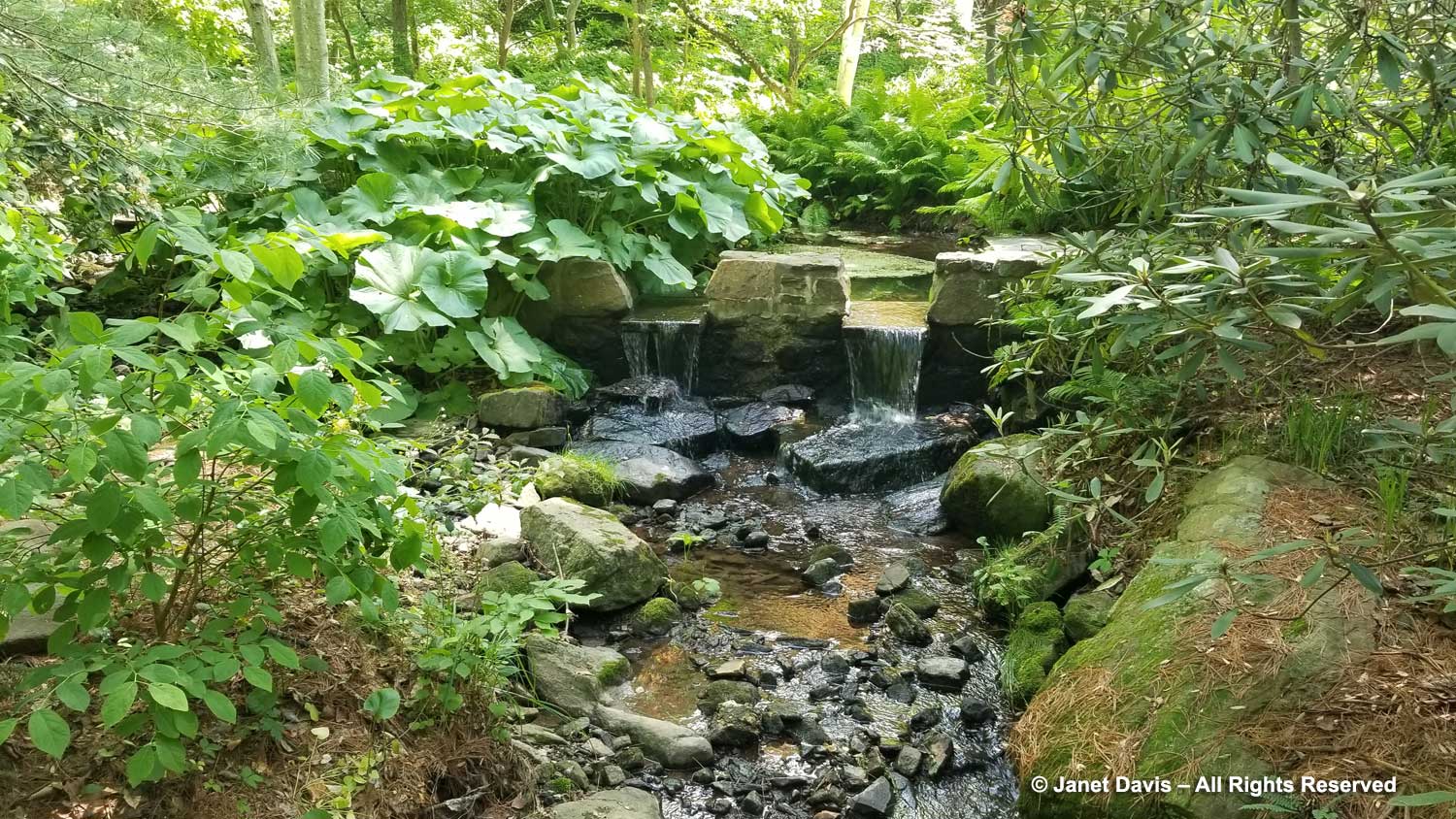
I’ll finish this first part of my blog with a small musical video I made of some of the water features I encountered on this lovely spring stroll through my favourite garden.


